
Title: A history of art in Chaldæa & Assyria, Vol. 2 (of 2)
Author: Georges Perrot
Charles Chipiez
Translator: Sir Walter Armstrong
Release date: October 9, 2023 [eBook #71842]
Language: English
Original publication: London: Chapman and Hall, Limited
Credits: Charlene Taylor, Karin Spence and the Online Distributed Proofreading Team at https://www.pgdp.net (This file was produced from images generously made available by The Internet Archive/American Libraries.)
FROM THE FRENCH
OF
GEORGES PERROT,
PROFESSOR IN THE FACULTY OF LETTERS, PARIS; MEMBER OF THE INSTITUTE,
AND
CHARLES CHIPIEZ.
ILLUSTRATED WITH FOUR HUNDRED AND FIFTY-TWO ENGRAVINGS IN THE TEXT
AND FIFTEEN STEEL AND COLOURED PLATES.
IN TWO VOLUMES.—-VOL. II.
TRANSLATED AND EDITED BY
WALTER ARMSTRONG, B.A., Oxon.,
AUTHOR OF “ALFRED STEVENS,” ETC.

London: CHAPMAN AND HALL, Limited.
New York: A. C. ARMSTRONG AND SON.
1884.
London:
R. Clay, Sons, and Taylor,
BREAD STREET HILL.
[v]
| CHAPTER I. | |
|---|---|
| CIVIL AND MILITARY ARCHITECTURE. | |
| PAGE | |
| § 1. General Character of the Mesopotamian Palace and History of the Excavations | 1–8 |
| § 2. The Palace of Sargon | 9–32 |
| § 3. Other Palaces of Mesopotamia | 32–53 |
| § 4. Towns and their Defences | 53–77 |
| CHAPTER II. | |
| SCULPTURE. | |
| § 1. The principal themes of Chaldæo-Assyrian Sculpture | 78–109 |
| § 2. Materials | 109–125 |
| § 3. The Principal Conventions of Chaldæo-Assyrian Sculpture | 125–142 |
| § 4. On the Representations of Animals | 142–173 |
| § 5. Chaldæan Sculpture | 173–202 |
| § 6. Assyrian Sculpture | 203–243 |
| § 7. Polychromy | 243–250 |
| § 8. Gems | 251–280 |
| § 9. The General Characteristics of Chaldæo-Assyrian Sculpture | 281–291 |
| CHAPTER III. | |
| PAINTING | 292–297[vi] |
| CHAPTER IV. | |
| THE INDUSTRIAL ARTS. | |
| § 1. Ceramics | 298–308 |
| § 2. Metallurgy | 308–313 |
| § 3. Furniture | 313–324 |
| § 4. Metal Dishes and Utensils | 324–343 |
| § 5. Arms | 343–349 |
| § 6. Instruments of the Toilet and Jewelry | 349–363 |
| § 7. Textiles | 363–372 |
| § 8. Commerce | 372–374 |
| CHAPTER V. | |
| COMPARISON BETWEEN EGYPT AND CHALDÆA | 375–400 |
| ADDITIONS AND CORRECTIONS | 401–404 |
| INDEX | 407–420 |
[vii]
| PLATES. | |||||
|---|---|---|---|---|---|
| I. | Royal statue, found by M. de Sarzec | To face page | 126 | ||
| II. | Two Chaldæan heads, found by M. de Sarzec | „ | 128 | ||
| III. | Lion, from Nimroud | „ | 130 | ||
| IV. | Winged bull, from Khorsabad | „ | 136 | ||
| V. | Assurbanipal in his chariot | „ | 138 | ||
| VI. | Bronze lion, from the palace of Sargon | „ | 154 | ||
| VII. | Fragment from the Balawat gates | „ | 212 | ||
| VIII. | Enamelled brick, from Nimroud | „ | 294 | ||
| IX. |  |
Enamelled brick, from Nimroud |  |
„ | 294 |
| Fragment of painting on stucco, from Nimroud | |||||
| X. | Decoration in enamelled brick, from the harem at Khorsabad | „ | 294 | ||
| FIG. | PAGE | |
|---|---|---|
| 1. | Map of Nineveh and its neighbourhood | 6 |
| 2. | The mound and village of Khorsabad before the commencement of the excavations | 9 |
| 3. | Plan of Sargon’s palace in its present state | 12 |
| 4. | Longitudinal section through the palace of Sargon | 13 |
| 5. | South-eastern gateway of Sargon’s palace at Khorsabad | 17 |
| 6. | Plan of the harem in Sargon’s palace | 21 |
| 7. | Harem court in the palace of Sargon at Khorsabad | 25 |
| 8. | A hanging garden | 30 |
| 9. | Plan of a palace at Warka | 33 |
| 10. | Plan of chambers at Mugheir | 34 |
| 11. | Plan of chambers at Abou-Sharein | 34 |
| 12. | Plan of chambers at Abou-Sharein | 34 |
| 13. | General view of Nimroud | 38 |
| 14. | Plan of the north-western palace at Nimroud | 39 |
| 15. | Assurnazirpal offering a libation to the gods after his victory over a wild bull | 41[viii] |
| 16. | Plan of the south-western palace at Nimroud | 43 |
| 17. | Upper chambers excavated at Nimroud | 44 |
| 18. | Map of the site of Nineveh | 45 |
| 19. | Plan of the mound of Kouyundjik | 46 |
| 20. | Part plan of the palace of Sennacherib | 47 |
| 21. | Sennacherib at the head of his army | 49 |
| 22. | Town besieged by Sennacherib | 54 |
| 23. | Siege of a city | 60 |
| 24. | Plan of one of the ordinary gates at Khorsabad | 66 |
| 25. | Restoration in perspective of one of the ordinary gates of Khorsabad | 67 |
| 26. | State gateway at Khorsabad | 68 |
| 27. | Longitudinal section through the archway of one of the city gates, Khorsabad | 69 |
| 28. | Fortified wall; from the Balawat gates | 73 |
| 29. | Siege of a fort | 74 |
| 30. | An attack by escalade | 75 |
| 31. | Chariot for three combatants; from the palace of Assurbanipal | 76 |
| 32. | The demon of the south-west wind | 81 |
| 33. | Head of a winged bull of Assurbanipal | 83 |
| 34. | Cone of chalcedony | 85 |
| 35. | Izdubar and Lion | 86 |
| 36. | Winged genius | 87 |
| 37. | Carrying the gods; from the palace of Sennacherib | 90 |
| 38. | Istar and the sacrificing priest | 90 |
| 39. | Istar between two personages | 90 |
| 40. | Lapis-lazuli cylinder | 91 |
| 41. 42. | Fragments of an ivory statuette | 92 |
| 43. | Merodach- or Marduk-idin-akhi | 95 |
| 44. | Captives on the march; from the palace of Sennacherib | 97 |
| 45. | Sargon before the sacred tree | 99 |
| 46. | Assyrian standard | 102 |
| 47. | Sennacherib before Lachish | 105 |
| 48. | Procession of captives | 107 |
| 49. | One face of the obelisk of Shalmaneser II. | 111 |
| 50. | Statuette of a priest | 114 |
| 51. | Dagon | 114 |
| 52. | Head of a lioness | 115 |
| 53. | Canephoros | 117 |
| 54. | Man driving goats and sheep; from the Balawat gates | 118 |
| 55. | Lion carved in wood | 119 |
| 56. | Ivory seal | 119 |
| 57. | Ivory tablet in the British Museum | 120 |
| 58. | Ivory fragment in the British Museum | 121 |
| 59. | Ivory tablet in the British Museum | 122 |
| 60. | Statue of Assurnazirpal | 123 |
| 61. | Statue of Shalmaneser II. | 127 |
| 62. | Pair of warriors | 129[ix] |
| 63. | Prisoners; from the palace of Sennacherib | 130 |
| 64. | Vassal bringing monkeys | 133 |
| 65. | Head of a eunuch | 136 |
| 66. | Assyrian soldier | 137 |
| 67. | Fragment of a Chaldæan bas-relief | 141 |
| 68. | Head of a cow | 143 |
| 69. | Terra-cotta tablet | 144 |
| 70. | Cylinder of black marble | 145 |
| 71. | Terra-cotta dog | 146 |
| 72. | The hounds of Assurbanipal | 147 |
| 73. | Chariot horses | 150 |
| 74. | Wild ass; from the hunt of Assurbanipal | 151 |
| 75. | Embroidery on the king’s robe | 153 |
| 76. | Fight between a man and an ostrich | 153 |
| 77. | Lion and lioness in a park | 155 |
| 78. | Lion coming out of his cage | 156 |
| 79. | Wounded lion | 157 |
| 80. | Wounded lioness | 161 |
| 81. | Niche decorated with two lions | 163 |
| 82. | Sword and scabbard | 164 |
| 83. | Combat between a lion and a unicorn | 165 |
| 84. | Lion’s head, in enamelled earthenware | 165 |
| 85. | Recumbent goat ditto | 166 |
| 86. | Dog, in terra-cotta | 167 |
| 87. | Fantastic animal | 168 |
| 88. | Man-lion | 169 |
| 89. | Winged horse | 171 |
| 90. | Griffins seizing a goat | 171 |
| 91. | Human-headed bird | 172 |
| 92. | Inscription engraved on one of the seated Chaldæan statues | 175 |
| 93. | Fragment of a stele; from Tello | 177 |
| 94. | Fragment of a stele; from Tello | 179 |
| 95. | Fragment of a stele; from Tello | 181 |
| 96. | Statue; from Tello | 182 |
| 97. | The hands of a statue; from Tello | 183 |
| 98. | The large statue from Tello | 185 |
| 99. | Female statuette | 187 |
| 100. | Statuette; from Tello | 188 |
| 101. | Fragment of a relief; from Tello | 189 |
| 102. | Fragment of a relief; from Tello | 191 |
| 103. | Head; from Tello | 191 |
| 104. | Stone pedestal; from Tello | 192 |
| 105. | Chaldæan statuette | 193 |
| 106. | Statuette of a priest | 195 |
| 107. | Statuette of a woman | 195 |
| 108. | Terra-cotta statuette | 196 |
| 109. | Head; from Tello | 197[x] |
| 110. | The Caillou Michaux | 199 |
| 111. | The Caillou Michaux, obverse | 200 |
| 112. | The Caillou Michaux, reverse | 201 |
| 113. | Assurnazirpal offering a libation | 205 |
| 114. | Tree on a river-bank | 207 |
| 115. | Detail from the royal robe of Assurnazirpal | 209 |
| 116. | Stele of Samas-vul II. | 211 |
| 117. | Two fragments from the Balawat gates | 215 |
| 118. | Bas-relief; from Khorsabad | 221 |
| 119. | Marsh vegetation | 223 |
| 120. | The great bas-relief at Bavian | 227 |
| 121. | Fountain | 230 |
| 122. | Assyrian bas-relief in the Nahr-el-Kelb | 231 |
| 123. | The bas-reliefs of Malthaï | 233 |
| 124. | Chaldæan cylinder | 237 |
| 125. | Assyrian cylinder | 237 |
| 126. | Wild goats | 239 |
| 127. | The feast of Assurbanipal | 241 |
| 128. | Terra-cotta statuette | 242 |
| 129. | River pebble which has formed part of a necklace | 252 |
| 130. | River pebble engraved | 252 |
| 131. | Concave-faced cylinder | 254 |
| 132. | Cylinder with modern mount | 254 |
| 133. | Tablet with impression from a cylinder | 256 |
| 134. | Cylinder with ancient bronze mount | 257 |
| 135. | Cylinder and attachment in one | 257 |
| 136. | Chaldæan cylinder | 257 |
| 137. | Impression from the same cylinder | 257 |
| 138. | Engraved shell | 260 |
| 139. | Chalcedony cylinder | 261 |
| 140. | Cylinder of black jasper | 261 |
| 141. | Assyrian cylinder | 262 |
| 142. | Chaldæan cylinder; marble or porphyry | 264 |
| 143. | Chaldæan cylinder; green serpentine | 266 |
| 144. | Chaldæan cylinder; basalt | 267 |
| 145. | Chaldæan cylinder; basalt | 267 |
| 146. | Chaldæan cylinder | 268 |
| 147. | Chaldæan cylinder; basalt | 269 |
| 148. | Chaldæan cylinder; black marble | 270 |
| 149. | Chaldæan cylinder of veined agate | 271 |
| 150. | Archaic Assyrian cylinder | 272 |
| 151. | Assyrian cylinder; serpentine | 273 |
| 152. | Assyrian cylinder; serpentine | 273 |
| 153. | Assyrian cylinder | 273 |
| 154. | Chaldæan cylinder dating from the second monarchy; black jasper | 275 |
| 155. | Impression of a cylinder on a contract | 275 |
| 156. | Cylinder with Aramaic characters | 276[xi] |
| 157. | Cone | 277 |
| 158. | Cone | 277 |
| 159. | Amethyst cone | 279 |
| 160. | Agate cone | 279 |
| 161. | Assurbanipal attacked by lions | 283 |
| 162. | Figure of a goddess | 290 |
| 163–165. | Chaldæan vases of the first period | 299 |
| 166–168. | Chaldæan vases of the second period | 299 |
| 169. | Chaldæan vase | 300 |
| 170–173. | Assyrian vases | 301 |
| 174–176. | Goblets | 301 |
| 177. | Ewer | 301 |
| 178–180. | Amphoræ | 302 |
| 181. | Alabastron | 302 |
| 182. | Fragment of a vase | 302 |
| 183. | Fragment of a vase | 303 |
| 184, 185. | Fragments of vases | 303 |
| 186. | Goblet | 304 |
| 187. | Fragment of a vase | 304 |
| 188, 189. | Fragments of vases | 305 |
| 190. | Glass vase or bottle | 307 |
| 191. | Glass tube | 307 |
| 192. | Iron mattock | 310 |
| 193. | Fragment of a throne | 315 |
| 194. | Fragment of a throne | 316 |
| 195. | Bronze foot of a piece of furniture | 316 |
| 196. | Capital and upper part of a small column | 317 |
| 197, 198. | Fragments of bronze furniture | 317 |
| 199. | Footstool; from a bas-relief | 318 |
| 200. | Stool | 318 |
| 201. | Ivory panel | 321 |
| 202. | Dagger-hilt; ivory | 322 |
| 203. | Bronze tripod | 324 |
| 204, 205. | Metal vases | 325 |
| 206. | Metal bucket | 325 |
| 207. | Applied piece | 326 |
| 208. | Bronze platter | 327 |
| 209. | Bronze platter | 330 |
| 210–214. | Columns or standards figured upon a bronze cup | 331 |
| 215. | Bronze platter | 332 |
| 216. | Part of a bronze cup or platter | 333 |
| 217. | Bronze cup | 334 |
| 218. | Bronze cup | 342 |
| 219. | Border of a cup | 343 |
| 220, 221. | Chariot poles | 344 |
| 222, 223. | Sword scabbards | 345 |
| 224. | Bronze cube damascened with gold | 346[xii] |
| 225. | Votive shield | 347 |
| 226. | Knife-handle | 348 |
| 227. | Comb | 350 |
| 228. | Comb | 351 |
| 229. | Comb | 352 |
| 230, 231. | Bronze fork and spoon | 353 |
| 232, 233. | Bracelets | 354 |
| 234. | Ear-drop | 354 |
| 235–237. | Necklace and ear-drops | 355 |
| 238. | Necklace | 356 |
| 239. | Royal necklace | 356 |
| 240. | Bracelet | 357 |
| 241. | Bracelets | 358 |
| 242. | Ear-drop | 358 |
| 243, 244. | Ear-drops | 358 |
| 245. | Necklace | 359 |
| 246, 247. | Moulds for trinkets | 361 |
| 248, 249. | Gold buttons | 359 |
| 250. | Part of the harness of a chariot-horse | 361 |
| 251, 252. | Ear-pendents | 362 |
| 253. | Embroidery on the upper part of the king’s mantle | 365 |
| 254. | Embroidery upon a royal mantle | 367 |
| 255. | Embroidered pectoral | 369 |
| 256. | Detail of embroidery | 370 |
| 257. | Detail of embroidery | 370 |
| 258. | Detail of embroidery | 371 |
| 259. | Detail of embroidery | 372 |
| 260. | Egyptian mirror | 387 |
| 261. | Egyptian mirror | 391 |
| TAIL-PIECES, &c. | |
|---|---|
| Fore-quarters of a lion, glazed earthenware (Louvre) | 77 |
| Standard, from a relief | 291 |
| Flower, from a relief | 297 |
| Head of a ram, ivory (Louvre) | 374 |
| The sacred tree, from a relief | 400 |
| Ornament from a royal tiara | 404 |
[1]
A HISTORY OF ART
IN
CHALDÆA AND ASSYRIA
As every student of Assyro-Chaldæan art has remarked, the best preserved of its monuments are the palaces. They alone are represented by ruins in such a condition that restorations may be successfully attempted, not only so far as their general arrangements are concerned but even in minor details. The preponderant part played by the ruins of palaces in the history of Assyrian architecture is thus acknowledged by all, but it has sometimes been explained by reasons that will not bear examination. “Less religious or more servile than the Egyptians and the Greeks, they made their temples insignificant in comparison with the dwellings of their kings, to which indeed the temple is most commonly a sort of appendage. In the palace their art culminates—-there every effort is made, every ornament lavished. If the architecture of the Assyrian palaces be fully considered, very little need be said on the subject of their other buildings.”[1]
[2]
History contradicts any such theory. The asserted inequality did not exist. The piety of Chaldæans and Assyrians was no less lively and profound than that of the Egyptians. A Seti or a Rameses, the cherished son and visible image of Amen, the prince who became a god after his life was done, was no less powerful and venerable at Memphis and Thebes than were Sargon and Nebuchadnezzar at Nineveh and Babylon.
The differences to which we have pointed are to be explained by other and more simple reasons. In Egypt the temple has survived the palace because it was a dwelling built for an immortal occupant, and therefore the most durable materials, stone and granite, were used; while the palace, being no more than the resting-place of a day, a shelter raised among waving palms and flowing streams for the passenger through this life to the next, had to be content with brick and timber. In Mesopotamia, on the other hand, the same materials were used for the dwellings both of gods and kings; and the same system of construction, a system dictated by the climate, was applied to both classes of buildings. It is not true that one group was neglected for the other, that Mesopotamian civilization took less trouble for Marduk, for Istar and Assur, than for its conquering princes; it is inaccurate to say that her palace architecture was all that Assyria had to show. The tomb was larger and more important in Egypt than in Mesopotamia, but in the latter country the temple was the object of as much care, both in construction and decoration, as the palace. Its arrangement was more interesting and far more original, and its outward decoration no less rich. In Babylon, at least, the inscriptions in which the kings recount their exploits for the admiration of posterity, speak oftener and with more pride of temples than of palaces. The remains of the latter are more complete simply because their chief development was over the surface of the ground, while that of the temples was toward the sky. With materials such as those of which both the one and the other were built it was inevitable that tall buildings should come to ruin before low ones. Moreover, their most interesting parts were on the exterior and more especially about their summits. Ramps and sanctuaries with their surface decorations must have begun to disappear as soon as daily care ceased to be lavished upon them. The solid interior alone would[3] be preserved, and, before many years were over, the degradation of its substance would make it a shapeless heap of clay. The palace, of course, burnt-in the first place and then abandoned to the slow action of time, can have met the forces of destruction with no better effect than buildings of marble and granite did elsewhere; but it inclosed great empty spaces, wide quadrangles, long galleries, and spacious chambers. In their fall ceilings and the heads of walls filled up these voids and buried their inclosing walls to a considerable height in a deep bed of protecting rubbish. This had only to be taken away to lay bare the whole plan of the building and much of its ornamentation. We can thus become much more intimately acquainted with the palace than with the temple, but we have no right thence to conclude that the former was the favourite work of the Chaldæan architects, or that it contained the last word of their talent and taste.
In any case it was the Assyrian palace that, about forty years ago, began to reveal to us an early civilization to which modern research is now awarding its proper place in the history of the ancient world. About the commencement of the present century criticism had succeeded in fixing approximate dates for the few kings of Assyria and Chaldæa mentioned in the Bible and by classic authors. It was suspected that the tales of Ctesias included many a fable, and painful efforts were made to disentangle what was true from what was false, but the language, the literature, and the arts of those peoples were as yet entirely unknown. The sites of Babylon and Nineveh had been ascertained with some degree of certainty; it was known that ruins existed in the plains of Mesopotamia which had been used by the natives as open quarries for century after century, and that the towns and villages that now stud the country were built from the materials thus obtained; but nothing had been learnt as to the form and arrangement of the buildings hidden under those heaps of débris. Travellers spoke of seeing statues and bas-reliefs among the ruins, but they could not bring them away, and they made no drawings which could be depended on for accuracy. European museums could boast of nothing beyond small objects, fragments of pottery, stones and terra-cotta slabs covered with strange symbols and undecipherable inscriptions. Most of these were cones and cylinders which proved that the Mesopotamians understood how to cut and engrave the hardest stones. Such[4] objects excited a kind of hopeless curiosity. They were sometimes pointed out to the attention of scholars, as by Millin in his paper on the Caillou Michaux, a sort of Babylonian landmark that has belonged to the Cabinet des Antiques[2] in Paris ever since 1801.
But no attempt was made to define the style of the school of art by which such things were produced, and not the faintest suspicion was felt of the influence exercised by Chaldæan productions over distant races whose genius for the plastic arts was universally acknowledged. A single writer, the historian Niebuhr, seems by a kind of intuition to have divined the discoveries at which a new generation was to assist, and to have anticipated their consequences. As early as the year 1829 he wrote, “When at Rome I heard from a Chaldæan priest who lives near the ruins of Nineveh, that colossi are there found buried under huge masses of building rubbish. When he was a child one of these statues was discovered by a mere accident, but the Turks at once broke it up. Nineveh is destined to be a Pompeii for Western Asia. It will be an inexhaustible mine for those that come after us, perhaps even for our own children. The Assyrian language will also have its Champollions. You who can do so should prepare the way by the study of Zend for the decipherment of the cuneiform inscriptions.”[3]
Here Niebuhr showed himself a true prophet, but he was denied the joy of seeing his prophecy fulfilled. He died in 1831, and it was not till the 20th March, 1843, that the French consul at Mossoul sent his first batch of labourers to Khorsabad. The date better deserves to be remembered than that of many a battle or royal accession. His first reports to the Academic des Inscriptions were scientific events.[4] Funds were placed at his disposal, and a clever draughtsman, M. Flandin,[5] was sent out to help in measuring plans and copying bas-reliefs. In June, 1845, the first Assyrian sculptures of any size that had ever left their native place for Europe were set afloat upon the Tigris, and in December, 1846, they arrived in France. In 1847 de Longperier was the first to read upon the Khorsabad remains that name of Sargon which is mentioned by none of the classic authors and only once by the Bible.[5] This discovery was of the greatest importance; it at once gave a date to remains whose age had been previously a mere matter of guess. The most divergent hypotheses had been started—some believed the sculptures to have belonged to the remote times of Ninus and Semiramis, others thought them no more ancient than the Sassanids;[6] it was a great point gained to make sure that their true date was the eighth century before our era.
These first discoveries excited so much attention that they were sure to attract many to the task begun with such unhoped-for success by Botta. England especially, by whom all that has the slightest bearing on Jewish history is so passionately followed up, was sure to take her part. In November, 1845, Mr. Layard began to excavate at Nimroud; he carried on his work there and at Kouyundjik, until the year 1847. The adjoining map (Fig. 1) will-give an idea of the relative position of the sites we shall so often have to mention. The beauty and variety of the monuments sent home by Mr. Layard, decided the authorities of the British Museum to intrust him with a new mission, and from 1849 to[6] 1851 he was again busy at Nimroud; he cleared some more rooms in the great palace on the Kouyundjik mound, and he undertook some explorations on the sites of several Chaldæan cities. The objects he collected form the true foundation of the Assyrian collection in the British Museum, which is, at present, by far the richest in existence.

Fig. 1.—Map of Nineveh and its neighbourhood; from Oppert.
[7]
In 1851, France decided to resume the excavations at Khorsabad, which had been abandoned on the departure of Botta. M. Place, his successor at Mossoul, continued and completed the excavations, which had been little more than begun. His labours lasted till 1855, but unhappily most of the sculptures recovered by him are now at the bottom of the Tigris. The great work in which he was helped by the skill of Felix Thomas is the most precious result of his enterprise.
The era of heroic explorations seems to have closed with Layard and Place, but during the last thirty years there has always been some English agent sounding the flanks of the Assyrian mounds. Under the surveillance of Sir Henry, then Colonel, Rawlinson, the East India Company’s resident at Bagdad, many discoveries were made by Mr. Hormuzd Rassam, Sir Henry Layard’s collaborator, and by the late William Kennett Loftus. Finally, we must mention George Smith, who died at Aleppo in 1876, on the eve of his third journey into Assyria. He had visited that country for the first time in 1873, at the expense of the Daily Telegraph, which had placed a sum of one thousand guineas at his disposal, and had afterwards presented all the objects he had sent home to the British Museum.
We have enumerated all these dates with some dryness, and without any attempt to write a taking narrative, because we wished to impress upon our readers how recent these discoveries are, how they have followed closely one upon another, and well within the lifetime of a single man. The difficulty of our task will thus be evident. We are making a first attempt to bring the results of all these explorations into a connected form, and to present them systematically to the reader. There is one thing that stands out very strongly in the whole inquiry. The monuments, by which the art of a great vanished civilization is represented in our museums, come mainly from the ruins of royal dwellings. The chief idea suggested by the words Khorsabad, Nimroud and Kouyundjik, is the excavation of the magnificent palaces raised by the Assyrian monarchs within a period of something more than three centuries. Following a custom still in vogue with the native rulers of Egypt and India, of Persia and Turkey, each prince signalized his accession by the commencement of a palace which should be entirely his own.[7] To establish[8] himself in the dwelling which had seen the death of his predecessor would have seemed an invitation to misfortune, and his pride would have been wounded at seeing the walls of his house given up to celebrating the exploits of any one but himself. Finally, each king hoped to surpass all those who had gone before in the extent and luxury of the edifice to which his name would be thenceforward attached. Sometimes he took dressed masonry from abandoned seraglios; sometimes he raised at his doors winged bulls which had already done duty elsewhere, changing, of course, their inscriptions; sometimes he lined his chambers with alabaster slabs bearing reliefs in which the conquests of his fathers were narrated; in that case he turned the sculptured side to the wall, and caused his own prowess to be celebrated upon the new surface thus cheaply won.[8] Whether old materials were used or new, the palace was always personal to the king who built it. Thus it is that the remains of some ten palaces have been found in the mounds already attacked, although that of Khorsabad is the only one that has been completely explored.
We cannot attempt to describe the ruins of so many palaces. No one of them is an exact copy of any other; their dimensions, and many of their arrangements have much variety, but nevertheless, we may say that they all follow the same general plan. The only way to avoid continual repetition is to take, as a type of all, the example that has been most completely studied. Our choice of such a type is soon made. The palace of Sargon, at Khorsabad, may be neither the largest of the Assyrian palaces nor that in which the best sculptors were employed upon the decorations, but it is certainly that in which the excavations have been most systematically carried on. Except at a few points the explorers have only held their hands when the flat summit of the mound was reached. The whole has been cleared except the centres of some of the quadrangles and a few unimportant outbuildings. Nowhere else can the general arrangement be so clearly followed, or the guiding spirit of an Assyrian plan so easily grasped.
PLATE V
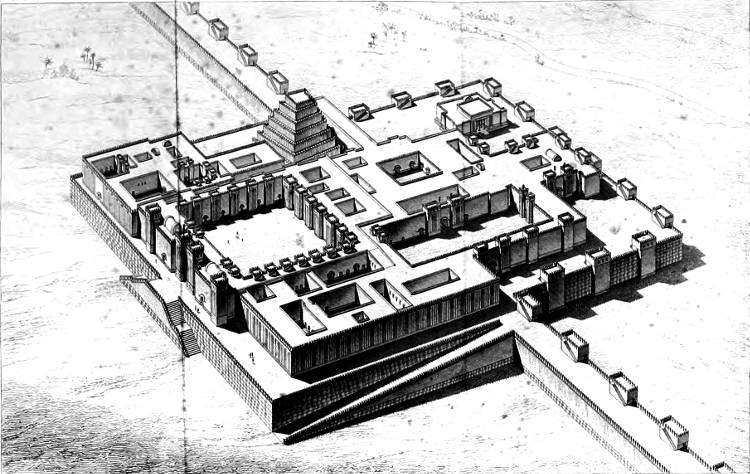
PALACE OF SARGON, KHORSABAD
BIRD’S-EYE VIEW BY CH. CHIPIEZ FROM
The restoration by F Thomas
[9]

Fig. 2.—The mound and village of Khorsabad before the commencement of the excavations; from Botta.
The mound in which the remains of Sargon’s palace had lain concealed for so many centuries bore on its summit, before the excavations began, a small village called Khorsabad (Fig. 2). It rises about nine miles north-north-east of Mossoul on the eastern bank of the Khausser, an affluent of the Tigris, and in the neighbourhood of the mountains which begin to draw in towards the left bank of that river not far above the site of Nineveh. Botta was induced to begin his excavations at this point on account of the numerous fragments of cuneiform inscriptions which were found there by the peasants of the village. He sent a number of workmen to Khorsabad under the superintendence of his confidential servant, Charles Michel, who, twenty years afterwards, was my dragoman in Asia Minor.[9] How often during our long marches through forests and across barren steppes he entertained me with the story of how he discovered Nineveh, as, like his master Botta, he always called it, my readers may guess. “We arrived at Khorsabad towards evening, and[10] after exploring the village I was rather puzzled as to what I should find for my men to do—we had already been so often deceived. At Kouyundjik we had raised no end of dust and found hardly anything. While turning over this question in my mind I had my supper before the door of one of the houses, and after the meal was over, I was idly scratching the ground by the side of the mat on which I was lying, with my knife. Suddenly I felt the blade strike against something very hard; I withdrew it, and thrusting my finger into the hole, I felt a stone. Working away with the knife I soon enlarged the hole, and then saw that the stone was worked and chiselled with great care. Next morning I brought my workmen to the spot, and watched them closely to see that they advanced with sufficient precaution. A few strokes of the pick-axe brought to light the head of one of the bulls. Off I went at full gallop to Mossoul, and came back next day with M. Botta.”
Whether this be a truthful narrative or not I cannot say. Michel was born in the Levant, of French parents, and I always forgot to ask whether, by any chance, his father was a Gascon. In any case, it was to Botta’s honour that he understood the value and significance of a discovery due, in the first place, to the idle scratchings of a subaltern, and that he pushed on his explorations in the face of Turkish ill-will and pecuniary difficulties, and that before he had received any encouragement from Paris.
Botta soon recognized the true character of the building, even although he clung to the erroneous notion that he had disinterred the historical capital of Assyria, the Nineveh of classic writers and Hebrew prophets.[10] The excavations of his successor and the decipherment of the cuneiform texts have clearly proved his mistake. The monument found and partly excavated by Botta, was never included in Nineveh, vast though that city may have been. It was part of what may be called a caprice of Sargon’s put into execution between the years 722 and 705 B.C. That prince was not content with founding a new dynasty; he determined to pass the intervals between his campaigns in a palace and city which should be entirely his own creation, and should bear his[11] name. That town and palace, with its situation a few miles from the great political and commercial capital, was the Versailles of an Assyrian grand monarque.
The connection between town and palace was very close. The fortified walls of the former inclosed a large rectangular parallelogram (Vol. I. Fig. 144), while the lofty platform on which the structures composing the king’s dwelling were reared, was placed, as it were, astride of the wall on its north-western face. Its pavement was on a level with the summit of the wall.[11] Thus attached to the enceinte the palace esplanade shared the protection of its parapet and flanking towers, while it stood boldly out, like an enormous bastion, from the stretch of wall of which it formed a part. From three of its faces it commanded a view of the plain, the river, and the neighbouring mountains, so that the requirements of health and pleasure were remembered at the same time as those of safety. As for placing the king’s dwelling, as it might have been placed by a modern architect, at some distance from the town, and upon the summit of some gentle height, such a notion was quite outside Assyrian ideas. A country site would have been too easily accessible to the numerous enemies of the Assyrian kings—those eastern Attilas, who could only feel themselves safe when sheltered by the impenetrable walls of dwellings perched upon an artificial hill, from which the whole surrounding country could be watched.

Fig. 3.—Plan of Sargon’s palace in its present state; from Place.
We must refer those who wish to study the arrangements of Sargon’s palace in detail to the plans and letterpress of Place. Botta discovered fourteen apartments; Place cleared one hundred and eighty-six. A few more were suggested by him on his restored plan at points where symmetry seemed to demand their existence. His plan, therefore, includes in all, two hundred and nine apartments of various sizes.[12] The adjoining plan, which shows the actual state of the ruins, is sufficient to show the general arrangement (Fig. 3).[13] The longitudinal section (Fig. 4) is taken through the central axis of the building, the position of the staged-tower showing that it is the western half of the palace that has been[12] chosen for reproduction. A good idea of the general physiognomy of the whole may be obtained from our Plate V. This is not a mere reduction from Thomas’s restoration;[14] several details have been sensibly modified. Thus, on the principal façade, barrel vaults have been substituted for domes as being on the whole more probable; battlements have been placed on the parapet of the double ramp, and the perspective, which is very imperfect in[13] Thomas’s plate, has been corrected. Our view is supposed to be taken at some sixteen hundred feet above the ground and at a considerable distance south-east of the platform.

Fig. 4.—Longitudinal section through the palace of Sargon; compiled from Thomas.
We shall here confine ourselves to showing how the Assyrians understood the plan and general arrangement of a royal palace. The buildings of which it was composed were grouped upon a platform shaped like a T.[15] Each of the two parts of this platform was a rectangle. The larger of the two—that within the town walls—had a superficial measurement of about 68,500 square yards, the smaller one of about 40,000 square yards; so that the palace as[14] a whole covered between twenty-four and twenty-five acres of ground, and the brick employed in building it may be put at about 1,750,642 cubic yards. The imagination is oppressed by such figures, especially when we remember that all this mass of material was carried to its place in baskets on men’s shoulders. This we know from those reliefs in which the construction of a palace is figured.[16]
At the first glance the labyrinth of chambers, corridors and courts presented by the above plan seems to offer a hopeless task to one anxious to grasp the principle of its arrangements and to assign its right use to each apartment. Place and Thomas tell us that such was their feeling when they first began to open up the palace, but as the work advanced they grew to understand its combinations. In certain parts of the building objects were found that cast a flood of light upon the original purposes of the rooms in which they occurred; the character and richness of the decoration varied greatly between one part of the palace and another. The arrangement of the side entrances, the rarity or multiplicity of passages, also had their significance. Thanks to the observations made on all these points during the progress of the work we can now understand the economy of the building with some completeness.
Its general arrangements were suggested to the architect by those conditions of life in the east which have changed so little during so many centuries. From this point of view it was soon perceived that the palace was divided into three distinct groups of apartments, groups corresponding exactly to the three great divisions into which every palatial residence of modern India, Persia, or Turkey may be divided. There is the Seraglio, or palace properly speaking, the rooms inhabited by the men, and the sélamlik, in which visitors are received. Then comes the Harem containing the private apartments of the prince with those of his wives and children, who are guarded by eunuchs and waited on by a crowd of female slaves and domestics. Finally there is the Khan, a collection of service chambers that we should call offices. The analogy is so absolute that in our ignorance of the Assyrian names for the three divisions of the palace, we are tempted to make use of those employed throughout the Levant, to designate[15] the different parts of such houses, as, thanks to the wealth of their masters, are provided with all their organs.
It is possible that the palace had some direct outlet to the open country, so that its inhabitants could escape, unknown to the population of the city, in time of tumult, or could make a nocturnal sortie upon an enemy encamped beneath the mound. If there were any such arrangement it must have consisted of staircases contrived in the mound itself and closed, perhaps, at their inferior extremities with heavy bronze doors. No traces of such passages have been found. But even on the side towards the city, the side on which lay the natural approach to the palace, there is no sign of any ramp or staircase by which the forty-six feet of difference between the levels of the platform and the soil upon which the city was built, could be overcome. The palace had two great monumental façades, each pierced with three large openings flanked by winged bulls. One of these façades (that in front of the hall lettered I on the plan) formed one side of a spacious rectangular court (H) and faced towards the north-east. Some of the buildings surrounding this court have entirely disappeared (see plan), but it is certain that it communicated with the platform of the city walls and that of the palace itself by one opening or more. On the north-eastern side Thomas has placed a wide and easy inclined-plane by which horses and other beasts of burden could mount to the platform, so that the king’s chariot could deposit him at the very door of his apartments, and the heavily laden mules and bullocks could deliver their loads in the store rooms which occupied the whole eastern angle of the mound.[17]
The other façade occupies the middle of the south-eastern face and is turned towards the town. It forms a majestic propylæum (Fig. 5) through which the largest of the courts is reached (A on the plan). In the more stately of the city gates foot prints may be traced, while in those that are less ornamental there are marks of wheels, suggesting that some entrances were reserved for pedestrians and others for carriages. It is likely enough that a similar arrangement obtained in the palace, and that in front of this south-eastern gateway there was a flight of steps instead of a continuous ramp. We find such an arrangement at Persepolis[16] where both steps and balustrade, being cut in the rock, are still in good preservation; at Khorsabad, however, there is now no vestige of such a staircase. If the steps have not been carried away they must lie entombed at the very bottom of the débris. We cannot say then that our restoration is, in this particular, beyond contention, but it is both probable in itself and entirely in the spirit of Assyrian architecture. These steps must have been the shortest way from the town to the palace. Horsemen, chariots, convoys of provisions had to make a détour and reach both the palace platform and that of the city walls by the south-eastern ramp.
Let us, too, make use of that approach, and, when we have gained the summit of the incline, turn to our left and pass through the first doorway. This must have been carefully fortified and guarded, for it led directly to the heart of the royal dwelling. It has now entirely disappeared with the northern corner of the mound on which it stood, but we need not hesitate to restore it, with a whole suite of buildings inclosing what must have been the chief court of the palace, so far, at least, as dignity was concerned (H on the plan).[18] West and south-west of this quadrangle there is a group of chambers excavated by Botta, to which we have given the name of the seraglio.
The seraglio contained ten courts and no less than sixty rooms or passages, intimately connected by the doors pierced through their walls. M. Place divides this great collection of chambers into two distinct parts, which, he thinks, had different duties to fulfil.
He calls the first part, that in which the courts marked I, J, K, L occur, the sculptural part.[19] It contained the sélamlik proper, consisting of the largest and most splendidly decorated halls. The narrow gallery separating court I from court J is 150 feet long and 19 feet wide. The other rooms opening out of court J are 106 feet long by 26½ feet wide. This court J is the real centre of the sélamlik; it is almost exactly square, with a superficial measurement of about 11,236 square feet. The eight doors that open upon it give access to every part of the palace. Four of these doorways are supported by bulls; they were all vaulted, and their arches decorated with bands of enamelled brick. As for the walls [19]themselves, their lower parts were cased with bas-reliefs coloured in sober tints. It is quite possible that this court was used for ceremonial purposes, as it could be easily protected from the sun by stretching between the summits of its walls, those rich stuffs the Babylonians knew so well how to weave. By covering the ground with carpets a saloon would be formed in which large numbers of people could be brought together, and one whose noble decorations would be in complete harmony with the stateliest pageants.

Fig. 5.—South eastern gateway of Sargon’s palace at Khorsabad; compiled from Thomas.
We cannot attempt to describe the seven great chambers that surrounded the courtyard. They were all decorated with sculptured slabs and enamelled brick; the doors that led from one to the other were flanked by colossi. At one point (looking towards the court marked L) the spectator could look down a vista of no less than eight of these arched and decorated doorways.
All these large rooms opening from a single court made up a combination in which everything was calculated for show. Their size alone made such rooms uninhabitable, and, as life has everywhere much the same requirements, M. Place found to the south of these state apartments a collection of smaller and less richly ornamented chambers in which the king could sleep, eat, and receive in private audience, and in which the officers of his chancellery and his personal attendants could be lodged within easy call. These are the rooms about the courts marked M, M´, N, O, P in our plan. They contain a few sculptures. The walls as a rule are coated with a coloured stucco, and sometimes decorated with fresco paintings. There are in all forty-nine of these rooms, covering, with their courts, about 6,000 square yards.
A short study of the plan is enough to make its presiding idea clear to us. “Each court, taken by itself and with the chambers radiating from it, forms a distinct group of apartments communicating with other groups only on one side and often only by a single door.”[20] Each of these groups must have afforded lodgings for the personnel of one department of the king’s household. Ctesias says that fifteen thousand officers and domestics found board and lodging in the palace of the King of Persia, and although he may be here guilty, as in so many other instances, of some exaggeration, we are willing to accept this[20] figure as being comparatively near the truth. Travellers who visited Constantinople in the days of the Solimans and Amurats, tell us that the walls of the old seraglio crave shelter to thousands of individuals who were fed from the kitchens of the sultan.
Before quitting this part of the palace we must point out several other buildings that belong to it both by position and character. In the first place, our readers will see that the northern angle is occupied by a group of chambers abutting on one corner of the seraglio but not communicating directly with it. This group opens on the state quadrangle and upon the external platform. “This building was decorated in the most splendid fashion. It contained eight vast halls and a few smaller chambers. It was like a second seraglio attached to the first and rivalling it in magnificence. What could have been its destination? We can hardly answer that question with certainty, but we may hazard the suggestion that, in the lifetime of Sargon, his son Sennacherib was already a great personage and must have had his own particular palace, or suite of apartments, in the house of the king, his father.”[21]
In the western angle of the platform stands the isolated and irretrievably ruinous building taken by Botta for a temple, and restored by Thomas as a throne room.[22] In either case it played its part in the official and public life of the king. We may say the same of the building near the centre of the south-western face of the mound, in which we have recognized a temple, although we have not scrupled to make use of the title given to it by M. Place. The chief sanctuary of the town that lay so far below its summit, it must have been the scene after each campaign, of the royal homage to Assur; the observatory of the astrologers, it must have had constant and intimate relations with the palace, where the bulletins issued from it must have been awaited with anxiety whenever the propitious moment for any great enterprise was sought.
At the southern angle of the seraglio and to the south-east of the Observatory, there is an almost completely separate building. Its isolation, the few points of access and the way they are arranged, the style of its decorations, their richness, and the disposition of its chambers, all combine to suggest that this part [23]of the palace was the royal harem. An inscription upon the threshold of one of the rooms confirms this conjecture; it prays for the blessing of fertility upon the royal alliances.[23] In our Fig. 6 we give a large scale plan on which its arrangements may be more easily followed. The total area of the harem was about 10,912 square yards.

Fig. 6.—Plan of the harem in Sargon’s palace; from Place.
In the walls inclosing all this space there were but two openings; one in the south-western façade, facing the city, the other leading into the great court of the palace. The first opening was a narrow passage leading to a small square chamber, which must have been a eunuch’s guard-room. The passage from it into the main court of the harem is at right angles with the first named passage, so that no glimpse of the inside could be caught from the external platform, or vice-versâ. The second entrance also leads to this same court (Q on plan) which thus acts as a kind of vestibule to the rest of the harem. This entrance leads from the southern angle of the large court (A on first plan) into a rectangular guard-room like that already mentioned. This guard-room has four doors. One leading through a small square vestibule into the large court, two sides of which were taken up with stables, workshops, and store-rooms; a second leading, as we have seen, into the harem court; a third into the first of several rectangular chambers that surround this court on the south-east; and the fourth into a kind of corridor that runs between the harem wall (U) and that of the great quadrangle, ending finally on the platform round the Observatory. By this last named entrance the king could reach his wives’ apartments by a route which, though longer, was far more private than that through the great quadrangle. The passage may, perhaps, have been covered by a wooden gallery, allowing it to be used in all states of the weather.
The harem had three courts, around which were distributed a number of small rooms and several large halls, destined, no doubt, for use on festive occasions. There were no bas-reliefs on the walls, which were decorated merely with a coat of white stucco crossed at the foot by a black dado thirty-two inches high. Unlike the floors of beaten earth in the seraglio, most of those in the harem were paved with bricks or stone slabs.
The heart of the harem was the court marked U in our plan.[24] Its decorations were rich in the extreme. On at least one side the foot of the wall was decorated with a sort of mosaic of enamelled brick surmounted by groups of semi-columns (Fig. 101 and Plate XV.). The doors were flanked by statues and by tall timber shafts cased in metal, carrying on their summits tufts of palm leaves in gilded bronze, giving a free rendering of the tall stem and graceful head of the date-tree. We have restored one part of this court in perspective (Fig. 7) introducing nothing conjectural but the upper parts of the wall.[24]
In this woodcut an arrangement may be noticed (it is still more clearly shown in the plan) which is encountered nowhere else. The area of the brick-paved court was intersected by two lines of stone slabs crossing each other in the centre and standing slightly above the general level of the pavement. These paths lead to three bedrooms in three corners of the quadrangle and to a small unimportant-looking room in the fourth corner. The three bedrooms were exactly similar to each other and unlike anything to be found in the rest of the palace. They were large oblong rooms; about a third of their area was occupied by a kind of daïs twenty-four inches above the rest of the floor, and approached by five brick steps. In the centre of the end wall there was a kind of alcove, the floor of which was again four feet three inches above that of the daïs. This alcove was decorated with grooves and surmounted by an arch of enamelled brick (Fig. 90, Vol. I.). Its dimensions were nine feet wide by three feet four inches deep, or just a convenient space for a bed, which might be reached by movable steps. Thomas has not hesitated to introduce one into his restoration. The bas-reliefs furnished him with a model.[25]

Fig. 7.—Harem court in the palace of Sargon at Khorsabad; compiled from Thomas.
Observe that the courts of the harem give access to three main groups of chambers, and that those groups have no direct communication with each other. Each of the three has its own separate entrance. Observe also that the three bed chambers we have mentioned have no entrances but those from the inner court; that they are all richly decorated, and that nothing in their [27]shape or arrangement admits of the idea that they were for the use of attendants or others in an inferior station—-oriental custom having at all times caused such persons to sleep on carpets, mats, or mattresses, spread on the paved floors at night and put away in cupboards during the day—and you will allow that the conclusion to which those who have studied the plan of Sargon’s harem have arrived, is, at least, a very probable one. Sargon had three queens, who inhabited the three suites of apartments; each had assigned to her use one of the state bedrooms we have described, but only occupied it when called upon to receive her royal spouse.[26] On other nights she slept in her own apartments among her eunuchs and female domestics. These apartments comprised a kind of large saloon open to the sky, but sheltered at one end by a semi-dome (T, X, and especially Z, where the interior is in a better state of preservation). Stretched upon the cushions with which the daïs at this end of the room was strewn, the sultana, if we may use such a term, like those of modern Turkey, could enjoy the performances of musicians, singers, and dancers, she could receive visits and kill her time in the dreamy fashion so dear to Orientals. We have already given (Vol. I. Fig. 55,) a restoration in perspective of the semi-dome which, according to Thomas, covered the further ends of these reception halls.[27]
Suppose this part of the palace restored to its original condition; it would be quite ready to receive the harem of any Persian or Turkish prince. The same precautions against escape or intrusion, the same careful isolation of rival claimants for the master’s favours, would still be taken. With its indolent and passionate inmates a jealousy that hesitates at no crime by which a rival can be removed, is common enough, and among: the numerous slaves a willing instrument for the execution of any vengeful project is easily found. The moral, like the physical conditions, have changed but little, and the oriental architect has still to adopt the precautions found necessary thirty centuries ago.
We find another example of this pre-existence of modern arrangements in the vast extent of the palace offices. These[28] consist of a series of chambers to the south-west of the court marked A, and of a whole quarter, larger than the harem, which lies in the south-eastern corner of the mound, and includes several wide quadrangles (B, C´, C, D, D´, F, G, &c.).[28] We could not describe this part of the plan in detail without giving it more space than we can spare. We must be content with telling our readers that by careful study, of their dispositions and of the objects found in them during the excavations, M. Place has succeeded in determining, sometimes with absolute certainty, sometimes with very great probability, the destination of nearly every group of chambers in this part of the palace. The south-west side of the great court was occupied by stores; the rooms were filled with jars, with enamelled bricks, with things made of iron and copper, with provisions and various utensils for the use of the palace, and with the plunder taken from conquered countries; it was, in tact, what would now be called the khazneh or treasury. The warehouses did not communicate with each other; they had but one door, that leading into the great court. But opening out of each there was a small inner room, which served perhaps as the residence of a store-keeper.
At the opposite side of the court lay what Place calls the active section of the offices (la partie active des dépendances), the rooms where all those domestic labours were carried on without which the luxurious life of the royal dwelling would have come to a standstill. Kitchens and bakehouses were easily recognized by the contents of the clay vases found in them; bronze rings let into the wall betrayed the stables—in the East of our own day, horses and camels are picketed to similar rings. Close to the stables a long gallery, in which a large number of chariots and sets of harness could be conveniently arranged, has been recognized as a coach-house. There are but few rooms in which some glimpse of their probable destination has not been caught. In two small chambers between courts A and B, the flooring stones are pierced with round holes leading to square sewers, which, in their turn, join a large brick-vaulted drain. The use of such a contrivance is obvious.[29]
We may fairly suppose that the rooms in which no special[29] indication of their purpose was found, were mostly servants’ lodgings. They are, as a rule, of very small size.
On the other hand, courts were ample and passages wide. Plenty of space was required for the circulation of the domestics who supplied the tables of the seraglio and harem, for exercising horses, and for washing chariots. If, after the explorations of Place, any doubts could remain as to the purpose of this quarter of the palace, they would be removed by the Assyrian texts. Upon the terra-cotta prism on which Sennacherib, after narrating his campaigns, describes the restoration of his palace, he says, “the kings, my predecessors, constructed the office court for baggage, for exercising horses, for the storing of utensils.” Esarhaddon speaks, in another inscription, of “the part built by the kings, his predecessors, for holding baggage, for lodging horses, camels, dromedaries and chariots.”[30]
We have now made the tour of the palace, and we find ourselves again before the propylæum whence we set out. This propylæum must have been one of the finest creations of Assyrian architecture. It had no fewer than ten winged bulls of different sizes, some parallel, others perpendicular, to the direction of the wall. There were six in the central doorway, which was, in all probability, reserved for the king and his suite. A pair of smaller colossi flanked each of the two side doors, through which passed, no doubt between files of guards, the ceaseless crowd of visitors, soldiers, and domestics. The conception of this façade, with its high substructure, and the ascending: lines of a double flight of steps connecting it with the town below, is really grand, and the size of the court into which it led, not much less than two acres and a half, was worthy of such an approach.
The huge dimensions of this court are to be explained, not only by the desire for imposing size, but also by the important part it played in the economy of the palace. By its means the three main divisions, the seraglio, the harem, and the khan, were put into communication with each other. When there were no particular reasons for making a détour, it was crossed by any one desiring to go from one part to another. It was a kind of general rendezvous and common passage, and its great size was no more than necessary for the convenient circulation of servants with provisions for the royal tables, of military detachments, of[30] workmen going to their work, of the harem ladies taking the air in palanquins escorted by eunuchs, and of royal processions, in which the king himself took part.
As to whether or no any part of the platform was laid out in gardens, or the courts planted with trees and flowers, we do not know. Of course the excavations would tell us nothing on that point, but evidence is not wanting that the masters for whom all this architectural splendour was created were not without a love for shady groves, and that they were fond of having trees in the neighbourhood of their dwellings. The hanging gardens of Babylon have been famous for more than twenty centuries. The bas-reliefs tell us that the Assyrians had an inclination towards the same kind of luxury. On a sculptured fragment from Kouyundjik we find a range of trees crowning a terrace supported by a row of pointed arches (Vol. I., Fig. 42); another slab, from the same palace of Sennacherib, shows us trees upheld by a colonnade (Fig. 8). If Sargon established in any part of his palace a garden like that hinted at in the sculptured scene in which Assurbanipal is shown at table with his wife (Vol. I., Fig. 27), it must have been in the north-western angle of the platform, near the temple and staged tower. In this corner of the mound there is plenty of open space, and being farther from the principal entrances of the palace, it is more quiet and retired than any other part of the royal dwelling. Here then, if anywhere, we may imagine terraces covered with vegetable earth, in which the vine, the fig, the pomegranate and the tall pyramid of the cypress, could flourish and cast their grateful shadows. The existence of such gardens is, however, so uncertain, that we have given them no place in our attempts at restoration.

Fig. 8.—A hanging garden; from Layard.
For the service of such a building a liberal supply of water was necessary. Whence did it come? and how was it stored? I have been amazed to find that most of those who have studied the Assyrian palaces have never asked themselves these questions.[31] One might have expected to find the building provided, as is[31] usual in hot countries, with spacious cisterns that could be easily filled during the rainy season; but neither at Khorsabad, Kouyundjik, nor Nimroud, have the slightest traces of any such tanks been found. With the materials at their disposal it would, perhaps, have been too difficult for the Assyrian builders to make them water-tight. Neither have any wells been discovered. Their depth must have been too great for common use. We must remember that the height of the mound has to be added to the distance below the ordinary surface of the country at which watery strata would be tapped. It is, on the whole, probable that the supply for the palace inmates was carried up in earthenware jars, and that the service occupied a string of women, horses, and donkeys, passing and repassing between the river, or rather the canal, that carried the waters of the Khausser to the very foot of the mound, and the palace, from morning until night.[32]
We have now concluded our study of the arrangements of an Assyrian palace, and we may safely affirm that those arrangements were not invented, all standing, by the architect of Sargon. They were suggested partly by the nature of the materials used, partly by the necessities to be met. The plan of an Assyrian palace must have grown in scale and consistence with the power of the Assyrian kings. As their resources became greater, and their engineers more skilled, increased convenience and a richer decoration was demanded from their architects. We have dwelt at length upon Khorsabad, because it affords the completest and best preserved example of a type often repeated in the course of ten or twelve centuries. In some respects, in its constructive processes and the taste of its decorations, for instance, the Assyrian palace resembled the other buildings of the country; its[32] chief originality consisted in the number of its rooms and the principles on which they were distributed.
The method followed in the combination of these countless apartments is, as M. Place has said, “almost naïve in its simplicity.”[33] The plan is divided into as many separate parallelograms as there were departments to be accommodated; these rectangles are so arranged that they touch each other either at an angle or by the length of a side, but they never penetrate one into the other, and they never command one another. They are contiguous, or nearly so, but always independent. Thus the palace contains three main divisions, the seraglio, the harem, and the khan. Each of these is a rectangle, and each lies upon one side of the great common square marked A on our plan. The same principle holds good in the minor subdivisions. These consist of smaller rectangles, also opening upon uncovered courts, and without any lateral communication with each other. Examine the plan and you will see the system carried out as rigidly in the seraglio as in the harem. Thus the various sections of the palace are at once isolated and close together, so that their occupants could live their lives and perform their duties in the most perfect independence.
The methodical spirit by which these combinations were governed was all the more necessary in a building where no superposition of one story upon another was possible. The whole palace was one vast ground floor. To arrange on one level more than thirty courtyards and more than two hundred halls and chambers, to provide convenient means of access from one to the other, to keep accessory parts in due subordination, to give each room its most fitting place in the whole—such was the problem put before the Assyrian constructor. Profiting by a long experience he solved it with the utmost judgment, and proved himself to be wanting neither in forethought, skill, nor inventive power.
The type of palace we have studied at Khorsabad, is, like the staged towers, a development from Chaldæan structures whose leading lines were established many centuries before the princes of[33] Calah and Nineveh began to raise their sumptuous houses. The sites of the ancient cities of Lower Chaldæa inclose buildings that seem to date from a very remote epoch, buildings in which we may recognize the first sketch, as it were, for the magnificent dwellings of Sargon and Sennacherib.
The most important of these buildings, and the most interesting, is the ruin at Warka, which Loftus calls Wuswas (Fig. 172, Vol. I., letter B on the plan).[34] Unfortunately his explorations were very partial and his description is very summary, while his plan of the ruin only gives a small part of it (Fig. 9). There is, however, enough to show the general character of the structure. The latter stood upon a rectangular mound about 660 feet long and 500 wide. In spite of the enormous accumulation of rubbish, Loftus succeeded in making out an open door in the outer wall, and several chambers of different sizes communicating with a large court. There was the same thickness of wall and the same absence of symmetry as at Khorsabad; the openings were not in the middle of the rooms. In the long wall, decorated with panels and grooves, which still stands among the ruins to a height of about twenty-four feet and a length of about 172 feet, the posterior façade, through which there was no means of ingress and egress, may be recognized. We have already copied Loftus’s reproduction of this façade for the sake of its decoration (Fig. 100, Vol. I.).

Fig. 9.—Plan of a palace at Warka; from Loftus.
The building at Sirtella (Tello) in which M. de Sarzec discovered such curious statues, was less extensive; it was only about 175 feet long by 102 wide. The faces of the parallelogram were slightly convex, giving to the building something of the general form of a terra-cotta tub (Fig. 150, Vol I.). Here the excavations were pushed far enough to give us a better idea of the general arrangement than we can get at Warka. A great central court, about which numerous square and oblong apartments are arranged, has been cleared; there is a separate quarter, which may be the harem; at one angle of the court the massive stages of a zigguratt may be recognized. The walls are entirely of burnt brick. They are decorated only on the principal[34] façade, where the ornaments belong to the same class as those of Wuswas—semi-columns mixed with grooves in which the elevation of a stepped battlement is reproduced horizontally.
In none of the ruins of habitations found in this district by the English explorers, were the chambers other than rectangular. Taylor cleared a few halls in two buildings at Mugheir (Fig. 10) and Abou-Sharein (Figs. 11 and 12) respectively. Both of these stood on artificial mounds, and it is difficult to believe that they were private dwellings. The walls of several rooms at Mugheir seemed to have been decorated with glazed bricks; at Abou-Sharein there was nothing but roughly painted stucco. In one chamber the figure of a man with a bird on his fist might yet be distinguished.
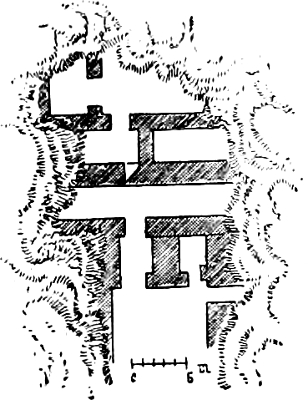
Fig. 10.—Plan of chambers at Mugheir; from Taylor.
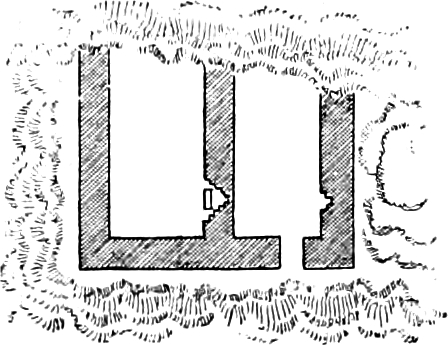
Fig. 11.—Plan of chambers at Abou-Sharein; from Taylor.
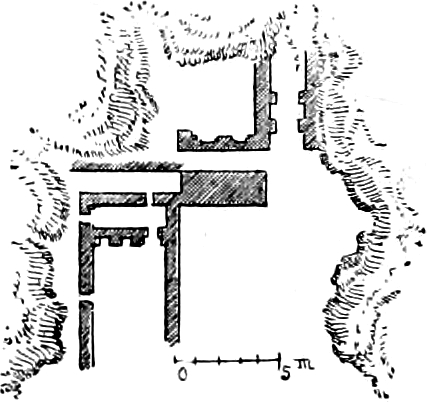
Fig. 12.—Plan of chambers at Abou-Sharein; from Taylor.
It is in Babylon that we ought to have found the masterpieces of this architecture, in that capital of Nebuchadnezzar where the Chaldæan genius, just before it finally lost its autonomy, made the supreme effort that resulted in the buildings attributed by the travelled Greeks to their famous Semiramis. We have no reason to disbelieve Ctesias when he says that there were two palaces in Babylon, one on the left and another on the right bank of the Euphrates. “Semiramis,” says Diodorus, following his usual guide, “built a double residence for herself, close to the river and on both sides of the bridge, whence she might at one and the same time enjoy the view over the whole city, and, so to speak, keep the keys of the most important parts of the capital in her own power. As the Euphrates runs southward through Babylon, one of these palaces faced the rising, the other the[35] setting, sun. Round the palace that faced westwards, she built a wall sixty stades in circumference, &c.”[35]
The larger and more richly decorated of the two palaces was that on the left bank.[36] Its opposite neighbour has vanished and left no trace. The Euphrates has been gradually encroaching on its right bank ever since the days of antiquity, and has long ago disunited and carried away the last stones and bricks of the western palace. The eastern palace is on the other hand still represented by one of the great mounds that dominate the plain; this mound is called the Kasr, or castle (Fig. 183, vol. i.). Its circumference is now not far short of a mile.[37] Its form is that of an oblong parallelogram, with its longest side next the river and parallel to it. The flanks of the mound have, however, been so deeply seamed by searchers for treasure and building materials that no vestige of its arrangements is now to be traced. The bricks employed in the building all bore the name of Nebuchadnezzar.
South of the Kasr there is another mound, rising about one hundred feet above the plain and very irregular in shape. This is Tel-Amran-ibn-Ali, or Tell-Amran, (Fig. 183, vol. i.). It is agreed that this contains all that remains of the hanging gardens, a conjecture that is confirmed by the numerous tombs dating from the Seleucid, the Parthian, and the Sassanid periods, which have been found in its flanks whenever any excavation has been attempted.[38] Tell-Amram seems to have been a far more popular depository for corpses than either Babil, the Kasr, or the Birs-Nimroud, a preference which is easily explained. Whether we believe, with Diodorus, that the gardens were supported by great stone architraves, or with Strabo, that they stood upon several stories of vaults, we may understand that in either case their substructure offered long galleries which, when the gardens were no longer kept up and the whole building was abandoned to itself, were readily turned into burial places.[39] The palace and[36] temple mounds did not offer the same facilities. They were solid, and graves would have had to be cut in them before a corpse could be buried in their substance. The Kasr was a ready-made catacomb into which any number of coffins could be thrust with the smallest expenditure of trouble.
Excavations in the Kasr and at Tell-Amran might bring many precious objects to light, but we can hardly think that any room or other part of a building in such good preservation as many of those in the Assyrian palaces would be recovered. To the latter, then, we shall have again to turn to complete our study of the civil architecture of Mesopotamia.
If we have placed the edifices from which the English explorers have drawn so many precious monuments in the second line, it is not only because their exploration is incomplete, but also because they do not lend themselves to our purpose quite so readily as that cleared by MM. Botta and Place. At Khorsabad there have never been any buildings but those of Sargon; city and palace were built at a single operation, and those who undertake their study do not run any risk of confusion between the work of different generations. The plan we have discussed so minutely is really that elaborated by the Assyrian architect to whom Sargon committed the direction of the work. We can hardly say the same of the ruins explored by Mr. Layard and his successors. The mounds of Nimroud and Kouyundjik saw one royal dwelling succeed another, and the architects who were employed upon them hardly had their hands free. They had, to a certain extent, to reckon with buildings already in existence. These may sometimes have prevented them from extending their works as far as they wished in one direction or another, or even compelled them now and then to vary the levels of their floors; so that it is not always easy for a modern explorer to know exactly how he stands[37] among the ruins of their creations, or to clearly distinguish the work of one date from that of another.[40]
It was at Nimroud that this perplexity was chiefly felt, until the decipherment of the inscriptions came to enable different periods and princes to be easily distinguished. This name of Nimroud, handed down by the ancient traditions collected in Genesis, has been given to a mound which rises about six leagues to the south of Mossoul, on the left bank of the Tigris, and both by its form and elevation attracts the attention of every traveller that descends the stream. The river is now at some distance from the ruins, but as our map shows (Fig. 1), it is easy to trace its ancient bed, which was close to the foot of the mound. The latter is an elongated parallelogram, about 1,300 yards in one direction, and 750 in the other (see Vol. I., Fig. 145). Above its weather-beaten sides, and the flat expanse at their summit, stood, before the excavations began, the apex of the conical mound in which Layard found the lower stories of a staged tower (Fig. 13). Calah seems to have been the first capital of the Assyrian Empire and even to have preserved some considerable importance after the Sargonids had transported the seat of government to Nineveh, and built their most sumptuous buildings in the latter city. Nearly every king of any importance, down to the very last years of the monarchy, left the mark of his hand upon Nimroud.[41]
[38]
Of all the royal buildings at Calah that which has been most methodically and thoroughly cleared is the oldest of all, the north-western palace, or palace of Assurnazirpal (885–860). It has not been entirely laid open, but the most richly decorated parts, corresponding to the seraglio at Khorsabad, have been cleared. The adjoining plan (Fig. 14) shows arrangements quite similar to those of Sargon’s palace. A large court is surrounded on three sides by as many rectangular groups of apartments, each group forming a separate suite, with its own entrances to the court.

Fig. 13.—General view of Nimroud; from Layard.
The chief entrance faces the north. Two great doorways flanked by winged and human-headed lions, give access to a long gallery (4 on plan). At the western end of this gallery there is a small platform or daïs raised several steps above the rest of the floor. Upon this, no doubt, the king’s throne was placed on those reception days when subjects and vassals crowded to his feet. Some idea of what such a reception must have been may be gained from an Indian Durbar, or from the Sultan of Turkey’s annual review of all his great functionaries of state at the feast of Courban-Baïram. I witnessed the latter ceremony in the Old[39] Seraglio in 1857, and when those great officers, like the mollahs and sheiks of the dervishes, who had preserved the turban and floating robes of the East, bent to the feet of Abd-al-Medjid, I was irresistibly reminded of the pompous ceremonials sculptured on the walls of Nineveh and Persepolis.

Fig. 14.—-Plan of the north-western palace at Nimroud; from Layard.
The walls of this saloon were entirely lined in their lower parts with reliefs representing the king surrounded by his chief officers, offering prayers to the god of his people and doing homage for the destruction of his enemies and for successful hunts (Fig. 15). The figures in these reliefs are larger than life. A doorway flanked by two bulls leads into another saloon (2 on plan) rather shorter and narrower than the first. In this the ornamentation is less varied. The limestone slabs are carved with eagle-headed genii in pairs, separated by the sacred tree (Vol. I., Fig. 8). The inner wall of this saloon is pierced with a fine doorway leading into the central court (1), while in one corner there is a narrower opening into a third long hall (6), which runs along the eastern side of the court. It was in this latter room that the finest sculptures, those that may perhaps be considered the masterpieces of the Assyrian artists, were found. Behind this saloon there was another, rather longer, but not quite so wide (7); then five chambers, completing the palace on this side. To the south of the great court there were two large halls (3 and 5) similar in arrangement to those already mentioned but less richly decorated, and several smaller rooms opening some into the halls, others into the passages on the west of the court. As to whether the latter was inclosed or not on the west by buildings like those on the[40] other three sides we cannot now be certain, as on that side the mound has been much broken away by the floods of the Tigris, which once bathed its foot. There is nothing to forbid the hypothesis of a grand staircase on this side leading up from the river bank.[42]
In the central and south-western palaces, built by Shalmaneser II. and his grandson Vulnirari III. the excavations have not been carried far enough to allow the plans to be restored. The explorers have been content to carry off inscriptions and fragments of sculpture in stone, ivory, and metal.[43]
The south-western palace, or palace of Esarhaddon, has been the scene of explorations sufficiently prolonged to give us some idea of its general arrangements (Fig. 16). A curious circumstance was noticed by the English explorers. While the works of Assurbanipal bore the strongest marks of care and skill, those of Esarhaddon showed signs of having been carried out with a haste that amounted to precipitation, and his palace was never finished. Nearly all the alabaster slabs were taken from older buildings.[44] Most of these were fixed with their original carved surfaces against the wall, but a few were turned the proper way. Doubtless, had time served, these would have been smoothed down and reworked. Nothing was finished, however, but the bulls and sphinxes at the doors (Vol. I. Fig. 85) and a few reliefs in their immediate neighbourhood.[45] Esarhaddon died, no doubt, before the completion of the work, which was never continued.

Fig. 15.—Assurnazirpal offering a libation to the gods after his victory over a wild bull. British Museum. Drawn by Saint-Elme Gautier.
And yet his architect was by no means lacking in ambition. Upon the southern face of the building he intended to build the largest hall, which, so far as we know, was ever attempted in an [43]Assyrian palace. This saloon would have been about 170 feet long by 63 feet wide. As soon as the walls were raised he saw that he could not roof it in. Neither barrel vault nor timber ceiling could have so great a span. He determined to get over the difficulty by erecting a central wall down the major axis of the room, upon which either timber beams or the springers of a double vault could rest. This wall was pierced by several openings, and was stopped some distance short of the two end walls. It divided the saloon into four different rooms (marked 1, 2, 3, 4 on our plan) each of which was by no means small. Even with this modification the magnificence of the original plan did not entirely disappear. The two colossal lions opposite the door were very wide apart, and all the openings between the various subdivisions were large enough to allow the eye to range freely over the whole saloon, and to grasp the first thought of the architect in its entirety.

Fig. 16.—Plan of the south-western palace at Nimroud; from Layard.
As to the buildings on the other sides of the court and the total extent of the palace, we know very little; towards the west the walls of several saloons have been recognized, but they have been left half cleared. On the east, landslips have carried away part of the buildings.[46]
Between the palace of Assurnazirpal and that of Esarhaddon Layard found what seemed to him the remains of the second story of some building, or at least of a new building erected over one of earlier date (Fig. 17). Impelled, no doubt, by the rarity[44] of the circumstance, he gives a plan of these remains, and goes so far as to express his belief that the arrangements shown in the plan were repeated on the three other faces of a tower of which he encountered the summit, still partly preserved.[47]
Although Calah was never abandoned, it fell, after the accession of the Sargonids, from the first place among Assyrian cities; on the other hand Sargon’s attempt to fix the seat of government in his own town of Dour-Saryoukin does not seem to have met with permanent success. From the eighth century to the end of the seventh the Assyrian kings appear to have made Nineveh their favourite place of residence.
The site of this famous city has been much discussed,[48] but at last the question appears to be settled. Nineveh was built on the left bank of the Tigris, opposite to the site occupied by modern Mossoul. Two great mounds rising some five-and-thirty feet above the level of the plain, represent the substructures upon which the royal homes of the last Assyrian dynasty were raised; they are now famous as Kouyundjik and Nebbi-Younas. Like the mound of Khorsabad these two artificial hills were in juxtaposition with the city walls, which may still be traced in almost their whole extent by the ridge of earth formed of their materials (Fig. 18).

Fig. 17.—Upper chambers excavated at Nimroud; from Layard.
The mound of Nebbi-Younas has so far remained almost unexplored. It is fortified against the curiosity of Europeans by the little building on its summit and the cemetery covering most of its surface. The inhabitants of the country, Mussulman as well as Christian, believe that Jonah lies under the chapel dome, and they themselves hope to rest as near his body as possible. Some slight excavations, little more than a few strokes of the pick-axe, have been made in the scanty spots where no graves occur, but enough evidence has been found to justify us in[45] assuming that Nebbi-Younas also hides its palaces. They too will have their turn. Thanks to the prestige of the prophet they are reserved for excavations to be conducted perhaps in a more systematic fashion than those hitherto undertaken on the site of Nineveh.

Fig. 18.—Map of the site of Nineveh; from Oppert.

Fig. 19.—Plan of the mound of Kouyundjik; from Rassam’s Transactions.
At Kouyundjik, on the other hand, no serious obstacle was encountered. The village transported itself to the plain; it was not necessary to persuade the inhabitants to quit it, as it had been at Khorsabad. When Botta, who had begun certain inquisitions at this spot, abandoned his attempts, the English explorers were left free to sound the flanks of the artificial hill at their leisure, and to choose their point of attack. If they had gone to work in the same fashion as Botta and Place, they might have laid bare palaces excelling that of Sargon in the scale and variety of their[46] arrangements. Of this we may judge from Mr. Rassam’s plan (Fig. 19). But after the departure of Mr. Layard the excavations, frequently interrupted and then recommenced after long intervals, aimed only at discovering such objects as might figure in a museum. A trench was opened here and another there, on the[47] inspiration of the moment. The explorers often neglected to measure the buildings in which they were at work, so that we have only partial plans of the two principal buildings of Nineveh, those palaces of Sennacherib and Assurbanipal from which so many beautiful monuments have been taken to enrich the British Museum.

Fig. 20.—Part plan of the palace of Sennacherib; from Layard.
The mound of Kouyundjik in its present state is an irregular pentagon. Its circumference is rather more than a mile and a half. The palace of Sennacherib occupies the south-western corner, and forms a rectangle about 600 feet long by 330 wide. The two chief entrances were turned one towards the river, or south-west, the other towards the town, or north-east. The latter entrance was flanked by ten winged bulls. The four central ones stood out beyond the line of the façade, and were separated from each other by colossal genii.[49] About sixteen halls and chambers have been counted round the three courtyards. As at Khorsabad, some of these are long galleries, others rooms almost square. The fragmentary plan shown in our Fig. 20 brings out the resemblance very strongly. It represents a part of the building explored in Layard’s first campaign. In the rooms marked 2, 3, and 4, small niches cut in the thickness of the walls may be noticed. They are not unlike the spaces left for cupboards in the modern Turkish houses of Asia Minor. The hall marked 1 in the plan is about 124 feet long and 30 wide. In another part of the palace a saloon larger than any of those at Khorsabad has been cleared. It measures 176 feet long by 40 wide. The[48] average size of the rooms here is about one-third more than in the palace of Sargon, suggesting that the art of building vaults and timber ceilings made sensible progress during the reign of that king. As in the case of the Khorsabad palace, the explorers believed they could distinguish between the seraglio and the harem; but the plan given by Layard has too many blanks and leaves too many points uncertain for the various quarters to be distinguished with such ease and certainty as at Khorsabad.[50] The walls were everywhere covered with rich series of reliefs, from which we have already taken some of our illustrations (Vol. I., Figs. 151 and 152), and shall have to take more. The military promenade figured upon page 49 will give a good idea of their general character (Fig. 21).
Assurbanipal, the grandson of Sennacherib, built his palace towards the north of the mound. The excavations of Mr. Rassam have been the means of recovering many precious bas-reliefs from it, but we may see from the plan (Fig. 19) that a very small part of the building has been cleared. Much more must remain of a palace so richly decorated and with rooms so large as some of those explored in the quarter we have called the sélamlik. One of these saloons is 145 feet long and 29 wide. The plan of its walls suggests a very large building, with spacious courts and a great number of rooms.[51]

Fig. 21.—Sennacherib at the head of his army. Height 38 inches. British Museum. Drawn by Saint-Elme Gautier.
In many other mounds of Assyria, such as those of Arvil,[52] of [51]Balawat,[53] of Kaleh-Shergat,[54] of Karamles,[55] and in the valley of the Khabour,[56] the explorers have encountered the remains of buildings and of ornamental figures that must have formed parts of royal palaces, or at least of the dwellings of great nobles. We shall not stop to notice all these discoveries. None of the mounds in question have been explored with sufficient care and completeness to add anything of importance to what we have learnt by our study of Khorsabad. The chief thing to be gathered from these widely scattered excavations is that during the great years of Assyria there was no town of any importance in which the king did not possess a habitation, arranged and decorated in the same spirit as the great palaces at Calah and Nineveh, and differing from these chiefly in the size of their courts and chambers.
No doubt the pavilions sprinkled about the park, or paradise, as the Greek writers called it, in which the king sought amusement by exercising his skill as an archer upon the beasts that roamed among its trees, were ornamented in the same fashion, although in all probability, wood and metal played a more important part in their construction. As for the dwellings of the great officers of the crown and of vassal princes, they must have reproduced on a smaller scale the plan and ornamentation of the royal palace.
Of the house properly speaking, the dwelling of the artizan or peasant, whether in Assyria or Chaldæa, we know very little. We are unable to turn for its restoration to paintings such as those in the Egyptian tombs, which portray the life of the poor with the same detail as that of the rich or even of the monarch himself. The Assyrian bas-reliefs, in which the sieges of towns are often represented, always show them from the outside (Fig. 22), nothing is to be seen but the ramparts and the towers that flank them. The only bas-relief in which we can venture to recognize one of the ordinary houses of the country belongs to the series of pictures in which Sennacherib has caused the[52] transport of the materials and colossal bulls for his own palace to be figured. We there see two very different types of edifice, one covered with hemispherical or elliptical domes, the other with flat roofs supporting a kind of belvedere[57] (Vol. I., Fig. 43).
This latter type may be found several times repeated in a relief representing a city of Susiana (Vol. I., Fig. 157). Here nearly every house has a tower at one end of its flat roof. Was this a defence, like the towers in the old Italian towns and in the Greek villages of Crete and Magnesia? We do not think so. The social conditions were very different from those of the turbulent republics of Italy, where the populace was divided into hostile factions, or of those mountainous districts whose Greek inhabitants live in constant fear of attack from the Turks who dwell in the plains. The all-powerful despots of Assyria would allow no intestine quarrels, and for the repulse of a foreign enemy, the cities relied upon their high and solid lines of circumvallation. We think that the towers upon the roofs were true belvederes, contrivances to get more air and a wider view; also, perhaps, to allow the inhabitants to escape the mosquitoes by rising well above the highest level reached by the flight of those tiny pests.
It was, then, between these two types, as Strabo tells us, that the civil buildings of Mesopotamia were divided. They all had thick terraced roofs but some were domical and others flat.[58] At Mugheir Mr. Taylor cleared the remains of a small house planned on the lines of an irregular cross; it was built of burnt brick and paved with the same material. In the interior the faces of the bricks were covered with a thin and not very adhesive glaze. Two of the doors were round-headed; the arches being composed of bricks specially moulded in the shape of voussoirs; but the numerous fragments of carbonized palm-wood beams which were found upon the floors of each room, showed that the building had been covered with a flat timber roof and a thick bed of earth. Strabo justly observes that the earth was necessary to protect the inmates of the house against the heats of summer. As a rule houses must have been very low. It[53] was only in large towns such as Babylon, that they had three or four stories.[59]
We need say no more. We have studied the palace in detail, and the palace was only an enlarged, a more richly illustrated edition of the house. It supplied the same wants, but on a wider scale than was necessary in the dwelling of a private individual. To complete our study of civil architecture it is only necessary to give some idea of the fashion in which palaces and houses were grouped into cities, and of the means chosen for securing those cities against hostile assault.
Of all barbarian cities, as the Greeks would say, Babylon has been the most famous, both in the ancient and the modern world; her name has stirred the imaginations of mankind more strongly than any other city of Asia. For the Greeks she was the Asiatic city par excellence, the eternal capital of those great oriental empires that were admired and feared by the Hellenic population even after their political weakness had been proved more than once. In the centuries that have passed since the fall of the Greek civilization the name and fame of Babylon have been kept alive by the passionate words of those Hebrew prophets who filled some of the most eloquent and poetic books of the Old Testament with their hatred of the Mesopotamian city, an ardent hate that has found an echo across the ages in the religion which is the heir of Judaism.

Fig. 22.—Town besieged by Sennacherib. Height 86 inches. British Museum.
Drawn by Saint-Elme Gautier.
There is, then, no city of the ancient world in which both our Christian instincts and our classic education would lead us to take a deeper interest, or to make more patient endeavours towards the recovery of some knowledge of its passed magnificence by the interrogation of its site and ruins, than this town of Babylon. At the same time it happens, by a strange series of chances, that of all the great cities of the past Babylon is the least known and the most closely wrapped in mystery. The descriptive passages of ancient writers are full of gaps and exaggerations, while as for the monuments themselves, although[54] the size of their remains and the vast extent of ground they cover allow us to guess at the power and energy of the people to whom they owed their existence, there are no ruins in the world from which so little of the real thoughts and ideas of[55] their constructors is to be learnt. Not only has the ornamentation of palace and temple disappeared, the ruling lines and arrangements of their plans are no longer to be traced. It is this no doubt that has discouraged the explorers. While the sites of Calah, Nineveh, and Dour-Saryoukin have been freed of millions of cubic yards of earth, and their concealed buildings explored and laid bare in every direction, no serious excavations have ever been made at Babylon. At long intervals of time a few shafts have been sunk in the flanks of the Kasr, of Babil and the Birs-Nimroud, but they have never been pushed to any great depth; a few trenches have been run from them, but on no connected system, and only to be soon abandoned. The plain is broken by many virgin mounds into which no pick-axe has been driven, and yet they each represent a structure dating from some period of Babylonian greatness. It would be a noble undertaking to thoroughly explore the three or four great ruins that rise on the site itself, and to examine carefully all the region about them. Such an exploration would require no slight expenditure of time and money, but it could not fail to add considerably to our present knowledge of ancient Chaldæa; it would do honour to any government that should support it, and still more to the archæologist who should conduct the inquiry to completion, laying down on his plan the smallest vestige remaining of any ancient detail, and allowing himself to be discouraged by none of the numerous disappointments and deceptions that he would be sure to encounter.
Meanwhile it would be profitless to carry our readers into any discussion upon the topography of Babylon. In the absence of ascertained facts nothing could be more arbitrary and conjectural than the various theories that have been put forward as to the direction of the city walls and their extent. According to George Smith the only line of wall that can now be followed would give a town about eight English miles round. Now Diodorus says that what he calls the Royal City was sixty stades, or within a few yards of seven miles, in circumference.[60] The difference between the two figures is very slight. “In shape the city appears to have been a square with one corner cut off, and the corners of the walls of the city may be said roughly to front the cardinal points. At the north of the city[56] stood the temple of Belus, now represented by the mound of Babil; about the middle of the temple stood the royal palace and hanging-gardens.”[61]
The Royal City was the city properly speaking, the old city whose buildings were set closely about the great temple and the palace, the latter forming, like the Old Seraglio at Constantinople, a fortified town in itself with a wall some twenty stades (4043 yards) in circumference. A second wall, measuring forty stades in total length, turned the palace and the part of the city in its immediate neighbourhood into a sort of acropolis. Perhaps the nobles and priests may have inhabited this part of the town, the common people being relegated to the third circle. In the towns of Asia Minor at the present day the Turks alone live in the fortified inclosures, which are called kaleh, or citadels, the rest of the town being occupied by the rayahs of every kind, whether Greek or Armenian.
There is, then, nothing in the description of Diodorus at which we need feel surprise. Our difficulty begins when we have to form a judgment upon the assertion of Herodotus, who speaks of an inclosure 120 stades (13 miles 1385 yards) square.[62] According to this the circumference of Babylon must have been nearly 55¼ English miles, which would make it considerably larger than what is called Greater London, and more than three times the size of Paris. Here, strangely enough, Ctesias gives a more moderate figure than Herodotus, as we find Diodorus estimating the circumference of the great enceinte at 360 stades (41 miles 600 yards).[63]
[57]
We can hardly read of such measurements without some astonishment. It seems difficult, however, to doubt the formal statement of such a careful eye-witness as Herodotus. Although the Greek historian was quite ready to repeat the fantastic tales he heard in the distant countries to which his travels led him—a habit we are far from wishing to blame—modern criticism has never succeeded in convicting him of falsehood or exasperation in matters of which he could judge with his own eyes. Our surprise at his figures is diminished when we remember with what prodigious rapidity buildings of sun-dried bricks could be erected. The material was at hand in any possible quantity; the erection of such a length of wall was only a question of hands. Now if we suppose, with M. Oppert, that the work was undertaken by Nebuchadnezzar after the fall of Nineveh, that prince may very well have employed whole nations upon it, driving them into the workshops as the captive Jews were driven. In such a fashion the great wall that united into one city towns which had been previously separated—such as the original Babylon, Cutha, and Borsippa—might have been raised without any great difficulty. It is certain that the population of such a vast extent of country cannot have been equally dense at all points. A large part must have been occupied by royal parks, by gardens, vineyards, and even cultivated fields. Babylon must, in fact, have been rather a vast intrenched camp than a city in the true sense of the word.
At the time when Herodotus and Ctesias visited Babylon, this wall—which was dismantled by the Persians in order to render revolt more difficult—must have been almost everywhere in a state of ruin, but enough of it remained to attract curious travellers, just as the picturesque fortifications of the Greek emperors are one of the sights of modern Constantinople. The more intelligent among them, such as Herodotus, took note of the measurements given to them as representing the original state of the great work whose ruins lay before their eyes and confirmed the statements of their guides.[64] The quarter then still inhabited was the Royal City, the true Babylon, whose great public works have left such formidable traces even to the present day. Naturally no vestige of the tunnel under the[58] Euphrates has been found; we may even be tempted to doubt that it ever existed.[65] But we cannot doubt that the two sections of the town were put in communication one with another by a stone bridge; the evidence on that point is too clear to admit of question.[66] The descriptions of the structure give us a high idea of the engineering skill of the Chaldæans. To build such a bridge and insure its stability was no small undertaking. The river at this point is about 600 feet wide, and from twelve to sixteen deep at its deepest part.[67] We need hardly say that for many centuries there has been no bridge over the Euphrates either in the neighbourhood of Babylon or at any other point in Mesopotamia. As for the quays, Fresnel found some parts in very good preservation in 1853.[68] At the point where this discovery was made the quay was built of very hard and very red bricks, completely covered with bitumen so as to resist the action of the water for as long as possible. The bricks bore the name of Nabounid, who must have continued the work begun by Nebuchadnezzar.
The description given by Herodotus of the way in which Babylon was built and the circulation of its inhabitants provided for must also be taken as applying to the Royal City. “The houses are mostly three and four stories high; the streets all run in straight lines, not only those parallel to the river, but also the cross-streets which lead to the waterside. At the river end of these cross-streets are low gates in the fence that skirts the stream, which are, like the great gates in the outer wall, of brass and open on the water.”[69]
We may perhaps form some idea of Babylon from the appearance of certain parts of Cairo. Herodotus seems to have been[59] struck by the regularity of the plan, the length of the streets, and the height of the houses. In these particulars it was very different from the low and irregularly built Greek cities of the fifth century B.C. The height of the houses is to be explained partly by the necessity for accommodating a very dense population, partly by the desire for as much shade as possible.[70]
The decadence of Babylon had begun when Herodotus visited it towards the middle of the fifth century before our era;[71] but the town was still standing, and some of the colossal works of its later kings were still intact. The last dynasty had come to an end less than a century before. We are ready, therefore, to believe the simple and straightforward description he has left us, even in those particulars which are so well calculated to cause surprise. The evidence of Ctesias, who saw Babylon some half century later, seems here and there to be tainted with exaggeration, but on the whole it agrees with that of Herodotus. Supposing that he does expand his figures a little, Ctesias is yet describing buildings whose ruins, at least, he saw with his own eyes, and sometimes his statements are borne out by those of Alexander’s historians.[72]
The case of Nineveh is very different. Of that city Herodotus hardly knew more than the name; he contents himself with mere passing allusions to it.[73] Ctesias is trammelled by fewer scruples. When he wrote his history Nineveh had ceased to exist for more than two centuries; the statements of Xenophon[74] prove that at the time of the famous retreat its site was practically deserted and its name almost forgotten in the very district in which its ruins stood. But the undaunted Ctesias gives us a description of the Assyrian capital as circumstantial as if he had lived there in the days of Sennacherib or Assurbanipal. According to his account it formed an elongated rectangle, the long sides being 150 stades (17 miles 380 yards), and the shorter 90 stades (10 miles 595[60] yards), in length, so that the total circumference was 480 stades (55 miles 240 yards).[75] The whole of this space was inclosed by a wall 100 Greek feet (103 feet English) high, and with towers of twice that height.
It is hardly necessary to show that all this is pure invention. To find room for such a Nineveh we should have to take all the space between the ruins opposite Mossoul and those of Nimroud. But all the Assyrian texts that refer to Nineveh and Calah speak of them as two distinct cities, each with an independent life and period of supremacy of its own, while between the two sites there are no traces of a great urban population. The 1,500 towers on the walls were the offspring of the same brain that imagined the tower of Ninus nine stades (5458 feet) high. We can scent an arbitrary assertion in the proportion of two to one given to the heights of the towers over that of the wall. In the fortified walls of the bas-reliefs the curtain is never greatly excelled in height by its flanking towers (see Vol. I. Figs. 51, 60, 76, and 158, and above, Fig. 23).

Fig. 23.—Siege of a city; from Layard.
Ctesias has simply provided in his Nineveh a good pendant to Babylon. Being quite free to exercise his imagination, he has laid down even a greater circumference than that of the city on the Euphrates. The superiority thus ascribed to the northern city is enough by itself to arouse our suspicions. We cannot point to any particular text, but contemporary history as a whole suggests that Babylon was more populous than Nineveh, just as Bagdad is now more populous than Mossoul. Nineveh,[61] and Calah before it, were the capitals of a soldier nation, they were cities born, like Dour-Saryoukin, of the will of man. Political events called them into life, and other political events caused them to vanish off the face of the earth. Babylon, on the other hand, was born of natural conditions; she was one of the eternal cities of the world. The Turks do their best to make Hither Asia a desert, but so long as they do not entirely succeed, so long as some light of culture and commerce still flickers in the country, it will burn in that part of Mesopotamia which is now called El-Jezireh (the island), where the two streams are close together, and canals cut from one to the other can bring all the intermediate tract into cultivation.
Sennacherib speaks thus of his capital: “Nineveh, the supreme city, the city beloved of Istar, in which the temples of the gods and goddesses are to be found.”[76] With its kings and their military guards and courts, with the priests that served the sanctuaries of the gods, with the countless workmen who built the great buildings, Nineveh must have been a fine and flourishing city in the days of the Sargonids; but even then its population cannot have equalled that of Babylon under Nebuchadnezzar. The latter was something more than a seat of royalty and a military post; it was the great entrepôt for all the commerce of Western Asia.[77]
[62]
All the travellers who have visited the neighbourhood of Mossoul are agreed that, on the left bank of the Tigris, there is no trace of any wall but that which forms a rather irregular parallelogram and embraces the two mounds of Nebbi-Yonnas and Kouyundjik (Fig. 18).[78] According to M. Oppert this wall was about ten thousand metres (nearly 6¼ miles) in circumference, which would make it cover about one-eleventh of the ground covered by modern Paris. There is nothing here that is not in accord with our ideas as to the character and importance of Nineveh. If we add to the town inclosed within such a wall suburbs stretching along the right bank of the river on the site of modern Mossoul, we shall have a city capable of holding perhaps two or three hundred thousand people.
In the northern part of the inclosure, not far from the north-western angle, Sir Henry Layard made some excavations that brought one of the principal gates of ancient Nineveh to light.[79] The passage was probably vaulted, but its upper part had disappeared. The gateway, which was built by Sennacherib, had a pair of winged bulls looking towards the city and another pair looking towards the country outside. The limestone pavement in the entrance still bears the mark of wheels. Two great chambers are hollowed out of the thickness of the walls and open into the entrance passage. The walls must be here about 116 feet thick, judging from the proportion, in Layard’s plan,[80] between them and one of the two chambers, which has a diameter, as we are told by its finder, of 23 feet. We need say no more of this doorway. The town attached to the palace of Khorsabad will give us a better opportunity for the study of a city gate.
The “town of Sargon,” Dour-Saryoukin or Hisr-Sargon, according as we follow one or the other method of transcribing the Assyrian name, was far smaller than Babylon, was smaller even than Nineveh. It formed a parallelogram two sides of which were about 1,950 yards, the other two about 1,870 yards long, which would give a surface of considerably more than a square mile. This city is interesting not for the part it played in history, for of[63] that we know nothing, and it is quite possible that after the death of Sargon it may have been practically abandoned, but because, of all the cities of Assyria, it is that whose line of circumvallation has been best preserved and most carefully studied (Vol. I. Fig. 144).
Like all inhabited places of any importance Dour-Saryoukin was carefully fortified. Over the whole of Mesopotamia the words town and fortress seem to have been almost convertible terms. The nature of the soil does not lend itself to any such distinctions as those of upper and lower city, as it does in Italy and Greece; there was no acropolis, to which the inhabitants could fly when the outer defences were broken down. In case of great need the royal palace with its massive gates and cincture of commanding towers might be looked upon as a citadel; while in Babylon and some other towns several concentric lines of fortification made an attack more arduous and prolonged the defence. But, nevertheless, the chief care of the Mesopotamian engineers was given to the strengthening of the external wall, the enceinte, properly speaking.
At Khorsabad this stood on a plinth three feet eight inches high, above which began the sun-dried brick. The whole is even now nowhere less than forty-five feet high, while in parts it reaches a height of sixty feet. If we remember how greatly walls built of the materials here used must have suffered from the weather, we shall no longer be astonished at the height ascribed by Herodotus to the walls of Babylon: “These were, he says, 200 royal cubits (348 feet) high.”[81] This height was measured, no doubt, from the summit of the tallest towers into the deepest part of the ditch, which he adds, “was wide and deep.” It is possible that the interpreters who did the honours of Babylon to the Greek historian exaggerated the figures a little, just as those of Memphis added something to the height of the pyramids. That the exaggeration was not very great is suggested by what he says as to the thickness of the wall; he puts it at fifty royal cubits, or eighty-six feet six inches. Now those of Khorsabad are only between six and seven feet thinner than this, and it is certain that the walls of Babylon, admired by all antiquity as the masterpieces of the Chaldæan engineers, must have surpassed those of the city improvised by Sargon both in height and thickness.
[64]
Far from abusing our credulity, Herodotus is within the mark when he says that on the summit of the wall “enough room was left between the towers to turn a four-horse chariot.”[82] As for Ctesias, he speaks of a width “greater than what is necessary to allow two chariots to pass each other.”[83] Such thicknesses were so far beyond the ideas of Greek builders that their historians seem to have been afraid that if they told the truth they would not be believed, so they attenuated rather than exaggerated the real dimensions. If we give a chariot a clear space of ten feet, which is liberal indeed, it will be seen that not two, but six or seven, could proceed abreast on such walls.
The nature of the materials did not allow walls to be thin, and in making them very thick there were several great advantages. The Assyrians understood the use of the battering-ram. We see it employed in several of the bas-reliefs for opening a breach in the ramparts of a beleaguered town (Vol. I. Fig. 60 and above, Fig. 23). They also dug mines, as soon as they had pierced the revetment of stone or burnt brick.[84] To prevent or to neutralize the employment of such methods of attack they found no contrivance more effectual than giving enormous solidity to their walls. Against such masses the battering-ram would be almost powerless, and mines would take so much time that they would not be very much better. Finally, the platform at the summit of a wall built on such principles would afford room for a number of defenders that would amount to a large army.
Throughout the circumference of the enceinte the curtain was strengthened by rectangular flanking towers having a front of forty-five, and a salience of rather more than thirteen feet.[85] These were separated from each other by intervals of ninety feet, or double the front of a tower. Only the lower parts of the towers are now in existence, and we have to turn to the representations[65] of fortresses in the reliefs before we can restore their super-structures with any certainty. In these sculptures what we may call the head of the tower equals on an average from a fourth to a fifth of the height of the curtain. By adopting an elevation half way between these two proportions, M. Place has given to his towers a total height of 105 feet to the top of their crenellations, a height which is near enough to the 100 Grecian feet attributed by Diodorus to the Nineveh walls. The description borrowed by that writer from Ctesias, is, as we have shown, in most respects quite imaginary, but it may have contained this one exact statement, especially as a height of about 100 feet seems to have been usually chosen for cities of this importance.
The parapets of the towers were corbelled out from their walls and pierced with loopholes, as we know from the reliefs. Each doorway was flanked by a pair of towers, the wall between them being only wide enough for the entrance. Our Plate V. will give a very exact idea of the general appearance of the whole enceinte. Including those of the palace mound, it has been calculated that the city of Sargon had one hundred and sixty-seven towers. Was there a ditch about the wall like that at Babylon? We are tempted to say yes to this, especially when we remember the statement of Herodotus that the earth taken from the ditch served to afford materials for the wall. Moreover such a ditch could have been easily kept full of water by means of the two mountain streams that flow past the mound. But the explorers tell us they could find no trace of such a ditch.[86] If it ever existed it has now been so completely filled up that no vestige remains.
Upon each of its south-eastern, south-western and north-eastern faces the city wall was pierced with two gates. One of these, decorated with sculptures and glazed bricks, is called by Place the porte ornée, or state entrance, the other, upon which no such ornament appears, he calls the porte simple. On the north-western face there is only a porte simple, the palace mound taking the place of the state gateway. The plinth and the lower courses of burnt brick are continued up to the arches of these gates; the latter are also raised upon a kind of mound which lifts them about eight and a half feet above the level of the plain.
In size and general arrangement these gateways were repetitions[66] of each other. Our Figs. 50 in the first volume, 24 and 25 in this, show severally the present condition, the plan and the restored elevation of a porte simple.

Fig. 24.—Plan of one of the ordinary gates at Khorsabad; from Place.
The entrance was covered by an advanced work, standing out some eighty-three feet into the plain. Each angle of this sort of barbican was protected by a low tower, about forty feet wide. Through the centre of the curtain uniting these towers there is a first vaulted passage, leading to a large courtyard (A in Fig. 24), beyond which are the space (B) between the great flanking towers of the gate proper and the long vaulted passage (C—G) which gives access to the town. This passage is not a uniform tunnel. The mass through which it runs is 290 feet thick, and in two places it is crossed at right angles by transepts wider than itself (D and F). The tunnel ends in a kind of open vestibule interposed between the inner face of the wall and the commencement of the street. All these courts, passages and transepts are paved with large limestone slabs except the small chamber that opens from one end of the outer transept (I). This small apartment was not a thoroughfare, but it has been thought that signs of a staircase leading either to upper rooms or to the battlements could be traced in it. We have seen that the Egyptian pylons had such staircases and[67] upper chambers.[87] It would be curious to find the arrangement repeated here, but we cannot certainly say that it was so. On the other hand the situation of the doors by which the entrance into the city was barred is very clearly marked. At the point where the passage C opens into the transept D the sockets in which the metal feet of the door pivots were set, are still in place.[88]

Fig. 25.—Restoration in perspective of one of the ordinary gates of Khorsabad; from Place.
The state doorways are distinguished from their more humble companions, in the first place by a flight of eleven brick-built steps which have to be mounted before the court A can be reached from the outside; in the ordinary gateways a gentle inclination of the whole pavement of the court makes such steps unnecessary. A second difference is of more importance. At the entrance to the passage marked C on our plan the state doorways have a pair of winged bulls whose foreparts stand out a little from the wall while their backs support the arch. The latter is decorated with the semicircle of enamelled bricks of which we[68] have already spoken at length in our chapter upon decoration (Vol. I., Figs. 123 and 124, and below, Fig. 26). Behind the bulls there are two winged genii facing each other across the passage and about thirteen feet high (Fig. 27).

Fig. 26.—State gateway at Khorsabad. Elevation; from Place.
That these monumental doorways with their rich decorations were reserved for pedestrians, is proved by the flight of steps. It was not thought desirable to subject their sculptures to the dangers of vehicular traffic. In the portes simples the marks of wheels can be distinctly traced on the pavements.[89]
Each of these gateways, whether for carriages or foot passengers, was a complicated edifice, and the arrangement of their 10,000[69] square yards of passage and chamber could scarcely have been explained without the use of plans. Military necessities are insufficient to explain such elaborate contrivances. The existence of barbican and flanking towers is justified by them, but hardly the size of the court and the two great transepts. We cease to be surprised at these, however, when we remember the part played by the city gates in the lives of the urban populations of the Levant.

Fig. 27.—Longitudinal section through the archway of one of the city gates, Khorsabad; from Place.
In the East the town gate is and always has been what the agora was to the cities of Greece and the forum to those of Italy. Doubtless it was ill-adapted to be used as a theatre of[70] political or judicial debate, like the public places of the Græco-Roman world. But in the East the municipal life of the West has never obtained a footing. The monarchy and patriarchal régime have been her two forms of government; she had no need of wide spaces for crowds of voters or for popular tribunals. Nothing more was required than a place for gossip and the retailing of news, a place where the old men could find themselves surrounded by a circle of fellow townsmen crouched upon their heels, and, after hearing plaintiffs, defendants and their witnesses, could give those awards that were the first form of justice. Nothing could afford a better rendezvous for such purposes than the gate of a fortified city or village. Hollowed in the thickness of a wall of prodigious solidity it gave a shelter against the north wind in winter, while in summer its cool galleries must have been the greatest of luxuries. Husbandmen going to their fields, soldiers setting out on expeditions, merchants with their caravans, all passed through these resounding archways and had a moment in which to hear and tell the news. Those whom age or easy circumstances relieved from toil or war passed much of their time in the gates talking with all comers or sunk in the sleepy reverie in which orientals pass so much of their lives.
All this is painted for us with the most simple fidelity in the Bible. “And there came two angels to Sodom at even; and Lot seeing them, rose up to meet them.”[90] When Abraham buys a burying place in Hebron he addresses himself to Ephron, the owner of the ground, “and Ephron the Hittite answered Abraham in the audience of the children of Heth, even of all that went in at the gate of his city.”[91] So too Boaz, when he wishes to marry Ruth and to get all those who had rights over the young Moabitess to resign them in his favour, “went up to the gate, and sat him down there ... and he took ten men of the elders of the city, and said, sit ye down here. And they sat down.”[92] And these old men were called upon to witness the acts of resignation performed by Ruth’s nearest relatives.[93]
So too, in later ages, when the progress of political life led kings to inhabit great separate buildings of their own, the palace gates became for the courtiers what the city gates were for the[71] population at large. At Khorsabad they were constructed on exactly the same plan as those of the town; they are even more richly decorated and the chambers they inclose are no less spacious. In them servants, guards, military officers, foreign ambassadors and wire-pullers of every kind could meet, lounge about, and await their audiences. Read the book of Esther carefully and you will find continual allusions to this custom. “In those days, while Mordecai sat in the king’s gate, two of the king’s chamberlains, Bigthan and Teresh, of those which kept the door, were wroth, and sought to lay hands on the king Ahasuerus.”[94] The gates of the palace must have been open to all comers for a man of despised race and a butt for the insults of Haman, like Mordecai, to have been enabled to overhear the secret whispers of the king’s chamberlains. In the sequel we find Mordecai hardly ever moving from this spot.
as Racine says, he thence addresses to Esther the advice by which she is governed. He did not stand up, as he must have done in a mere passage, for Haman complains that he did not rise and do him reverence.[95]
This use of gates has not been abandoned in the East. At Mossoul, for instance, the entrances to the city are buildings with several rooms in them, and in the gate opening upon the Tigris M. Place often saw the governor of the province seated among his officers in an upper chamber and dispensing justice.[96] In the same town the doorways of a few great private houses are frequented in the same fashion by the inhabitants of the quarter. This was the case with the French Consulate, which was established in a large house that had been the ancestral home of a family of independent beys, now extinct. At the entrance there was a chamber covered with a depressed cupola and surrounded by stone benches. Right and left were four lodges for porters, and on one side a staircase leading to four upper rooms built over the vault. One of these served as a divan.[72] All this was separated by a large courtyard from the dwelling place proper, and even after the building had become a part of France, the neighbours kept up their habit of coming to sit and gossip under its dome.[97]
The word porte has thus acquired a significance in every European language that could hardly be understood but for the light thrown upon it by such customs as those illustrated by the remains of Assyrian architecture, and alluded to so often in the sacred writings. Every one who has visited Stamboul, has seen in the first court of the Old Seraglio, that arched doorway (Bab-i-Houmaioun) in whose niches the heads of great criminals and rebellious vassals used once to be placed; it formerly led to the saloons in which the Ottoman sultans presided at the great council, listened to the reports of their officers, and received foreign ambassadors. The doorway through which the august presence was reached ended by representing in the imagination of those who passed through it; first, the whole of the building to which it belonged, and secondly, the sovereign enthroned behind it. The decrees in which the successors of Mohammed II. made known their will ended with these words: “Given at our Sublime Gate, at our Gate of Happiness.” In later years the Old Seraglio was abandoned. The different public departments were removed into a huge edifice more like a barracks than an eastern palace, but the established formula was retained. In the Constantinople of to-day “to go to the Porte” means to go to the government offices, and even the government itself, the sultan, that is, and his ministers, are known in all the chancelleries of Europe as the Porte, the Sublime Porte, the Ottoman Porte.
It was, no doubt, by a metonomy of the same kind that the capital of ancient Chaldæa, the town into which the principal sanctuaries of the national gods were gathered, was called Bab-ilou, the Gate of God, which was turned by the Greeks into Βαβυλών, or Babylon.
After our careful description of the remains left by the city of Sargon we need enter into few details as to the other fortified enceintes that have been explored in Mesopotamia. The same rectangular plan, the same thick walls and carefully arranged gateways are to be found in them all. With the Assyrians as with their neighbours, every town was fortified. The square[73] form seems to have been universally employed for the flanking towers. It is quite by exception that we find in one of the pictures of a siege on the Balawat gates, tall and slender towers that appear to be round on plan and to be much higher than the curtain they defend (Fig. 28). Besides these town walls there were, no doubt, at the mouths of the valleys opening into the basin of the Tigris, strong forts and isolated towers, perched upon some abrupt rock or ridge: the siege of such a fortress seems to be going on in the relief figured on the next page (Fig. 29). The platform at the top of the tower seems to be raised and strengthened by a structure of wood, which stands out beyond the crenellations and is protected by a row of shields, like the bulwarks of a Roman galley. This contrivance resembles those ourdeys of which the military engineers of the middle ages made such constant use. The garrison still show a bold front from behind their defences, but the women and old men, foreseeing the fall of their stronghold, are decamping while there is yet time.

Fig. 28.—Fortified wall; from the Balawat gates. British Museum.
The military successes of the Assyrians are partly to be explained by their engineering skill. In all that concerned the attack and defence of places they seem to have left the Egyptians far behind. In addition to mines and battering rams they employed movable towers which they pushed forward against such walls as they wished to attack point blank, and thought either too high or too well lined with defenders to be open to escalade (Vol. I., Fig. 26). In the relief partly reproduced on page 75, the defenders have not ceased their resistance, but in the lower section, in what we may call the predella of the picture, we[74] see a long band of prisoners of both sexes being led off by soldiers. These we may suppose to be captives taken in the suburbs of the beleaguered city, or in battles already won.[98]

Fig. 29.—Siege of a fort; from Layard.
The Assyrians not only understood how to defend their own cities, and to destroy those of their foes, they were fully alive to the necessity for good carriage roads, if their armies and military machines were to be transported rapidly from place to place. How far these roads extended we do not know, but Place ascertained the existence of paved causeways debouching from the gates of Dour-Saryoukin,[99] and unless they stretched at least to the frontiers, it is difficult to see how the Assyrians could have made such great use as they did of war chariots. Not one of[75] their series of military pictures can be named in which they do not appear, and they are by no means the heavy and clumsy cars now used in some parts both of European and Asiatic Turkey. Their wheels are far from being those solid disks of timber that are alone capable of resisting the inequalities of a roadless country. They have not the lightness of a modern carriage with its tires of beaten steel, but the felloes of their wheels are light and graceful enough to prove that the roads of those times were better than anything the Mesopotamia of to-day can show. The spokes, which seem to have been fitted with great care and nicety, are, as a rule, eight in number (Figs. 21 and 31).

Fig. 30.—An attack by escalade; from Layard.
In the interior of the town—we are still speaking of the town of Sargon—these same causeways formed the principal streets.[76] They were about forty feet wide. Their construction was, of course, far inferior to that of a Roman road. There were no footpaths, either within or without the cities; the stones were small, irregular in shape, and not of a very durable kind. They were placed in a single layer, and the pavement when finished looked like a mere bed of broken stones. All Mesopotamia, however, cannot now show a road that can be compared to these ancient ways. Wherever the traveller goes, his beasts of burden and the wheels of his carts sink either into a bed of dust or into deep and clinging mud, according to the season. It is no better in the towns. Whoever has had the ill luck to be out, in the rainy season, in the sloughs and sewers that the Turks call streets, will be ready to acknowledge that the civilization of Assyria in the time of Sargon was better furnished than that of Turkey in the days of Abdul-Hamid.

Fig. 31.—Chariot for three combatants; from the palace of Assurbanipal. Louvre. Height 16 inches. Drawn by Bourgoin.
At Khorsabad, where the main streets must, like those of Babylon, have intersected each other at right angles, how were the buildings, public and private, arranged? We might have had an answer to this interesting question had M. Place been in[77] command of enough time and means to clear the whole interior of the enceinte. Even as it was he found enough to justify him in asserting that the great inclosure of some eight hundred acres was not, as we might be tempted to imagine at first sight, a royal park attached to the palace, but a city. He sunk trenches at three points where low mounds suggested the presence of ruins, and all his doubts soon disappeared. Several yards below the present level of the ground he found the original surface, with the pavements of streets, courtyards and rooms; doorways with their thresholds and jambs; walls covered with stucco, cut stone and even alabaster slabs; potsherds, fragments of brick and utensils of various kinds—decisive evidence, in fact, that one of those agglomerations of civilized human beings that we call towns, had formerly occupied the site.

[78]
The Egyptian notions as to a future life had much to do with the rapidity with which the art of sculpture was developed during the early years of their history. There was a close relation between their religion and the rites it implied, on the one hand, and the peculiar characteristics of the most ancient Memphite sculptures on the other. We cannot say the same of Chaldæa. So far as our present knowledge extends, we have no reason to suppose that the first efforts of the Mesopotamian sculptor were directed to providing the umbra, the immaterial inhabitant of the tomb, with a material support which should resemble as closely as possible the body of flesh and bones that, in spite of every precaution, would sooner or later end in dust and nothingness. No monument has come down to us in which we can recognize a portrait image executed for a sepulchre.[100]
And yet the basis of the Chaldæan religion was similar to that of Egypt. Taken as a whole, the beliefs as to a posthumous life were the same in both countries. Why then had they such different effects upon the arts? For this we may give several reasons. The first is the comparatively small importance forced upon the Chaldæan tomb by the nature of the soil. In mere coffins of terra-cotta, and even in those narrow brick vaults that are met with at certain points, at Mugheir and Warka for instance, there is no room for a single statue, still less for the crowds of images held by a Gizeh or Sakkarah mastaba. Add[79] to this that stone was rare and dear, that it had to be brought from a great distance, and we shall comprehend why funerary rites and the worship of the dead exercised no appreciable influence over Chaldæan sculpture.
Here the beginnings of art are more obscure than in Egypt. In the first place we cannot trace them back nearly so far, in the second both statues and bas-reliefs are much less numerous. In spite of recent discoveries, to which we owe much, Egypt still remains unrivalled both by the prodigious antiquity into whose depths she allows us to catch a glimpse, and by the ever-increasing multitude of monuments and tombs that are found in her soil. The night that hides the birth of civilization is darker in Mesopotamia than in the Nile valley; it does not allow us to perceive how the plastic faculty was first awakened, and why it took one direction more than another; we cannot tell why the modeller of Lower Chaldæa set himself to handle clay, or carve wood and stone into the shape of some real or fantastic creature. On the other hand, when we study Chaldæan sculpture in the oldest of those works that have come down to us, we are struck by the fact that, even in the remote centuries to which those carvings belong, Chaldæan art interested itself in all the aspects of nature and in every variety of living form. It had nevertheless its favourite themes, namely, the representations of royal and divine personages.
When first called upon to suggest the ideas of divine power and perfection, art had no other resource but to borrow features and characteristics from those mortal forms that must always, in one point or another, seem incomplete and unfinished. Of all undertakings that could be proposed to it, this was at once the most noble and the most difficult. To find a real solution of the problem we must turn to the Greeks. Of all ancient peoples they were the first to perceive the unrivalled nobility of the human form; they were the first to decide that the notion of divine superiority, of a divine principle, could be best suggested in all its infinite varieties, through that form. We shall see them obtain the results at which they aimed by giving to man’s body and features a charm, a grandeur, a purity of line—in a word, a perfection, to which no single living member of the race can attain. The Chaldæans had no sufficiently clear idea of such a system, and, more especially, they[80] never acquired enough familiarity with the nude, to rival the grace and dignity given by the Greeks to their divine types; but their art was more frankly anthropomorphic than that of Egypt, and, as we shall have occasion to show, it created many types that were transmitted to the Mediterranean nations, and soon adopted by them. These types were perfected, but not invented, by the Greeks.
We have already given more than one example of how the Chaldæan intellect set about the manifestation of its ideas as to gods and demons, how it expressed their characteristics by heterogeneous forms borrowed from various real animals. The powers of evil were first embodied in this fashion (Vol. I. Figs. 6, 7, 161, 162). The sculptor went far afield to find the elements of ugliness that he wished to combine in a single being; this is nowhere to be better seen than in a bronze statuette belonging to the Louvre (Fig. 32). Here too we are better informed than usual. An inscription engraved on the back tells us that this is the demon of the south-west wind, the most scorching and generally unpleasant of the winds that visit Mesopotamia. The ring in the head served to hang it up in front of the window or doorway of a house. Thanks to such a precaution, the inhabitants of that dwelling would be protected against the ill effects of the parching breath of the desert. The sculptor has wished to make this tyrant of the atmosphere as hideous and repulsive as possible, and he has only succeeded too well. One can hardly imagine anything more frightful than his grinning, quasi-human countenance, resembling a death’s head in some of its lines; the great round eyes and goat’s horns with which it is surrounded add to its deformity. Its meagre body has some hints at hair on its right side. The hands are large and flat, the fingers short and blunt, while the feet are a curious combination of human extremities with the talons of a bird of prey.
On the other hand this mixture of forms is by no means repulsive in the case of certain personages who appear to belong either to the class of beneficent genii or to that of the great deities of the Chaldee pantheon. The combination is especially well managed in the winged bulls. The head is that of a man, but about the tiara with which it is crowned several pairs of horns are bent. These horns are among the attributes of the[81] beast by whose nature this complex being is dominated. They are part of the offensive armament of the one animal which enjoys in popular esteem an equal reputation for strength with the lion. The body and limbs, too, are those of a bull, while the curly main recalls that of the king of beasts. The whole is completed by a pair of large wings borrowed from the eagle.

Fig. 32.—The demon of the South-West Wind. Louvre. Actual size.
Drawn by Saint-Elme Gautier.
[82]
Nothing could be clearer than the governing idea of this conception. The artist has wished to unite in a single being the highest powers of life and nature—the bull, the lion, the eagle: these are types of physical force differently applied. Patient and tenacious in the bull, who drags the plough and transports the heaviest burdens; violent and impetuous in the lion, while in the king of birds the formidable strength of beak and talons add to the fear inspired by his lightning flight. Finally, the head and countenance are those of a man, the impersonation of intelligent force, of will governed by reflection, before which every living thing has to bow.
The root of this conception is the same as that by which the Egyptian sphinx was suggested. The chief differences lie in the greater complexity of the winged bull and in its less quiescent attitude. The sphinx combines but two elements, the man and the lion; its pose is easier and perhaps more natural than that of the Assyrian animal. It is extended on the ground, its paws stretched idly before it, an attitude that could be preserved without fatigue for an indefinite time, and therefore in complete accordance with its governing idea, and with the function it had to fill at the gates of a palace or temple. That idea, for the bull as well as the sphinx, was force in repose. But the bull stands upright, and, when looked at from one side, seems to walk. We feel that if he did complete his stride he would bring the structure that stands on his loins down about our ears.
Here, as in most cases where comparison is possible, the advantage remains with Egypt. But yet the Assyrian type is by no means without a certain nobility and beauty of its own. In spite of their colossal dimensions, in spite of the supernatural vigour of their limbs and the exaggerated energy and salience of their muscles, there is a kind of robust grace in the leading lines and proportions of these figures to which we cannot be indifferent, and their effect is increased by the wings that lie along their backs and furnish so happily the upper part of the huge alabaster slabs, above which nothing rises but the horned tiara. Finally, the face with its strongly marked features, with its frame of closely curled hair and beard arranged in the strictest symmetry, is still more remarkable than all the rest (Fig. 33). The expression is grave and proud, and sometimes almost smiling. It is in fine harmony [85]with the general idea that led the Chaldæans to create these mysterious but kindly beings, and to endow them with their mighty frames of stone.[101]

Fig. 33.—Head of a winged bull of Assurbanipal. British Museum. Height 38 inches.
Drawn by Saint-Elme Gautier.
These bulls have only been actually found in Assyria, but numerous and precise texts have been deciphered by which their existence at the gateways of Chaldæan temples and palaces has been proved.[102] They are not now to be met with in the country of their origin, because their material was too rare in the lower part of the great basin to escape the attacks of spoilers. Soft or hard, volcanic or calcareous, stone was there precious and difficult to find. Sooner or later such objects as these would be dragged from their ancient sites and broken up to be used anew. If chance had not so willed that the Assyrian palaces were preserved for us by entombment in their own ruins, we should now have known nothing of a type that played a great part in the decoration of Mesopotamian buildings, and, by its originality, made a great impression upon neighbouring peoples; or at least we should only know it by reproductions on a very small scale, like those we meet with on the cylinders, or by imitations vastly inferior to the originals, like those of the palaces at Persepolis.

Fig. 34.—Cone of chalcedony. In the National Library at Paris. Actual size.
Instead of a human head on the body of a beast, we sometimes find the process reversed, but always with an amount of taste and reserve to which we are compelled to render due praise. We may, of course, quote instances in which the head of an eagle is put upon a human body (Vol. I. Fig. 8), or the shoulders of a man concealed under a fish’s scales (Vol. I. Fig. 9, and above, Fig. 34);[86] but even then the sculptor has succeeded in giving to the characteristic lines and attitudes of the human figure the predominance that belongs to them, and, as it were, has made them cast an air of nobility over the whole composition.

Fig. 35.—Izdubar and lion. Double the actual size. From a cylinder in the British Museum.
It is thus with a curious type to which our reader’s attention should be drawn; we mean that of the personage called Izdubar by some Assyriologists, and Hea-bani by others. Whichever name we may choose, the person in question was “a mighty hunter,” like the Nimrod of Genesis, a hero distinguished for his valour and for the difficulties he overcame. So that he might be free in his movements and ready for every work of activity and vigour, he is naked. Even under the dry method of the Chaldæan gem engraver we can appreciate the amplitude of his form and the power of his muscles. He is also distinguished by the size of his face, which is always fully seen, and seems to be the result of a compromise between the features of a man and those of a lion. This deliberately exaggerated head is enframed in long shaggy hair. Upon some cylinders we see Izdubar in a state of repose, behind the throne of a god to whom he acts as acolyte or guard of honour (Vol. I., Fig. 17), elsewhere he is seen in the exercise of his functions, if we may [89]call them so, accomplishing some such task as those that made the fame of the Greek Hercules, whose ancestor he may perhaps have been. We find him on a cylinder in the British Museum carrying off a slain lion on his shoulders (Fig. 35).

Fig. 36.—Winged genius. Louvre. Height 10 feet. Drawn by Saint-Elme Gautier.
We again find the human form predominant in those great winged genii for which Chaldæan art had so strong a predilection (Figs. 4 and 29). The two pairs of wings are very happily allied to the body, and both Greek and modern art has had recourse to the type thus created, the former for the figures of certain minor divinities, especially for that of Victory, and Christian art for its angels. In both these instances, however, we find but a single pair of wings. The artists of Assyria, especially in their rare attempts to treat the figure from a front view, have used the two pairs of wings with great felicity to furnish the background, against which the human form stands out in all the vigour of its robust muscularity. Our readers may judge of this from our reproduction of one of the reliefs brought to the Louvre from Khorsabad (Fig. 36).
These winged men serve as a kind of transition between the complex beings noticed above, and the sculptures in which the human form is treated without any supernatural additions. So far as we can guess in our present uncertainty as to the ranks of the celestial hierarchy of Chaldæa, it would appear that the forms and features of men and women were alone thought worthy to represent the greatest of their divinities. Take the statue of Nebo, figured on page 81 of our last volume, take the gods introduced into the ceremonies we have already figured (Vol. I., Figs. 13 and 14), after reliefs from Nimroud and Kouyundjik (Fig. 37).[103] In this last-named work the god, Raman or Marduk, holds a flower. At Nimroud there is a god with horned forehead who grasps an axe in one hand and a thunderbolt in the other. In the female figure, twice repeated with slightly different attributes, that precedes the god, Istar has been recognized. See also the statue of Istar in Vol. I., Fig. 16, and the image of that Chaldæan Venus so often repeated on the cylinders (Figs. 38 and 39). In form Istar is but a woman, and the artist would[90] have made her beautiful if he had known how. She is shown naked, against the general custom of an art that everywhere else hid the human body under ample draperies. This nudity must have been intended to suggest those feminine charms by which desire is awakened and life preserved on the world.
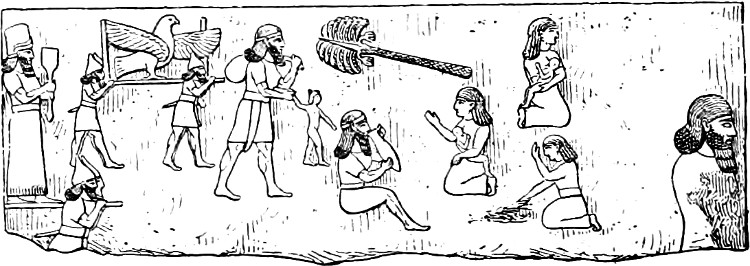
Fig. 37.—Carrying the gods. From the palace of Sennacherib; from Layard.

Fig. 38.—Istar and the sacrificing priest.
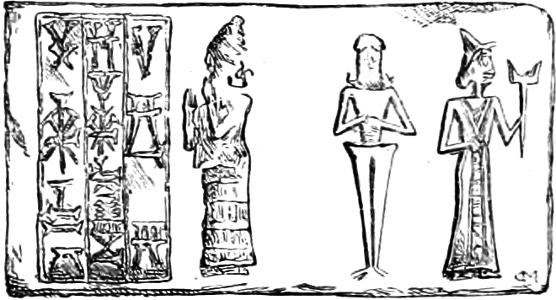
Fig. 39.—Istar between two personages.
Hague Museum.
The supreme gods, the Bels or Lords, were treated in the same way when all the majesty of their station had to be suggested. Each of these had his domicile in one of the principal sanctuaries of Chaldæa and Syria. At Sippara it was Samas, or the sun personified (Vol. I., Fig. 71); upon the seal of Ourkam (Vol. I., Fig. 3), upon another cylinder on which there are many curious and inexplicable details (Fig. 17), and upon a last monument of the same kind which dates from the early centuries of Chaldæan civilization (Fig. 40), it is a Bel whose name escapes us;[104] but in[91] all the theme is the same, and the type almost exactly similar. We can hardly be mistaken in recognizing a god in the personage seated on a richly decorated throne, towards whom two or three figures, sometimes of smaller size than himself, advance in an attitude of respectful homage. He is crowned with a lofty tiara, a long beard flows over his breast, a robe of fine plaited stuff enwraps his whole body and falls to his feet. He is a man in the prime of life; his air and costume must have been taken from those of the king. May we not look upon him as the first sketch for the Greek Zeus, the Zeus of Homer and Phidias?
This type is never disfigured by any of those attempts, of which the Chaldæans were so fond, to add to the significance of the human figure by endowing it with features borrowed from various lower animals. It should be noticed, however, that on one of the cylinders we have figured (Vol. I., Fig. 17) there is a personage with two faces, like the Roman Janus. But this is not the seated god. It is not the great deity before whom the other actors in the scene stand erect, it is one of the secondary personages, one of the inferior divinities who bring offerings or receive instructions, in short, one of those genii whose numerous and complex attributes first suggested these fantastic combinations.

Fig. 40.—Lapis-lazuli cylinder. In the French National Library.
We find then that when the Chaldæans set themselves to search for the most suitable way of figuring their gods, they ended by thoroughly appreciating the excellence of the human form; with a few exceptions, they abandoned the idea of correcting and perfecting it; they were content to copy it sincerely and unaffectedly, to render the characteristic features of the maid and the mother, the youth and the man of mature age to whom years[92] have lent dignity without taking away vitality. These forms they covered as a rule with ample drapery, but for certain types, those, for instance, of the goddess of love and fecundity, and the demi-god whom we have compared to the Greek Hercules, they had recourse to all the frankness of nudity. How was it that under such conditions they never succeeded in endowing their goddesses with grace, or their gods with nobility of form? Can it be denied that the few nude figures they have left us are far inferior, not only to those the Greeks were afterwards to design with so sure a hand, but even to the hundreds and thousands of human forms with which the Egyptians had already peopled their bas-reliefs and funerary pictures?

Figs. 41, 42.—Fragments of an ivory statuette. British Museum. Actual size.
Their first fault lay in an exaggerated striving after fidelity. They insisted blindly on certain details which are elsewhere suppressed or dissimulated, in obedience to a compromise which has been so generally accepted that it must surely be founded on reason. We may judge of this by two ivory fragments chosen from among those that were found in such numbers at Nimroud. They are, in all probability, statuettes of Istar (Figs. 41 and 42). The sculptor had noticed that the female pelvis was larger than the male, but he exaggerates its size and that of the bosom. The deep folds of the abdomen indicate an exhausted vitality, that of[93] a woman who has been many times a mother, and other details of this region are rendered with a clumsy insistance.[105]
There is no evidence in Chaldæan art of the feeling for proportion which distinguishes Egyptian sculpture. Its renderings of the human figure are nearly always too short and thickset; even those works which by their general facility and justness of movement most strongly attract our admiration, are not free from this fault. Its effects may be estimated very clearly from the stele representing Marduk-idin-akhi, a king of Babylon (Fig. 43), whose date is placed in about the twelfth century B.C. It is true that the defect in question is more conspicuous in this relief than, perhaps, in any other work of the school to which we can point; but in all it is more or less perceptible. In Assyria, under the later Sargonids, sculptors made an effort to correct it, but even their comparatively slender figures have a certain heaviness. Assyrian sculpture has many good points, but it is never elegant. The Assyrian and Chaldæan sculptors were discouraged from acquiring a complete knowledge of the human form by the fact that it was not demanded by their patrons. The public who judged their works did not perceive their shortcomings in that respect. There was nothing in their daily life, or in the requirements they laboured to fulfil, which either assisted them to make good their deficiencies, or compelled them to do it for themselves. They seldom beheld the nude form, still more seldom did they have to introduce it into their works. The Greek writers speak of it as a peculiarity of “the barbarians,” whether Syrians or Chaldæans, Lydians or Persians, that they were ashamed to be seen naked, the men as much as the women. Such a scruple, especially in the male, would seem hardly comprehensible to the Greek accustomed to the nudity of the gymnasium.[106]
[94]
The origin of such a notion is to be sought, perhaps, so far as Mesopotamia is concerned, in a wise hygiene and in the rapid changes of an uncertain climate. The difference between the extremes of summer and winter temperature is far greater than in Egypt or on the Ionian coasts, and precautions had to be taken at one time against a scorching sun, at another against the cold of the nights. However this may have been, it is certain that these people, although they lived in a hot country, went about in a costume that covered their bodies as completely as that of modern Europe. It consisted of a long tunic, a tunica talaria (?) as the Romans would call it, and a mantle. The tunic left nothing exposed but the head and neck, the forearms, and the feet and ankles. It must have been of linen or hempen cloth;[107] when worn by a rich man it was embroidered and decorated about the foot with a sort of gimp fringe. The tunics of the poor were short and plain, often coming hardly lower than the knee. They were also looser and better fitted to work in; but they are never wanting altogether, even to the men of the corvée, the slaves and prisoners of war whom we see employed in the construction of the royal buildings (Vol. I. Figs. 151 and 152). Women were dressed in chemises coming down to their feet (Vol. I. Fig. 30), resembling the long robe of coarse blue cotton which still forms the only garment of the peasant women of Egypt and Syria. Sometimes we find a sort of cape thrown over the tunic (Vol. I. Fig. 31, and below, Fig. 44).

Fig. 43.—Merodach or Marduk-idin-akhi. From a basalt stele in the British Museum. Height 24 inches. Drawn by Saint-Elme Gautier.
As for the mantle, it was a fringed shawl, and, like the Greek peplos or the Roman toga, could be arranged in many different ways. In the painting at Beni-Hassan which shows us the arrival in Egypt of a band of Asiatic emigrants,[108] it leaves one shoulder and both arms uncovered, and forms a kind of frock round the body, which it entirely conceals. In the old Chaldæan statues from Sirtella the arrangement is more graceful (see Plate VI.); the piece of cloth is folded double and carried obliquely round the body so as to cover the left arm and shoulder and leave the right [97]bare. The end is simply passed under the first fold, by which it is tightly held.[109] There is no trace of a tunic. In Assyria the mantle was variously arranged. It always left one shoulder free, which was covered, however, by the tunic. As a rule it reached to the feet (Vol. I. Fig. 22), but sometimes it was so contrived as to leave one leg exposed from the knee downwards. The robes of Sargon praying before the sacred tree are thus arranged (Fig. 45).

Fig. 44.—Captives on the march. From the palace of Sennacherib.
As for the women’s dress, it was still more impenetrable than that of the men. In the Assyrian bas-reliefs there are very few figures of women on any considerable scale. We can hardly point to an instance, except in the slab where Assurbanipal and his queen are shown feasting in a garden (Vol. I. Fig. 28). In this carved picture the queen is robed in a tunic and mantle, over which the embroiderers needle has thrown a profusion of those rosettes that are so popular in Mesopotamia!! art. We are allowed to glean no hint of the personal charms of the favoured sultana, who must have been young and beautiful. They are entirely masked by the envelope in which she is wrapped.
In all this we are far enough from the semi-nudity of the Egyptian sculptures, to say nothing of the frank display of the Greeks. On the banks of the Nile, where the climate had no violent changes and the air was deliciously dry and limpid, both poor and rich, both the king and his subjects, were contented with the white drawers, which were carefully plaited and knotted about the hips.[98] On great occasions, when, as we should say, they wished to dress themselves, they put on long, bright-coloured, and elegantly embroidered robes; but those robes were of a fine linen tissue, every contour of the body could be easily followed through them, the age and character of every form could be distinctly appreciated.
The artist, even when he had to represent the wives and daughters of Pharaoh or the most august of the female deities, showed under their draperies the contours of their breasts, their hips, and the insertions of their limbs.[110] Still more transparent were the robes in which the dancing and singing women who occur so often in the tomb pictures were draped.[111] The calculated indiscretions of this sort of coa vestis invited the painter and sculptor to do justice to the elegance of the female form.
How different and how much less favourable were the conditions under which the Assyrian sculptor exercised his art! For him the contours of the body and the attachments of the limbs were hidden behind heavy tunics covered with embroidery, and shawls often folded double. If by chance he caught a passing glimpse of the forms beneath, to what use could he put it? Two or three at the most of the divine types upon which his skill was most frequently employed involved a very partial nudity; most of the gods, and nearly all the men, were draped. In a few very rare instances we find an Assyrian stripped of his clothes and crossing a river by means of an inflated skin.[112] But these figures, though fairly well drawn, are very small in scale, and occupy but a subordinate place in the bas-relief where they occur.[113]

Fig. 45.—Sargon before the sacred tree. Louvre. Drawn by Saint-Elme Gautier.
Corpses stripped naked by the victor on the battle-field are of more frequent occurrence; but these, being the bodies of despised and hated enemies, are treated in very summary fashion.[114] We may say the same of the prisoners whom they behead and flay alive.[115] The mutilated statue of a nude female, rather less than [101]life, which bears a votive inscription of Assurbilkala, the son of Tiglath-Pileser, and is now in the British Museum, is a great rarity. It is believed to represent Istar. The execution is careful, but the forms are clumsy and the proportions bad; the bust is a great deal too short.[116]
By his failure to appreciate living form for its own sake, for its beauty of line and harmony of proportion, the Mesopotamian sculptor put a voluntary limit to his ambition. He renounced, in advance, the only means within his reach of borrowing from the human figure the elements for a representation of the deity which should preserve a character of indefinite existence, of natural and sovereign excellence. But this abstention, or, if you like, this impotence, did not prevent Assyrian artists from fulfilling, in the most brilliant fashion, the other part of the task to which they were called by the habits and requirements of the society for which they laboured. The sculptors were mainly employed by the king; their chief business was to multiply his images; they were charged to commemorate the sovereign in every act of his life, in every one of the many parts involved by his indefatigable activity as builder, chief-justice, hunter, commander-in-chief, and supreme pontiff. From the king himself to the last of his soldiers or prisoners, every one who had his own marked place in a picture was draped; the sculptor could reproduce every episode of the royal life in the truest and most animated fashion, without ever having learnt to draw the nude. In fact, he was not called upon, like the Greek artist, to procure for the æsthetic sense the pure joys that are given by the sight of noble forms or movements well rendered; his duty was to commemorate by a series of clear and lively images those events that were celebrated in words in the text inscribed upon the very alabaster slabs beneath his hand.
Assyrian sculpture had this documentary character in the very highest degree; its creations, in the intention of those by whom they were commissioned, were less works of art than records.[117][102] The long inscriptions and the endless series of pictures with which the palace walls were covered were no more than an illustrated book.
And in what class of literature should that book be placed? It has been called an epic illustrated by sculptors—a description that seems hardly just. For in every epic worthy of the name the marvellous occupies an important place, while in these reliefs it scarcely has a place at all. With few exceptions the belief in a superior and divine world makes itself felt in Assyrian art only in those effigies of gods and demons we have already described. And such images have their places rigidly fixed by tradition; they stand at the palace gates, but are scarcely ever found within its saloons, and are entirely absent from the marches, battles, and sieges. Here and there among such pictures, but at long intervals, we find some feature that reminds us of the aid that Assur and the other national gods afforded their worshippers; now it is an eagle floating over the king’s chariot;[118] now the god himself, surrounded by a winged circle, draws his bow and launches his formidable shafts against the enemies of his people.[119] He is thus represented mounted on a galloping bull in the ring by which the standards of the Assyrian legions were surmounted.

Fig. 46.—Assyrian standard; from Layard.
All these details were small in scale and unobtrusive. The rôle played by the architect was similar to that of the draughtsmen and photographers who sometimes accompany princes and generals on a modern campaign. The programme placed before him was as narrow as it could well be; he was required to be faithful and precise, not to give proof of inventive power.
The sculptor was, in a way, the editor of the military bulletins;[103] his work was the newspaper of the day, explaining the political events of his time to those who could understand no other writing. There is complete coherence between his figures and the inscribed texts they accompany. Look, for instance, at the series of slabs from the Palace of Sennacherib, in which his Jewish campaign is retraced.[120] The final scene is thus described in words within a cartouche above the heads of the figures: “Sennacherib, king of Assyria, seated upon his throne of state, causes the prisoners taken in the town of Lachish to pass before him,”[121] In order to show the details of the magnificent chair upon which the king is seated we have reproduced only the two principal actors, in the sovereign and his grand vizier (Fig. 47). If we had been able to place the whole composition before our readers they would have seen how thoroughly the inscription describes it. Behind the general who is presenting the vanquished to the king, appear the prisoners, some prostrate, others kneeling or standing upright, but all turned towards their conqueror with gestures of supplication.
The spaces to be covered were vast, but the warlike kings of Assyria cut out enough work for their sculptors to keep them always busy. Every campaign, and every battle, every siege or passage of a river, seemed to them worthy of commemoration by the chisel. Those to whom the work was given were forced therefore to multiply figures; the task was complicated and yet had to be finished with extreme rapidity. The sovereign was in a hurry to enjoy the spectacle he had promised himself, he wished to inhabit for as many years as possible the dwelling whose walls, like so many magic mirrors, would reflect his own prowess and glory. And so the sculptor had to produce much and produce fast; we can therefore understand how it was that his creations never lost a certain look of improvisation. They had the good qualities of such a mode of work; namely, force, vitality, and abandon, but combined with all its defects, inequality, incoherence, and frequent repetition.
In order to cover the surface abandoned to the sculptor as quickly as possible, the work had to be divided; every one who[104] was thought to be capable of wielding a chisel had to be pressed into the service. Sculptors of established fame who had already helped to decorate more than one palace, mediocre artists with more age and experience than talent, young apprentices entering the workshops for the first time, all were enlisted, and each received his share of the common task. Under such conditions, and especially when the utmost expedition was required, the collective work could not help showing signs of the many and variously skilled hands that had been employed upon it. Even with the Greeks, and even, which is still more to the point, with the Athenians of the age of Pericles, something of the same kind is to be noticed. The frieze of that temple of Pallas, which is, perhaps, the most carefully wrought creation of human hands, is not all equally fine in execution. Some parts show the work merely of a skilful carver, while before others we feel that here has been the hand of the great master himself, that the play of the chisel has been governed by the brain that traced the original sketch and thought out the whole marvellous conception.
And these differences are still more obvious in the great compositions turned out so rapidly by Assyrian sculptors. Examine at your leisure the long series of pictures from a single palace that hang on the walls of the British Museum—the only place where such a comparison is possible—and you will be astonished at the inequality of their execution. Among those taken from a single room some are far better than others. Here and there we find figures that seem to have been touched upon and corrected by an experienced artist, while their immediate neighbours are treated in a soft and hesitating fashion. Curiously enough the figures representing enemies are, as a rule, very roughly modelled; sometimes they are hardly more than blocked out. It seems as if they wished, from the beginning, to have no mistake as to relative dignity between the soldiers of Assur and those men of inferior race whom they condescended to slay.[122]

Fig. 47.—Sennacherib before Lachish, British Museum. From an unpublished drawing by Félix Thomas.
A hurried artist repeats himself deliberately. Repetition spares him the fatigue of reflection and invention. The Assyrians loved [107]to represent processions. Sometimes these consist of the king’s servants carrying the ensign of royalty behind him (Vol. I. Figs. 22, 23, and 24); sometimes of priests carrying the images of the gods (Vol. I. Figs. 13 and 14); but more often of war chariots, cavalry, and infantry (Fig. 15), or bands of prisoners conducted by foot soldiers (Fig. 48). To groups and single individuals progressing in long succession the sculptor gave a certain rhythm that is not without its dignity, but yet his treatment of such themes is deficient in variety. The same fault occurs in Egyptian dealings with similar subjects; the figures seem all to reproduce a single type, as if they had been stencilled. The designer has made no real effort to avoid monotony; he has no suspicion of those skilful combinations by which the Greek sculptor would succeed in reconciling the unity of the whole with variety of detail; he makes no attempt to make those slight changes between one group and another that please and amuse the eye without hurting the general symmetry, or breaking those great leading lines by which the general character and movement of the composition is determined.[123]

Fig. 48.—Procession of captives; from Layard.
[108]
The necessity for haste accounts for another defect of the same art. It was because he had no time that the sculptor did not choose and select, like the Greeks. The size of our page prevents us from reproducing one of those pictures in which the triumphs of Sennacherib are commemorated,[124] but some idea of that great military chronicle may be formed from the assault on page 30 (Fig. 30). There is nothing like a central group in which the episodes and incidents of the conflict could, as it were, be gathered up and epitomized. The sculptor exhausts himself in striving after the confused wealth of reality; our eye loses itself among the groups of combatants who seem to be sown broadcast over the field of the relief. The historian may find in it many curious details, but he who looks only for aesthetic enjoyment is soon bored. The whole composition is as confused as a real hand-to-hand fight.
In spite of all these defects, or perhaps owing to their existence, the realistic sculpture of Assyria must have had a strong attraction, not only for the kings, to whom it was a sort of apotheosis, but for their subjects, their officers, and for the soldiers who fought in the campaigns and brought off their share of the glory and spoil. We may well find these battle panoramas not a little wearisome; but if we put ourselves in the place of those who were actors in the scenes they portray, of those who could search among their countless, and, to us, often ambiguous incidents, and find, or think they found, their own deeds and persons introduced by the sculptor into his crowded pages, how great will be the change. The fatigue we feel will be changed into the interest that never palls of fighting one’s battles over again, and into the natural pride aroused by the pages of a history that chronicled no defeat, that spoke of nothing but the long sequence of victories won by the legions of Assyria over every nation that had the temerity to oppose her arms.
Such a spectacle had its eloquence and could not fail to react strongly upon those who gazed upon it, to incite them to new triumphs and to the renewed spoliation of their neighbours. In[109] spite of its shortcomings, such an art had, then, one great merit; it was, in the highest degree, national; it was frankly inspired by the most universal passion of the people among whom it was born, by the ideas it suggested it helped to keep that passion alive and to add to its force, and so contributed not a little to develop the habits and sentiments in which the power and originality of a violent, fanatical, and warlike race consisted.
If the national dress and social régime, as well as the natural conditions of the country had their effect upon Mesopotamian art, so too had the materials employed. In our study of Egyptian sculpture we endeavoured to show how greatly the artist depended on his material, and what a strongly modifying effect the latter had upon the nature of the interpretation he could give to his thought.[125]
The monuments of Assyria especially invite the same remark. The Chaldæans seem to have made use, as a rule, of very hard rocks for their sculptures, rocks similar to those used by the later Egyptians for their more important works. In Chaldæa a stone statue was a rare object. On the few occasions when a Chaldæan prince, or even private individual, indulged in such a luxury, he did not spare expense; once in a way the cost did not matter; it was of far greater moment that the work should be durable, and blocks were brought from any distance that might be necessary to ensure that result. Thus it is that nearly all the monuments that have been recovered in the lower valley of the Euphrates are of basalt, diorite, or dolerite. The difference between the styles of the Egyptian and Chaldæan sculptures was not caused, then, by the materials employed, but by something far less easily defined—by the peculiar genius of the two peoples. They neither saw nature with the same eyes nor interpreted it in the same spirit.
The situation was rather different in Assyria. There a plentiful supply of easily-cut stone, alabaster, and several varieties of limestone of more or less hardness was to be had. These[110] facilities had a double consequence: they led the Ninevite artist to make lavish use of sculpture in the decoration of buildings, and they had no little influence upon their habits of design and upon the executive processes they adopted. The most peculiar, the truly characteristic feature of their bas-reliefs so far as execution is concerned, is the combination of incisiveness and looseness in their handling. We feel that the chisel, in spite of the haste with which it worked, has been strongly driven. It is not so in the case of other countries; as a rule where work is rapid it is also slight and superficial. This apparent anomaly is to be explained by the qualities of the material. The alabaster used at Khorsabad and Kouyundjik is so soft that we can scratch it with the finger-nail, and even the limestone preferred by the artists of Assurbanipal is not much harder.[126] How this tempts the hand! Whether one tries to or not one writes boldly with a goose quill, and here the docility of the material becomes a danger. The carver’s tool, when it meets with no real resistance, runs away with the hand, and the sculptor is insensibly led on to over-accent his intentions, and to exaggerate his effects.

Fig. 49.—One face of the obelisk of Shalmaneser II. British Museum. Drawn by Bourgoin.
Sometimes the Assyrians attacked the harder stones, which they obtained from certain districts of Kurdistan and the neighbourhood of the extinct volcanoes of the Sinjar, between the valleys of the Tigris and the Khabour;[127] we shall be content with quoting as examples a basalt statue found at Kaleh-Shergat and the obelisk of Shalmaneser II., in the British Museum, which is cut from the same material (Vol. I. Fig. 111, and below, Fig. 49).[128] It deals with the homage done and the tribute offered to the king by five conquered nations. Among the offerings are several strange animals.[129] The small building at Khorsabad which has [113]been called sometimes a throne-room and sometimes a temple, was decorated with reliefs in basalt,[130] but the use of these hard rocks was always very rare in Assyria. The habits of the northern artists were formed in cutting the softer stones, and their use of such materials explains not only their prodigious fecundity but certain qualities and defects of their style.
Both Chaldæa and Assyria made too constant and skilful use of plastic clay in their architecture for it to have been possible that they should overlook its capabilities as a material for the sculptor, especially in the production of small objects like sepulchral statuettes. Both nations have transmitted to us a vast quantity of such figures. In both cases they are solid; those of Chaldæa are stamped in a mould in a single piece; their reverse is flat and roughly smoothed by the hand; the clay is fine and close-grained, and so hard and well fired that it cannot be scratched with a metal point (Fig. 50).[131] The execution of the Assyrian figures is more simple. They are solidly modelled in clay, and without the use of a mould, although we often find a series made after one pattern and giving a high idea of the Assyrian modeller’s skill (Fig. 51). The coarseness of the material however is surprising; it is a dark grey earth, unequal, knotty, without any mixture of sand, but marked with cross hatchings left by the straw with which it seems to have been mixed. The body is so friable that it crumbles in the hand, but as it resists water it must have undergone a gentle burning.[132]
Examples are also to be found of objects in earthenware or terra-cotta coated with a vitreous glaze, like those that the Egyptians manufactured in such enormous quantities.[133] In these cases the figure is cast in a mould, and the enamel is either blue or green, as in Egypt (Fig. 52).[134]
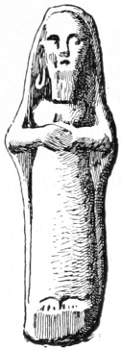
Fig. 50.—Statuette of a priest. Louvre; from Heuzey.

Fig. 51.—Dagon. British Museum. Actual size.
Clay was used for other things besides these small statuettes; it seems to have been employed in the first sketches from which the sculptor chiselled the alabaster slabs, at least when he attacked the more important and complex groups. We can hardly refuse to[114] recognize such a purpose in a fine fragment brought from the palace of Assurbanipal to the British Museum. It is all that is left of a relief in terra-cotta. The grain is much finer and the colour far redder than in statuettes from the same place. In its present state this slab is about a foot high, and mutilated as it is, its subject may be recognized as an incident in the royal hunt, the rest of which helps to fill the Assyrian basement room. The larger part of the principal figure is wanting, but enough of him remains to leave no doubt as to the character of the scene; it represents a king attacked on two sides by lions, and defending himself with his lance. The firm and precise execution of the lions’ paws and of the king’s body should be noticed. According to the scale obtaining in the sculptures preserved this model was carried out on a half scale. So little of the group is left that we cannot make sure whether the reliefs now in London contain the[115] episode of which this is the original sketch or not.[135] So far as we can tell, however, the exact passage executed after this model is not in the museum, but we must not forget that a large number of the sculptures were left in the palace where they were found; Mr. Rassam only removed the finest and those in the best condition.

Fig. 52.—Head of a lioness. Louvre. Actual size.
The small winged bull carved in the finest limestone, which Mr. George Smith brought from Nimroud, was, no doubt, a model of the same sort (see Vol. I. Figs. 83 and 84). Its execution is of the most careful description, and yet it can hardly have had any other use. We may say the same of the square slab of terra-cotta just mentioned; its figures are too small for the decoration of palace saloons, and the material is too common to have formed a part of those rich schemes of ornament whose existence is attested by the texts as well as by the remains. We can suggest no more plausible explanation of these little monuments, or one in more complete accord with the necessities of rapid production. We have already shown that a vast number of hands were required for the prompt execution of these great sculptural works, and the provision of such models, whether in stone or terra-cotta, would do much towards preventing the evil consequences of employing so many different and variously gifted[116] journeymen. The master produced the model, and nothing was required from the carvers who copied it but skill in enlarging and in the handling of their tools.
From the earliest times of which any remains have come down to us the Chaldæans understood how to make use of all the different materials that offer facilities to the artist for the rendering of living form. Until bronzes dating from the times of the pyramid builders were found,[136] it was thought that they had anticipated the Egyptians in the art of making that precious alloy and casting it in earthen moulds.[137] This conjecture was suggested by the discovery, near Bagdad, of a metal statuette, which is now in the Louvre (Fig. 53). It is what the Greeks called a canephoros. A young woman carries a basket on her completely shaven head, keeping it in place with her hands. From her waist upwards she is nude, but the lower part of her figure is wrapped in a kind of narrow skirt, on which is engraved a votive inscription containing the name of a king Kourdourmapouk, who is believed to have flourished in the sixteenth century before our era. The casting is solid.
The bronzes inscribed with the name of Gudea (Vol. I. Figs. 146–148) are perhaps still more ancient. The motive of one is identical with that of this canephoros. Metal working cannot have begun with such objects as these; it is pretty certain that forging metals was everywhere an earlier process than casting them. Before learning to prepare the mould and to force the liquid copper into its farthest recesses, men must have commenced by beating it into plates upon the anvil. When they had gathered sufficient skill to make these plates very thin and pliant, the next thing they attempted was to ornament them, which they first did by hammering one of their sides, and so producing reliefs on the other which could be brought to sufficient perfection by repeating the process with varying degrees of strength and delicacy, and by chasing. This is what is called repoussé work.

Fig. 53.—Canephoros. Louvre. Height 10½ inches.
There is no doubt that these processes were invented in the southern cities. The oldest of the Warka tombs show that metals were abundant from a very ancient period, and that their[117] use was well understood; but we do not possess any important examples of repoussé work dating from the early days of Chaldæa. It is otherwise with Assyria. The exploration of her palaces has brought to light numerous fragments of ornamental sheathing in bronze; plaques and bands, sometimes curved, sometimes straight, according to the surface to which they were applied, were covered in some cases with mere ornamental designs, in others with numerous figures. Only within the last few years have we learnt to how high a pitch the sculptors of Mesopotamia had carried this art, and how well they understood that the rough form[118] left by the hammer should be completed and defined with the burin and chisel. The most important discovery of the kind was made as recently as 1878, by Mr. Hormuzd Rassam, who found the bronze gates to which we have already more than once alluded, in the mound of Balawat.[138] Shalmaneser II., who built the palace to which these gates belonged, caused his victorious campaigns and his sacrifices to the gods to be represented upon them. We have already reproduced many of these curious reliefs (Vol. I., Figs. 51, 68, 73, 158; and above, Fig. 28); a last example will help to show the facility of the Assyrian artist and the boldness of his rendering of animals and men (Fig. 54). He played with bronze as he did with alabaster; in both his handling was firm and rapid and his modelling at once broad and strongly felt.[139]

Fig. 54.—Man driving goats and sheep. From the Balawat gates. British Museum.
Drawn by Saint-Elme Gautier.
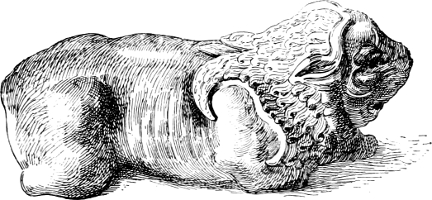
Fig. 55.—Lion carved in wood. Louvre. Length 4 inches. Drawn by Saint-Elme Gautier.

Fig. 56.—Ivory seal. Louvre. Actual size. Drawn by Saint-Elme Gautier.

Fig. 57.—Ivory tablet in the British Museum. Drawn by Saint-Elme Gautier.
This peculiar handling, at once free and a little hard, is to be found in all the works of these people. It may be recognized in a wooden lion, unfortunately much mutilated, which belongs to the Louvre (Fig. 55), and in those carvings upon the shells of pearl oysters that have been found in such numbers, especially in Lower Chaldæa.[140] The ivories alone are, sometimes at least, without this peculiar character. They display[119] a certain harshness in which the distinguishing mark of Chaldæan origin has been recognized. We may give as an instance the small object thus described in the catalogue of the Louvre: “Lion devouring a wild goat, of which only the head and neck are visible. This group ornaments one face of a small object, rounded above and with a flat base. There is an oblong slit in the latter. The object is apparently a seal” (Fig. 56).[141] On the other hand, although most of the ivory carvings that were used for the handles of walking-sticks and daggers and such purposes, show the characteristics we have mentioned, it must be acknowledged that the ivory tablets from Nimroud are free, for the most part, from the style we have attempted to define as that proper to Chaldæa and Assyria. The treatment is lighter and more elegant, reminding us of Egypt. Must we believe that when the Assyrians attacked this beautiful material they changed their[120] confirmed habits and gave a refinement to their touch it had never known before? Such an idea seems very improbable. We know that their ornamentists borrowed certain motives from the Egyptians, such as the winged globe, the lotus-garland, the sphinx; but in doing so they stamped them with their own personal and independent taste. It seems likely, therefore, that the more carefully wrought of these ivories were imported from abroad, either from Egypt itself, or from its imitator, Phœnicia. In the fragments we have already figured (Vol. I. Figs. 129 and 130) the features and head-dresses are easily recognized as Egyptian. This character is still more marked in another tablet from Nimroud, of which there are several repetitions in the British Museum (Fig. 57). Two women are seated opposite to each other. They are Egyptian in every detail. Their attitudes and symmetrical arrangement; their robes and head coverings; the action of their hands, one raised in adoration, the other holding the hare-headed staff; the crux ansata under their chairs, all are continually found in the monuments of the Nile valley. A still more decisive feature is the oval surmounted by two ostrich plumes in the centre of the plaque. This is not inscribed with hieroglyphs taken at random, as in the small objects of Phœnician origin on which those characters are used merely as decoration, but with a royal name, Auben, or Auben-Ra.[142] It is true that no such name[121] has as yet been encountered on any other monument, but it may very well have been that of one of those petty monarchs who swarmed in the Delta towards the time of the Ethiopian conquest. Most of them left very slight traces; not a few are known only by a single text. This tablet may have been carved, then, either in Egypt, or in Phœnicia after an Egyptian model. In any case, it seems clear to us that it is not the work of an Assyrian or Chaldæan. Other objects in the same material do not, like this, bear an irrefutable mark of their origin, but they are so like it in treatment that we are tempted to say they must have been produced under the same influence. Look at this fragment of a winged sphinx (Fig. 58). Its general physiognomy, the head-dress, the peculiar rendering of the wing-feathers, are none of them Chaldæan, but we often find them in Phœnicia and Cyprus. We may say the same of the fine piece in which two fantastic animals standing upon a peculiar and elaborate capital are surrounded by gracefully designed flowers and leafage (Fig. 59).

Fig. 58.—Ivory fragment in the British Museum. Actual size. Drawn by Saint-Elme Gautier.
In attempting to give a clear idea of Chaldæo-Assyrian sculpture we must, therefore, put aside the more artistic among the numerous ivory carvings found in the ruins at Nimroud, and[122] especially in the palace of Assurbanipal. It would seem that such things were imported from abroad when something better than the ivory knobs and handles made in the country was required. When we come to speak of metal cups we shall have to repeat this remark.

Fig. 59.—Ivory tablet in the British Museum. Actual size. Drawn by Saint-Elme Gautier.

Fig. 60.—Statue of Assurnazirpal. Height 41 inches. British Museum. Drawn by Saint-Elme Gautier.
It may be said that we should have postponed our notice of these objects, and, if they had all borne as incontestable a mark of their origin as the tablet with the royal oval, we should have done so, we should have reserved both the carved ivories and the engraved cups of metal until we reached those pages of our history in which the arts of Phœnicia will be treated. But, unfortunately, when we come to details it is not always easy to establish the distinction between objects of foreign manufacture [125]and those productions of the same kind that were made at home; in many cases it requires the tact and instinct of the archæologist to know one from the other. Such faculties are always, in some degree, liable to err, while in many cases it is very difficult to give reasons for the conclusions arrived at by their exercise. The simplest way out of the difficulty has seemed to us to describe these remains at the same time as the main compositions to which they were formerly attached. But while we do so we keep their doubtful character in mind; in our definition of the style of Chaldæo-Assyrian sculpture we shall only have recourse to them under great reserve, especially as the style in question is to be amply studied without their help.
The art of Mesopotamia, like that of Egypt, had its conventions, some of which were peculiar to itself, while others are common to all nations that have arrived at sovereign power and maturity of knowledge.
Like all those who attempt plastic figuration by the light of nature, the artists of Mesopotamia began with profiles. In speaking of Egyptian sculpture we had occasion to show how this method of representation is always followed by first beginners,[143] as it is the simplest and easiest of all. The Chaldæo-Assyrian artists, unlike those of Egypt and Greece, were unaccustomed to the nude, and were therefore without the incentive it supplies to fight against nature and to make her live in all her variety of aspect, a variety which work in the round is alone able to grasp without the aid of convention. One consequence of this is that almost exclusive love of the bas-relief in which Mesopotamian art is unlike that of any other people. In its very beginning it seems to have made a vigorous and promising effort to rise to the production of statues in the round, but discouragement appears to have rapidly followed, and in later years but a very few attempts, and those attended with no great success, were made. The salience of figures was increased or diminished according to their place and the part they[126] played, but the idea of detaching them altogether from the background and giving them an independent existence of their own, was soon abandoned. Under the first Chaldæan empire, real statues, round which we can walk, were modelled (see Plates VI. and VII.). In several of these, although the forms are not so round as in nature, the back is as carefully treated as the front. On the other hand, the few Assyrian statues that have come down to us are all too thin from front to back, while their backs are hardly more than roughly-dressed stone. You feel at once that they were made to stand against a wall, and you think of children and of those whose limbs are so infirm that they cannot stand without support. Before such things, we are far enough, not only from the grace, vitality, and freedom of the Greeks, but even from the proud repose of the Egyptian colossi. Although our figures show, of course, only the front view, this impression is very striking in the statues of Nebo (Vol. I. Fig. 15) and Assurnazirpal (Fig. 60), which have migrated from Nimroud to the British Museum. The latter was found by Layard at the entrance of one of the temples whose plans we have given (Vol. I. Fig. 189). It is cut from a very hard and close-grained limestone, and stands upon a pedestal that is nothing but another block of the same material. We have been compelled, in order to keep our figure sufficiently large, to reduce this block to the dimensions of a shallow plinth. In reality it is a cube thirty-one inches high and twenty-one and three-quarter inches wide.[144]
PLATE VI
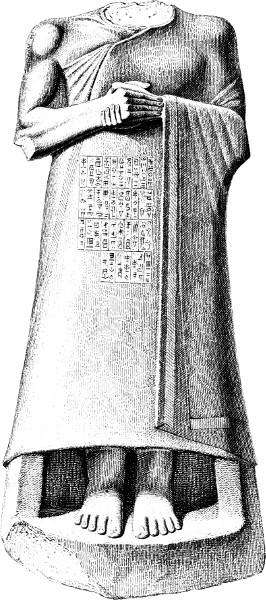
ROYAL STATUE
Louvre
J. Bourgoin, del. Imp. Ch. Chardon Sulpis, sc.
The statues of Nebo and Assurnazirpal are standing figures, but, at Kaleh-Shergat, Layard found a seated figure of Shalmaneser II. (Fig. 61).[145] It is in black basalt and has no [127]head. It is of great interest because it recalls the very oldest Chaldæan statues both in material and attitude. It has suffered so much, however, and its workmanship seems to have been so sketchy, that even in the original itself the details of modelling and costume are hardly to be recognized. We give a slight sketch of it merely to show its pose.
These statues, if they deserve such a name, show the work of the Assyrians at its feeblest; the plastic genius of the people must not be judged from them, but from the genre in which they were most at home, from the long lines of figures that stand out in various salience from the palace walls. Among the productions of this latter class that have come down to our time we find every degree of relief, from the bas-relief strictly speaking, to what is but little removed from the round.

Fig. 61.—Statue of Shalmaneser II. Height 58 inches. British Museum.
Let us begin with the bas-relief. It is with sculptures executed on this principle that the walls of temples and palaces were covered, as if with a stone tapestry. The Assyrian process is identical in principle with that afterwards adopted by the Greeks, as, on the whole, the most convenient for the purpose in view. We find no examples of the Egyptian fashion of defining the outlines of figures by a deep groove cut with the point, nor of those figures that were, so to speak, let into and modelled within the surface of the wall.[146] In both Chaldæa and Assyria the figure stands out from the bed of the relief from two or three millimetres to a centimetre, according to its size. The bed is nowhere hollowed, it is one even surface, except that where the[128] figures are very small, and consequently of very slight relief, the sculptor has reinforced them with an incised outline one or two millimetres deep. This artifice must be examined on the monuments themselves; it could hardly be shown in reproductions on a reduced scale.
Most of the great bas-reliefs have but one plane, and to this they owe the simplicity that gives them a certain nobility in spite of their monotonous design (see Vol. I. Figs. 4, 5, 6, 8, 13, 22, 23, 24, &c.). Examples of two planes, in which the figures are grouped in couples, the nearest to the spectator in each couple covering a large part of his companion, are by no means rare (see Fig. 62); we may say the same of those in which a background of trees is introduced beyond the figures (Fig. 63). This arrangement is especially frequent in the more complicated pictures, where the figures are small and numerous; but even in the last century of the Assyrian monarchy, when the sculptor showed an ever-increasing desire to draw attention and excite interest by the introduction of these picturesque details, he never quits his hold of a right instinct for the true conditions of the bas-relief. Unlike the Roman sculptors, and even those of the Renaissance, he shows no hankering after those effects that seem to get rid of the bed; he never destroys the clarity of his conception by unduly multiplying the planes. He did not understand how to put objects in perspective or manage foreshortening, and this ignorance served him well; it preserved him from the temptation into which more skilful artists are so prone to fall; it prevented him from forgetting “that the design best suited to the bas-relief is purely geometrical in its essentials.”[147]
The relief, of course, becomes higher as the size of the figures increases. It is as much as from eight to ten inches in the winged genii (Figs. 27 and 34) that accompany and divide the bulls on the decorated façades and in the gateways. Even when it is highest the salience does not go beyond what is called mezzo-relievo; that is to say, no part of the principal or accessory figure, of the genius himself or of the lion, stands out from the wall in the round, as, for instance, do the heads and limbs in the metopes of the Parthenon.
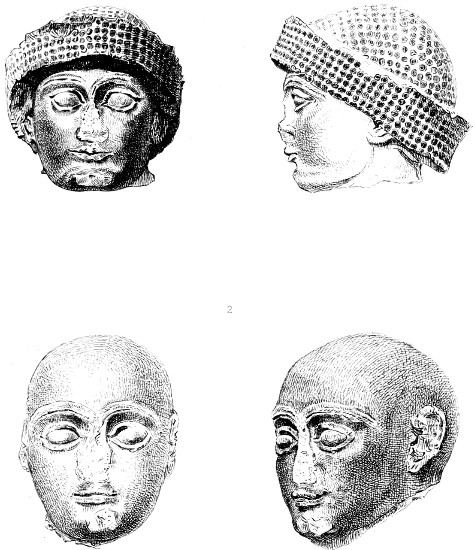
TWO CHALDÆAN HEADS
J. Bourgoin, del. Ramus sc.
Imp. Ch. Chardon
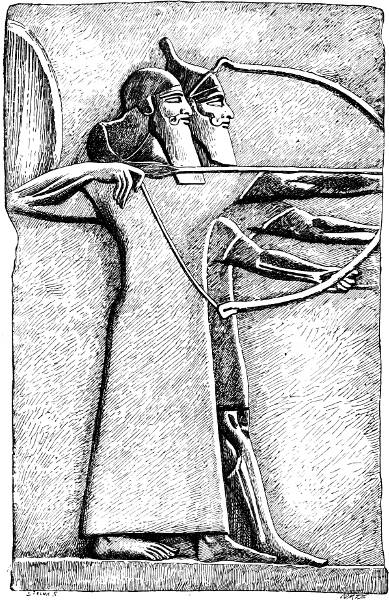
Fig. 62.—Pair of warriors. Louvre. Drawn by Saint-Elme Gautier.
The same remark holds good of the colossal figures of lions (Plate VIII.) and winged bulls (Plate IX.) which acted as guardians of the palace. We have already explained the ideas attached to these monsters by the Assyrians,[148] we shall here dwell upon some peculiarities of their execution. In these images there[130] is a compromise between “the round” and the bas-relief of a very original and peculiar character.
Looked at from in front these lions and bulls seem to be independent statues; the head, the chest, the legs stand out with as much freedom and amplitude of development as in nature; but step a little to one side, to the right or the left as the case may be, and their aspect will change. You will then see that only the fore-part of the animal is disengaged from the block of alabaster or limestone in which it is cut, the rest of the body remains imprisoned in its substance. The contours alone are indicated, in low relief, on the two sides of the ponderous slab. Thus we have half, or rather a quarter, of the statue standing out from sixteen to twenty inches in front of the slab on which the sides are shown in silhouette. It looks as if the image had made an effort to shake itself clear of the mass of stone and had only partially succeeded. We find ourselves wondering whether, if Nineveh had not perished and the development of her art had gone on without interruption, these great beasts would not have ended by conquering their liberty and winning for themselves an existence independent of the walls to which they were attached. But the nature of the material employed says no—alabaster is too soft, and the legs of the lions and bulls could not support their massive bodies without assistance.
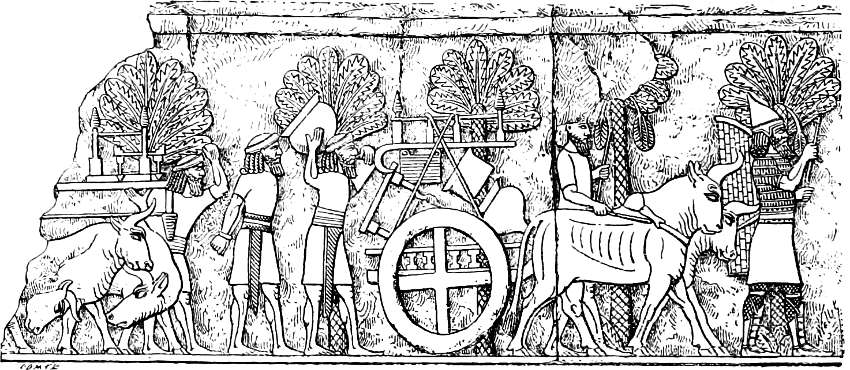
Fig. 63.—Prisoners. From the palace of Sennacherib; from Layard.
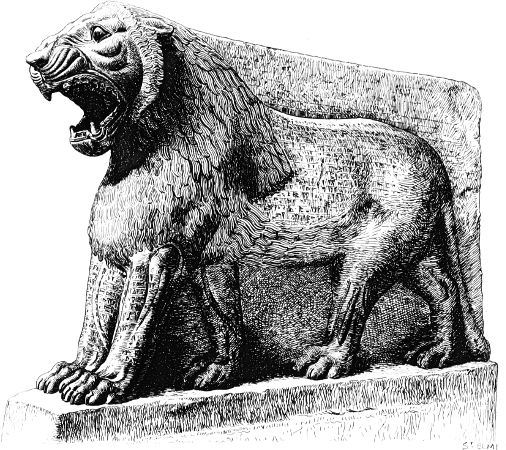
LION FROM THE PALACE OF ASSURNAZIRPAL, NIMROUD
British Museum
Saint-Elme Gautier del etsc Imp. Ch. Chardon
There are other peculiarities in these images. Looked at from in front they appear stationary, their two fore-feet being on the same plane and close together; any other arrangement would [131]have been awkward. But if we look at them from the side they appear to be walking, in which attitude alone would all the four legs be visible and clear of each other. In most cases the bulls were not parallel to the façades they decorated, but perpendicular to them;[149] they faced the visitor as he approached the gate, and it was not until he entered the passage that he got a side view of their bodies stretching along its walls (Figs. 26 and 27). Some contrivance was sought by which their figures should appear complete from both points of view, and the following expedient was hit upon. As soon as you had entered the passage between the bulls, you could, of course, no longer see more than the fore-leg nearest you; the other was hidden by it. The latter was then repeated by the sculptor and thrown back under the body of the animal, which, in the result, had five legs.
The idea is a better one than we are at first inclined to believe. More than once, perhaps, at the Louvre or the British Museum, you have paused before these colossal images, you have measured their height with your eye and admired their tranquil majesty. But have you ever noticed the artifice I have just described? To see it clearly you must choose a standpoint on the right or left front, as our draughtsman has done (Plates VIII. and IX.). If no chance has led you to such a standpoint in the first instance, if you have, as is most likely, looked at the figure first in front and then from the side, you have probably never suspected the sort of trick that the sculptor has played upon you. This contrivance is one of the distinguishing marks of Ninevite art;[150] it occurs nowhere else, unless in monuments such as those of Cappadocia, which are more or less feeble copies of Assyrian models.[151]
The conventions that remain to be noticed will not detain us so long. They are such as have been practised in all imperfect schools of art,—in all, in fact, that preceded the art of the Greeks.
[132]
Even in the greatest and most perfect schools of sculpture, the bas-relief, as if influenced by a souvenir of its origin, prefers figures in profile to those in full face. In those exceptional instances in which the Assyrians abandoned this preference, as, for example, in the decoration of entrances, they were visibly embarrassed. They did not understand how to foreshorten the feet, therefore they put the lower part of the figure in profile while the upper part faced the spectator (see Fig. 34).[152] This puts the figure in a painful and awkward attitude which could not be imitated by a living man without a violent effort, or retained for more than a second or two. It is the same when they wish to make a figure turn; the movement of the shoulders and neck is so clumsily rendered that the sculptor seems to have put on the head the wrong side foremost.[153] In general, however, the ample draperies help the artist out of his difficulties. Thanks to the veil which hides his ignorance of the attachment of limbs and the play of muscles, he succeeds in avoiding those dislocations that are so frequent in the Egyptian bas-reliefs and sometimes result in obvious deformity.[154]
When he had to render the human countenance the sculptor of Babylon or Nineveh fell into the same fault as he of Memphis; he placed a full, or nearly a full, eye in his profiles, and for the same reason.[155] This defect is not always so conspicuous as in a bas-relief from Nimroud representing a tributary of Assurnazirpal bringing two apes, one of which stands on his master’s shoulders while the other leaps before his feet (Fig. 64); but it is never absent altogether.
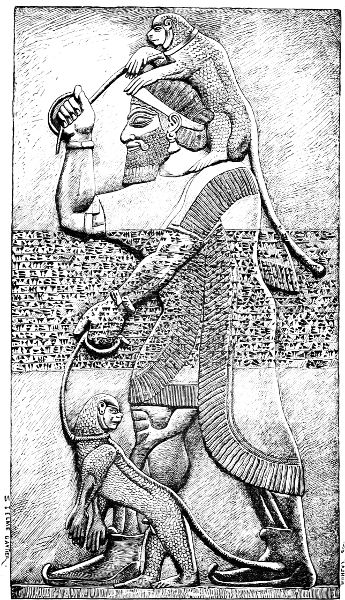
Fig. 64.—Vassal bringing monkeys. Height 8 feet. British Museum.
Drawn by Saint-Elme Gautier.
If in its fidelity to habits that we may call childish the sculpture of Mesopotamia bears a strong resemblance to that of Egypt, it is nevertheless far inferior to it in other respects. The artist never seems to have looked closely enough or with a sufficiently awakened eye to perceive the differences that distinguish one [135]individual or even one race from another; at least if he saw them he did not understand how to reproduce them; he did not even try to do so. From the very beginning—so far as we know it—the art of the Nile valley turned out portraits both of Pharaoh and of private individuals that are astonishing in their truth and life.[156] Even in those executed in a more summary fashion and not in any way to be classed as masterpieces, we find a singular aptitude in seizing and noting those peculiarities which make of every human face an unique creation, a medal of which but one example has been struck. Ethnic characteristics are given with no less truth; we have seen elsewhere how many faithful portraits they have left of the races with whom they entertained long and unbroken relations.[157]
Very few traces of this talent or disposition are to be found in the monuments of Mesopotamia. Of course in a draped school of sculpture we could hardly expect to find any great preoccupation with the various beauties of the human body. Given the Assyrian costume, it was impossible that the Assyrian artist should aspire to bring out those beauties. In many works from the Nile valley the influence of the sex, the age, and even the profession upon the development of the muscles, upon, if we may be allowed the expression, the physiognomy of the flesh, is skilfully shown in the modelling.[158] But faces were not concealed by the Assyrian draperies; why then were their distinctive marks of individuality so consistently ignored? The sculptor should have concentrated his attention upon them all the more, and so arrived at a faithful portrait. He did not do so however. Neither Assyrian nor Chaldæan had any such ambition. By a process of selection and abstraction they arrived at a kind of mean, at a certain ideal of manly beauty which served them to the end. That ideal is characterized by the abundance and symmetrical arrangement of the hair and beard, by a low forehead, heavy and strongly-arched eyebrows, a hooked and rounded nose, a small mouth with full but not too heavy lips, a strong, rounded chin, and limbs whose muscular development betrayed their vigour.
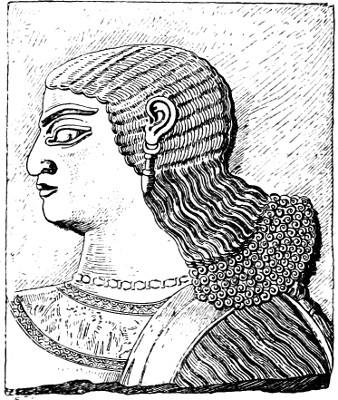
Fig. 65.—Head of a eunuch; from Layard.
The universal acceptance of this type is proved chiefly by the[136] Assyrian sculpture. The fact is that among all the thousands of figures it produced there are but two heads, the one with, the other without, a beard. We have already encountered the first in all the scenes in which the king, his ministers, his officers or his soldiers appear. It is also used for the gods (Vol. I. Figs. 13 and 15) and the winged bulls, whose heads, perhaps, like the Egyptian sphinxes, were supposed to be reproductions of the royal features. The beardless variety seems, in the royal processions, to be confined to those eunuchs who have always played such an important part at Oriental courts (Vol. I. Figs. 23 and 24, and Vol. II. Plate X.); the fleshy heaviness of their cheeks and necks (Fig. 65) has been thought to confirm this idea. But we should be mistaken if we recognized these miserable beings in all the beardless figures. The latter are so numerous in some compositions that no such explanation is admissible. In many instances they seem to represent people of the lowest class, peasants, labourers, and slaves (see Vol. I. Figs. 45, 151, 152, and Vol. II. Figs. 44 and 48). As the oldest sculptures of Chaldæa suffice to prove, the habit of wearing the hair and beard long did not date from the earlier years of that country. In those sculptures we find heads completely shaved. It is possible that the ancient custom was changed when the formidable army to [137]which Assyria owed its power and fortune was created. The beard may then have become, as the moustache used to be with us, a sign of the military caste. We never find soldiers or their officers without it;[159] but their hair and beards are shorter than those of the king and his ministers (Fig. 66); they do not fall upon the chest and shoulders in several rows of curls carefully arranged.[160] In the reliefs the amplitude and length of the beard are always a sign of the highest rank.
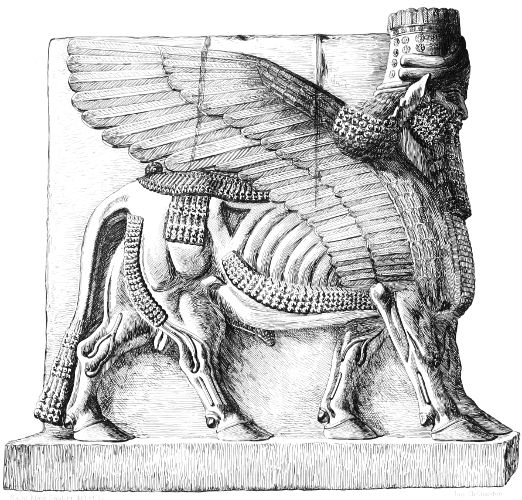
WINGED BULL
FROM KHORSABAD
Louvre
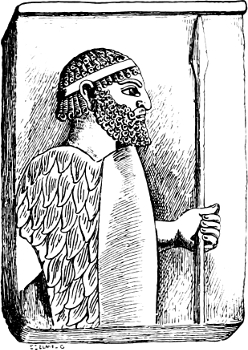
Fig. 66.—Assyrian soldier; from the Louvre. Height of slab 2 feet.
The temples, the forehead, and the nape of the neck were lost under this abundant hair, while the beard covered all below the cheek-bones and the tiara the top of the head. Beyond the nose and eyes there was hardly anything left by which one individual could be distinguished from another. Now the Assyrian race[138] was a race in the proper sense of the word; it was homogeneous and pure-blooded. Between one member and another of the aristocracy that reigned and fought, these two features would vary little. All their noses were more or less aquiline, all or nearly all their eyes large and black. The national fashion of wearing the hair would suppress many of the characteristics by which we know one man from another. From all this it results that the crowd of kings and nobles who furnished the sculptor with his favourite theme are vastly like each other. This similarity or rather uniformity was ill calculated to awaken the sense of portraiture in the artist. The features that distinguished one king from another are slurred over by the sculptor simply because they were in reality so lightly marked that he hardly perceived their existence.
PLATE V
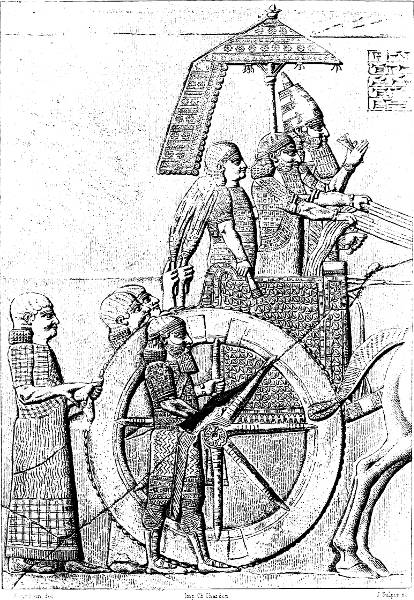
J.Bourgoin del. Imp.Ch.Chardon. J.Sulpis.sc.
ASSURBANIPAL IN HIS CHARIOT
FROM KOUYUNDJIK
Louvre
We know that this opinion is not shared by all those who have busied themselves with the Assyrian monuments. It has been said and, in the belief of some, proof has been given, that we possess the elements of an Assyrian iconography, that the images of the kings, in the steles and on the palace walls, are true and faithful portraits.[161] We believe this to be a mistake. No doubt the proportions of the body, the expression of the face, and the general lines of the profile, are not the same for Assurnazirpal, Sargon, and the sons and grandsons of that prince. But what must we conclude from that? Only that Assyria did not escape, any more than Egypt, from the action of that law of change which is the very condition of life; that from one century and one reign to another the taste and execution of the Assyrian sculptors were modified, though in a very feeble degree. Thus figures are shorter and more thickset in the north-western palace at Nimroud than at Khorsabad or Kouyundjik; they are finer in their proportions, more graceful, and altogether better in their art under Assurbanipal than under his grandfather, the founder of the dynasty. Art, as we shall bring abundant evidence to prove, followed the same path at Nineveh as everywhere else. This is not to be denied; but before the hypothesis against which we contend can be accepted, its advocates must show that, in each [139]series of monuments, the king is to be distinguished by his personal features from the people about him. You must not take the evidence of drawings or even of photographs; you must examine the originals themselves. This I have done with the most scrupulous attention both in the British Museum and the Louvre. I have carefully examined and compared the four great series of royal bas-reliefs that have come down to us, belonging respectively to Assurnazirpal, Sargon, Sennacherib, and Assurbanipal. If such an examination be made without prejudice, I am satisfied that only one conclusion can be come to. In all the pictures dating from one reign the king himself differs not at all from his officers and nobles; he is only to be recognized by his lofty tiara, an ornament that he alone had the right to wear, by his sceptre or some other attribute of the kind, by his richer costume, and, finally, by his greater stature. The sculptor always makes him taller than his subjects, still more than his enemies and captives (Vol. I. Fig. 22, and Fig. 15 above). This latter proceeding seems childish, but it is so natural, and is found in so many countries, that it is not at all astonishing. The sculptor has counted upon all these attributes to show, at a glance, which is the king; and they are, in fact, of a nature to prevent any chance of a mistake. He has not troubled himself to seek in his royal features for something by which he might be distinguished from the people about him. Winged genii, king and viziers, all have the same eye, the same nose and the same mouth. One would say that for each group of bas-reliefs the original designer only drew one head, which was repeated by tracing or some other process as often as there might be heads in the composition, and that it was afterwards carved and modelled in the alabaster by the chisel of the journeyman.
No, in spite of all that has been said, the Assyrians made no portraits. They did not even attempt to mark in any precise fashion, those physical characteristics by which they themselves were so sharply divided from many of the races by whom they were surrounded. Among the numerous peoples that figure in the sieges and battles that cover the palace walls, although some, like the Chaldæans, the Jews, and the Syrians, were near relations of their own, others belonged either to the Aryan or Turanian family; but any one who will examine the reliefs as we have done, will see that all the prisoners of war and other vanquished enemies[140] have the same features as their conquerors.[162] The only exception to which we can point is in the case of certain bas-reliefs of Assurbanipal in which the episodes of an expedition into Susiana are retraced. There we can perceive in some of the figures—by no means in all—an endeavour on the part of the sculptor to mark the difference of race otherwise than by details of costume and head-dress. Here and there we find a head that suggests a negro;[163] but his characteristics are never as clearly marked as in Egypt. This may be merely the result of caprice on the part of some individual artist who has amused himself by reproducing with the edge of the chisel some head which had struck his fancy; but even here we only find one profile several times repeated. The modelling is far from searching, but wherever the work is in fair condition and the scale not too small the character we have described may be easily distinguished. The only differences over which the Assyrian sculptors naturally troubled themselves were those of costume and equipment; thus we find them recording that the people subdued in one of the expeditions of Sennacherib wore a crown or wreath of feathers about their heads (Fig. 48).[164] So, too, in the relief of a man with apes, the foot-covering, a kind of buskin with upturned toes (Fig. 64), should be noticed. But the lines of his profile remain unchanged; and yet there can be no doubt that the sculptor here meant to represent a man of negro race, because, as Layard, who dug up the monument, tells us, traces of black paint might be distinctly perceived upon the faces of this man and his companions.[165] On a Babylonian stele that we have already figured (Fig. 43), some have attempted to recognize a Mongol type, and thence to confirm the hypothesis that would make a Turanian race the founders of the Chaldæan civilization. This, too, we think a mistake.[166]
[141]
At first sight this curious monument surprises those who are accustomed to Assyrian art, but the nature of the material has not a little to do with that. The hardness and darkness of basalt affect the treatment of the sculptor in quite a different way from a gypseous stone like alabaster. Add to this that the proportions are quite unlike those of the Ninevite reliefs. This Marduk-idin-akhi is a work of the ancient school, which made its figures far shorter than those of such Assyrian reliefs as have come down to us. Finally the head-dress should be noticed. In place of being conical it is cylindrical, a form which overweights the figure and shortens its apparent proportions. On the whole, any one looking at this stele without bias on one side or the other, will, we think, acknowledge that the type it presents is the same as the figures at Nimroud, Khorsabad, and Kouyundjik. It is, moreover, identical with that we see in monuments even older than this royal Babylonian stele, such as the fragmentary relief found by M. de Sarzec at Sirtella (Fig. 67).
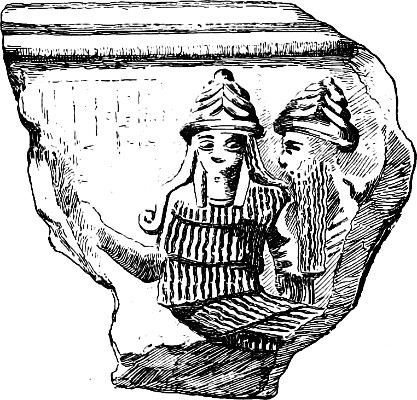
Fig. 67.—Fragment of a Chaldæan bas-relief. Louvre. Limestone. Height 3¾ inches.
The type which crops up so often in the pages of this history was fixed, in all its main features, in the earliest attempts at plastic art made by the Chaldæans. By them it was transmitted to their scholars, the Assyrians, and during long centuries,[142] until the fall of Nineveh and Babylon, the painters and sculptors of Mesopotamia, from the shores of the Persian Gulf to the foot of the mountains of Armenia, did not cease to reproduce and perpetuate it, I might say to satiety; they reproduced it with infinite patience, and, so far as we can see, without once suspecting that the human visage might sometimes vary its lines and present another aspect.
In the preceding pages our chief aim has been to determine the nature and the mode of action of the influences under which the Assyro-Chaldæan sculptor had to do his work. We have explained how certain conditions hampered his progress and in some respects arrested the development of his skill.
The height to which the plastic genius of this people might have carried their art had their social habits been more favourable to the study of the nude, may perhaps be better judged from their treatment of animals than anything else. Some of these, both in relief and in the round, are far superior to their human figures, and even now excite the admiration of sculptors.
The cause of this difference is easily seen. When an artist had to represent an animal, his study of its form was not embarrassed by any such obstacle as a long and heavy robe. The animal could be watched in its naked simplicity and all its instinctive and characteristic movements grasped. The sculptor could follow each contour of his model; he could take account of the way in which the limbs were attached to the trunk; he saw the muscles swell beneath the skin, he saw them tighten with exertion and relax when at rest. He was not indifferent to such a sight; on the contrary, he eagerly drank in the instruction it afforded, and of all the works he produced those in which such knowledge is put into action are by far the most perfect; they show us better than anything else how great were his native gifts, and what a fund of sympathy with the beauties of life and with its inexhaustible variety his nature contained. Whether he model an animal separately or introduce it into some historic scene, it is always well rendered both in form and movement.
[143]
This is to be most clearly seen in the rich and varied series of Assyrian reliefs, but the less numerous works of the same kind of Babylonian origin show the same tendency and at least equal talent. In copying the principal types of the animal world with fidelity and vigour, the Assyrian sculptors only followed the example set them by their south-country masters.
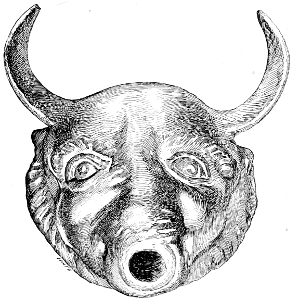
Fig. 68.—Head of a cow, bronze. British Museum. Width across the cheeks 3¾ inches.
A cow’s head in bronze, which was brought from Bagdad by Mr. Rassam, is broad in treatment and of great truth (Fig. 68); the same good qualities are to be found in a terra-cotta tablet found by Sir Henry Rawlinson in the course of his excavations in the Birs-Nimroud (Fig. 69). It represents a man, semi-nude and beardless and with a stout stick in his hand, leading a large and powerfully made dog by a plaited strap. It is a sort of mastiff that might be used for hunting the wild beasts in the desert and marshes, the wild boar, hyena, and panther, if not the lion. The characteristics of the species are so well marked that naturalists have believed themselves able to recognise it as[144] that of a dog which is still extant, not in Mesopotamia indeed, but in Central Asia.[167] We may seek in it for the portrait of one of those Indian hounds kept, in the time of Herodotus, by the Satrap of Babylon. His pack was so numerous that it took the revenues of four large villages to support it.[168]
Similar subjects were represented upon other tablets of the same origin. One of them shows a lion about to devour a bull and disturbed by a man brandishing a mace. Nothing could be more faithful than the action of the animal; without letting go his prey he raises a paw, its claws opened and extended and ready to be buried in the side of the rash person who interrupts his meal.[169]

Fig. 69.—Terra-cotta tablet. British Museum. Height 3⅗ inches.
We may also mention a cylinder which, from its style, M. Ménant does not hesitate to ascribe to the first Chaldæan monarchy. It represents two oxen in a field of wheat. The latter, by a convention that also found favour with the Greeks, is indicated by two of those huge ears that so greatly astonished Herodotus.[170] Was it on a similar principle that the Chaldæan engraver gave his oxen but one horn apiece? In spite of this singularity and the peculiar difficulties offered by work in intaglio on a very hard material, the forms are well understood, and[145] the artist has not been content to give them merely in outline. At the croup and under the belly an effort has been made to model the figure and to mark its thickness.
Judging from their style and inscriptions, several more of these engraved stones may be ascribed to the oldest Chaldæan schools of art, but we are satisfied with again reminding our readers that it was in Lower Mesopotamia that everything had its beginning. We shall take our remaining examples from the richer deposits of Assyria.
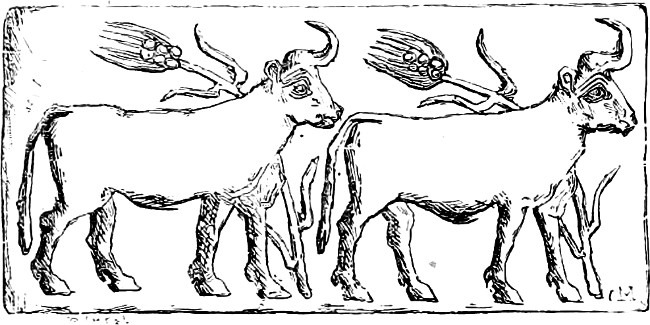
Fig. 70.—Cylinder of black marble. National Library, Paris.
Among all those animals that attracted the attention of man either by their size or strength, either by the services they rendered or the terror they caused, there were none that the chisel of the Assyrian sculptor did not treat and treat with taste and skill. With their passion for the chase the kings and nobles of Assyria were sure to love dogs and to train them with scrupulous care.[171] They did more. They employed sculptors in making portraits of them. In the palace of Assurbanipal terra-cotta statuettes of his best dogs have been found (Fig. 71). They belong to the same race as the Chaldæan mastiff above mentioned, but their strength, their fire, I might almost say their ferocity, is better shown in those pictures where they are no longer in a state of repose, but in movement and action. Look at the series of slabs representing the departure for the chase. The hounds are held in the leash by attendants who carry bags on their shoulders for the smaller game (see Fig. 72). Mark the tightened[146] cord, the straining bodies, the tension of every muscle in their desire to get at their quarry! We can almost fancy we hear the deep, confused bayings with which they prelude the regular music of the hunt itself when the game is afoot. These animals are represented with no less truth and vivacity when a kill has taken, or is about to take, place. As an example of this we may point out a relief from the same palace in which two of these bloodhounds launch themselves upon a wild ass whose flight has been arrested by an arrow. The ass still manages to stagger along, but he will not go far; the hounds are already upon him and have buried their teeth in his flanks and croup.[172]
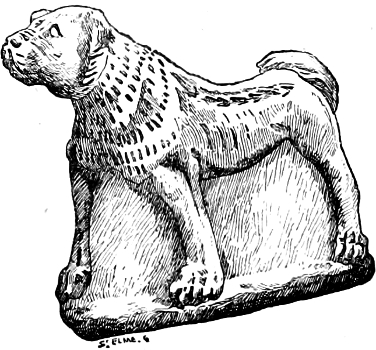
Fig. 71.—Terra-cotta dog. British Museum. Height 2⅖ inches.
Other domestic animals are figured with no less sure a hand; to each is given the proportions and attitudes that really characterise it. We shall now study them all in succession; others have done so, and have found much precious information upon the fauna of Western Asia and upon the state of Mesopotamian civilization;[173] we shall content ourselves with mentioning the principal types and those in which the sculptor has shown most skill.
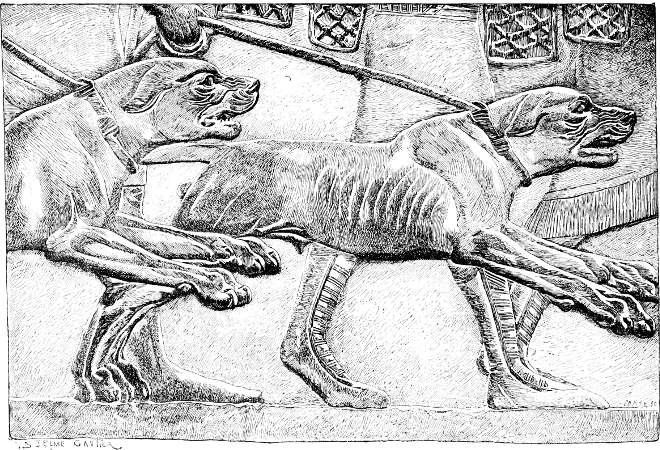
Fig. 72.—The hounds of Assurbanipal. British Museum. Height 26 inches. Drawn by Saint-Elme Gautier.
The colossi of the gateways have already given us an opportunity for showing how art enlisted the powerful limbs and natural majesty of the bull in its service. Elsewhere the bovine race occupies a less important part in Assyrian sculpture than in that [149]of Egypt, in whose tombs scenes of agricultural art are of such constant occurrence. We find, however, the wild bull,[174] which the kings of Calah hunted in the neighbouring desert (Fig. 15), and the draught ox, which, after a lucky raid, the terrors of Asia drive before them with their prisoners and other booty (Vol. I. Fig. 30).[175]—We may also point to the heifer’s head in ivory which acts as tail-piece to the third chapter of our first volume. We sometimes find also sheep and goats of both sexes (Fig. 54);[176] but of all the animals that have close relations with man, that which occurs most often on the palace walls is the horse. They did not use him as a beast of burden; it was the mule that was used for drawing carts (Vol. I. Fig. 31), for carrying women and children and merchandise (Vol. I. Figs. 30 and 115). As with the Arabs of to-day, the horse was reserved for war and hunting. But the Assyrians were not, like the Egyptians, content to harness him to the chariot; they rode him as well. Their armies comprised a numerous and well-provided cavalry; and the Assyrian artist drew the horse a great deal better than his Egyptian confrère.
The horses we meet with in the Assyrian sculptures are of a heavier breed than Arabs; they are generally shorter and more thickly set. Travellers believe the breed to still exist in the horses of Kurdistan, a country which was bordered by ancient Assyria and dependent upon it.[177] The head is small, well-formed, and well-carried (Fig. 73), the shoulders sloping, the neck and limbs well set on, and the muscles strongly marked. We have already had occasion to figure horses at full speed (Vol. I. Fig. 5), standing still (Vol. I. Figs. 67 and 115), and proceeding at a slow pace (Figs. 21 and 31).[178] No observer can avoid being[150] struck by the truth of attitude, and movement given by the Assyrian sculptor to horses both driven and mounted. Nowhere is this merit more conspicuous than in one of those bas-reliefs of Assurbanipal that figure the episodes of a chase of wild asses (Fig. 74).
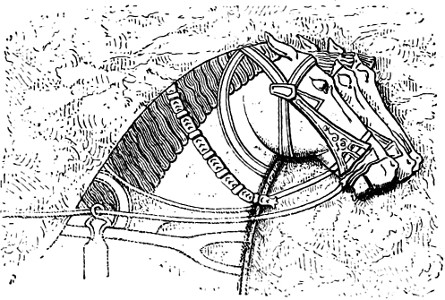
Fig. 73.—Chariot horses; from Layard.
Contrary to their usual habits the herd have allowed themselves to be surprised. One of those armies of beaters who are yet employed by eastern sovereigns on such occasions, has driven them upon the hunters. The latter, preceded by their dogs, throw themselves upon the herd, which breaks up in all directions. They pierce those that are within reach with their arrows; those that do not fall at once are pursued and brought down by the hounds. We cannot reproduce the whole scene,[179] but we doubt whether there is any school of animal painters that has produced anything more true to nature than the action of this poor beast stopping in the middle of his flight to launch futile kicks at his pursuers.
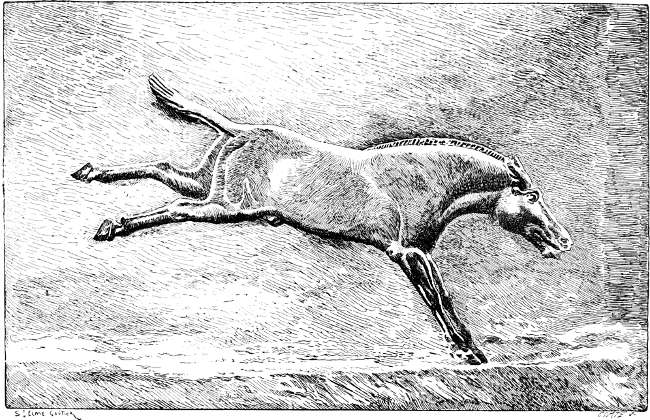
Fig. 74.—Wild ass. From the hunt of Assurbanipal, in the British Museum. Drawn by Saint-Elme Gautier.
The ibex and the wild goat figure in the same sculptured pictures. One marching in front of the herd turns and anxiously sniffs the wind, while her companion quietly browses by her side; farther off, two kids trot by the side of their mother. The alarm has not yet been given, but upon the next slab the artist shows the headlong flight that follows the discovery of the enemy. Naturally it is the wild and domestic animals of Mesopotamia and[151] the districts about that are most commonly figured in these reliefs, but the sculptor also took advantage of every opportunity and pretext for introducing into his repertory those rare and curious animals which were only seen in Nineveh on rare occasions.[152] Thus the camel that we find in so many pictures is the same as that which now occupies the same region and marches in its slow caravans;[180] but on the obelisk of Shalmaneser we find the double-humped Bactrian camel (Fig. 49).[181] The clumsy tribe of the pachyderms is not only represented by the wild boars that still have their lairs in the marshes of the lower Euphrates;[182] the rhinoceros and the Indian elephant also occur on the obelisk (Vol. I. Fig. 111).[183] The apes shown in our Fig. 64 also seem to belong to an Indian species.[184]
The sculptor was not always as happily inspired by these exotic animals as by those of his own country, and in that there is nothing surprising. He only caught a passing glimpse of them as they defiled, perhaps, before the people in some triumphal procession. On the other hand, the fauna of his native land were known to him through long habit, and yet his reproductions of the elephant and the dromedary are very good, much better than those of the semi-human ape. His idea of the rhinoceros is very faulty; the single horn planted on the nose leaves no doubt as to his meaning, but the lion’s mane with which the animal’s back is clothed has never belonged to the rhinoceros. The artist may have worked from a description.
In these pictures birds hold a very secondary place; Assyrian sculpture was hardly light enough of hand to render their forms and feathers. For such a task, indeed, painting with its varied handling, its delicate lines and brilliant colours is required. It was with the brush that the Egyptians succeeded, in the frescoes of their tombs, in figuring the principal birds of the Nile Valley with all their elegance of form and brilliant variety of plumage. In Assyria, among a nation of soldiers and in an art whose chief[153] inspiration had to do with war, the only bird we find often reproduced is the eagle, the symbol of victory, who floats over the chariot of the king, and the vulture who devoured where they fell the bodies of the enemies of Assyria; and even these images are rather careless and conventional, which may perhaps be accounted for by their partially symbolic character and their frequent repetition.[185] A group of partridges rising and, in those sculptures of the later Sargonids in which the artists show a love for picturesque detail, birds hopping in the trees or watching over their nestlings, have been mentioned as showing technical excellence of the same kind as the hunting scenes.[186] The ostrich appears on the elaborate decorations of the royal robes (Fig. 75) and upon the cylinders (Fig. 76). Perhaps it was considered sacred.
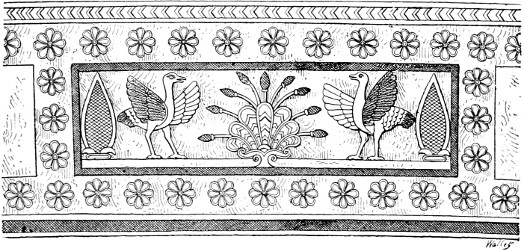
Fig. 75.—Embroidery on the king’s robe; from Layard.
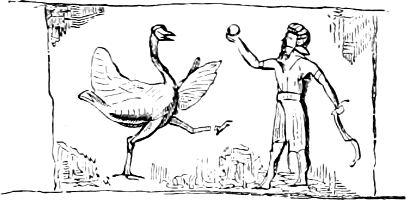
Fig. 76.—Fight between a man and an ostrich. Chalcedony. National Library, Paris.
[154]
As for fishes, crabs, and shells, these were scattered broadcast over the watercourses in the reliefs, but they are never studied with any great care (see Vol. I., Figs. 34 and 157), nor is any attempt made to distinguish their species. They seem to have been introduced merely as hints to the spectator, to dispel any doubt he may entertain as to the meaning of those sinuous lines by which the sculptor suggested rivers and the sea. Where these indications are not given we might indeed very easily mistake the artist’s intention (see Vol. I., Figs. 38 and 71).
Some of the animals in the Assyrian reliefs are then nothing but determinative signs, a kind of pictorial gloss. Of these it will suffice to mention the existence. Their forms are so much generalized that they offer no matter for study. On the other hand, our best attention should be given to those figures whose modelling has strongly interested the artist, who has taken a lively pleasure in reproducing their various aspects and in making them live again in all the originality of their powerful and exceptional natures. In this respect the lion deserves particular notice. He interested the Assyrian sculptors more profoundly than any other animal and they devoted extraordinary attention to illustrating his various attitudes and characteristics. One is inclined to believe that the more skilful among them chose a lion for treatment when they wished to display all the talent they possessed and to gain a reputation for complete mastery of their art.[187]
Here we find the great beast stretched carelessly upon the ground, full of confidence in his strength and careless of danger (Plate XI.); there he rises to his feet and advances ready to collect himself and spring upon any threatening enemy or passing prey (Plate VIII.). We sometimes find both these motives united, as in a bas-relief of Assurbanipal, which is unfortunately mutilated (Fig. 77). Here a lioness is stretched upon the ground, her head upon her forepaws and her tail outstretched behind her, in a favourite attitude of very young cats. The lion stands upright before her in a proud, extended attitude like that of the colossal lion from Nimroud (Plate VIII.); his head and the hind parts of his body are unfortunately missing.
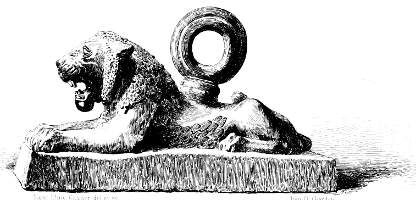
BRONZE LION
FROM KHORSABAD
Louvre
[155]
Elsewhere we find the lion cautiously emerging from a stoutly-built timber cage (Fig. 78). He has been captured in a net or snare and shut up in this narrow prison until the day of some great hunt.[188] When that arrives the door is raised at a given signal by a man perched on the top of the cage and protected by a timber grating. In spite of this defence the service would hardly be free from danger but that the lion is too pleased to find himself at liberty to look behind him.[189]

Fig. 77.—Lion and lioness in a park. British Museum.
[156]
The lion finds himself confronted by the Royal huntsman who fights, as a rule, from his chariot, where two or three companions, chosen from his bravest and most skilful servants, are ready to lend him help if necessary. The British Museum possesses a great number of sculptured pictures in which every incident of the hunt is figured up to its inevitable end. We reproduce two figures from the slabs representing the great hunt of Assurbanipal. The first shows a huge lion mortally wounded by an arrow which still stands in his body. It has transfixed some great vessel, and the blood gushes in a wide torrent from his open mouth. Already the chills of death are upon him and yet with his back arched, and his feet brought together and grasping the soil, he collects his energies in a last effort to prevent himself rolling over helplessly on the sand.
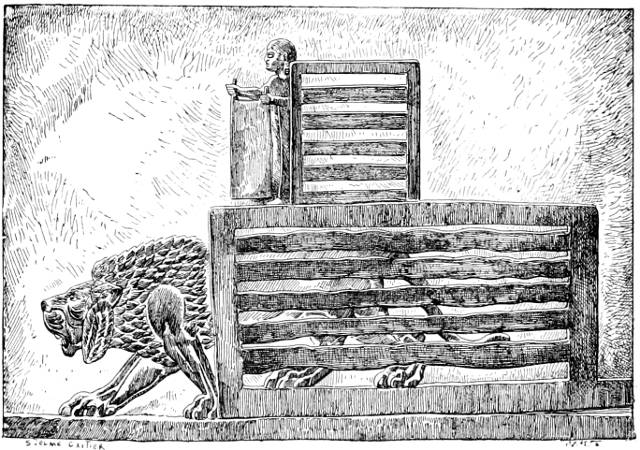
Fig. 78.—Lion coming out of his cage. Height of relief about 22 inches. British Museum.
Drawn by Saint-Elme Gautier.
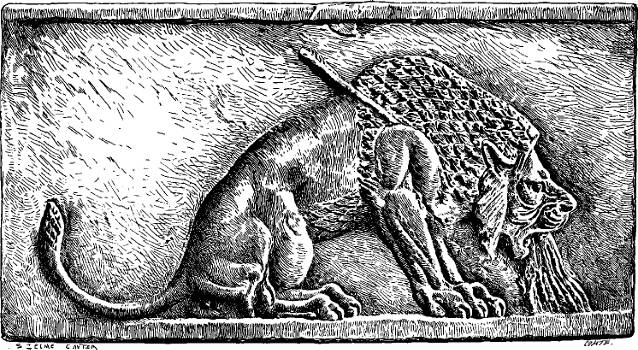
Fig. 79.—Wounded lion. Height of slab about 22 inches. British Museum. Drawn by Saint-Elme Gautier.
Still more expressive, perhaps, and more pathetic, is the picture of a lioness struck down by the same hand, but in a different fashion (Fig. 80). One of three arrows that have reached her has transfixed the spinal column at the loins. All the hinder part of the body is paralysed. The hind feet drag helplessly on the ground, while the poor animal still manages for a moment to support [159]herself on her fore paws. She still faces the enemy, her half opened jaws are at once agonised and menacing, and, as we gaze upon her, we can almost fancy that we hear her last groan issue from her dying lips.
We might multiply these examples if we chose, but the two fragments we have reproduced will, we hope, send our readers to the British Museum to see the Hunt of Assurbanipal for themselves. In any case they are enough to prove that the Assyrian sculptor studied the lion from nature. He was not without opportunities. He was, no doubt, allowed to assist at those great hunts of which he was to be the official chronicler. He there saw the king of beasts throw himself on the spears of the footmen or fly before the arrows of the charioteers, and break the converging line of beaters; he saw him fall under his repeated wounds and struggle in his last convulsions. Later on he could supplement his recollections, he could complete and correct his sketches by the examination of the victims.[190] At the end of the day the “bag” was displayed as it is now at the end of a modern battue, when the keepers bring pheasants, hares and rabbits, and lay them in long rows in some clearing or corner of the covert. In one of the Kouyundjik reliefs we see the king standing before an altar and doing his homage to the gods after the emotions and dangers of a hunt that was almost a battle.[191] He seems to pour the wine of the libation upon four dead lions, which his attendants have arranged in line upon the ground.
There must also have been tame lions in the palaces and royal parks. Even now they are often to be met with in that country, under the tent of the Arab chief or in the house of the bey or pacha.[192] When captured quite young the lion is easily educated,[160] and, provided that his appetite is never allowed to go unsatisfied, he may be an inoffensive and almost a docile companion until he is nearly full grown. We are ready to believe that the lion and lioness shown in our Fig. 77 were tame ones. The background of the relief suggests a park attached to the royal residence, rather than a marsh, jungle or desert. Vines heavy with fruit and bending flowers rise above the dozing lioness; we can hardly suppose that wild animals could intrude into such a garden. It follows, then, that the artist could study his models as they moved at freedom among the trees of the royal demesne, basking idly in the sun or stretching themselves when they rose, or burying their gleaming teeth on the living prey thrown to them by their keepers.
Thanks to such facilities as these the Ninevite sculptors have handed down to us more faithful reproductions of the lion than their more skilful successors of Greece or Rome. For the latter the lion was little more than a conventional type from which ornamental motives might be drawn. Sometimes no doubt they obtained very fine effects from it, but they always considered themselves free to modify and amplify, according to the requirements of the moment. Thus they were often led to give him full and rounded forms, which had a beauty of their own but were hardly true to nature. The Assyrian never committed that fault. He knew that the great flesh-eating beasts never grew fat, that they were all nerve and muscle, without any of those adipose tissues which reach so great a development in herbivorous animals, like the sheep or ox, or those that eat anything that comes, like the pig. Look at the bronze lion from Khorsabad figured in our Plate XI., and see how lean he is at the croup in spite of the power in his limbs, and how the bones of his shoulder and thigh stand out beneath the skin.
This characteristic is less strongly marked in the bas-reliefs, which hardly enjoy the same facilities for emphasising structure as work in the round. On the other hand the other features of the leonine physiognomy are rendered with singular energy. Anything finer in its way than the head of the colossal lion from Nimroud figured in our Plate VIII. can hardly be imagined.
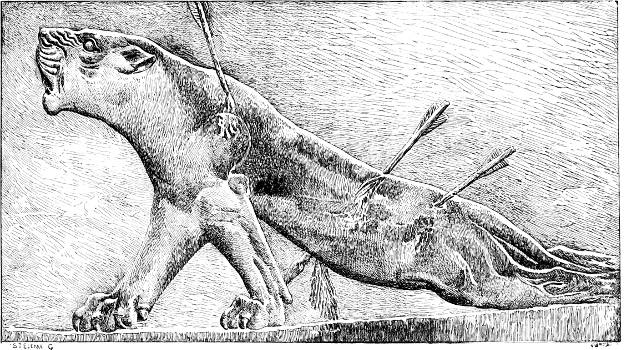
Fig. 80.—Wounded lioness. Height of slab about 15 inches. British Museum. Drawn by Saint-Elme Gautier.
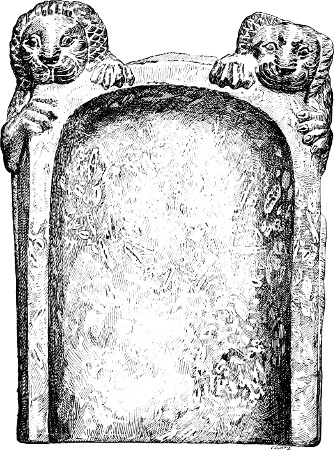
Fig. 81.—Niche decorated with two lions. Height 6½ inches. British Museum.
Drawn by Saint-Elme Gautier.
Seeing how familiar they were with this animal, the artists of Mesopotamia could hardly have failed to employ him as a motive in ornament. In such a case, of course, they did not insist so [163]strongly upon fidelity to fact as in the historical bas-reliefs, but whether they made use of his figure as a whole or confined themselves to the head or paws, they always preserved the true character and originality of the forms. This may be clearly seen in an object belonging to the British Museum (Fig. 81). We do not exactly know where it was found and we cannot say what may have been its use. It is a kind of shallow niche cut from a fossiliferous rock.[193] It is hardly deep enough to have sheltered an idol or statuette of any kind. But whatever it may have been[164] nothing could be more natural than the action of the two lions that show themselves at the two upper angles. They hang tightly to the edge of the stone with their extended claws, giving rise to a happy, piquant, and unstudied effect. The scabbard in our next illustration is no less happily conceived; the lions at its foot who seem about to climb up the sheath with the playfulness of kittens, should be noticed (Fig. 82). Again, we find the lion introduced into those embroideries on the royal robes of which we have already had occasion to speak. In the example figured here (Fig. 83) he is fighting an animal whose feet and legs are those of a bull, although its stature is greater and its form more slender than those of the antelope. It appears to be a unicorn, a fantastic animal that has always played a great part in oriental fables.

Fig. 82.—Sword and scabbard. From a Khorsabad bas-relief. Louvre.
The lion’s head with its powerful muscular development, its fine mouth, and picturesque masses of floating hair, has often furnished ceramists, gold and silversmiths, and art workmen of every kind with motives for use upon their creations. A fine example of this is reproduced on the title-pages of these volumes. It belongs to the Luynes collection in the French National Library. The material is gold, and a small staple attached to the neck shows that it once belonged to some object now lost. Our reproduction is of the same size as the original. In spite of its small dimensions its workmanship is no less remarkable for freedom and nobility of style than the colossal head from Nimroud. Something of the same qualities but with more finish in the details is to be found in a terra-cotta fragment covered with a green glaze which now belongs to the collection in the Louvre. These objects, which have come down to us in considerable numbers, must have been used as applied work, in the decoration[165] of vases, utensils, and other small pieces of furniture (Fig. 84). The object figured at the end of the last chapter belongs to the same class. There is a hollow or mortice in its base by which it was attached to some knife or poignard to form its handle.
The lion’s paw was used in the same fashion and no less often. Its expressive form and the elegant curves of its claws are found on numerous altars, tables, and thrones (Vol. I., Fig. 168; and above, Fig. 47).[194]

Fig. 83.—Combat between a lion and a unicorn. From Layard.
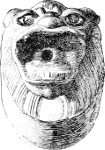
Fig. 84.—Lion’s head in enamelled earthenware. Louvre. Actual size.
Drawn by Saint-Elme Gautier.
We find the same truth of design in many small earthenware articles, even when they reproduce a type less interesting and less majestic than that of the lion. A good instance of this is afforded by the goat of white earthenware covered with a blue[166] glaze which was found at Khorsabad by Place (Fig. 85). It is but a sketch. The modeller has not entered into any details of the form, but he has thoroughly grasped its general character. The terra-cottas properly speaking, those that have received no glaze or enamel, are, as a rule, less carefully executed, but even in them we can perceive, though in a less degree, the certainty of eye, the same promptitude in seizing and rendering the special physiognomy of an animal. We feel this very strongly in what is by no means the work of a skilful modeller, the dog figured below (Fig. 86). The head and fore quarters of one of the mastiffs of the bas-reliefs may here be recognized (see Fig. 72).
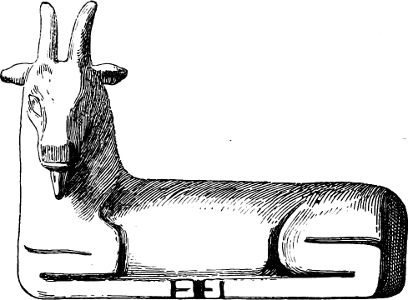
Fig. 85.—Recumbent goat. Enamelled earthenware. Actual size.
Drawn by Saint-Elme Gautier.
The same desire for precision, or rather comprehension, of form, is to be found even in those imaginary beings which the artists of Chaldæa and Assyria took such pleasure in multiplying. Although in their fantastic creations they brought together features belonging to animals of totally different classes, they made a point of drawing those features with the greatest precision. This is well illustrated by an object in the Luynes collection (Fig. 87). Nowhere is the arbitrary combination of forms having nothing in common pushed farther than here. A ram’s horns grow on a bull’s head, which, again, has a bird’s beak; the body, the tail, the fore paws are those of a lion, while the hind legs and feet[167] and the wings that spring from the shoulders are borrowed from the eagle.[195]
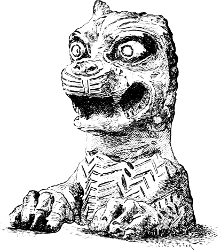
Fig. 86.—Dog. Terra-cotta. British Museum. Height about 5 inches.
Drawn by Saint-Elme Gautier.
We have already described the most remarkable of all these composite types, the man-headed bull and lion; we have attempted to explain the intellectual idea which gave them birth; we have yet to point out a variety which is not without importance. The lion has sometimes been given, not only the head, but also the arms and bust of a man. In one of the entrances to the palace of Assurbanipal there was a colossus of this kind (Vol. I., Fig. 114).[196] With one arm this man-lion presses against his body what seems to be a goat or a deer, while the other, hanging at his side, holds a flowering branch. This figure, like almost[168] all of those found in the doorways, is winged. Another example of the same type is to be found in a bas-relief of Assurbanipal; it is, however, simplified, and it looks, on the whole, more probable (Fig. 88). The wings have disappeared; there are but two natures to be joined, and the junction seems to be made without effort; the lion furnishes strength and rapidity, the man the various powers of the arm and hand, and the beauty of the thinking and speaking head. The divine character of the personage thus figured is indicated by the three pairs of horns bent round the dome-like tiara, and also by the place he occupies in the inferior compartment of a relief on which, at the top, appear those lion-headed genii we have already figured (Vol. I., Fig. 6).
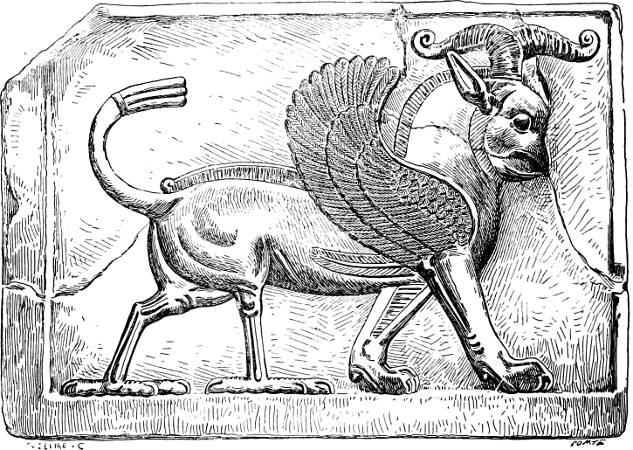
Fig. 87.—Fantastic animal. National Library, Paris. Height 5¼ inches.
Drawn by Saint-Elme Gautier.
In this last composition we have a foretaste of the centaur. Replace the lion by a horse and the likeness is complete. Even now it is very great. At the first moment, before we have time to notice the claws and divided toes, we seem to recognize the fabulous animal of the Greeks upon the walls of an Assyrian palace.
[169]
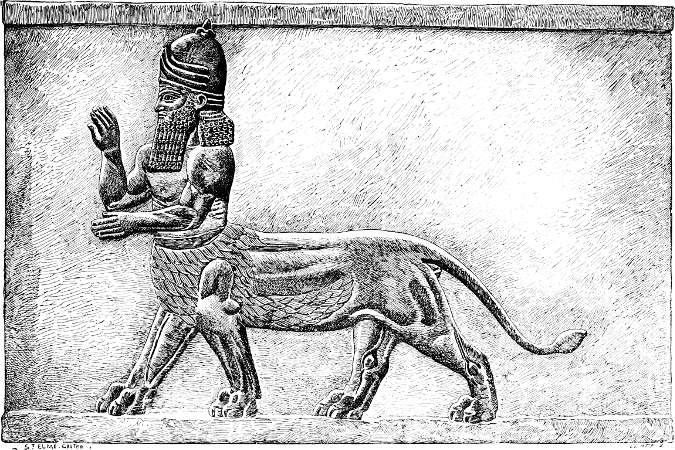
Fig. 88.—Man-lion. British Museum. Height about 27 inches. Drawn by Saint-Elme Gautier.
[171]
Another composite animal familiar to the imaginations both of Greeks and Mesopotamians was the winged horse, the Hellenic Pegasus (Fig. 89). The example we have chosen is full of grace and nobility. We feel that the wings have given additional lightness and almost a real capacity for leaving the ground.
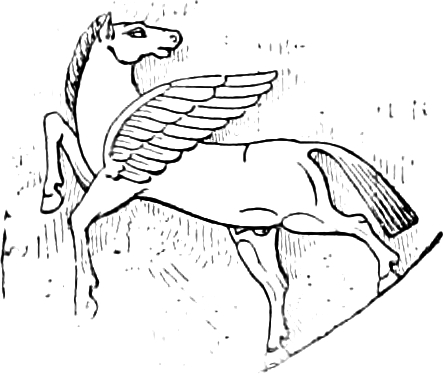
Fig. 89.—Winged horse. From Layard.
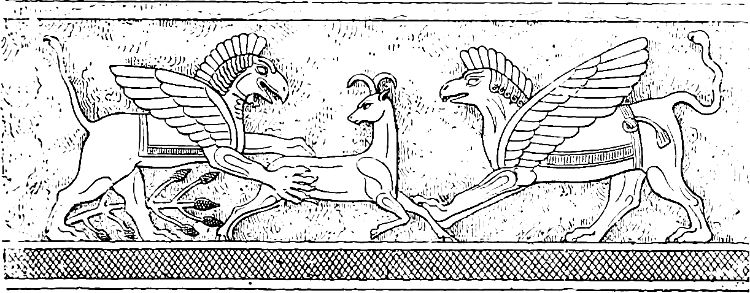
Fig. 90.—Griffins seizing a goat. From Layard.
The whole of the fabulous tribe of griffins, by which we mean an animal with the body of a lion or panther and the wings and head of a bird of prey, is richly represented in Assyrian art. The griffin recurs continually in the embroidery of the royal robes of Assurnazirpal (Fig. 90). The bird with a human head, the prototype of the Greek harpies and sirens, is also to be frequently met with. We find it introduced in those applied pieces which, after being cast and finished with the burin, were used by bronze workers in the decoration of vases of beaten metal. The diameters of the vases may easily be calculated from the inner curve of the applied plaques;[197] the latter were used to strengthen the vessels at the points where the movable handles,[172] like those of a modern bucket, were attached. These handles were hooked to a ring or fastened to the back of the figure on the plaque.[198] The head of the figure gave something to catch hold of when the vessel was upon the table, with its handle down. The form in question (see Fig. 91) was chosen by the artist on account of its fitness for the work to be done; the tail and wings embrace the swelling sides very happily; but yet it would never have been so employed had it not belonged to the ordinary repertory of the ornamentist.
Of all these types the only one that does not seem to have been invented by those who made use of it is that of the winged sphinxes used as supports in the palace of Esarhaddon (Vol. I., Fig. 85). The human-headed lion is certainly found long before, but it is not until the later reigns that he takes the couchant attitude and something of the physiognomy of the Egyptian sphinx.
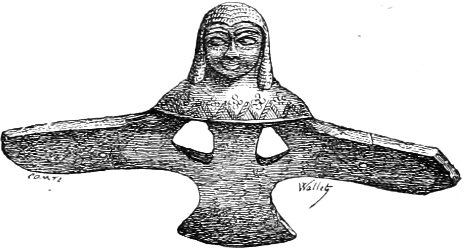
Fig. 91.—Human-headed bird. From De Longperier. One-third of the actual size.
Under the Sargonids communication with Egypt became so frequent that certain motives from the Nile valley were introduced into the Assyrian system of ornament, but the part they played was always a subordinate one. In creations such as those we have just been studying Chaldæa and Assyria certainly displayed more inventive power than was ever shown by Egypt. Speaking broadly, there was no possible combination they did not attempt. It was from Chaldæo-Assyrian artists that Syria, Judæa, and Phœnicia, as well as Asia Minor, borrowed their imaginary animals; and, thanks to these middle-men, it was[173] also to the artists of the double valley that the early ceramists and modellers of Greece owed not a few of the motives they transmitted to the great periods of classic art, and, through the latter, to the art of the Renaissance and of our own day.
So far we have made no distinction between Chaldæan and Assyrian sculpture. They made, in fact, but one art. In both countries we find the same themes and the same treatment—the same way of looking at nature and the same conventional methods of interpreting it. The common characteristics are numerous enough to justify us in attributing to one and the same school the works produced both in the southern and northern provinces. If we take them en bloc, and put them side by side with the productions of any other great nation of antiquity, we shall be at once struck by the close resemblance between all the monuments from the valley of the Tigris and Euphrates, whether they come from Sirtella or Babylon, Calah or Nineveh. The connoisseur can point out a Mesopotamian creation at a glance, mingled with works from Egypt, Phœnicia, or Greece though it may be. In order to define the Chaldæo-Assyrian style, he may take the first object that comes to hand, without caring much whether it come from the upper country or the neighbourhood of the Persian Gulf.
And yet between those cities of primitive Chaldæa that almost rivalled Memphis in age, and the towns of Assyria which only commenced to flourish in centuries that we may almost call modern, it is impossible that the spirit of the plastic arts and their executive processes can have remained without change. Between the earliest and the latest monuments, between the images of Gudea and those of Assurbanipal, there are, at least, shades of difference. It is certain that the old Chaldæan art and the art of Assyria were not two different arts, but they were two successive movements of the same art—two phases in its development. We have still to distinguish between these two phases by studying, one after the other, the history of Chaldæan and that of Assyrian sculpture.
[174]
In the course of this study, and especially in the case of the older civilization, we shall encounter many gaps. The monuments are few, and, even of those that we have, many are not a little embarrassing. They are often uninscribed and we are then without even the help afforded by the language and the style of the character in fixing a date. Fortunately this is not always the case; there are often indications that enable us to form certain groups, and, if not to assign absolute dates, at least to determine their relative places in a chronological series.
Of all these groups the best established and almost the only ones that can be used as the heads of series are those whose elements have been furnished by the explorations undertaken by M. de Sarzec, French vice-consul at Bassorah, at Tello, upon the site of a town which we shall follow the majority of Assyriologists in calling Sirtella. We have written the history of these excavations elsewhere; we have explained how greatly they do honour to the artistic spirit, the perseverance, and the energy of M. de Sarzec;[199] we have given the history of the negotiations and of the vote in Parliament which led to the acquisition by the Louvre of all the objects discovered. It will be sufficient to say here that the works began in the winter of 1876 and came to an end in 1881, and that the purchase of M. de Sarzec’s collection took place in the latter year, under the administration of M. Jules Ferry.
The name of Tello, which has become famous so suddenly, is to be found on no map of Asia to which we have access. The place thus designated by the Arabs in consequence of the numerous mounds, or tells, that are sprinkled about, is situated quite in the desert, on the left bank of the Shat-el-Haï, above Chatra and below Saïd-Hassan, which are on the other side of the channel, and about an hour and a quarter’s march to the east.[200]
[175]
This site seems to have been inhabited down to the very last days of antiquity, so that monuments have been found there of all ages; for the moment, however, we are only concerned with those that belong to the early Chaldæan monarchy. Among these there are some that date from the very beginning of Chaldæan civilization. This we know not only from their style; arguments based on such evidence alone might leave room for doubt; some might even contend that the development of art did not proceed equally over the whole of that extensive country; it might be asserted that here and there it was in a far less advanced state than at other centres. The age of these monuments is fixed by much less debateable signs, namely, by the character of the symbols of which their inscribed texts are composed (see Vol I., Fig. 2, and below, Fig. 92).

Fig. 92.—Inscription engraved on one of the seated Chaldæan statues. Louvre.
We have already explained[201] that in the monuments from Sirtella these symbols were not all wedges, or arrow-heads, whose exclusive use did not commence until afterwards; we have shown how their original ideographic nature is still to be traced in many characters. Compare the inscription here figured with those on our Assyrian monuments. Put it side by side with the narrative that runs across all the reliefs of Assurnazirpal at Nimroud (Vol. I., Fig. 4, and, above, Fig. 64): you will see at once what a profound change has taken place and how many centuries must have intervened between such different ways of employing the same alphabet. At Tello the material was less kindly; it was not, as in Assyria, limestone or gypsum; it was a diorite or dolerite[176] as stubborn as the hardest rocks of Egypt.[202] The widely-spaced characters are none the less distinct; their cutting is, in fact, marvellous in its decision and clearness. We feel that the scribe traced each letter with much the same care and respect as he would have shown in performing a religious rite. In the eyes of the people who saw these complicated symbols grow under the chisel, writing still had a beauty of its own as well as a mysterious prestige; it was only legible by the initiated, and they were few in number; it was admired for itself, for the power it possessed of representing the facts of nature and the thoughts of mankind; it was a precious, almost a magic, secret. By the time that the palaces of the Assyrian monarchs began to be raised on the banks of the Tigris it was no longer so; writing had gone on for so many centuries that people had become thoroughly accustomed to it and to its merits; all that one desired, when he took the chisel in hand, was to be understood. The text in which Assurnazirpal celebrates the erection of his palace and claims for it the protection of the great gods of Assyria, is written in very small, closely-set characters, engraved by a skilful and rapid hand in the soft and kindly stone; the inequalities of the surface, the details of the sculptures and the shadows they cast, make a letter difficult to read here and there. Nowhere, neither here nor in any other of the great Assyrian inscriptions, do we find the signs of care, the look of simple and serious sincerity, that distinguishes the ancient writing of Chaldæa. At Calah and Nineveh we have before us the work of a society already far advanced, a society which lives in the past and makes use, with mere mechanical skill, of the processes created and brought to a first perfection many centuries before.
Of all the monuments found at Tello, the oldest, apparently, is a great stele of white stone, both sides of which are covered[177] with bas-reliefs and inscriptions. Unfortunately it had been broken into numerous pieces, and, as these have not all been recovered, it is impossible to restore it entirely. The style of its writing seems the farthest removed from the form into which it finally developed, and its symbols seem to be nearer their original imitativeness than anywhere else. “Inexperience is everywhere to be recognized in the drawing of the figures; eyes are almost triangular and ears roughly blocked out; the aquiline type of nose is but a continuation of the line of the forehead, into which it blends; the Semitic profile is more strongly marked than in the monuments of the following age.”[203]
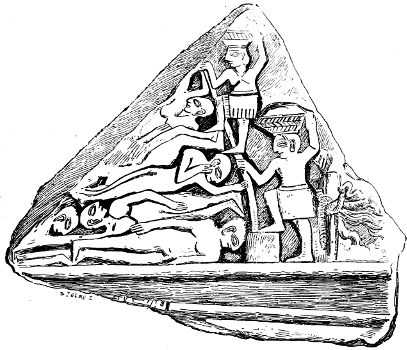
Fig. 93.—Fragment of a stele; from Tello. Height 1 foot. Louvre.
Drawn by Saint-Elme Gautier.
The bas-reliefs represent strange scenes of war, of carnage, of burial. Here we find corpses arranged in line so that the head of one is touching the feet of his neighbour (Fig. 93); they look as if they were piled one above another, but this, we believe, is an illusion due to want of skill on the part of the artist. He[178] puts objects one above another on the field of his relief which, in reality, were laid side by side. We must imagine these corpses spread over the surface of the ground and covered with earth. If the sculptor had introduced the soil above them, the corpses would have been invisible; so he has left it out. The two figures on the left, who mount an inclined plane[204] with baskets on their heads, what are they carrying? Offerings to be placed on the summit of the sepulchre? or earth to raise the tumulus to a greater height? We prefer the latter suggestion. When earth or rubbish has to be removed in the modern East, when excavations are made, for instance, the work is set about in the fashion here commemorated; the action of these two figures seems, moreover, to indicate that the weight they are carrying is greater than a basket full of cakes, fruits, and other things of that kind would account for.
If on this fragment we have a representation of the honours paid by the people of Sirtella to companions slain in battle, another compartment of the same relief shows us the lot reserved by the hate and vengeance of the victor for the corpses of his enemies (Fig. 94). Birds of prey are tearing them limb from limb on the place where they fell. In their beaks and claws they held the heads, hands, and arms of dismembered bodies. The savagery of all this suggests a remote epoch, when civilization had done little to soften original brutality.
A last fragment belongs to another composition (Fig. 95). It comes from a relief showing either the departure of an army for the field or its triumphal return. Very little is left, but that little is significant;—a hand holding one of those military standards whose use by the Assyrians we have already noticed (see above, Fig. 46), and the head of a personage, perhaps the king, walking in the procession; and that is all. The head-covering of the latter individual seems to be a kind of feather crown with a metal[179] or ivory aigrette or cockade in the centre of one side, reminding us in its shape of the head of one of the great Assyrian bulls; it would seem to be a symbol of strength and victory.
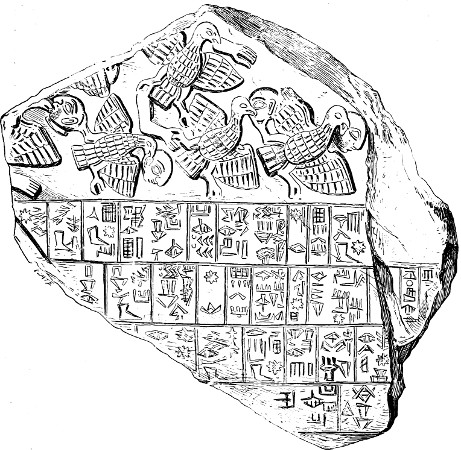
Fig. 94.—Fragment of a stele; from Tello. Height 9¾ inches. Louvre.
Drawn by Saint-Elme Gautier.
In the monograph now under preparation by MM. de Sarzec and Heuzey a description of several smaller and still more fragmentary pieces of the same monument will be found. There is one of which the subject may still be traced. We have been prevented from reproducing it by its bad condition. It again shows a battle field. Two rows of corpses are stretched upon the ground; behind them are several standing figures. We may thus re-establish with but little room for mistake the whole[180] economy of the composition. It was made to commemorate some military expedition in which the prince who reigned at Sirtella was successful. We do not know whether the fight itself was represented or not, but we have before our eyes the consequences of victory. One picture shows the insults inflicted upon the lifeless bodies of the hated enemy; two more celebrate the care taken by the victors of their dead and the honours rendered to their memory; finally the march of the successful army is portrayed. We have here, then, a well thought-out combination, a serious effort to seize and figure the different moments in a complicated action. The execution is, however, of singular awkwardness. The first halting experiments of the Chaldæan chisel, what we may call the primitive art of Chaldæa, is preserved for us in the fragments of this great stele.[205]
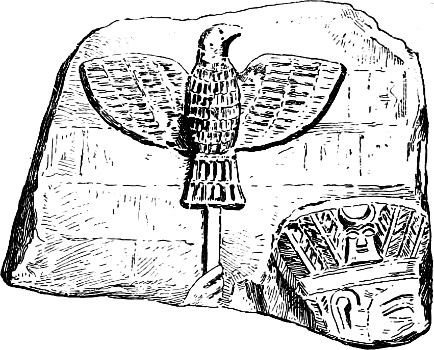
Fig. 95.—Fragment of a stele; from Tello. About one-third of the original size. Louvre.
Drawn by Saint-Elme Gautier.
A second and still more curious group of monuments is composed of eight statues of different sizes with inscriptions of Gudea, and of a ninth on which occurs a name read Ourbaou by some and Likbagas by others.[206] It is the smallest of all those exhibited[181] at the Louvre. All these figures are broken at the junction of the neck with the body.[207] We may put beside them two heads whose proportions are about the same as theirs, which were found, one among the mutilated statues, the other in the ruins of a neighbouring building. The material is similar, a very hard and dark igneous rock. The execution corresponds exactly with that of the torsos, to one of which the first named head may perhaps have belonged.
M. de Sarzec tells us that these statues were found in the great edifice at Tello, almost all on the soil of the central court.[208] Some are standing, others seated;[209] we give an example of each type (Plate VI., Figs. 96 and 98). In these effigies we may notice an arrangement that we have more than once encountered in Assyrian reliefs, but which has never, so far as we know, been employed in the arts of any other people. “All these statues, without exception, have their hands folded within each other and placed against their chests, an attitude still used in the East to mark the respectful attention of the servant awaiting his master’s orders. If, as we have every reason to believe, these figures were placed in a sacred inclosure, in front of the images of the gods or of the symbols that recalled their power, this attitude of submission and respect became one of religious veneration (Fig. 97).”[210]
At Nimroud and Khorsabad this expressive gesture is sometimes given to eunuchs in the presence of their masters, sometimes to kings when standing before the effigies of their gods. It is thoroughly well-fitted for those votive statues that proclaim themselves in their inscriptions to be offerings to the deity. In consecrating an image of himself on the threshold of the sanctuary, the king assured the perpetuity of his prayers and acts[182] of homage; he remained for ever in an attitude of worship before his god—in an attitude whose calm gravity was well calculated to suggest the idea of a divine repose to which death was the passport.
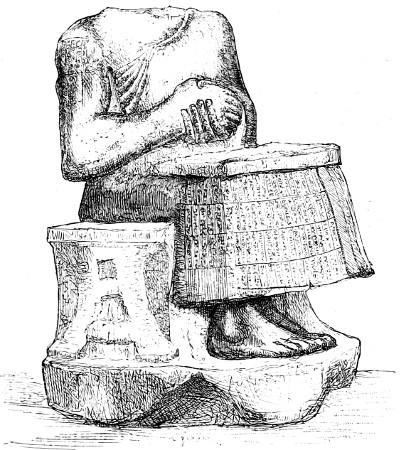
Fig. 96.—Statue; from Tello. Height 37 inches. Louvre. Drawn by Bourgoin.
The chief point of interest for us lies in the execution of these statues. They embody a very sensible progress. Art has thrown off the hesitations of its first youth and attacks the stubborn material with much certainty and no little science; and yet the most striking quality is less the successful grappling with a mechanical difficulty, than the feeling for nature and the general striving for truth; a striving which has not been discouraged by the resistance of the material. This resistance has resulted in a method that makes use of wide, smooth surfaces; and yet the workmanship has a freedom that a too great fondness for superficial polish too often took away from the diorite monuments of Egypt. The bare right arm and shoulder are remarkable[183] passages. The strongly-marked muscles of the back and the freedom with which the bony framework is shown under the flesh and skin should also be noticed. All these parts are treated with a breadth that gives a fine look of power to the otherwise short and thickset figure. And yet the vigour of the handling never goes beyond what is sober and discreet (Fig. 98). The same character is to be found in the hands, where joints, bones, and nails are studied with minute care, and in the feet, where power of foothold and the shapes of the toes are thoroughly well indicated.
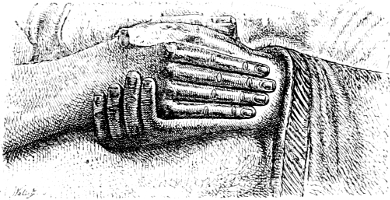
Fig. 97.—The hands of a statue; from Tello. Louvre. Drawn by Bourgoin.
The treatment of the two heads is no less excellent (Plate VII). The eyes are straight and widely opened; the heavy brows join in the middle; the strong and salient chin, as well as the crown of the head, is shaved in the fragment in which it is left bare.[211] Under the kind of hat or turban in the other[184] there would be a head no less bald. In our own day the small cap of cotton or linen covered by the twisted scarf or shawl of the Turk or Hindoo, conceals little but the smooth skin of the skull.[212] The custom had yet to be introduced of wearing the long and closely-curled hair and beard that we find reproduced in the sculptures of Nineveh. The nose is broken in both heads, but if we may judge from the statuettes and bas-reliefs of the same epoch, especially from a curious fragment recovered in the course of the same excavations, it must have been arched—but not so much as the Assyrian noses—and a little thick at the end. Taking the face as a whole it is square in structure, like the body; in the few examples of Assyrian heads in the round that we possess the oval of the face seems longer, but the beard by which the whole of its lower part is concealed renders any comparison difficult. We do not think, however, that there is any necessity to raise a question of race. “It is only subject to the greatest reserve that we can venture to say anything as to the ethnography of the types created by sculpture, especially when those types are archaic, and therefore exposed more than all others to the influence of school conventions.[213] It is a common habit with antique sculptors to allow traces of their work in its rough shape to subsist in the finished creation. In all countries the march of art has been from square and angular to round and flowing shapes, from short and thickset to graceful and slender proportions.”[214]
The tendencies shown in the rendering of the face and the uncovered parts of the body are also to be recognized in the treatment of the drapery. “The sculptor has attempted with much truth and simplicity to suggest the relief of the drapery and the direction of its folds. This early and timid attempt at studying folds is all the more remarkable as nothing like it is to be [187]found either in Egyptian sculpture or in the later works of Assyria. It bears witness to a sculpturesque instinct that does not reappear until we arrive at the art of the Greeks and the magnificent development of draperies and their significance which we then encounter.”[215]

Fig. 98.—The large statue from Tello. Height 5 feet 3 inches. Louvre. Drawn by Saint-Elme Gautier.
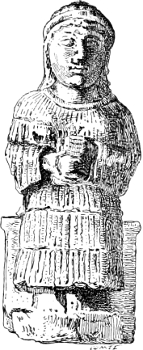
Fig. 99.—Female statuette. Alabaster. Height about 8 inches.
The figures we have been describing seem to us to represent The Archaic age of Chaldæan art. The characteristics to which the name of archaism has been given are easier to feel than to define. The proportions, especially in the seated figures, are here very short and broad, so much so that they seem to want length even when compared to the thickset forms in the Nimroud bas-reliefs. There is some evidence that the neck was very short and thick and the head large for the body, as we see it indeed in the statuette of a woman sitting, in which our lamented colleague de Longpérier was the first to recognize the work of some ancient Chaldæan artist (Fig. 99).[216] In the figures from Tello the elbow and the lower edge of the robe make those sharp angles which Assyrian sculptors set themselves to round off in later days. There is no attempt at[188] grace; directness and truth of expression are all that the artist has cared about.
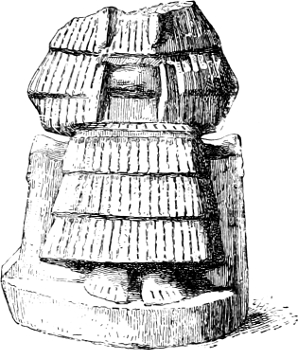
Fig. 100.—Statuette; from Tello. Actual size. Louvre. Drawn by Bourgoin.
We should ascribe several other objects found at Tello to the same period. These are in the first place the votive bronzes inscribed with the name of Gudea, which M. de Sarzec drew from their hiding places (Vol. I., Figs. 146–148); secondly, a statuette carved from a rather soft, fine-grained stone (Fig. 100). By its attitude it reminds us of the statues of Gudea, while the treatment of its drapery is more like the alabaster figure that we have chosen for reproduction from the old Louvre collections. Those symmetrical folds that appear to have been obtained with an iron, and that we have already seen imitated on the oldest Chaldæan cylinders (Vol. I., Figs. 3, 17, and 20; and above, Figs. 39 and 40), may be observed in its draperies. Thirdly, a bas-relief in soft stone, of which two compartments still remain, would date from the same period (Fig. 101). In its original condition it may have comprised some further divisions, for the subject as we see it in the fragment preserved is by no means clear. In the upper compartment there are four figures diminishing in size from left to right. The male figure on the left bears what seems to be an instrument of music, a kind of cymbal upon which he would beat with the hammer-shaped object in his right hand. The three individuals behind him are all in attitudes of submission and respect. In the lower division a seated individual[189] twangs the cords of a harp. In front his instrument is decorated with the image of a bull, recalling the richly ornamented harps that we find so often figured in the Egyptian tombs.[217] Another figure, again in the attitude of respect, stands before the harpist. It seems to be that of a woman, but the relief is in such a condition that nothing but the general contours can be made out.
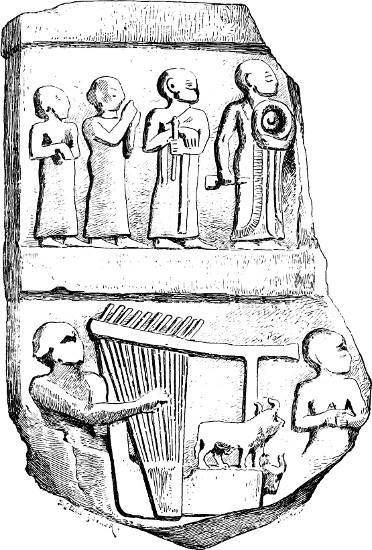
Fig. 101.—Fragment of a relief; from Tello. Height 44 inches. Louvre.
Chaldæan art did not stop here. Once arrived at the degree of mastery shown by the statues of Gudea, it made progress of[190] which, indeed, we are unable to measure the rapidity; but whose results are now before our eyes. We can hardly doubt that it reached a pitch of executive skill which often gave quite remarkable delicacy and finesse to the most insignificant details of sculpture and ornament. This had already suggested itself to M. Heuzey in the course of his study of the small Chaldæo-Babylonian figures belonging to the collection of terra-cottas in the Louvre;[218] he found the same merits in several of the fragments collected by M. de Sarzec.[219] We have been unable to reproduce all the pieces to which he alludes; some are too small to be rendered in a fashion that would do justice to the excellence of their treatment;[220] but that we may give some idea of the third group we are thus led to form, we shall figure two or three small objects, which the visitor will find without difficulty in the cases of the Louvre. One of these is a fragment from a bas-relief on which nothing remains but a foot, charmingly modelled, and a piece of ornament representing a vase from which two streams of water, each supporting a fish, are flowing (Fig. 102). The hardly sensible relief and the extreme finesse of this motive, remind us of the marvels of Japanese workmanship.[221] Still more striking is a small, a very small, head in steatite, reproducing the same type as the large statues with a grace and precision that make it a veritable gem (Fig. 103). The eyes have the oblique inclination that was afterwards to become so conspicuous in the Assyrian reliefs, but in a very slight degree. We may apply almost the same remarks to another but less well preserved head in diorite. Unlike all those we have as yet encountered, it is not shaven. In spite of the stubborn material the twists and turns of the hair and beard are sculptured in relief with admirable skill and precision.
It was during this period that the custom was introduced of[191] allowing the hair and beard to grow, so that their crisp curls should form a close frame for the face. This fashion was in the ascendant when a bas-relief, of which, to our great regret, we only possess a small fragment greatly damaged by fire (Fig. 67), was chiselled. It is remarkable both for the fineness of its workmanship and its curious subject. It shows the upper parts of two figures, entwined. That on the right, from the long hair flowing over the shoulders, must be a woman. The tall horned caps worn by both figures proclaim them to be a royal or divine couple.

Fig. 102.—Fragment of a relief; from Tello. Actual size. Louvre.

Fig. 103.—Head; from Tello. Actual size. Louvre.
We find the same characteristics in a fifth monument from the same place, whose composition at least is not wanting in originality. This is a support of some kind, perhaps the foot of a vase, cut in rock so hard, dark, and metal-like in its reflections, that at the first glance it might almost be taken for bronze. Its general form is circular. Above a plinth decorated with roughly chiselled squares and around a central cylinder, sit a number of individuals with long beards and hair. Their hands are placed upon their knees; the attitudes of the limbs and the modelling of the feet remind us of the statues of Gudea; but these figures are nude and their arrangement has more ease and variety. The general motive is especially interesting; it is both singular and happy, and proves that art was sufficiently advanced to understand how to decorate common objects by the addition of figures skilfully grouped and placed in natural and picturesque attitudes (Fig. 104).
It can never be sufficiently deplored that none of these monuments are either of a fair size or in a good state of preservation. We can only judge of the school by the small fragments we have been describing. What name are we to give to the art of which we thus catch a glimpse? Is it not better to employ some[192] expression that has been sanctified by custom, and one to which the critic and historian instinctively turns? When he seeks for a special term to denote the different phases of an organic development, what does he call the phase in which execution is at once free and informed with knowledge, when the hand of the artist, having won complete mastery over itself and over the material on which it is employed, allows him to reproduce those aspects of nature by which he has been charmed and interested? He calls it the classic period, or the period in which works fit to be placed, as models, before the artists of future ages, were produced. If we adopt this nomenclature, the third of the periods we have just been discussing will be for us the Classic age of Chaldæa.
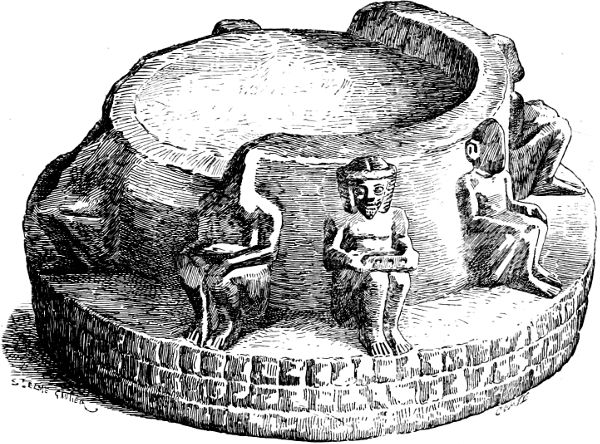
Fig. 104.—Stone pedestal; from Tello. Greatest diameter 6 inches. Louvre.
Although the remains from Sirtella give an opportunity for the study of Chaldæan art that is to be equalled nowhere else in Europe, still the British Museum and the old collections of the Louvre contain more than one object calculated to enrich, if not to complete, the series we have established.
A bronze in the former gallery (Fig. 105) seems to date from the earliest period of Chaldæan art. It has been thought to[193] represent a goddess, Istar perhaps, although there is nothing in the modelling of the bosom to suggest the female sex. The whole work is, however, so rough and barbarous that the author may very well have left out all details of the kind through sheer inability to render them. Like the bronzes of Tello, this figure—which is without legs—ends in a cylindrical stem. It was in all probability meant to be placed in one of those hiding places we have already described.
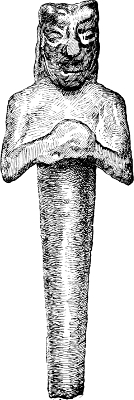
Fig. 105.—Chaldæan statuette. Height 6½ inches. British Museum. Drawn by Saint-Elme Gautier.
Monuments from the Archaic age are less rare. We have already had occasion to notice some of them, the tablet from Sippara with the god Shamas (Vol. I. Fig. 71), for instance, the[194] canephorus inscribed with the name of the king Kourdourmapouk (Fig. 53), and the stele of Merodach-Idin-Akhi (Fig. 63). The canephorus must have been the oldest of these objects. Its head is entirely shaven and in its attitude it resembles the bronzes of Gudea (Vol. I. Fig. 147). We are induced to bring down the tablet nearer to our own day because the individuals shown in it wear both beard and long hair. These are not confined to the god himself and the two divine personages who support the disk placed on the altar and representing the sun; they are common to the three figures advancing in an attitude of worship. The first appears to be a priest. Among other interesting details we may point out, under the throne of Shamas, the two strong-limbed deities whom Assyriologists call Izdubar and Hea-bani, and, in Shamas’s right hand, the staff with a ring attached that is found elsewhere than in Mesopotamia. The draperies of the god and those of the third worshipper are arranged in the crimped folds of which we have spoken above. Here art is fairly advanced. Putting on one side the convention which allows the deity to be made much taller than mortals, the proportions of the figures are good, their attitudes well understood and expressive. The workmanship of the stele of Merodach-Idin-Akhi is far inferior to that of the Sippara tablet. It belongs to a series of monuments in which, as we shall explain farther on, the workmanship is, as a rule, very mediocre. We shall also mention a few fragmentary statues of very hard stone which have been seen by travellers in Chaldæa,[222] and a few remains of the same kind that are now in the British Museum; but of the first we have only short and vague descriptions, while, among the second, there is not a piece[195] that can be compared to the statues of Gudea in the Louvre. During all this period the volcanic rocks appear to have been extensively employed; we still think they were obtained either from the borders of the Arabian desert, or by way of the two rivers from the mountains at the head of the double valley.
To the same school we may attribute a bronze from Hillah, now in the Louvre (Fig. 106). It represents a priest robed in a long tunic with five flounces of crimped work. His hair is brought together at the back of his head, and he wears a low tiara with the usual horns folded about it. His beard is short and broad. With his two hands—which are broken—he holds a small ibex against his chest. We have already encountered this motive in Assyria (see Vol. I. Fig. 114).
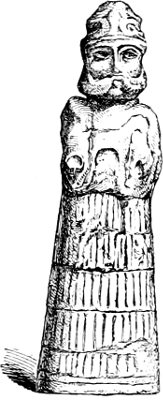
Fig. 106.—Statuette of a priest. Height 5¼ inches. Louvre.

Fig. 107.—Statuette of a woman. Terra-cotta. Louvre. Height 5¾ inches.
It is chiefly, however, among the terra-cotta statuettes that we find good examples of that more elegant and refined form of art of which we catch certain glimpses in some of the Tello fragments. The figure of a priest happily draped in a mantle that covers his head and shoulders from behind, has already been given (Fig. 50). We may here add two more specimens of the same kind. Their merits, however, can only be fairly appreciated in the originals, on account of their small size. One of the very best things produced by Chaldæan art is the statuette of a nude woman,[196] standing and suckling her infant (Fig. 107);[223] her large, and perhaps slightly empty forms are modelled with ease and artistic feeling. She is, in all probability, a goddess of maternity.[224] In the statuette reproduced in our Fig. 108, the treatment is less free, its precision is a little dry and hard. The personage represented employs the gesture proper to the nursing goddesses (see Vol. I. Fig. 16), although robed from head to foot. Her garment ends below in a deep fringe. On her head there is a Persian tiara.[225]

Fig. 108.—Terra-cotta statuette. Height 4¼ inches. Louvre.
This latter figure, in spite of certain qualities to which we are by no means blind, belongs to a period of decadence which lasted, perhaps, throughout the Persian domination, and even as late as the Seleucidæ and Parthians. The types consecrated by religious tradition were repeated, but repeated with a hesitating and indifferent hand, and with little reference to nature. The faults inherent in this kind of workmanship are still more conspicuous in the example, given in Fig. 16 of the first volume, of a type which was very common both in Chaldæa and Susiana.[226] Whether[197] we call her Istar or Anahit this goddess seems to have enjoyed a very lasting popularity in the whole region of which Mesopotamia forms the centre. The art of Chaldæa survived itself, so to speak, and reappeared after the fall of the national independence, just as the art of Egypt had a renewal of life under the Ptolemies and the Roman emperors. It is to these centuries that we should ascribe a limestone head found by M. de Sarzec at Tello (Fig. 109). In its execution there is none of the firmness and feeling for nature that is so conspicuous in the monuments from the three periods that we have endeavoured to establish.
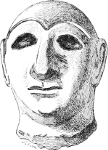
Fig. 109.—Head; from Tello. Actual size. Louvre.
It is mainly to the second Chaldee empire that a whole series of monuments belongs whose characteristics constitute them a class apart;[227] we mean those tablets, generally of some very hard[198] stone, which are inscribed with what we should call title-deeds. Two-thirds of their surface is occupied by several columns of close and fine writing, in which the stipulations of the contract securing the rights of the proprietor are recited. On the upper part, and dominated by several stars and by a great serpent stretching across the upper edge, some emblems are grouped, and these are almost exactly the same in all known examples. There are altars upon which the wedge or arrow-head, the primordial element of that writing without which the preservation of the contract would have been impossible, is either laid upon its side or set up on end. Other altars support horned tiaras, a horse-shoe, and another object which has been made unrecognizable by an unlucky fracture. With these things are mingled several animals, real and fantastic, and many symbols, no doubt of a sacred character, for we find them hung round the necks of Assyrian kings or placed in front of them on the field of their steles.
On one of these monuments, the one we have chosen as the type of the whole series, a double river seems to flow round the stone, and to embrace in its windings the mystic scene we have described. This is the Caillou Michaux, now in the French National Library. In Fig. 110 we give a reproduction of it as a whole, and in Figs. 111 and 112 the upper parts of its two faces on a larger scale.[228] The particular value of each symbol here engraved, is still, and perhaps will always remain, an enigma, but the general significance of their introduction into these documents is easily understood. They give a religious character, a sort of divine sanction, to the titles inscribed upon the stone; they act as witnesses and guarantees. The landmark thus prepared, was set, no doubt, like the Athenian ὅροι, at the limits of the field whose ownership it declared. It became a kind of talisman.[229]
The workmanship of the upper division is very dry and hard; it is not art. These images were not intended to charm the eye;[199] they were only placed on the stone on account of their supposed power of interesting the gods in the preservation of the rights and titles thereon set out. Their execution was therefore left to mere workmen, who sculptured the symbols and animal forms in the most mechanical and perfunctory fashion. They never dreamt of referring to nature and so giving some variety to the traditional forms. This art, if we may call it so, was hieratic in the fullest sense of the term.
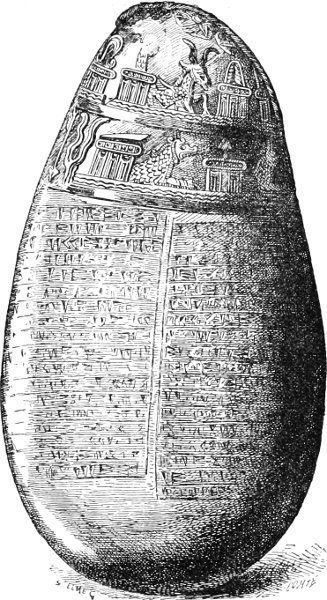
Fig. 110.—The Caillou Michaux. Height 19¾ inches. Drawn by Saint-Elme Gautier.
From our point of view, then, we should gain nothing by multiplying the number of these monuments. They are chiefly interesting to the historian of law and religious beliefs in Chaldæa. The remains for whose recovery we look with the most anxious hope are those of what we have called the classic age of Chaldæan[200] art, an art that must have reached its apogee in the days of Nabopolassar and Nebuchadnezzar. Speaking broadly, we can show nothing produced by the sculptors, painters, and ornamentists who were employed on the decoration of those great buildings which even the Jewish prophets could not help admiring, while they abused the princes who built them and the gods to whom they were consecrated. The earliest Greek travellers, such as Herodotus and Ctesias, only saw the ruins of these magnificent structures and of their rich adornment of enamels, frescoes, and sculptured figures; and yet how great was their wonder! We can hardly reflect without emotion upon what we have lost in great works in stone and metal carried out in the style of which certain fragments from Tello and a few terra-cotta statuettes give us some faint idea.[230]
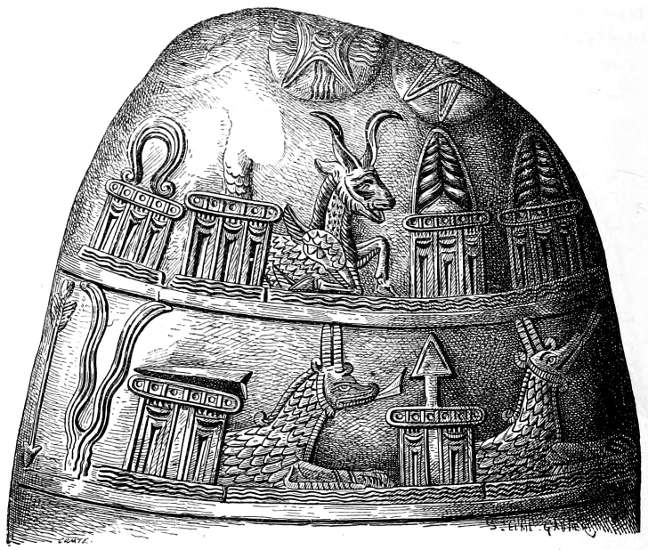
Fig. 111.—The Caillou Michaux, obverse. Drawn by Saint-Elme Gautier.
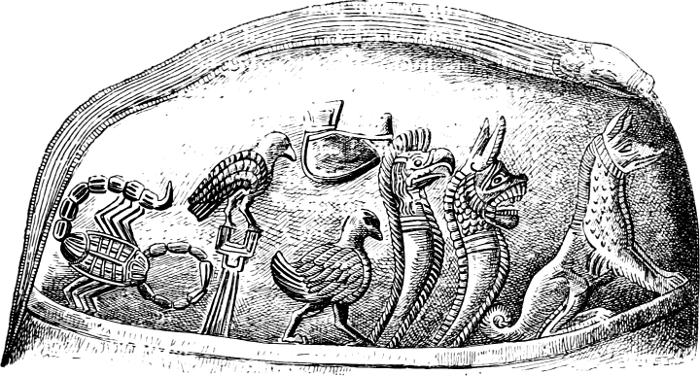
Fig. 112.—The Caillou Michaux, reverse. Drawn by Saint-Elme Gautier.
That such works did once exist we are told by the Greek[201] historians. Herodotus, after having described the temple of Bel and the sanctuary on its summit in which no image of the deity was set up, goes on, “In this temple at Babylon there is another sanctuary lower down, where a great seated statue of Zeus may be seen.[231] Near this statue there is a large table of gold, the throne and its steps are of the same material. The whole, according to the Chaldæans, is worth eight hundred talents of gold ... at one time the sacred inclosure also contained a statue of massive gold twelve cubits high. I did not see it. I content myself with repeating what the Chaldæans told me about it. Darius, the son of Hystaspes, formed a project to carry it off, but he did not dare to execute it. Xerxes, the son of Darius, caused the priest to be put to death by whom the enterprise was opposed, and took possession of the statue.” We here have the evidence of an eye-witness. The seated statue of Bel, without being of the colossal size ascribed by the Chaldæans to the image destroyed by Darius, must yet, if we may judge from the expression of Herodotus, have been larger than nature. We may gather some notion as to its pose and general appearance from certain figures carved upon the cylinders (Fig. 40), just as, in Greece, the more famous and venerable of her religious statues were reproduced upon coins and[202] gems. As to this Babylonian statue, the one doubt we have relates to the value put upon it by the Chaldæans. Had the statue and its surroundings really been of massive gold, would the Persians have spared it when the other was overthrown and broken up? It is possible that in spite of the historian’s assertion the work he describes was only gilded bronze.
And as for the image twelve cubits high, we may express the same doubts. Ctesias seems to have received better information as to how these figures were made than Herodotus, and, through Diodorus, he tells us that they consisted of metal plates beaten into shape with the hammer.[232] Whether Ctesias or his informants did or did not exaggerate their true dimensions (Diodorus speaks of a Bel forty feet high), or whether these figures were of gold or gilded brass, is of comparatively slight importance; we are interested chiefly in the information he gives as to the method of fabrication. Ever since the discovery of the Balawat gates proved to what a height the student art of Assyria carried the manipulation of metal by the repoussé process, we have had no difficulty in believing that the sculptors of Babylon in the time of Nebuchadnezzar could build up images of colossal size and fine decorative effect by means of plaques united with rivets. If we may believe the rest of Diodorus’s description, the Chaldæan artists combined the glory of gold and silver with the purity of ivory and the bright and varied colours of precious stones. And all this we see good reason to admit when we have examined at the British Museum those ivories in which lapis lazuli and other substances of the same kind even now fill up the hollows of the design, while the field still glitters here and there with some last fragments of the gold with which it was once incrusted. The skilful workmen who discovered the secret of this kind of mosaic, may very well have learnt to combine these beautiful materials so well that the statues upon which they were used would even have rivalled the chryselephantine masterpieces of Phidias; in richness and harmony of tones, at least, if not in nobility and purity of form.
[203]
Assyrian sculpture is far from leading us into the remote centuries from which some of the Chaldæan works must date. It had no period of infancy or childish effort. The Semites of the north were the pupils of their southern brothers, from whom they obtained an art already mature. The oldest known Assyrian monument dates from the reign of Tiglath-Pileser I., or about the end of the twelfth century B.C.; it is a bas-relief chiselled upon a rock near the sources of the Tigris, about fifty miles north of Diarbekir and near the village of Korkhar. It represents the king standing upright, his right hand extended and his left holding a sceptre; at present, however, we only know it by the very poor sketch given by Professor Rawlinson.[233] It is almost the only monument extant from the time when the capital of the monarchy was on the site now known as Kaleh-Shergat. One other may be named, the female torso in the British Museum, to which we have already referred;[234] on it the name of Assurbilkala, who succeeded Tiglath-Pileser I., may be read.
The monumental history of Assyria really begins two centuries later, with the great buildings erected by Assurnazirpal at Calah (Nimroud), his favourite residence. Assyrian art then reached a level that, speaking generally, it never surpassed. In the following centuries it innovated, it became more complex and certainly more refined, but it produced nothing essentially nobler than certain Nimroud bas-reliefs, in which the king is seated among his great officers or before his gods, and always in the attitude of prayer and sacrifice. We have already given several examples of these reliefs (Vol. I. Fig. 4, and above, Figs. 15 and 64); we may here add one more (Fig. 113). Leaning on his bow with his left hand, the king, richly dressed, lifts in his right the patera whose contents he is about to pour as a libation to the deity. Facing him stands a gigantic eunuch, who waves over his master’s head one of those fly-flappers that, with the parasol, have always been among the insignia of Oriental royalty (see Plate X.).
These figures are rather short in their proportions, and the[204] muscular development of their arms, which alone are bare, is violently exaggerated, but yet as a whole the work has a certain grandeur and nobility. The lines are well balanced. Both the king and his attendant seem fully impressed with the gravity of the rite over which they are busy. There is dignity in their attitudes, but no stiffness; their gestures are easy and expressive without being too much accented. In our engraving we have only been able to include the two isolated figures, in the original there are several more all occupied over the same rite. Even the British Museum has only a few fragments from these vast compositions. For those who saw them in their original completeness, well lighted and distributed in their right order along the walls of spacious saloons, they must have seemed majestic enough.
In his palace decorations the Assyrian artist set himself to free his figures from all unnecessary surroundings and to simplify his theme as much as he could. But we must make a distinction between those reliefs that may be called historical, such as the pictures of battles and sieges, and those in which the king is shown in the accomplishment of some duty belonging to his position, and part of his daily or periodical routine. It is to the latter class that the most carefully-executed works belong. In these no particular locality is specified; like that of the Panathenaic procession, it is left undetermined, and the mind of the spectator is silently invited to fill it in for himself. Those who frequented the palace were accustomed to see the king upon his throne, or traversing the wide quadrangle, or pouring libations on the altar that stood in front of the temple; so that they had no difficulty in imagining all that the sculptor had left unsaid. In the hunting pictures the same method was followed with but little modification. A flat surface suggesting the unbroken expanse of the desert, was the only indication of a locus in quo.
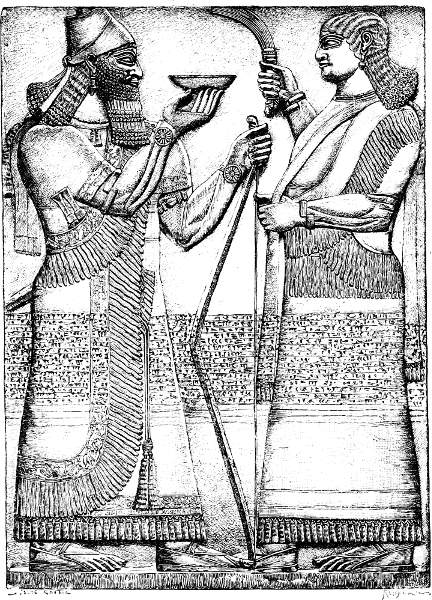
Fig. 113.—Assurnazirpal offering a libation. Height 7 feet 8 inches. British Museum.
Drawn by Saint-Elme Gautier.
It would have been difficult, or rather impossible, to adhere to such a rule in those reliefs in which the actual incidents of military expeditions were retraced. In them the sculptor thought it necessary to insert such details as would permit the various episodes commemorated to be identified. One of the simplest means of insuring the desired result was to render not only buildings, such as castles and fortified towns, but also the natural features of the scene, with the greatest possible truth. This the Assyrian artist did, as a rule, with excellent judgment. Thus, [207]if an action or campaign had been fought in a mountainous country, he made use of a kind of lattice-work or reticulation, which every spectator thoroughly understood (see Vol. I. Figs. 39 and 43); if among forests, he introduced numerous trees among his figures. He made little attempt to distinguish between one kind of tree and another, but in most cases employed forms as conventional as that by which he indicated hills (Fig. 114).
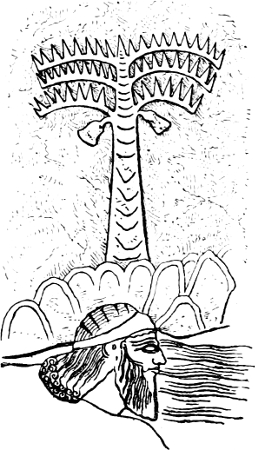
Fig. 114.—Tree on a river bank; from Layard.
One of the chief merits and most striking features of Assyrian sculpture is, then, its power of selection, its rejection of all that is superfluous, its comprehension, in fact, of the true spirit and special conditions of the art. The field has none of those encumbering accessories which, under the pretext of furnishing and defining, only serve, so to speak, to take away air and elbow-room from the figures. When certain complementary features are required to make the subject clear, the sculptor introduces them, but he never gives more than is strictly necessary. He never gives way to the temptation to exaggerate such details, or treats them as if they had an interest and importance of their own. Such sobriety found its reward. His work no doubt remained faulty[208] in many respects and inferior to that of his Egyptian forerunner, still more to that of his Greek successor; but yet it had an air of frankness, of pride and dignity, to which the more complex and superficially more skilful compositions of the following epoch too seldom attained.
The good qualities of this early Assyrian school are no less conspicuous in the colossal figures with which the doorways of palaces and temples were decorated. The head of the winged bull has nowhere a more lofty expression or one more full of dignity than at Nimroud (see below, Fig. 133). The chisels of these northern artists never created anything more bold, energetic, and lifelike than the figures from the small temple built by Assurnazirpal (Vol. I. Fig. 188); we need only mention the colossal lion in the British Museum (Plate VIII.) and the grimacing demon whom a beneficent god seems to be expelling from the sanctuary in spite of his threats and grinning teeth.[235]
And yet this art which is so masterly in some respects is very primitive and naïve in others. We cannot help being amazed, for instance, at the wide band of wedges that the scribe has been allowed to cut across all the lines and contours left by the sculptor. This proceeding is to be explained, of course, by the essentially historical and anecdotic character of Assyrian art, but nevertheless it betrays the contempt for æsthetic effect which is one of the characteristics of archaic art in Assyria. This feature is by no means without importance, and Sir Henry Layard seems to us to have been ill advised in deliberately suppressing it. In his otherwise faithful reproductions of the best preserved among the bas-reliefs of Assurnazirpal he has everywhere left out the continuous band of inscription which runs across them at about two-thirds of their height. By such a proceeding he has sensibly modified their decorative value.[236]
We must be on our guard against attributing such primitive simplicity to inexperience in the use of the chisel. In the finest works of later years that instrument was never wielded with more assured skill than in the delicate carvings in which the embroidery on the royal robes are reproduced. We have already put several of these motives before our readers; in Fig. 115 we give a last[209] exquisite morsel. It shows a winged lion with the head of a woman, and a king or priest who holds one of her paws in his left hand, while with his right he seems to threaten her with a mace.

Fig. 115.—Detail from the royal robe of Assurnazirpal; from Layard.
Such dexterity as this is not to be seen in works in the round (see Fig. 60). But with the reign of Assurnazirpal commences another series of royal monuments in which the artist, not being compelled to quit work in relief, felt himself more at home. We refer to those round-headed steles on which the standing figure of the king is relieved against a flat ground bordered by a raised edge. An inscription is engraved sometimes upon the bed of the relief, sometimes on the reverse of the stele. An effigy of Assurnazirpal belonging to this class is now in the British Museum. It was discovered still standing in the entrance to one of the temples built by that sovereign on the platform of Calah. Before the stele there was an altar similar to that shown on page 256 of our first volume. This altar is also in the British Museum.[237] From the existence of these steles it has been concluded, with no little probability, that the Assyrian kings, or at least some of them, received divine honours after their deaths. We have chosen that of Samas-vul II. for reproduction, on account of its good condition (Fig. 116). It differs but little from the stele of Assurnazirpal. High up in the field and in front of the head may be noticed symbols like those on the land marks (see Figs. 111, 112, and 143). The king’s right hand is raised in the attitude of adoration. In his left he holds a sceptre, with a ball of ivory or metal at one end and a tassel at the other. These steles must have been set[210] up in great numbers. We find them represented in the reliefs (Vol. I. Figs. 42 and 112, and Plate XII.) and upon cylinders (ib. Fig. 69). They were raised as a sign of annexation in conquered countries, and an invocation engraved upon the stone put them under the protection of the Assyrian gods, who were charged with the punishment of any who might lay hands upon them.[238]
In the British Museum there are fragments of a sculptured obelisk on which the wars and hunts of Assurnazirpal are figured. It is taller than that of his son Shalmaneser II., being nearly ten feet high, but as the material is a soft limestone, it is in far worse preservation; we only mention it to show that Assyrian art was in possession of all its resources in the time of this king.
Under none of the princes who reigned at Calah did sculpture show any sensible change of style; but yet, perhaps, in certain passages of the Balawat gates we may recognize the first signs of a tendency that was to become strongly marked under the Sargonids. The field of the relief there contains a far greater number of picturesque and explanatory details than the great bas-reliefs of Nimroud. The campaigns and victories of Shalmaneser II. was the theme put before the sculptor. In order to do it justice he had to carry the spectator into countries of various aspects, and to give their true character to military struggles whose conditions were incessantly changing. He did not think success was to be attained by confining himself to figuring the cities and fortresses besieged and taken by the Assyrian army; he introduced features for the purpose of determining the seat of war. Such accessories were better placed among figures on a small scale than among those surpassing or even approaching life size; and without knowing exactly why, the artist seems to have been warned of this by a secret and delicate instinct. These strips of bronze are ten inches high; each is divided into two horizontal divisions by a narrow band of rosettes, which is also repeated at the top and bottom of each strip. The figures are on an average about three and a half inches high (see Fig. 117 and Plate XII.).
[211]
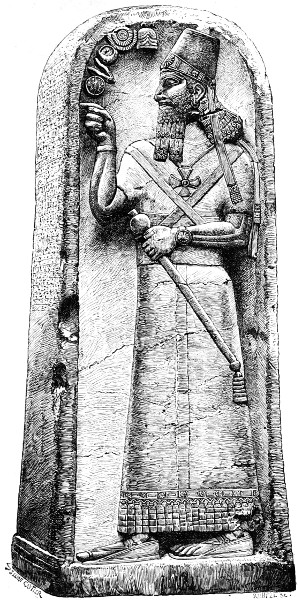
Fig. 116.—Stele of Samas-vul II. Height 7 feet 2 inches. British Museum.
Drawn by Saint-Elme Gautier.
PLATE XII
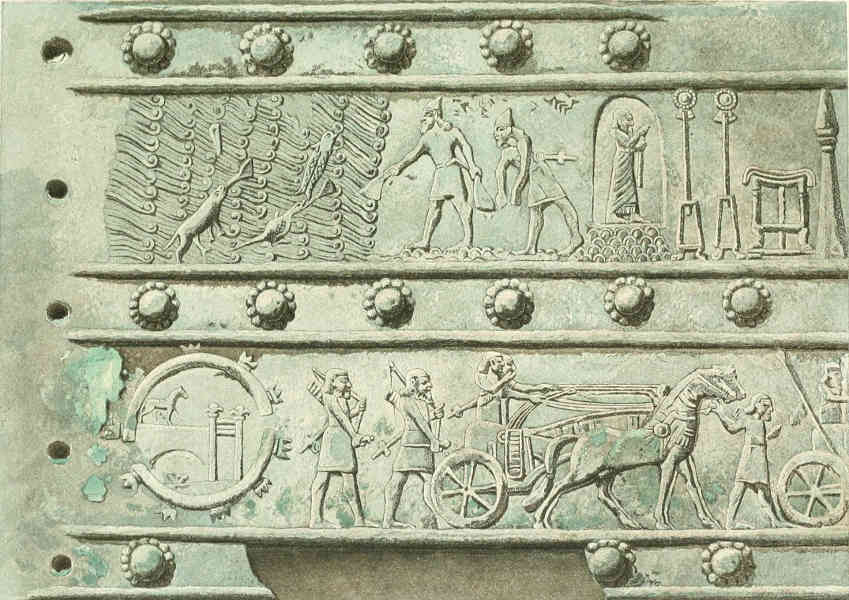
FROM THE BALAWAT GATES
British Museum
[213]
Our Plate XII. is an exact copy from a part of the band marked B in the provisional numeration adopted by Dr. Birch.[239] According to the inscription upon it this part of the work commemorates a sacrifice offered by Shalmaneser on the borders of the Lake Van, in Armenia. The figure of the king is not included in our plate, but it contains all the sacred vessels of which he made use for the ceremony. Beginning on the left we find a sort of great candelabrum, a three-legged altar, and two standards upon tripods. Must these be accepted as military ensigns of the same class as that shown in Fig. 46 or as religious emblems of the sun and moon? The question is hardly one for us to discuss. Next comes a stele raised upon a rock, or perhaps carved upon its surface. Other reliefs of the same series show us that Shalmaneser erected these steles in every country he conquered. Further to the right we see soldiers throwing into the lake the limbs of the animals sacrificed. This must be an offering to the deity of its waters, perhaps to Anou, who was believed to reside in rivers and lakes as well as in the sea. The denizens of the lake seize upon the morsels thus put in their way; among them we may recognize a large fish, a tortoise, and a quadruped, that may perhaps be an otter.[240]
In the lower division we see the Assyrian army on the march. On the right Mr. Pinches recognizes a fortified camp in which horses were left for flight in case of defeat. There is, indeed, one of these fortified walls shown in projection, of which we have already spoken, but the horse is placed upon a clearly indicated arch. What is this arch doing in the middle of the camp? We ask ourselves whether this circular structure may not be intended[214] to represent a fortified tête-de-pont. It is abundantly proved that the Assyrians and Chaldæans made great use of the vault. Why should they not have employed it for bridges elsewhere than at Babylon? and wherever there were bridges on the great roads and near their own frontiers what could be more natural than to defend them by works flanked, like this, with towers? The horse would then be about to cross the bridge, and his introduction would be explained simply by the sculptor’s desire to give all possible clearness to a representation which could never be complete. He seems to advance with some precaution as if the floor of the bridge, which is indicated merely by a straight line, was made of tree trunks or roughly squared planks badly joined. We offer this hypothesis for what it may be worth. Next come two archers, and then chariots. The ground must be difficult, for not only does the driver support his horses with a tightened rein, but a man on foot walks in front and holds them by the head.
We find a scene entirely similar but still better treated in the upper division of another plaque (see Fig. 117).[241] Here we may see that the chariots are progressing not without difficulty and even danger, in the very bed of a torrent. The movement of the men who lead the horses is well understood and skilfully rendered; we feel how carefully they have to conduct their advance among the blocks of stone that encumber the bed of the stream and the tumbling water that conceals the nature of the ground. In the lower division we are presented with one of those scenes that are so common in Assyrian reliefs. The king in his royal robes appears on the left; a line of prisoners guarded by archers approach him and beg for mercy, while the foremost among them “kiss the dust beneath his feet,” to use an oriental expression in its most literal sense.
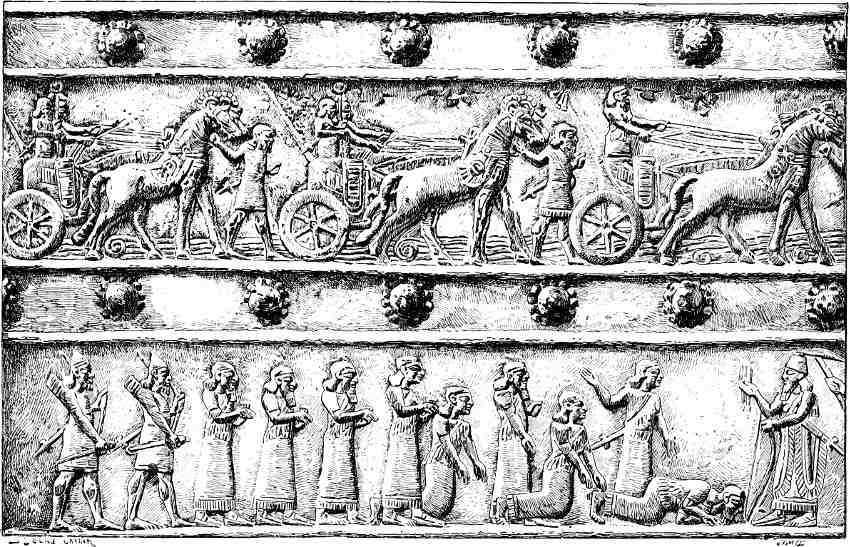
Fig. 117.—Two fragments from the Balawat gates. British Museum. Drawn by Saint-Elme Gautier.
We should have been willing, had it been possible, to make further extracts from this curious series of reliefs; to have shown, here naked prisoners defiling under the eyes of the conqueror, there Assyrian archers shooting at the heaped-up heads of their slain enemies. But we have perforce been content with giving, by a few carefully chosen examples, a fair idea of the work [217]that intervened between the sculptors of Assurnazirpal and those of the Sargonids.
It is probable that the scheme of this vast composition was due to a single mind; from one end to the other there is an obvious similarity of thought and style. But several different hands must have been employed upon its execution, which is far from being of equal merit throughout. It is on examining the original that we are struck by these inequalities. Thus, in some of the long rows of captives the handling is timid and without meaning, while in others it has all the firmness and decision of the best among the alabaster or limestone reliefs; the muscular forms, the action of the calf and knee, are well understood and frankly reproduced. The passages we have chosen for illustration are among the best in this respect. Taking them all in all these bronze reliefs are among the works that do most honour to Assyrian art.
The only monument that has come down to us from the reign of Vulush III., the successor of Samas-vul, is a statue, or rather a pair of statues, of Nebo; the better of the two is reproduced in Fig. 15 of our first volume. These sacred images are of very slight merit from an art point of view; we should hardly have referred to them but for their votive inscriptions. From these we learn that they were consecrated in the Temple of Nebo by the prefect of Calah in order to bespeak the protection of that god for the king. But the latter is not named alone; the faithful subject says that he offers these idols “for his master Vulush and his mistress Sammouramit.”
In this latter name it is difficult not to recognize the Semiramis of the Greeks, and we are led to ask ourselves whether the queen of Vulush may not have afforded a prototype for that legendary princess. This association of a female name with that of the king is almost without parallel either in Chaldæa or Assyria. In royal documents, as well as in those of a more private character, there is no more mention of the royal wives than if they did not exist. Only one explanation can be given of the apparent anomaly, and that is that Sammouramit, for reasons that may be easily guessed, enjoyed a quite exceptional position. It was in those days that, from one reign to another, the princes of Calah attempted to complete the subjugation of Chaldæa. It may have happened that in order to put an end to a state of never-ending rebellion, Vulush married the heiress of some powerful and popular[218] family of the lower country, and, that he might be looked upon as the legitimate ruler of Babylon, joined her name with his in the royal style and title. This hypothesis finds some confirmation in what Herodotus tells us about Semiramis. She was, he says, queen of Babylon five generations before Nitocris, which would be about a century and a half. He adds that she caused the quays of the Euphrates to be built.[242] This takes us back to rather beyond the middle of the eighth century B.C., that is very near to the date which Assyrian chronology would fix for the reign of Vulush (810–781). As the last representative of the old national dynasty, this Semiramis, associated as she was in the exercise, or at least in the show, of sovereign power both in Assyria and Chaldæa, would not be forgotten by her countrymen, and the population of Babylon would be especially likely to magnify the part she had played. There is nothing fabulous in the tradition as Herodotus gives it, although it may, perhaps, go beyond the truth here and there. Ctesias, however, goes much farther. He brings together and amplifies tales which had already received many additions in the half century that separated him from Herodotus, and he thus creates the type of that Semiramis, the wife of Ninus and the conqueror of all Asia, who so long held an undeserved place in ancient history.[243]
The last Calah prince who has left us anything is Tiglath-Pileser II. (745–727). We have already described how his palace was destroyed by Esarhaddon, who employed its materials for his own purposes.[244] At the British Museum there are a few fragments which have been recognized by their inscriptions as belonging to his work (Vol. I. Fig. 26)[245]; they are quite similar to those of his immediate predecessors.
With the new dynasty founded by Sargon at the end of the eighth century taste changed fast enough. In those bas-reliefs in the Khorsabad palace which represent that king’s campaigns, many details are treated in a spirit very different from that of former days. Trees, for instance, are no longer abstract signs standing for no one kind of vegetation more than another; the[219] sculptor begins to notice their distinguishing features and to give their proper physiognomy to the different countries overrun by the Assyrians. But these landscape backgrounds are not to be found in all the bas-reliefs of Khorsabad.[246]
The art of Sargon was an art of transition. While on the one hand it endeavoured to open up new ground, on the other it travelled on the old ways and followed many of the ancient errors; it had a marked predilection for figures larger than nature, and bas-reliefs treating of royal pageants and processions remind us by the simplicity of their conception of those of Assurnazirpal. We have already given many fragments (Vol I. Figs. 22–24, and 29), and now we give another, a vizier and a eunuch standing before the king in the characteristic attitude of respect (Fig. 118). The inscription which cut the figures of Assurnazirpal so awkwardly in two has disappeared; the proportions have gained in slenderness, and the muscular development, though still strongly marked, has lost some of its exaggeration. All this shows progress, and yet on the whole the Louvre relief is less happy in its effect than the best of the Nimroud sculptures in the British Museum. The execution is neither so firm nor so frank; the relief is much higher and the modelling a little heavy and bulbous in consequence. This result may also be caused to some extent by the nature of the material, which is a softer alabaster than was employed, so far as we know, in any other part of Assyria. At Nimroud a fine limestone was chiefly used.
We shall be contented with mentioning the stele of Sargon, found near Larnaca, in Cyprus, in 1845. It is most important as an historical monument; it proves that, as a sequel to his Syrian conquests, the terror of Sargon’s name was so widespread that even the inhabitants of the islands thought it prudent to declare[220] themselves his vassals, and to set up his image as a sign of homage rendered and allegiance sworn. But the stone is now too much broken to be of any great interest as a work of art.[247]
The artistic masterpiece of this epoch is the bronze lion figured in our Plate XI. It had been suggested that its use was to hold down the cords of a tent or the lower edge of tapestries, a purpose for which the weight of the bronze and the ring fixed in its back make it well suited. This idea had to be abandoned, however, when a whole series of similar figures marked with the name of Sennacherib was found. Their execution was hardly equal to that of the lion we have figured, but their general characteristics were the same, and they had rings on their backs.[248]
These lions are sixteen in number; they form a series in which the size of the animal becomes steadily smaller with each example; the largest is a foot long, the smallest hardly more than an inch. The decrease seems to follow a certain rule, but rust has affected them too greatly for it to be easy to base any metrological calculation upon their weight. But all doubt as to their use is removed by the inscriptions in cuneiform and in ancient Aramaic characters with which several of them are engraved. The Aramaic inscriptions all begin with the word mine; then comes a figure indicating the number of mines, or of subdivisions of the mine that the weight represents; finally, there is the name of some personage, who may perhaps have been a magistrate charged with the regulation and verification of weights.
[221]
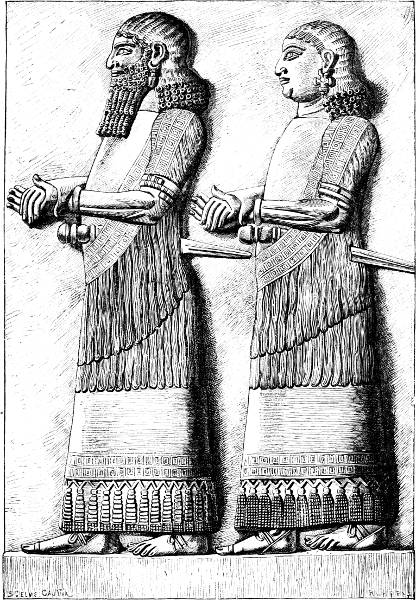
Fig. 118.—Bas-relief from Khorsabad. Height 9 feet 5 inches. Louvre.
[223]
With the accession of Sennacherib, a sensible change comes over the aspect of the reliefs. What until now has been the exception becomes the rule. On almost every slab we find a complex and carefully treated landscape background. The artist is not satisfied with indicating the differences between conifers, cypresses, and pines (Vol. I. Figs, 41–43), palms (ib. Figs. 30 and 34; and above, Fig. 21), the vine (Fig. 47), and the tall reeds and grasses of the marsh (Fig. 119) are also imitated.[249]
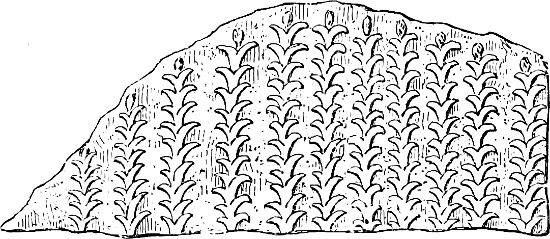
Fig. 119.—Marsh vegetation; from Layard.
We feel that the sculptor wished to reproduce all those subordinate features of nature by which his eye was amused on the Assyrian plains; he seems almost to have taken photographs from nature, and then to have transferred them to the palace walls by the aid of his patient chisel. Look, for instance, at the reliefs in which the process of building Sennacherib’s palace is narrated. The sculptor is not content with retracing, in a spirit of uncompromising reality, all the operations implied by so great an undertaking; he gives backgrounds to his pictures in which he introduces, on a smaller scale, many details that have nothing to do with the main subject of the relief. Thus we find a passage in which men are shown carting timber, and another in which they are dragging a winged bull, both surmounted by a grove of cypresses, while still higher on the slab, and, therefore, in the intention of the sculptor, on a more distant horizon, we see a river, upon which boatmen propel their clumsy vessels, and fishermen, astride on inflated skins, drift with the stream, while fishes nibble at their baited lines.[250]
[224]
Neither boatmen nor fishermen have anything to do with the building of the great edifice that occupies so many minds and arms within a stone’s throw of where they labour. They are introduced merely to amuse the eye of the spectator by the faithful representation of life; a passage of what we call genre has crept into an historical picture. Elsewhere it is landscape proper that is thus introduced. One of the slabs of this same series ends in a row of precipitous heights covered with cypresses, vines, fig and pomegranate trees, and a sort of dwarf palm or chamærops.[251]
They thought no doubt that the spectators of such pictures would be delighted to have the shadowy freshness of the orchards that bordered the Tigris, the variety of their foliage and the abundant fruit under which their branches bent to the ground, thus recalled to their minds. The group of houses that we have figured for the sake of their domed roofs, forms a part of one of these landscape backgrounds (Vol. I. Fig. 43).[252]
We might multiply examples if we chose. There is hardly a relief from Sennacherib’s palace in which some of those details which excite curiosity by their anecdotic and picturesque character are not introduced.[253] We find evidence of the same propensity in the decoration of the long, inclined passage that led from the summit of the mound down to the banks of the Tigris. There the sculptor has represented what must have actually taken place in the passage every day; on the one hand grooms leading their horses to water, on the other servants carrying up meat, fruit, and drink for the service of the royal table and for the army of officers and dependants of every kind that found lodging in the palace.[254]
This active desire to imitate reality as faithfully as possible had another consequence. It led to the multiplication of figures, and[225] therefore to the diminution of their scale. No figures like those that occupy the whole heights of the slabs at Nimroud and Khorsabad have been found in the palace of Sennacherib. In the latter a slab is sometimes cut up into seven or eight horizontal divisions.[255] The same landscape, the same people, the same action is continued from one division to another over the whole side of a room. The subjects were not apportioned by slabs, but by horizontal bands; whence we may conclude that the limestone or alabaster was chiselled in place and not in the sculptor’s studio.
We have not engraved one of these reliefs in its entirety; with its half-dozen compartments one above another and its hundred or hundred and fifty figures, it would have been necessary to reduce the latter to such a degree that they could only be seen properly with a magnifying glass. The originals themselves, or the large plates given by Layard in his Monuments, must be consulted before the dangers of this mode of proceeding can be appreciated. The confusion to which we have pointed as one of the cardinal defects of Assyrian sculpture, is nowhere more conspicuous than in the battle pictures from Sennacherib’s palace. It is, however, only to be found in the historical subjects. When the sculptor has to deal with religious scenes he returns to the simplicity of composition and the dignity of pose that we noticed in the reliefs of Assurnazirpal.
This may be seen in the figures carved on the rock of Bavian by the orders of Sennacherib. The village which has given its name to this monument lies about five and thirty miles north-north-east of Mossoul, at the foot of the first Kurdistan hills and at the mouth of a narrow and picturesque valley, through which flows the rapid and noisy Gomel on its way to the ancient Bumados, the modern Ghazir, which in its turn flows southwards into the Zab.
The sculptures consist of several separate groups cut on one of the lofty walls of the ravine. Some are accompanied by inscriptions, but the latter speak of canals cut by the king for the irrigation of his country and of military expeditions, and do not explain why such elaborate sculptures should have been carried out in a solitary gorge, through which no important road can ever have passed.[256]
[226]
The valley, which is very narrow, is a cul-de-sac. May we suppose that during the summer heats the king set up his tent in it and passed his time in hunting? According to Layard’s description the scene is charming and picturesque. “The place, from its picturesque beauty and its cool refreshing shade even in the hottest day of summer, is a grateful retreat, well suited to devotion and to holy rites. The brawling stream almost fills the bed of the narrow ravine with its clear and limpid waters. The beetling cliffs rise abruptly on each side and above them tower the wooded declivities of the Kurdish hills. As the valley opens into the plain the sides of the limestone mountains are broken into a series of distinct strata, and resemble a vast flight of steps leading up to the high lands of central Asia. The banks of the torrent are clothed with shrubs and dwarf trees, among which are the green myrtle and the gay oleander bending under the weight of its rosy blossoms.”[257] Such a gorge left no room for a palace and its mound,[258] but a subterranean temple may have been cut in the limestone rock for one of the great Assyrian deities, and its entrance may now be hidden, or even its chambers filled up and obliterated, by landslips and falling rocks, and two huge masses of stone that now obstruct the flow of the torrent may be fragments from its decoration. They bear the figures of two winged bulls, standing back to back and separated by the genius who is called the lion-strangler.[259]
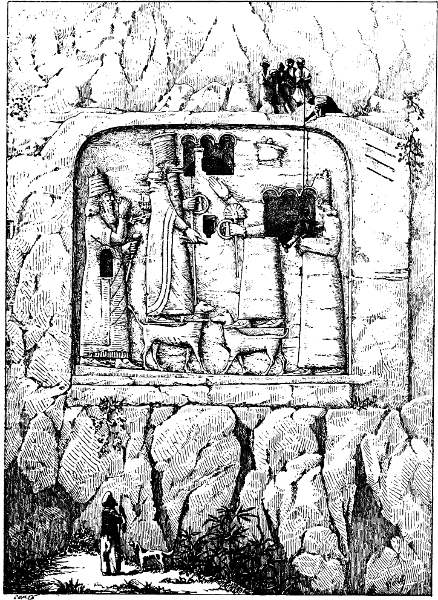
Fig. 120.—The great bas-relief at Bavian; from Layard.
The principal relief fills up a frame 30 feet 4 inches wide and 29 feet high (see Fig. 120). The bed has been cut away by the chisel to a depth of about 8 inches. Sheltered by the raised edge thus left standing the figures would have been in excellent condition but for the unhappy idea that struck some one in later years,[227] of opening chambers in the rock at the back and cutting entrances to them actually through the figures. These hypogea do not seem to have been tombs. They contain no receptacles for bodies, but only benches. They were, in all probability, cells for Christian[228] hermits, cut at the time when monastic life was first developed and placed where we see them with the idea of at once desecrating pagan idols and sanctifying a site which they had polluted. In Phrygia and Cappadocia we found many rock-cut chambers in which evidence of the presence of these pious hermits was still to be gathered. In some, for instance, we found the remains of religious paintings. As examples we may mention the royal tombs of Amasia, which were thus converted into oratories.[260]
The composition contains four figures. Two in the middle face each other and seem to be supported by animals resembling dogs in their general outlines. They are crowned with tiaras, cylindrical in shape and surrounded with horns. One of these figures has its right hand raised and its left lowered; his companion’s gesture is the same, but reversed. The general attitudes, too, are similar, but the head of one figure has disappeared, so that we can not tell whether it was bearded like its companion or not. They each carry a sceptre ending in a palmette and with a ring attached to it at about the middle of the staff. In the centre of this ring a small standing figure may be distinguished. Behind each of these two chief personages, and near the frame of the relief, two subordinate figures appear. In attitude and costume they are the repetition of each other. Their right hands are raised in worship, while in their left they hold short, ball-headed sceptres.
The two figures in the centre must represent gods. The king is never placed on the backs of living animals in this singular fashion; but we can understand how, by an easily-followed sequence of ideas, such a method of suggesting the omnipotence of the deity was arrived at. Neither did the kings of the period we are considering wear this cylindrical tiara. In the palaces of the Sargonids it is reserved for the winged bulls. It is larger than the royal tiara, from which it is also distinguished by its embracing horns. Finally, the ringed sceptre is identical with the one held by Samas, in the Sippara tablet (Vol. I. Fig. 71). No one will hesitate as to the real character of these two personages; the only point doubtful is as to whether the one on the left is a god or a goddess. The mantle worn by the right hand figure is wanting; but the question cannot be decided, because the head has been completely destroyed. In any case, the difference of costume[229] proves that two separate deities, between whom there was some relation that escapes our grasp, were here represented.
As for the two figures placed behind the gods, they would have been quite similar had they been in equally good condition. They represent Sennacherib himself, with the head-dress and robes that he wears in the sculptures of his palace at Nineveh. He caused his image to be carved on both sides of the relief, not for the sake of symmetry, but in order to show that his worship was addressed no less to one than the other of the two deities.
This rock-cut picture is not the only evidence of Sennacherib’s desire to leave a tangible witness of his piety and glory in this narrow valley. In another frame we find some more colossal figures, only one of which is fairly well preserved; it is that of a cavalier who, with his lance at rest, seems to be in act to charge an enemy. His attitude and movement recall those of a mediæval knight at a tournament.[261]
Layard counted eleven smaller reliefs sprinkled over the face of the rock. Some are easily accessible, while others are situated so high up that they can hardly be distinguished from below. Each of these has an arched top like that of the royal steles (see Fig. 116) and incloses a figure of the king about five feet six inches high. Above his head symbols like those on the Babylonian landmarks (see Figs. 43 and 111) and the Assyrian steles (Fig. 116) are introduced.[262] Three of these reliefs had inscriptions, and to copy them Layard caused himself to be let down by ropes from the top of the cliff, the ropes being held by Kurds who could hardly have had much experience of such employment. The illustration we have borrowed from his pages shows the adventurous explorer swinging between sky and earth (Fig. 120).
As a last example of these works cut in the rock, we may here mention a fountain that was cleared and for the moment restored to its original state by Mr. Layard (Fig. 121). By means of conduits cut in the living rock, they had managed to lead the water of the stream to a series of basins cut one below the other. The sketch we reproduce shows the lowest basin, which is close to the path. The face of the rock above it is smoothed and carved into a not inelegant relief. The water seems to pour from the neck of a large vase, seen in greatly foreshortened perspective. Two lions, symmetrically arranged, lean with their[230] fore-feet upon the edge of the vase.[263] The work is interesting, as it is the only thing left to show how the Assyrians decorated a fountain.
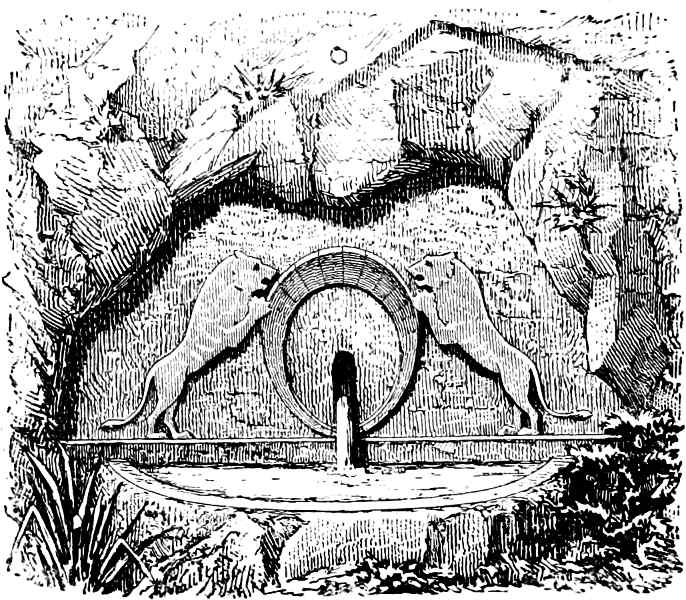
Fig. 121.—Fountain; from Layard.
The Assyrians thus found, in the very neighbourhood of their capital, great surfaces of rock almost smooth and irresistibly inviting to the chisel. Their unceasing expeditions led them into countries where, on every hand, they were tempted by similar facilities for wedding the likenesses of their princes to the very substance of the soil, for confiding the record of their victories to those walls of living rock that would seem, to them, unassailable by time or weather. Their confidence was often misplaced. In some places the water has poured down the face of the rock and worn away the figures; in others, landslips have carried the cliff and its sculptures bodily into the valley. In some instances, no doubt, the accumulations cover figures still in excellent condition, but several of these fallen sculptures have already been cleared.
[231]
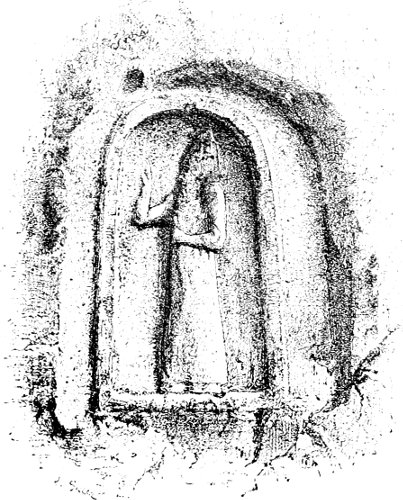
Fig. 122.—Assyrian bas-relief in the Nahr-el-Kelb. Drawn by P. Sellier.
We have already spoken of the bas-relief of Korkhar;[264] it is about three hundred miles from Nineveh, but the Assyrian conquerors left traces of their passage even farther from the capital than that, in the famous pass of the Lycos, for instance, near modern Beyrout, and now called Nahr-el-Kelb, or river of the dog. A rock-cut road passes through it, which has been followed from the remotest times by armies advancing from the north upon Egypt, or from the latter country towards Damascus and the fords of the Euphrates. Following the Pharaohs of the nineteenth dynasty, Esarhaddon caused his own image and royal titles to be cut in this defile; they may still be seen there, on rocks whose feet stand in the bed of the torrent (Fig. 122).[265]
[232]
Without going so far as northern Syria we might find, if we may believe the natives of the country, plenty of sculptures in the valleys that open upon the Assyrian plain if they were carefully explored. Near Ghunduk, a village about forty-five miles north-west of Mossoul, Layard noticed two reliefs of the kind, one representing a hunt, the other a religious sacrifice.[266] But after Bavian the most important of all these remains yet discovered is that at Malthaï. This village is about seventy-five miles north of Mossoul, in a valley forming one of the natural gateways of Kurdistan. The road by which the traveller reaches Armenia and Lake Van runs through the valley.[267] There, in the fertile stretch of country that lies between two spurs standing out from the main chain, stands a tell, or mound, which seems to have been raised by the hand of man. Place opened trenches in it without result, but he himself confesses that his explorations were not carried far enough, and, the beauty of the site and other things being considered, he persists in believing that the kings of Assyria must have had a palace, or at least a country lodge, in the valley. However this may be, the bas-reliefs, of which Place was the first to make an exact copy, suffice to prove that this site attracted particular attention from the Assyrians (see Fig. 123). They are to be found on the mountain side, at about two-thirds of its total height, or some thousand feet above the level of the valley. In former days they must have been inaccessible without artificial aids. It is only by successive falls of rock that the rough zig-zag path by which we can now approach them has been formed. The figures, larger than nature, are arranged in a long row and [235]in a single plane. Place was obliged, by the size and shape of his page, to give them in two instalments in the plate of which our Fig. 123 is a copy. In the absence of a protecting edge they have suffered more than the figures at Bavian. They have, indeed, a slight projection or cornice above, but its salience is hardly greater than that of the figures themselves.
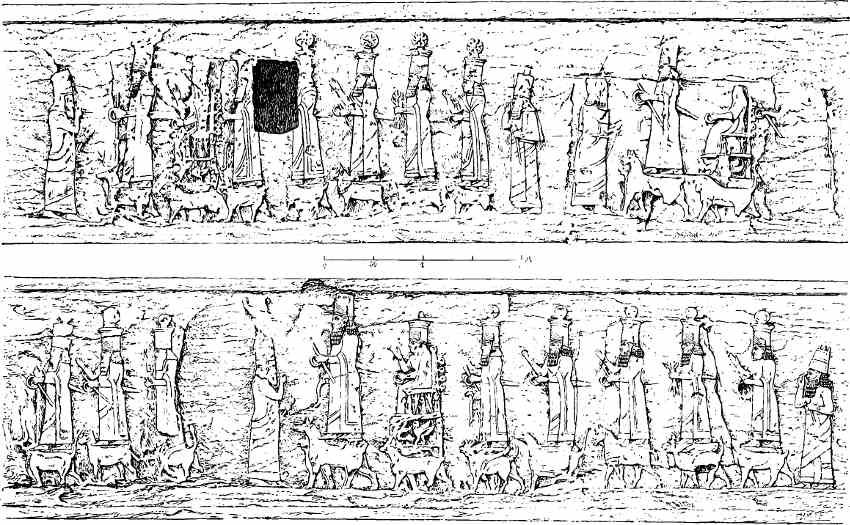
Fig. 123.—The bas-reliefs of Malthaï; from Place. About one forty-fifth of actual size.
The composition contains three groups, or rather one group repeated three times without sensible differences. The middle group, which is divided between the upper and lower parts in our woodcut, has been more seriously injured by the weather than those on each side of it; three of its figures have almost disappeared. The first group to the right in the upper division has part of its surface cut away by a door giving access to a rock-cut chamber behind the relief, like those at Bavian. It is, then, in the left-hand group that the subject and treatment can now be most clearly grasped.
In the first place, we may see at a glance that the theme is practically the same as at Bavian; it is a king adoring the great national gods. But the latter are now seven in number instead of two; instead of being face to face they are all turned in one direction, towards the king; but the latter is none the less repeated behind each group. There are some other differences. Among the animals who serve to raise the gods above the level of mere humanity we may distinguish the dog, the lion, the horse, and the winged bull. The gods are in the same attitude as at Bavian; their insignia are the same, those sceptres with a ring in the middle, which we never find except in the hands of deities. The sixth in the row also grasps the triple-pointed object that we have already recognised as the prototype of the Greek thunderbolt.[268] Finally, each god has the short Assyrian sword upon his thigh. To this there is one exception, in the second figure of each group. This figure is seated upon a richly-decorated throne, and has no beard, so that we may look upon it as representing a goddess. The last of the seven deities is also beardless, and, in spite of the sword and the standing attitude, may also be taken to represent a goddess. The tiaras, which are like those of Bavian in shape, each bear a star, the Assyrian ideogram for God.[269]
[236]
There is no inscription, but both Place and Layard agree that the proportions of the figures, and their execution, and the costume of the king, declare the work to have been carried out in the time of the Sargonids, probably under Sennacherib, but if not, during the reign either of his father, his son, or his grandson.
We have been led to give a reproduction and detailed description of these reliefs, chiefly because they acted as a school for the people about them. We find this habit of cutting great sculpturesque compositions on cliff-faces followed, on the one hand by the natives of Iran, on the other by those of Cappadocia, and in the works they produced there are points of likeness to the Assyrian reliefs that can by no means be accidental. When the proper time comes we shall, we believe, be able to show that there was direct and deliberate imitation.
It was not only on these rock-cut sculptures that the gods appeared thus perched on the backs of animals; the motive was carried far afield by small and easily-portable objects, on which it very often occurs. It is to be found on many of the cylinders; we reproduce two as examples. Each of these shows us an individual in an attitude of worship before a god standing on a bull’s back. The main difference between the two is one of style. The cylinder engraved in Fig. 124 dates from the early Chaldæan monarchy, while its companion (Fig. 125) is ascribed by M. Ménant to the Assyrian dynasty of Calah.[270]
By their simplicity of arrangement and the nudity of their field, the sculptures of Bavian and Malthaï belong in some sense to the archaic period, but their figures are designed with that finer sense of proportion that distinguished Assyrian art from the reign of Sennacherib onwards. It was, however, in the palaces that the new tendency towards grace and slenderness chiefly made itself felt. We have no sculptures to speak of from the time of Esarhaddon, but no monarch has left us monuments more numerous or in better preservation than his son Assurbanipal. A visit to London is necessary, however, for their proper examination, as[237] they have not yet been made the subject of any such publication as that devoted by Mr. Layard to remains from the time of Sennacherib and Assurnazirpal. Some idea of them may be formed, however, from the numerous fragments figured in these pages (Vol. I., Figs. 5, 27, 28; below, Figs. 162, 172, 174, 177–180, 188).
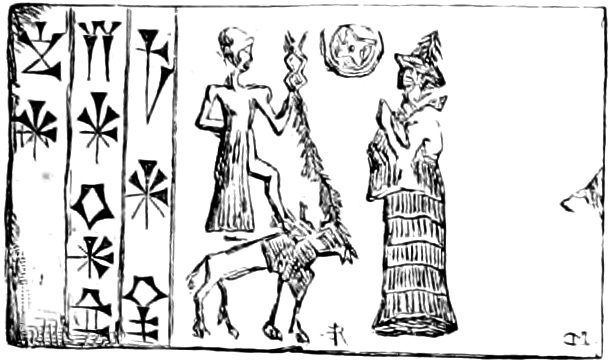
Fig. 124.—Chaldæan Cylinder. Hematite.[271]
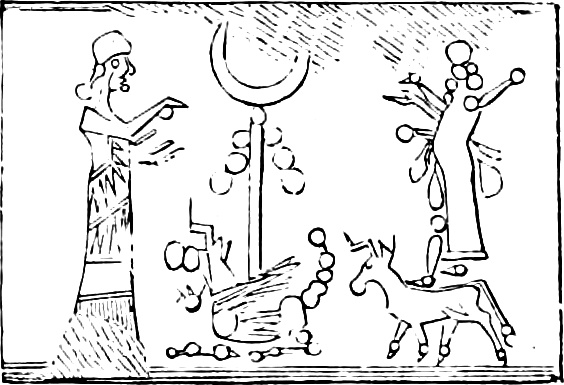
Fig. 125.—Assyrian Cylinder.[272]
Speaking generally, the sculptors of Assurbanipal were the pupils of those of Sennacherib, with, perhaps, a larger endowment of taste and skill. Under them Assyrian art aimed higher than ever before. It was fascinated by movement, and endeavoured to render its accidents and unforeseen turns. From this point of view we must draw particular attention to the pictures representing the campaign of Assurbanipal against the Elamites. In these the figures are more numerous and more closely packed than anywhere else, and the chisel has attacked episodes more complicated and more difficult to treat. Here, for instance, is a chariot upset upon the battle-field; it is turned completely over, while the struggling horses pull different ways, and the occupants are thrown out head foremost. There are many technical defects and mistakes of drawing, but the attempt is none the less interesting.
Some of the reliefs show the same confused accumulation of figures as in the time of Sennacherib. Now and then we find as many as six horizontal divisions, each from ten to fourteen inches high. But their height obeys no regular or constant rule. The central division, with the king in his chariot, is two feet high. No attempt is made to distinguish planes by varying the size of the figures, to mark the successive moments of the action by dividing the groups, or to give prominence to the main incidents; the confusion is unbroken. Here, as in all the battle pieces, a[238] very singular convention may be noticed. There are no dead or beaten Assyrians. If we may believe the artist, the kings of Nineveh won all their battles without losing a man!
The hunting scenes are arranged with more judgment. In certain respects we might place them in the same class as the great reliefs from Nimroud. By right of their dignity and breadth, the latter must be considered the masterpieces of Assyrian sculpture, but these later works can boast an amount of energy and vitality and a truthfulness of handling that are worthy of no stinted praise. The master by whom the conception was thought out abandoned the overloaded backgrounds that his immediate predecessors had brought into vogue. He concentrated his attention on the figures, to which he gave all the value he could. They stand out with singular force against a field whose unbroken surfaces happily suggest the immensity of the naked plains on which the hunts took place. We have already shown how well the distinctive features and movements of the dog, the lion, and the wild ass are rendered; in our Fig. 126 we give another example of the same kind. A sentiment of real interest is stirred in us on behalf of these wild goats with their young, who run and feed on the steppe while horsemen and beaters prepare to drive them into the treacherous nets.
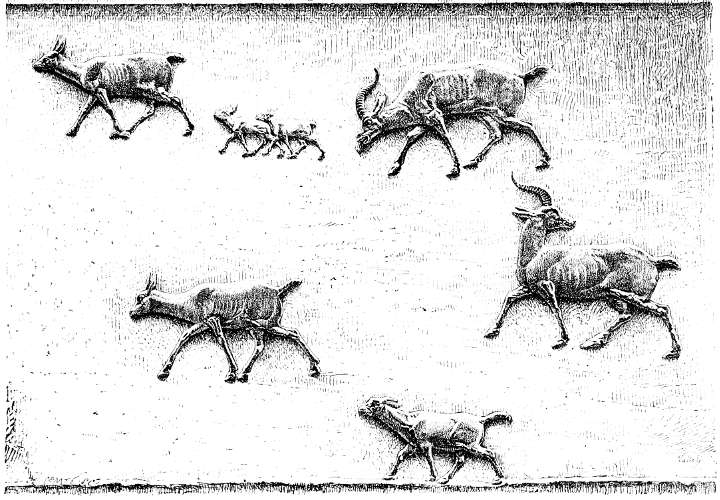
Fig. 126.—Wild goats. British Museum. Drawn by Wallet.
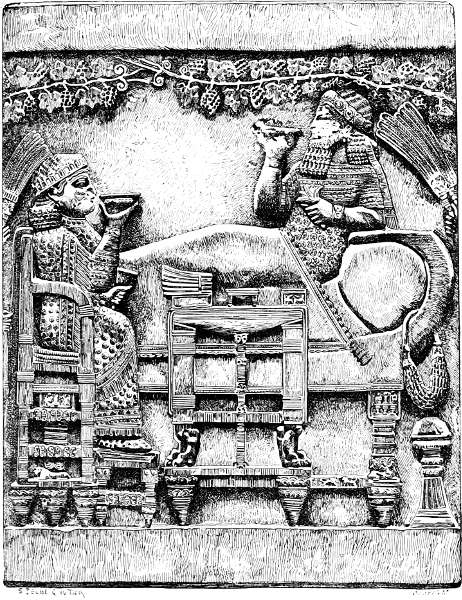
Fig. 127.—The feast of Assurbanipal. British Museum. Drawn by Saint-Elme Gautier.
Elsewhere, on the other hand, the sculptor has furnished the beds of his reliefs with certain vegetable and floral forms chiselled with the greatest care. We may give, as an example, the kind of royal park or garden in which we saw a pair of tame lions (see above, Fig. 77). Behind the animals, to the right, there is a tree round which a vine clings and mounts. It is heavy with clusters of ripe fruit, and even the curling tendrils with which its branches end are not forgotten. On the left there is a palm tree, or, at least, its trunk. Between the vine and the palm tall flowering stems rear their heads. The artist has wished us to understand that fruits, sweet-smelling flowers, and umbrageous leafage, combined to make these gardens the most agreeable of retreats for a king fatigued with war against human enemies or the beasts of the desert. The same intention is traceable on the famous slab already figured (Vol. I. Figs. 27 and 28), which shows the king and queen at table in one of these royal gardens. We reproduce the chief group on a larger scale in order that the beauty of the execution may have a chance of [241]making itself felt (Fig. 127). Notice the treatment of the vine that bends over the heads of the royal couple. The heads themselves have suffered, but all the rest of the plaque is in excellent condition. Notice the pattern on the royal robes, and the details of the furniture. The latter may be recognized as truthful[242] renderings of the magnificent chairs and tables of bronze, inlaid with ivory and lapis-lazuli, of which so many fragments have been found in the Assyrian palaces. Every detail that the chisel could render has been faithfully copied. Except in colour and material, the objects themselves are before us. The fringed coverlet thrown over the king’s knees, the cushion on which he leans, the garland thrown over the arm of his couch, the system of metal uprights and cross pieces of which the queen’s throne, the king’s bed, and the small table placed between them consist, might all be restored without difficulty. The chiselled feet of all these objects resemble fir-cones in shape. In the case of the table they are connected with its body by lion’s paws. On the lower bar of the queen’s chair there is a small couchant lion.

Fig. 128.—Terra-cotta statuette. Actual size. British Museum. Drawn by Saint-Elme Gautier.
It may be thought, perhaps with truth, that the sculptor has overdone these details, and that his figures are, in some degree, sacrificed to the decorations about them. Other examples from the same series, give a higher idea of the sculpture of this time;[243] we may cite especially a fragment possessed by the Louvre, in which the treatment is of the skilfullest (Plate X). It represents Assurbanipal in his war-chariot at the head of his army. The chariot itself, and all the accessories, such as the umbrella and the robes of the king and his attendants, are treated with great care but they do not unduly attract the eye of the spectator. We can enjoy, as a whole, the group formed by the figures in the chariot, and those who march beside and behind it. Its arrangement is clear and well balanced; there is no crowding, the spacing of the figures is well judged and the movement natural and suggestive. The king dominates the composition as he should, and his umbrella happily gathers the lines of the whole into a pyramid. In all this there is both knowledge and taste.
The best of the Assyrian terra-cottas also belong to this period. The merit of their execution may be gathered from the annexed statuette, which comes from the palace of Assurbanipal (Fig. 128). From the staff in its hands it has been supposed to represent a king, but we know that every Assyrian was in the habit of carrying a stick with a more or less richly ornamented head, and here we find neither a tiara nor the kind of necklace which the sovereign generally wore (see Fig. 116). I am inclined to think it is the image of a priest.
In conclusion we may say that, in some respects, Assyrian sculpture was in a state of progression when the fall of Nineveh came to arrest its development and to destroy the hopes it inspired.
We have now studied Mesopotamian sculpture in its favourite themes, in its principal conventions, and in the fluctuations of its taste and methods of work; we have yet to ask whether this sculpture, which differed in so many ways from the plastic art of Egypt, differed from it also in absence of colour. We have put off this question until now, because we had first to determine what materials the architect and sculptor employed, how they employed them, and what part was played by figures in relief and in the round in the architectonic creations of Chaldæa and Assyria.
[244]
In speaking of Egypt we have explained how a brilliant light destroys the apparent modelling of objects, how, by the reflections it casts into the shadows, it interferes with our power to distinguish one distant plane from another.[273] In every country where a vertical sun shines in an unclouded sky, the decorator has had to invoke the help of colour against the violence of the light, has had to accept its aid in strengthening his contours, and in making his figures and ornaments stand out against their ground. In describing Egyptian polychromy we said that we should find the same tendency among other nations, different in character and origin, but subjected to the influence of similar surroundings. We also allowed it to be seen that we should have to notice many changes of fashion in this employment of colour. Colour played a different and more important part in one place or period than in another, and it is not always easy to specify the causes of the difference. In the Egyptian monuments hardly a square inch of surface can be found over which the painter has not drawn his brush; elsewhere, in Greece for instance, we shall find him more discreet, and his artificial tints restricted to certain well-defined parts of a figure or building.
Did Assyria follow the teaching of Egypt, or did she strike out a line of her own, and set an example of the reserve that was afterwards to find favour in Greece? That is the question to be answered. Before we can do so we must produce and compare the evidence brought forward by Botta, Layard, Place and others, who saw the Assyrian sculptures reappear in the light of day. Ever since those sculptures were recovered they have been exposed to the air; they have undergone all the handling and rubbing involved in a voyage to Europe; and for the last twenty or thirty years they have been subjected to the dampness of our climate. We need, then, feel no surprise that traces of colour still visible when the pick-axe of the explorer freed the alabaster slabs from their envelope of earth have now disappeared.
Before examining our chief witnesses, the men who dug up Khorsabad, and Nimroud, and Kouyundjik, we may, to some extent, foretell their answers. We have already explained how the Mesopotamian architect made use of colour to mask the[245] poverty of his construction and to furnish the great bare walls of his clay buildings. Both inside and outside, the Assyrian palaces had the upper parts of their walls and the archivolts of their doors decorated with enamelled bricks or paintings in distemper. Is it to be supposed that where the reliefs began all artificial tinting left off, and that the eye had nothing but the dull grey of gypsum and limestone to wander to from the rich dyes of the carpets with which the floors were strewn? Nothing could well be more disagreeable than such a contrast. In our own day, and over the whole of the vast continent that stretches from China to Asia Minor, there is not a stuff, however humble, that is woven on the loom or embroidered by the needle, but betrays an instinctive feeling for harmony so true and subtle that every artist wonders at it, and the most tasteful of our art workmen despair of reaching its perfection, and yet many of these faultless harmonies were conceived and realized in the tent of the nomad shepherd. We can hardly believe that in the palace where official art lavished all its resources in honour of its master, there could be any part from which the gaiety that colour gives was entirely excluded, especially if it was exactly the part to which the eye of every visitor would be most surely attracted.
Before going into the question of evidence one might, therefore, make up our minds that the Assyrian architect never allowed any such element of failure to be introduced into his work; and the excavations have made that conclusion certain. The Assyrian reliefs were coloured, but they were not coloured all over like those of Egypt; the grain of the stone did not disappear, from one end of the frieze to the other, under a layer of painted stucco. Flandin, the draughtsman attached to the expedition of M. Botta, alone speaks of a coat of ochre spread over the bed of the relief and over the nude portions of the figures;[274] he confesses, however, that the traces were very slight and that they occurred only on a slab here and there. Botta, who saw the same slabs, thought his colleague mistaken.[275] Place is no less decided: “None of us,” he says, “could find any traces of paint upon the[246] undraped portions of the figures, and it would be very extraordinary if among so many bare arms and bare legs, to say nothing of faces, not one should have retained any vestige of colour if they had all once been painted.”[276] We might be inclined to ask whether the traces of pigment that have been noticed here and there upon the alabaster might not have been the remains of a more widespread coloration, the rest of which had disappeared. Strong in his experience, Place thus answers any doubts that might be expressed on this point: “We never found an ornament, a weapon, a shoe or sandal, partially coloured; they were either coloured all over or left bare, while objects in close proximity were without any hue but their own. Sometimes eyes and eyebrows were painted, while hair and beard were left untouched; sometimes the tiara with which a figure was crowned or the fan it carried in its hand was painted while the hand itself and the hair that curled about the head showed not the slightest trace of such an operation; elsewhere colour was only to be found on a baldrick, on sandals, or the fringes of a robe.” Wherever these colours existed at all they were so fresh and brilliant at the time of discovery that no one thought of explaining their absence from certain parts of the work by the destruction of the pigment. “How is it,” continues Place, “that, if robes were painted all over, we only found colour on certain accessories, on fringes and embroideries? How is it that if the winged bulls were coated in paint from head to foot, not one of the deep grooves in their curled beards and hair has preserved the slightest vestige of colour, while the white and black of their eyes, which are salient rather than hollowed, remain intact? Finally, we may mention the following purely accidental, and therefore all the more significant, fact: a smudge of black paint, some two feet long, was still clearly visible on the breast of one of the colossi in the doorway of room 19.[277] How can we account for the persistence of this smudge, which must have fallen upon the monster’s breast while they were painting its hair, if we are to suppose that the whole of its body was covered with a tint which has disappeared and left no sign?”
Such evidence is decisive. The colouring of the Assyrian reliefs must always have been partial. The sculptor employed[247] the painter merely to give a few strokes of the brush which, by the frankness and vivacity of their accent, should bring the frieze into harmony with the wall that enframed it. Nothing more was required to destroy the dull monotony of the long band of stone. At the same time these touches of colour helped to draw attention to certain details upon which the sculptor wished to insist.
For all this, four colours were enough. Observers agree in saying that black, white, red and blue made up the whole palette.[278] These tints were everywhere employed pretty much in the same fashion.[279]
In those figures in which drapery covered all but the head, the latter was, of course, more important than ever. The artist therefore set himself to work to increase its effect as much as he could. He painted the eyeball white, the pupil and iris, the eyebrows, the hair and the beard, black; sometimes the edges of the eyelids were defined with the same colour. The band about the head of the king or vizier is often coloured red, as well as the rosettes which in other figures sometimes decorate the royal tiara. The same tint is used upon fringes, baldricks, sandals, earrings, parasols and fly-flappers, sceptres, the harness of horses and the ornamental studs or bosses with which it was covered, and the points of weapons.[280] In some instances blue is substituted for red in these details. Place speaks of a fragment lost in the Tigris on which the colours were more brilliant than usual; upon it the king held a fan of peacock’s feathers coloured with the brightest mineral blue.[281]
When figures held a flower in their hands it was blue, and at Khorsabad a bird on the wing was covered with the same tint.[282] In some bas-reliefs red and blue alternate in the sandals of the figures and harness of the horses.[283] We find a red bow with a[248] blue quiver.[284] The flames of towns taken and set on fire by the Assyrians were coloured red in many of the Khorsabad reliefs.[285]
A few traces of colour may still be discovered upon some of Sargon’s sculptures in the Louvre and upon those of Assurnazirpal in the British Museum.[286] I could find no remains of colour either upon the reliefs of Assurbanipal or upon those of Sennacherib, where, moreover, Layard tells us he could discover none.[287]
It would be very strange however, if in these palaces of the last of the Sargonids the decorator had deliberately renounced the beauties of that discreet system of polychromy of which the traces are to be found in all the earlier palaces. It is possible that these touches of colour were reserved for the last when the palaces were erected, and that something may have happened to prevent them from being placed on the sculptures of these two sovereigns.
So far as we can discover, no trace of colour has been found on any of the arched steles or isolated statues left to us by Chaldæa and Assyria. This abstention is to be explained by the nature of the materials at the disposal of the sculptor in Chaldæa, the cradle of his art. These were chiefly igneous rocks, very hard, very close in grain and dark in colour, and susceptible of a very high polish. The existence of such a polish disposes of any idea that the figures to which it was given were ever painted. The pigment would not have stayed long on such a surface, and besides, the reds and blues known to the Ninevite artists would have had a very poor effect on a blue-black ground.
On the other hand, when they set to work to model in clay the Assyrians could give free rein to their love for colour. Most of the statuettes found in the ruins of their palaces had been covered with a single uniform tint, which, thanks to the porous nature of the material, is still in fair preservation. The tint varies between one figure and another, and, as they are mostly figures of gods or demons, the idea has been suggested that their colours are emblematic.[288] Thus the Louvre possesses a statuette from Khorsabad[249] representing a god crowned with a double-horned tiara, and covered all over, flesh and drapery alike, with an azure blue.[289] A demon with the head of a carnivorous animal, from the same place, is painted black, a colour that seems to suggest a malevolent being walking in the night and dwelling in subterranean regions.[290]
The Assyrians also made use of what has been sometimes called natural polychromy, that is to say they introduced different materials into the composition of a single figure, each having a colour of its own and being used to suggest a similar tint in the object represented. Several fragments of this kind may be seen in the cases of the British Museum.[291] We may give as examples some eyes in black marble; the ball itself is ivory while the pupil and iris are of blue paste, a sandy frit in which the colour sank deeply before firing. Beards and hair were also made of this material; they have been found in several instances, without the heads to which they belonged. In the ruins from which he took these objects, Layard saw arms, legs and torsos of wood. They were so completely carbonized by fire that they could not be removed; at the least touch they crumbled into powder.
With wood, with enamel and coloured earths, with stones, both soft and hard, and metals both common, like bronze, and precious, like gold and silver, the sculptor built up statues and statuettes in which the peculiar beauty to be attained by the juxtaposition of such heterogeneous materials, was steadily kept in view. With inferior taste and less feeling for purity of form than the Greeks, this art was identical in principal with the chryselephantine sculpture that created the Olympian Zeus and the Athene of the Parthenon.
The idea that sculpture is the art in which form is treated to the exclusion of colour is quite a modern one.[292] The sculptor of[250] Assyria was as ready to mix colour with his contours as his confrère of Egypt, but he made use of it in more sober and reserved fashion. How are we to explain the difference? It is easier to prove the fact than to give a reason for it. It may be said that the sunlight is less constant and less blinding in Mesopotamia than in the Nile valley, and that the artist was not called upon to struggle with such determination, by the profusion and brightness of his colours, against the devouring illumination that impoverishes outlines and obliterates modelling. We must also bear in mind the habits formed by work in such materials as basalt and diorite, which did not lend themselves kindly to the use of bright colours.
In any case the fact itself seems incontestable. We cannot say of the Ninevite reliefs as we said of those of Thebes, that they resembled a brilliant tapestry stretched over the flat wall-surfaces. If, in most of the buildings, touches of paint freely placed upon the accessories and even upon the figures and faces, lightened and varied the general appearance of the sculptures, still the naked stone was left to show all over the bed and over the greater part of the figures. From this we must not conclude, however, that the Assyrians and Chaldæans did not possess, and possess in a very high degree, the love for bold and brilliant colour-schemes which even now distinguishes their degenerate posterity, the races inhabiting the Euphrates valley and the plateau of Iran. But they gratified their innate and hereditary taste in a different way. It was to their woven stuffs, to their paintings in distemper and their enamelled faïence that the buildings of Mesopotamia owed that gaiety of appearance which has led us to compare them with the mosques of Turkey and Persia.
[251]
“Every Babylonian had a seal,” says Herodotus;[293] this fact seems to have struck him directly he began to explore the streets and bazaars of the great oriental city. These seals, which appear to have attracted the eye of the historian by the open manner in which they were carried and the continual use made of them in every transaction of life, public or private, are now in our museums. They are to be found in hundreds in all the galleries and private collections of Europe.[294]
When Chaldæan civilization became sufficiently advanced for writing to be in widespread use and for every man to provide himself with his own personal seal, no great search for convenient materials was necessary. The rounded pebbles of the river beds gave all that was wanted. The instinct for personal adornment is one of the earliest felt by mankind, and just as the children of to-day search in the shingle of a beach for stones more attractive than the rest, either by their bright colours, or vivid markings or transparency of paste, so also did the fathers of civilization. And when they had found such stones they drilled holes through them and made them into earrings, necklaces and bracelets. More than one set of pebble ornaments has been preserved for us in the Chaldæan tombs. In many instances forms sketched out by the accidents of nature have been carried to completion by the hand of man (Fig. 129). They were not long contented with thus turning a pebble into a jewel. The fancy took them to engrave designs or figures upon them so as to give a peculiar value to the single stone or to sets strung into a necklace, which thus became a kind of amulet (Fig. 130).
[252]
In the first instance this engraving was nothing more than an ornament. But one day it occurred to some possessor of such a stone to take an impression upon plastic clay. Those who saw the image thus obtained were struck by its precision, and were soon led to make use of it for authenticating acts and transactions of every kind. The presence of such an impression upon a document would perpetuate the memory of the man who put it there, and would be equivalent to what we call a sign manual.
But even when it developed into a seal the engraved stone did not lose its talismanic value. In order to preserve its quasi-magic character, nothing more was required than the presence of a god among the figures engraved upon it. By carrying upon his person the image of the deity in which he placed his confidence, the Chaldæan covered himself with his protection as with a shield, and something of the same virtue passed into the impressions which the seal could produce in such infinite numbers.

Fig. 129.—River pebble which has formed part of a necklace.
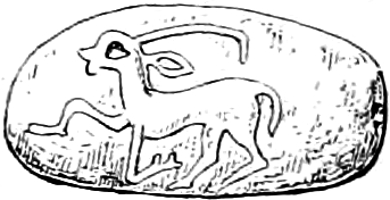
Fig. 130.—River pebble engraved; from De Gobineau.
No subject occurs more often on the cylinders than the celestial gods triumphing over demons. Such an image when impressed upon the soft clay would preserve sealed-up treasures from attempts inspired by the infernal powers, and would interest the gods in the maintenance of any contract to which it might be appended.[295]
To all this we must add that superstitions, of which traces subsist in the East to this day, ascribed magic power to certain stones. Hematite, for instance, as its name suggests, was supposed to stop bleeding, while even the Greeks believed that a carnelian gave courage to any one who wore it on his finger.
When engraving on hard stone was first attempted, it was, then, less for the love of art than for the profit to be won by the magic virtues and mysterious affinities, both of the material itself, and of the image cut in its substance. Then, with the increase of[253] material comfort, and the development of social relations, came the desire of every Chaldæan to possess a seal of his own, a signet that should distinguish him from his contemporaries and be his own peculiar property, the permanent symbol of his own person and will. So far as we can tell, none but the lowest classes were without their seals; these latter when they were parties or witnesses to a contract, were contented with impressing their fingernails on the soft clay. Such marks may be found on more than one terra-cotta document; they answer to the cross with which our own uneducated classes supply the place of a signature.
When the use of the seal became general, efforts were made to add to its convenience. In order to get a good impression it was necessary that the design should be cut on a fairly even and regular surface. The river pebbles were mostly ovoid in form and could easily be made cylindrical by friction, and the latter shape at last became so universal that these little objects are always known as cylinders. These cylinders were long neglected, but within the last few years they have been the subject of some curious researches.[296] They may be studied from two different points of view. We may either give our attention to the inscriptions cut upon them and to their general historical significance, or we may endeavour to learn what they may have to teach as to the religious myths and beliefs of Chaldæa. As for us we are interested in them chiefly as works of art. It will be our duty to give some idea of the artistic value of the figures they bear, and to describe the process by which the engraving was carried out.
The cylinders are, as a rule, from two to three-fifths of an inch in diameter, and from three quarters of an inch to an inch and a half in length. Some are as much as an inch and three quarters,[254] or even two inches long, but they are quite exceptional.[297] The two ends are always quite plain—the engraving is confined to the convex surface. As a rule the latter is parallel to the axis, but in some cases it is hollowed in such a fashion that the diameter of the cylinder is greater at the ends than in the middle (Fig. 131).
Nearly every cylinder is pierced lengthwise, a narrow hole going right through it. Those that have been found without this hole are so very few in number that we may look upon them as unfinished. In some cases the hole has been commenced at both ends, but the drill has stopped short of the centre, which still remains solid.
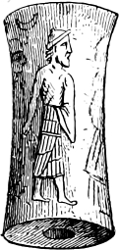
Fig. 131.—Concave-faced cylinder; from Soldi.
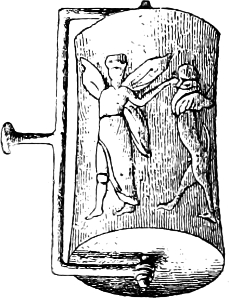
Fig. 132.—Cylinder with modern mount; from Rawlinson.
The cylinders were suspended by these holes, but how? In casting about for an answer to this question, the idea that the Babylonian attached the greatest importance to the clear reproduction, in the clay, of every detail of the design engraved upon his seal, has been taken as a starting point, and a system of mounting invented for him which would leave nothing to be desired in that respect (see Fig. 132). It is a reproduction, in small, of a garden roller; as a restoration, however, it can hardly be justified by the evidence of the monuments. Examine the terra-cotta tablets on which these seals were used, and you will see that their ancient possessors did not, as a rule, attempt to impress the whole of the scenes cut in them upon the soft clay.[255] It is rare to find an impression as sharp and complete as that on the tablet from Kouyundjik, which we borrow from Layard (Fig. 133). In the great majority of cases signatories were content with using only one side of their seals, usually the side on which their names were engraved. Sometimes when they wished to transfer the whole of their cylinder to the clay, they did so by several partial and successive pressures.[298]
The imperfect stamp with which the Chaldæans were satisfied could easily be produced without the help of such a complicated contrivance as that shown in our Fig. 132. Nothing more was necessary than to lay the cylinder upon the soft clay and press it with the thumb and fore-finger. The hole through its centre was used not to receive an armature upon which it might turn, but merely for suspending it to some part of the dress or person. In most cases it must have been hung by a simple cord passed round the neck. Now and then, however, the remains of a metal mount have been found in place, but this is never shaped like that shown above. It is a bronze stem solidly attached to the cylinder, and with a ring at its upper extremity (Fig. 134).[299] Cylinders are also found with a kind of ring at one end cut in the material itself (Fig. 135).
How were these cylinders carried? They must have been attached to the person or dress, both for the sake of the protecting the image with which most of them were engraved, and for convenience and readiness in use as seals. In Chaldæa the[256] fashion seems to have been, at one time, to fasten them to the wrist. In those tombs at Warka and Mugheir that we have described, the cylinders were found on the floors of the tomb-chambers, close to the wrist-bones of the skeletons; and the latter had not been moved since the bodies to which they had belonged were laid in the grave.[300] This fashion was apparently abandoned by the Assyrians, for in those reliefs which reproduce the smallest details of dress and ornament with such elaboration, we can never find any trace of the seal beside the bracelets. It is probable that it was hung round the neck and put inside the dress, in front, for greater security. It never occurs among the emblematic objects of which the necklace that spreads over the chest outside the robe, is made up. To this day traders in the East keep their seals in a little bag which they carry in an inside pocket.
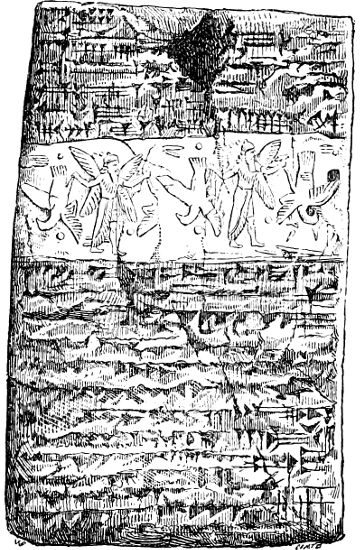
Fig. 133.—Tablet with impression from a cylinder; from Layard.
[257]

Fig. 134.—Cylinder with ancient bronze mount; from Soldi.

Fig. 135.—Cylinder and attachment in one; from Soldi.

Fig. 136.—Chaldæan cylinder; from Ménant.
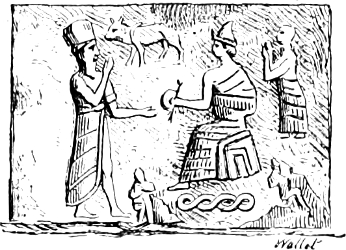
Fig. 137.—Impression from the same cylinder.
The practical requirements of the Mesopotamians were satisfied with a hasty impression from their seals, but we must be more difficult to please. Before we can study the cylinder with any completeness we must have an impression in which no detail of the intaglio is omitted; such a proof is to be obtained by a complete turn of the cylinder upon some very plastic material, such as modelling-wax, or fine and carefully mixed plaster-of-Paris. The operation requires considerable skill. When it is well performed it results in a minute bas-relief, a flat projection, in reverse, of the whole intaglio. The subject represented and its execution can be much better seen in a proof like this than on the original object, it is therefore by the help of such impressions that cylinders are always studied; we make use of them throughout this work. Our Figs. 136 and 137 give some idea of the change in appearance between a cylinder and its impression.
[258]
The cutting on the cylinders, or rather on all the engraved stones of western Asia, is in intaglio. This is the earliest form of engraving upon pietra-dura in every country; the cameo is always a much later production; it is only to be found in the last stage of development, when tools and processes have been carried to perfection. It is much easier to scratch the stone and then to add with the point some definition to the figure thus obtained, than to cut away the greater part of the surface and leave the design in relief. The latter process would have been especially difficult when the inscriptions borne by many of the seals came to be dealt with. What long and painful labour it would have required to thus detach the slender lines of the cuneiform characters from the ground! And why should any attempt of the kind be made? As soon as these engraved stones began to be used as seals, there was every reason why the ancient process should be retained. The designs and characters impressed upon deeds and other writings were clearer and more legible in relief than in intaglio. And it must be remembered that with the exception of some late bricks on which letters are raised by wooden stamps, the wedges were always hollowed out. We find but one period in the history of Chaldæa when, as under the early dynasties of Egypt, her written characters were chiselled in relief. It is, then, apparent that the artists of Chaldæa would have done violence to their own convictions and departed from long established habits, had they deserted intaglio for work in relief. That they did not do so, even when their skill was at its highest point, need cause us no surprise.
The Chaldæans naturally began with the softest materials, such as wood, bone, and the shells picked up on the shores of the Persian Gulf. Fragments of some large pearl oysters and of the Tridacna squamosa, on which flowers, leaves, and horses have been engraved with the point, have been brought from lower Chaldæa to London (see Fig. 138).[301] Limestone, black, white, and veined marble, and the steatite of which most of the cylinders are made, were not much more difficult. These substances may easily be cut with a sharp flint, or with metal tools either pointed or chisel-shaped. With a little more effort and patience still harder materials, such as porphyry and basalt; or the ferruginous marbles—serpentine, syenite, hematite—could be overcome. The oldest cylinders[259] of all, those that are attributed to the first Chaldæan monarchy, are mostly of these stubborn materials; their execution was easy enough to the men who produced the statues of Gudea.[302] All that such men required to pass from the carving of life-size figures to the cutting of gems was good eyesight and smaller tools.
It was only towards the end of this period that more unkindly stones began to be used, such as jasper and the different kinds of agate, onyx, chalcedony, rock-crystal, garnets, &c. The employment of such materials implies that of the characteristic processes of gem-cutting, whose peculiarity consists in the substitution of friction for cutting, in the supercession of a pointed or edged tool by a powder taken from a substance harder, or at least as hard, as the one to be operated upon. “The modern engraver upon precious stones,” says M. Soldi, “sets about his work in this fashion. He begins by building up a wax model of his proposed design upon slate. He then takes the stone to be engraved, and fixes it in the end of a small wooden staff. This[260] done he makes use, for the actual engraving, of a kind of lathe, consisting of a small steel wheel which is set in motion by a large cast-iron flywheel turned by the foot. To the little wheel are attached small tools of soft iron, some ending in a rounded button, others in a cutting edge. The craftsman holds the staff with the stone in his left hand; he brings it into contact with the instrument in the lathe, while, from time to time, he drops a mixture of olive oil and diamond dust upon it with his right hand; with the help of this powder the instrument grinds out all the required hollows one after the other.”[303]

Fig. 138.—Engraved shell. British Museum.
The first engravers who attacked precious stones had no diamond dust. They supplied its place with emery powder, which was to be found in unlimited quantities in the islands of the Archipelago, whence it was imported by the Phœnicians at a very early date. Moreover there was nothing to prevent them crushing the precious stones belonging to the class called corundum, such as sapphires, rubies, amethysts, emeralds, and the oriental topaz. No doubt the lathe or wheel was a comparatively late invention. M. Soldi thinks it hardly came into use in Mesopotamia till about the eighth century B.C. Before that the continuous rotary movement that was so necessary for the satisfactory conduct of the operation was obtained by other means. According to M. Soldi they must have employed for many centuries a hand-drill turned by a bow, like that of a modern centre-bit or wimble.[304]
[261]
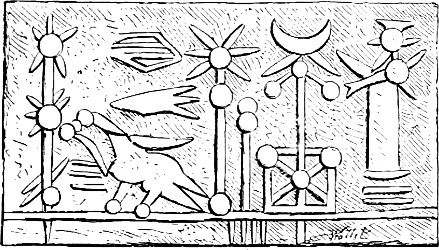
Fig. 139.—Chalcedony cylinder. British Museum.
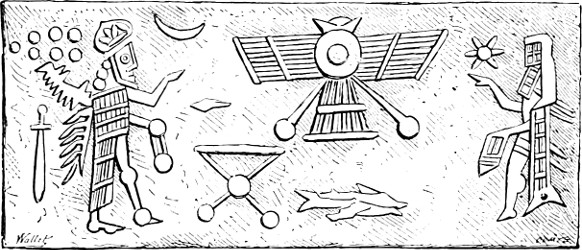
Fig. 140.—Cylinder of black jasper. British Museum.
On examining the oldest Mesopotamian engravings on precious stones a skilled craftsman would see at once that nearly all the work had been done with only two instruments—one for the round hollows and another for the straight lines. In the designs cut with these tools we find curiously complete likenesses of the small lay figures with ball-and-socket joints used by painters. Some idea of the strange results produced by these first attempts at gem-engraving may be formed from our reproductions of two cylinders in the collection at the British Museum. The influence of the process, the tyranny of the implement, if we may use such a phrase, is conspicuous in both. Note, for instance, in the first design, which is, apparently, a scene of sacrifice (Fig. 139), how the head and shoulder of the figure on the left are each indicated by a circular hollow. The same primitive system has been used in the cylinder where the god Anou is separated from another deity by the winged globe (Fig. 140). The design is here more complex. The bodies of the two divinities and the wings of the[262] globe are indicated by numerous vertical and horizontal grooves set close together; but the circular hollows appear not only in the globe and in the piece of furniture that occupies the foreground, but also in the knees, calves, ankles, and other parts of the two figures.
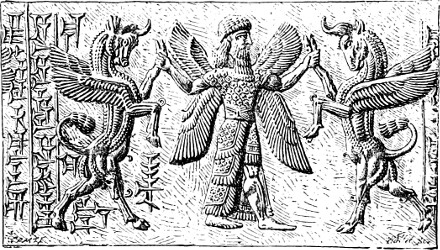
Fig. 141.—Assyrian cylinder. British Museum. Drawn by Wallet.
As time went on they learnt to use their tools with more freedom and more varied skill. We shall not attempt to follow M. Soldi in tracing the art through all its successive stages.[305] As an example of the skill to which the Mesopotamian artist had attained towards the seventh century B.C. we may quote a splendid cornelian cylinder belonging to the British Museum (Fig. 141).[306] The subject is extremely simple. In its general lines it continually recurs on the bas-reliefs and gems of the Sargonid period. A winged personage, with his arms extended, stands between two fantastic winged quadrupeds and grasps each by a fore-paw. The chief actor in the scene is very like the winged genius whom we encounter so often on the walls of the palaces (see above, Fig. 36), while both in the exaggerated modelling of the legs and in the care with which the smallest details of the costume are carried out, the special features that distinguished the sculpture of the time may be recognized. The execution is firm and significant, though a little dry and hard. It is made up of short cuts, close together; the engraver did not understand[263] how to give his work that high polish and finish that enabled the Greeks to express the subtlest contours of the living form.
From this period onwards the artists of Mesopotamia and, in later years, those who worked for the Medes and Persians, put into use all the precious stones that were afterwards engraved by the Greeks and Romans. Their tools and processes cannot have greatly differed from those handed down by antiquity to the gem-cutters of the middle ages and the Italian renaissance. If their results were inferior to those obtained by Pyrgoteles and Dioscorides,[307] it was because oriental art never had the knowledge of the nude or the passion for beauty of form which made Greek art so original. Intaglio is only a bas-relief reversed and greatly diminished in size; the style and spirit of contemporary sculpture are reflected in it as the objects of nature are reflected in the mirror of the human eye. For want of proper tools it may lag behind sculpture, but it will never outstrip it.
The close connection between the two arts is nowhere more strongly marked than in some of the cylinders belonging to the first monarchy. Although the artist was content in most cases with mere outlines, he now and then lavished more time and trouble on his work, and gave to his modelling something of the breadth and truth that we find in the statues from Tello. These merits are seen at their best in a fine cylinder belonging to the New York Museum (Fig. 142). It represents Izdubar and his companion Hea-bani, the Hercules and Theseus of Chaldæan mythology, engaged in a hand-to-hand struggle with a wild bull and a lion, a scene which may be taken as personifying the struggle between the divine protectors of mankind on the one hand, and the blind forces of nature assisted by all the supernatural powers of evil on the other.[308] We have already had occasion to speak of Izdubar, who is always represented nude and very muscular. As for his companion, he combines the head and bust of a man with the hind quarters of a bull.[309][264] There is a certain conventionality in the attitude of the lion and in the way his claws are represented, and the movement of Hea-bani’s left arm is ungraceful; but the antelope under the inscription and the bull overpowered by Izdubar are rendered with a truth of judgment and touch that all connoisseurs will appreciate. We may say the same of the two heroes; their muscular development is given with frankness but without exaggeration; the treatment generally is free and broad.
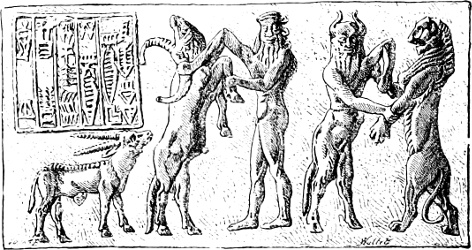
Fig. 142.—Chaldæan cylinder. Marble or porphyry. New York Museum.
Between this cylinder and the one quoted on the last page as among the masterpieces of Ninevite art, there is the same difference as between the statues of Tello and the bas-reliefs of Nimroud and Khorsabad. The engraver, who some fifteen centuries before our era, cut upon marble this episode from one of the favourite myths of Chaldæa, may not have been able to manipulate precious stones with such ease and dexterity as the artist of Sargon or Sennacherib who made the cylinder in the British Museum, but he had the true feeling for life and form in a far higher degree.
So far we have studied the cylinders from the standpoint of their use and the material of which they are composed; we have described the processes employed in cutting them and the changes undergone in the course of centuries in the style of art they display. We have yet to speak of the principal types and scenes to be found upon them. We cannot pretend, however, to give the details in any complete fashion. For that a whole book would be necessary, such as the one promised by M. Ménant.
This is not because the themes treated show any great variety;[265] they have, in fact, far less originality than might at first be thought. Compare the impressions from different cabinets and attempt to classify them in order of subject; you will find the same types and scenes repeated, with but slight changes, on a great number of specimens, and you will soon discover that hundreds of cylinders may be divided into a very small number of groups. In each group, too, many individual specimens will only be distinguishable from each other by their inscriptions. All this is to be easily accounted for.
The finest cylinders, whether in design or material, must have been commissioned by kings, nobles, and priests, while the common people bought theirs ready-made. When any one of the latter wished to buy a seal he went to the merchant and chose it from his stock, which was composed of the patron gods and religious scenes which happened to be most in fashion at the time. As soon as the purchaser had made his selection he caused his own name to be engraved in the space left for the purpose, and it was this inscription, rather than the scene beside it, that gave its personal character to the seal. The production of these objects was a real industry, carried on all over the country and for many centuries, and continually reproducing the same traditional and consecrated types.
M. Ménant believes himself able to determine where most if not all the cylinders of the early monarchy were produced. He talks of the schools of Ur, of Erech, of Arade, and in many cases the signs on which he relies appear to have a serious value. But we shall not attempt even to give a résumé of the arguments he uses to justify the classification he was the first to sketch out; we could not do so without multiplying our illustrations and extending our letterpress to an extravagant degree. Judging from the examples quoted by M. Ménant himself in support of his own theory, the workshops of different towns in the course of a single period were distinguished rather by their predilection for particular themes than by anything peculiar in their styles of execution; the same processes and the same way of looking at living forms may be recognised in all. We may, then, treat all these early works of the Chaldæan gem-engravers as the productions of a single school; and in this history we only propose to note and discuss the general direction of the great art currents. We cannot follow all the arms and side streams into which the main river is subdivided.
[266]
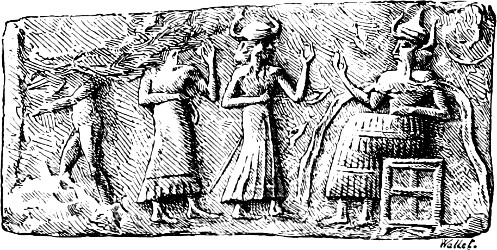
Fig. 143.—Chaldæan cylinder. Green serpentine. Louvre. Drawn by Wallet.
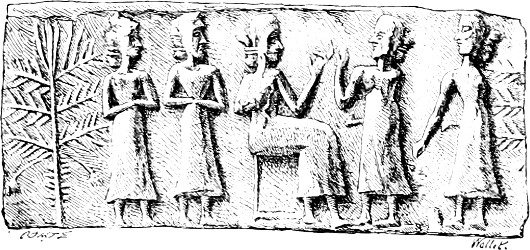
Fig. 144.—Chaldæan cylinder. Basalt. Louvre. Drawn by Wallet.
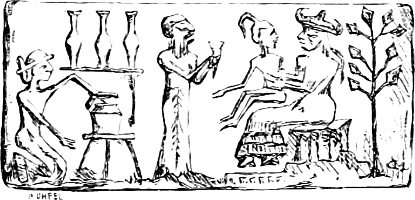
Fig. 145.—Chaldæan cylinder. Basalt. Louvre.
One of the favourite subjects at this time was the scene of worship we have already encountered on the Sippara tablet (Vol. I., Fig. 71.); in the cylinders as well as on the larger tablet the worshipper is led by a priest into the presence of an enthroned divinity. The temple, indicated in the tablet, is suppressed in the seals, where the space is so much less, but otherwise the composition is the same. It would be difficult to imagine anything better fitted for objects of a talismanic character, which were also to be used for the special purpose of these cylinders. Whenever the Chaldæan put his seal upon clay he renewed the act of prayer and faith which the engraver had figured upon it; he took all men to witness his faith in the protection of Anou, of Samas, or of some other god. We need therefore feel no surprise at encountering this subject upon the cylinders of Ourkam, (Vol. I., Fig. 3), and his son Dungi,[310] princes in whom the oldest Chaldæan royalty was embodied. Both of these seals seem to have been engraved in Ur, the home of that dynasty. We have given several other variants of the same theme (Vol. I., Figs. 17–20, and above, Figs. 40 and 124);[311] here are two more found by M. de Sarzec at Tello (Figs. 143, 144). In the first of these two streams seem to flow from the shoulders of the seated deity; they may have some connection with that worship of the two great rivers whose traces appear elsewhere.[312] In the second example, which is not a little[267] rough and summary in its execution, the figures are believed to be those of women, on account of the way in which the hair is arranged. It is clubbed with ribbons at the back of the neck. The artist seems also to have tried to suggest the amplitude of the female bosom. On the whole we may believe the scene to represent a goddess—Istar perhaps—surrounded by worshippers of her own sex. In the Louvre there is a cylinder with a scene of the same kind, but more complex and, for us, more obscure (Fig. 145). A seated figure, apparently female from the long hair flowing over the shoulders, sits upon a low stool and holds a child upon her knees. In front of the group thus formed stands a man who seems to be offering some beverage in a horn-shaped cup. Behind him there are three not inelegant vases upon a bracket, and a man kneeling beside a large jar upon a tripod. The latter holds in his hand the spoon with which he has filled the goblet presented by his companion. We may, perhaps, take the whole[268] scene as a preparation for a feast offered to one of those goddesses of maternity whom we find on the terra-cottas (see above Fig. 107). We shall not here go into the question whether we may see in all this an episode in the legend of the ancient Sargon, the royal infant whom his mother exposed upon the water after his clandestine birth; after commencing like Moses, the hero of this adventure was found and brought up by a boatman, and became the founder of an empire when he grew to manhood, like Cyrus and Romulus.[313]
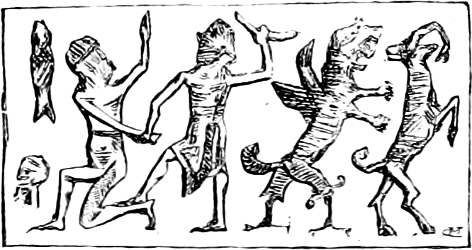
Fig. 146.—Chaldæan cylinder. Montigny collection.
If we may believe M. Ménant some of the cylinders belonging to this period represent human sacrifices. Such he supposes to be the theme of the example reproduced in Fig. 146. The figure with arm uplifted would be the priest brandishing his mace over the kneeling victim, who turns and begs in vain for mercy. The issue of the unequal struggle is hinted at by the dissevered head introduced in the lower left-hand corner. To make our description complete we must notice the subordinate passage, a rampant leopard, winged, preparing to devour a gazelle.[314] The conjecture is specious, but until confirmatory texts are discovered, it will remain a conjecture. Those texts that have been quoted in support of it are vague in the first place, and, in the second, they appear to refer less to the sacrifice of human victims than to holocausts of infants, who must have been thrown into the flames as they were in Phœnicia. Why should we not look upon it as an emblem of the royal victories, an emblem similar in kind to the group that recurs so persistently in Egyptian sculpture, from the time of the ancient Empire to that of the Ptolemies?[315] The[269] gesture in each case is almost exactly the same; the weapon raised over the vanquished both in the Theban relief and the Chaldæan cylinder is well fitted to suggest the power of the conqueror and his cruel revenges. We have reproduced this example less for its subject than for the character of its execution. The figures are modelled in a very rough-and-ready fashion; we might almost call it a sketch upon stone. The movement, however, of the two chief figures is well understood and expressive.
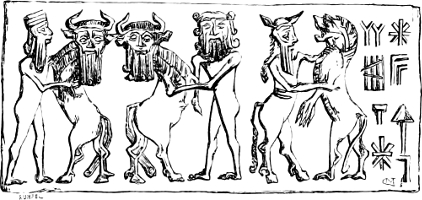
Fig. 147.—Chaldæan cylinder. Basalt.
Another and perhaps still richer series is composed of stones on which the war waged by Izdubar and his faithful Hea-bani against the monsters is figured.[316] We have already shown Izdubar carrying off a lion he has killed (see above, Fig. 35). Another task of the Mesopotamian Hercules is shown in Fig. 147, where he is engaged in a struggle with the celestial human-headed bull, who has been roused to attack the hero by Istar, whose love the hero has refused.[317]
In this cylinder it will be noticed that Izdubar is repeated twice, once in profile and once full face. Close to him Hea-bani is wrestling with a lion, the bull’s companion and assistant. In another example we find Izdubar alone (Fig. 148) and maintaining a vigorous struggle against a bull with long straight horns, and at the same time turning his head so as to follow a combat between a lion and ibex that is going on behind him.[318] The action of both these latter animals is rendered with great freedom and truth. We[270] have already had to draw attention to the merit that distinguishes not a few of the animals in these cylinders.[319] This merit is to be found in almost every composition in which the artist has been content to make use of natural types. It is only when he compiles impossible monsters that the forms become awkward and confused. An instance of this may be found in a cylinder found by M. de Sarzec at Tello, on which winged quadrupeds seizing and devouring gazelles are portrayed (Fig. 149). Too many figures are brought together in the narrow space and the result is confusion. We are not, however, disposed to accept this cylinder as belonging to the first years of Chaldæan art. It is of veined agate, a material that was not among the earliest employed; but there are many more on which similar scenes are engraved, and which, by their execution, may be safely placed among the most ancient products of art.[320]
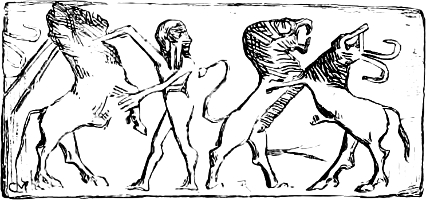
Fig. 148.—Chaldæan cylinder. Black marble. French National Library.
One of the earliest types invented by the imaginations of these people was that of the strange and chaotic beings who, according to the traditions collected by Berosus, lived upon the earth before the creation of man, creatures in which the forms and limbs afterwards separated and distinguished by nature, were mixed up as if by accident. The text in question is of the very greatest interest and value. It proves that the composite figures of which Chaldæan art was so fond were not a simple caprice of the artists who made them, but were suggested by a cosmic theory of which they formed, as it were, a plastic embodiment and illustration.
“There was a time,” says Berosus, “when all was water and darkness, in which monstrous animals were spontaneously engendered: men with two wings, and some with four; with two faces, and two heads, the one male and the other female, and with[271] the other features of both sexes united in their single bodies; men with the legs and horns of a goat and the feet of a horse; others with the hind quarters of a horse and the upper part of a man, like the hippocentaurs. There were also bulls with human heads, dogs with four bodies and fishes’ tails, and other quadrupeds in which various animal forms were blended, fishes, reptiles, serpents, and all kinds of monsters with the greatest variety in their forms, monsters whose images we see in the paintings of the temple of Bel at Babylon.”[321] Of all these fantastic creatures there are hardly any but may be found on some cylinder, and if there be one or two still missing, it is very probable that future discoveries will fill up the gap.
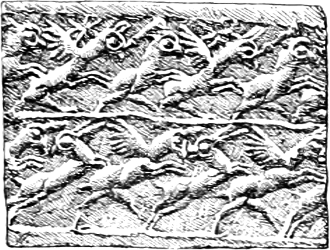
Fig. 149.—Chaldæan cylinder of veined agate. Louvre.
Before quitting these remains from the earliest school of gem engraving, we must draw attention for a moment to the way in which it treats costume. In most cases the folds of the stuff are imitated by very fine parallel strokes. Sometimes, as, for instance, in the figure on the right of Ourkam’s seal (Vol. I., Fig. 3), these close and slightly sinuous lines extend without interruption from the top to the bottom of the dress, but in most cases they are crossed by several transverse bands, probably coloured, either woven into the material or sewn upon it (see Vol. I., Figs. 3, 17, and 20, and above, Figs. 39 and 41). We have already encountered this method of treating drapery in certain statuettes from the same place and time (Figs. 99 and 100), but we never find it in Assyria or in Chaldæa after the fall of Nineveh, either in statues or on engraved stones.
There is another characteristic detail that should not be forgotten, namely, the caps turned up at the side in the shape of horns (Vol. I., Fig. 17 and above, Fig. 143). By this head-dress[272] and the plaited robes a Chaldæan cylinder may be at once recognised as dating from these remote ages. Fashions and methods of execution changed as soon as the preponderance of Assyrian royalty was assured. Artists of merit must then have migrated northwards and opened workshops in the cities of the Tigris; but production was never so great as in the south. Every traveller in those regions notices that there are far more cylinders to be purchased in the bazaars of Bagdad and Bassorah than in those of Mossoul.[322] The glyptic art of Assyria was an exotic, like her sculpture and her architecture.
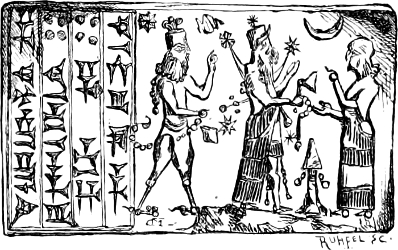
Fig. 150.—Archaic Assyrian cylinder. In the Uffizi, Florence.
In attempting to define the characteristics of the Assyrian cylinders, and to distinguish them from those of Chaldæa, we may take as points of departure and as types of the new class, a few seals bearing legends that enable us to give them a positive date. Thus we may learn from a signet that once belonged to the governor of Calah what the execution of the artists employed by the princes of Elassar and Nimroud was like (Fig. 150). We need not hesitate to assign this cylinder to the first Assyrian monarchy. The workmanship, at once careful and awkward, belongs to a time when all the difficulties of gem engraving had not yet been overcome. In the wings of the genius and the legs of the personage who follows him the management of the instrument used is that of an art still in its infancy. In this seal then we have a valuable example of what we may call The Archaic Assyrian Cylinder. We have already figured several in which the same characteristics appear (Figs. 124, 139, and 140). In the same class we may put a number of cylinders on which scenes of worship are represented with slight variations[273] (Figs. 151 and 152).[323] The figure of the king standing before the altar with his right hand upon his bow resembles the Assurnazirpal in several of the Nimroud reliefs (see above, Fig. 140). The Balawat gates and other remains from the same time have already made us acquainted with the accessories of the act of worship figured in the last of these two cylinders, especially with the short column surmounted by a cone (Plate XII).
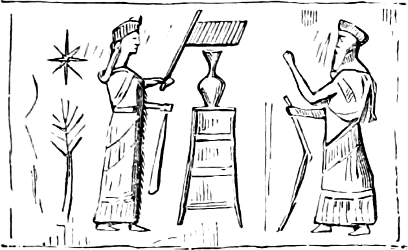
Fig. 151.—Assyrian cylinder. Serpentine. National Library, Paris.
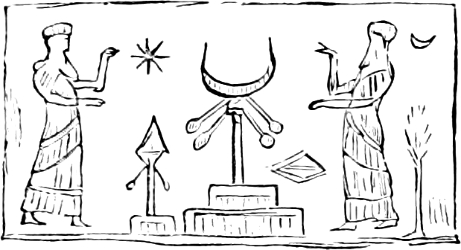
Fig. 152.—Assyrian cylinder. Serpentine. National Library, Paris.
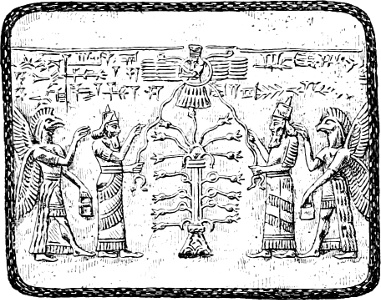
Fig. 153.—Assyrian cylinder. British Museum. Drawn by Wallet.
We now come to the epoch of the Sargonids with its still more refined and skilful art, of which an exquisite cylinder in the British Museum may be taken as an example (Fig. 153). The name of a personage called Musesinip has been read upon[274] it, and it is believed to be a reduction from a contemporary bas-relief. In the centre appears the holy tree with the supreme deity floating over it in the winged disk. On each side of the tree is the figure of a king with a winged eagle-headed genius behind him. These last-named creatures have their right hands raised, while in their left they hold the bronze buckets we have already encountered at Nimroud (Vol. I., Fig. 8). There is one detail which is not to be found, so far as I know, in the bas-reliefs, namely, the double cord that descends from the winged disk into the hands of the king. The artist, no doubt, meant to symbolize by this the communication established by prayer between the prince and his divine protector.
Among the dated and authenticated examples from this epoch the cylinder inscribed with the name of Ursana, king of Musasir and adversary of Sargon, may be quoted.[324] We do not reproduce it because it differs so little from the example of Assyrian gem engraving given in our Fig. 141. The same genius appears in the middle, but instead of two winged monsters he holds two ostriches by the neck. We have already encountered this fight between a man and an ostrich on a stone dating from the same century (Fig. 75). We may name as a last example the stone found by Layard at Kouyundjik, which may be the very signet of Sennacherib himself (Vol. I., Fig. 70).
If we place all these impressions side by side we shall find they have a certain number of common characteristics which will enable us to recognize those of Assyrian parentage even when they bear no lettering, or when their inscriptions tell us nothing as to their origin. In the first place they are mostly of fine materials, such as chalcedony or onyx. Secondly, they contain sacred emblems and types that are not to be found in the primitive arts of Chaldæa, such as the mystic tree, the winged globe, the eagle-headed genius, &c. Thirdly, the fantastic animals of Assyria are different in general appearance from those of the southern kingdom; and, finally, the costume of the two countries is not the same. In the cylinders from Calah and Nineveh we find neither the flounced robes nor the cap with turned-up borders. As in the palace reliefs, the mantle-fringes cross the figure slanting-wise—an obliquity which affords a ready[275] means of distinguishing between a native of Assyria and one of Chaldæa.
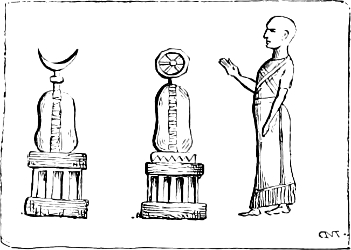
Fig. 154.—Chaldæan cylinder dating from the second monarchy. Black jasper. British Museum.

Fig. 155.—Impression of a cylinder on a contract; from Ménant.[2]
The use of the cylinder persisted after the fall of Nineveh and throughout the second Chaldæan monarchy, but the types from this late epoch display very little invention or variety. The most common of all shows a personage standing bare-headed before two altars, one bearing the disk of the sun, the other that of the moon (Fig. 154).[325] This individual is sometimes bearded, sometimes shaven. His costume is neither that of early Chaldæa nor the twisted robe of Assyria. Sometimes one of the altars or the field is occupied by a monster with a goat’s head and a fish’s body and tail, as in the impression left by a cylinder on a contract dated “the twelfth year of Darius, king of Babylon, king of the nations” (Fig. 155).[326] The use of these types lasted[276] in the valley of the Euphrates all through the Achæmenid supremacy. No inscriptions were used. Names and dates were engraved by hand on the clay after the seal had been placed upon it. We can see clearly from the monotony of the images, which are repeated almost unchanged on hundreds of tablets, that the art of gem-engraving was in full decadence. The people were enslaved, they lived upon the memory of their past, creating neither new forms nor new ideas. They no longer attempted to make their seals works of art; they looked upon them as mere utensils.

Fig. 156.—Cylinder with Aramaic characters. Vienna Museum.
Cylinders are sometimes found in this region inscribed with Aramaic characters, like the weights from Nimroud. Such, for instance, is one representing a dismounted hunter meeting the charge of a lion,[327] while his horse stands behind him and awaits the issue of the struggle (Fig. 156). The costume of the hunter is neither Assyrian nor Chaldæan. He has been supposed to represent a Scythian. The Scythian figured at Bisitun has the same pointed bonnet or cowl. Cylinders of this kind will long be a difficulty for the classifier.[328]
The cylindrical form was not the only one used by the inhabitants of Mesopotamia for their seals. Small objects in pietra dura of a different shape are now often found in the country, and are beginning to hold their own in our museums;[277] these are pyramids, spheroids, and especially cones. Every cone, except one or two which may never, perhaps, have been finished, is pierced near its summit with a hole for suspension. There has never been any doubt from the first that they were signets. Their bases, which are generally flat, but sometimes convex or concave, are always engraved in intaglio. The impression was thus obtained at one stroke, at one pressure of the hand, and it was in all probability the greater ease with which that operation could be carried out that in time led to the supercession of the cylinder by the cone. The use of the latter became almost universal in the time of the Seleucidæ and Parthians.
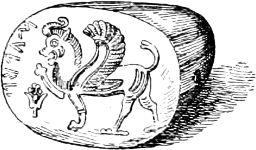
Fig. 157.—Cone. Sapphirine chalcedony.[329]

Fig. 158.—Cone. Sapphirine chalcedony.[330]
It is when they grow old that both nations and individuals turn their attention to ease and comfort. The Chaldees were long contented with the cylinder, although, as a seal, it was a very imperfect contrivance. The ancient monarchy never seems to have made use of flat signets. The impression of one has been sought for in vain on those contracts of the time of Hammourabi, where so many cylinders have left their mark. The oldest document on which the trace of a circular seal has been recognized belongs to the northern kingdom, and dates from the reign of Bin-Nirari, who occupied the throne of Assyria towards the end of the ninth century B.C. From this moment the use of the cone becomes rapidly common. Under the Sargonids, and still more during the second Chaldee monarchy and under the Achæmenids, it superseded the cylinder. The dates inscribed on the tablets prove their age; the space on the cones themselves was too narrow, as a rule, for a legend. On a few specimens we find one or two characters engraved, generally a divine monogram or the traditional emblems of the sidereal powers. A few cones have inscriptions in Aramaic characters (see Fig. 157); on the example[278] figured we again encounter the strange composite beast we have already seen upon a stone tablet and a cylinder (Figs. 87 and 141). In spite of the alphabet employed, this cone must have been engraved either in Nineveh or its neighbourhood.
The narrowness of the field explains the want of variety in the subjects. In a small circle like this there was no room for more than a single figure with a few accessories, or, at most, for two figures. We cannot expect to find scenes as varied and complicated as those upon the cylinders. A very small number of the simplest themes formed the stock-in-trade of the engraver.
There are about four hundred specimens in the British Museum, and as many more in Paris, in the Louvre and the Cabinet des Antiques. In the presence of them all we can only confess to a feeling of embarrassment. They are never arranged in chronological order; Assyrian intaglios are mixed up with those from Chaldæa, from Phœnicia and Persia. Certain types were reproduced and copied in this region even as late as the Arsacids and Sassanids. We shall choose a few, however, which we may with some certainty attribute to Assyria. There is in the first place one on which two winged figures seem to be adorning the sacred tree (Fig. 158). We find the impression of an almost exactly similar cone on a contract dated 650 B.C. The only differences lie in the more careful execution of the latter seal and in the substitution of the radiant disk of the sun for the crescent moon.[331] In another impression we find the radiant disk changed into the winged globe.[332] The shape and fringe of the Assyrian robe may be recognized in the intaglio in which a man with long hair and beard does homage to a winged genius (Fig. 159). The worshipper is standing, but behind him appears a kneeling figure. This posture is rare, but it is met with in a few instances on monuments from this period, and is always used to suggest the profound respect with which a man does obeisance either to his god or his king.[333]
[279]
We need not hesitate to ascribe to the second Chaldæan monarchy a cone with a bearded individual standing before an altar on which lies a fantastic animal (Fig. 160); above his head appear the sun, the moon, and a star. We have already mentioned two examples of this theme, which begins to appear in the time of Nebuchadnezzar and remains in fashion until the Macedonian conquest.[334]
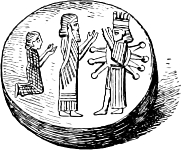
Fig. 159.—Amethyst cone. National Library, Paris.[335]
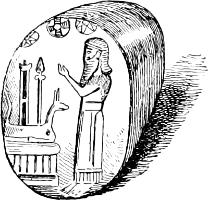
Fig. 160.—Agate cone. National Library, Paris.[336]
Among the themes in most frequent use under the Sargonids we might have quoted the single combat of the king with a lion, the god standing upon a lion’s back, the king over whose head a servant holds an umbrella, the heads and bodies of different animals, and others.[337] We cannot pretend, however, to enumerate them all. It is sufficient to show, as we have done, that after the ninth century at latest both cylinders and cones were produced in the same workshops, and that the differences in their figuration are to be explained by the dimensions and form of the new surface. Those who have supposed that the use of flat seals only commenced under the Achæmenids are mistaken. All that we can say with truth is that intaglios cut upon sections of cones, spheres and pyramids are less ancient than the cylinders of Ur, Erech, Accad and Sippara.
This is proved by the dated contracts to which we have already so often had to refer; but supposing no such contracts to have been in existence we could have arrived at the same conclusion by another path. Cones in calcareous stone, in marble, or even in pietra dura are either wanting altogether, or very few and far between; they are almost all in precious stones, most of them in[280] carnelian and chalcedony. Sapphirine chalcedony, with its fine bluish tint, seems to have been most in favour.
In Egypt we found intaglios upon metal as well as upon lapidary substances.[338] This use of metal was a result of mounting seals in circles of gold or silver. Precious stones were rare and difficult to cut; what could be more natural than to substitute metal for them and to make the bezel of a ring of the same material as its hoop. For its engraving neither lathe nor diamond dust was wanted; the burin alone was necessary, and the figures cut by it gave a result no less satisfactory than those obtained by the slower process and in the more stubborn material. The temptation was great for the Egyptian artist, and we are not surprised that he succumbed to it, but it did not exist for the Chaldæan engraver. The latter had only to deliver a stone which his client could wear fastened to his wrist, or hung round his neck by a cord. He had no direct and intimate relations with the worker in metal; he was not compelled to call in the latter to mount his creation. Sometimes, under the influence perhaps of foreign models, he may have attempted to substitute metal for stone, but isolated attempts did not make a school. We can point to only one example of such work. The British Museum possesses a silver cylinder, but the only interesting thing about it is its material.[339] The composition of the type is naive and its execution rough. All this allows us to believe that metal seals were very rare and never came into general use.
Oriental artists, at least during the period of which we are now speaking, hardly ever practised any kind of gem-cutting but intaglio, but there are two stones in existence in which first attempts at a process that must have led in time to the production of cameos, may be traced. “In one of these gems, an onyx, the upper layer is cut away from the one below it and an inscription left. In the other the eyes and neck of a serpent are rendered with the aid of three different tints in the stone.”[340]
[281]
We have now reached the end of our inquiry into the history of Mesopotamian sculpture—an inquiry that we have endeavoured to make as complete as the existing remains would allow. So far as Chaldæa is concerned, these are very few in number. On the other hand, the three centuries over which the Assyrian power extended are pictured in such a vast number of reliefs that we are embarrassed by their number as much as by their want of variety. Our difficulty in the case of Assyria has been to make a selection from a vast quantity of objects that tell us the same thing again and again, while, in the case of Chaldæa, it has been to insure that none of the scanty salvage from so great a wreck should be lost. We have more than once had to make induction and conjecture take the place of examination and assertion before we could complete even a rough sketch of the development of Chaldæan art.
There is one question that must have been asked by many of our readers before these pages came in their way, but is now, we venture to hope, fully answered, and that is, whether the Semites of Chaldæa drew their first inspiration from a foreign source, or whether it was an original result from the natural aptitudes of the race. Ancient as civilization may have been in the Euphrates valley, it was still more ancient, to all appearance, in the valley of the Nile. And yet all who have examined the figures we have placed before them must acknowledge the originality and independence of Chaldæan art. No; the sculptors of Memphis and Thebes were not the masters of those of Babylon and Nineveh; they preceded them indeed, but they left them no teaching and no models to copy.
This is proved in the first place by the difference, we might say the opposition, between the two styles. The Egyptian sculptor simplifies, abridges, and summarizes form; the Assyrian amplifies it and accents its details. The former seems to see the human body through a veil of gauze, which hides the accidents of the surface and the secondary forms, allowing nothing to be clearly grasped but the contour and the great leading lines. One would say that the second studied nature through a magnifying-glass; he insists upon what the first slurs over.
[282]
This is not the only difference between the two methods and the two interpretations. The Egyptian artist can seize the character of a movement with much justice and vivacity, but he endeavours to ennoble it by giving it a general and typical value. This he does, for example, in the gesture of the king who brandishes his mace or sword over the head of his conquered enemy while he holds him by the hair with his other hand.[341]
He thinks more about elegance in arranging the posture of his figures; look, for instance, at the men and women carrying offerings, at the dancers and musicians who abound in the reliefs and pictures. His favourite attitude, however, is one expressive of force in repose. We cannot deny that in his figures in the round the Mesopotamian sculptor showed the same predilection, but his choice was suggested, or rather imposed, by the resistance of the materials he employed and the necessity of avoiding certain executive difficulties over which he could not triumph. We can hardly see how he could have given his figures more animation or have better expressed the freedom of their limbs and the swing of their bodies; the stones he used were either too hard or too soft, and he was without the needful skill in the management of his tools.
It is in the reliefs, where he is more at his ease, that he allows us to see whither his natural inclinations would lead him. They contain hardly any seated figures. Man is there always on his feet and in action. Movement, to interest the Mesopotamian artist, need not be the expression of an idea, or the cause of graceful lines. It pleases him for its own sake by its freedom and unexpectedness, I am almost tempted to say, by its violence.
This feeling is visible chiefly in the battle pictures and hunting scenes. In these, no doubt, the drawing of limbs, &c., often leaves much to be desired. The hand has been unable to render all that the eye has seen. The unveiled human body has not been displayed often enough to the sculptor for him to know thoroughly the construction of its framework and the mode of attachment of its limbs. On the other hand, when animals have to be treated, with what singular power and complete success the same artist has often represented the tension of the contracting muscles, the speed of the horse as he stretches himself in the gallop, the spring of the lion as he throws himself upon the spear (see Fig. 161), and, finally, the trembling of the flesh in the last[283] struggle against suffering and death! It is in the Assyrian monuments that these things are treated with the greatest success. A people of soldiers and hunters, whose truculent energy gave them the empire of all western Asia, they had neither the mild humour nor the fine taste of the Egyptians, they were less easily moved, and we find ourselves wondering that they never hit upon the fights of gladiators as a national pastime. They were touched[284] and interested by force passing from repose into action, by force putting forth all its energies in contempt of danger and in spite of the most determined resistance.
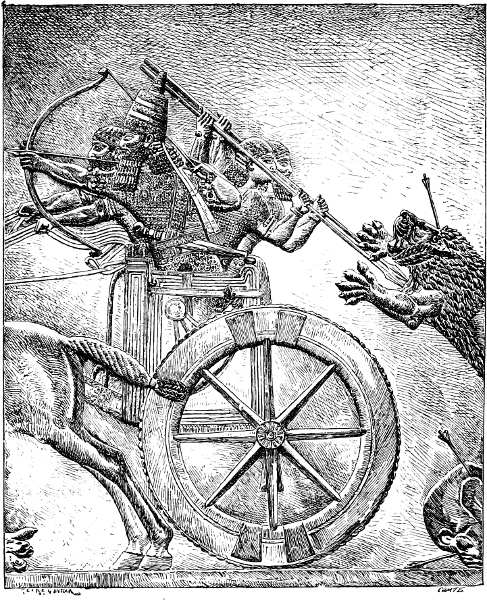
Fig. 161.—Assurbanipal attacked by lions. British Museum. Drawn by Saint-Elme Gautier.
The temperaments of the two nations were, then, vastly different, and by the time their mutual relations became close and continuous, each had thought too much, had worked too much, and created too much for itself to be in any great danger of losing its originality under the influence of the other. Moreover, the two civilizations never penetrated within one another. Their moments of contact were short and superficial. Under the great Theban conquerors of the eighteenth dynasty, the Egyptian armies advanced to the Euphrates, and the princes of Mesopotamia may, for a time, have recognized the suzerainty of the Pharaohs; this is proved to some extent by the numerous scarabs engraved with the name of Thothmes III., which have been found in the valley of the Khabour,[342] but after the nineteenth dynasty their hold upon these distant conquests must have been lost. Their access to them was barred by the Khetas, in Syria, and, a few centuries later, it was the Sargonids who invaded Egypt and admired its monuments so much that they carried some of them away, such as the lion found at Bagdad. It bears the oval of a Pharaoh who is believed to be one of the shepherd kings.[343] In the interval the importation of objects of luxury, which was carried on through the Phœnicians, had introduced a few foreign motives into the repertory of the Assyrian artists, such as the crouching sphinx and the lotus flower; the winged globe may also be Egyptian; but these borrowings never go beyond details; even if they were far more numerous than they are, they would not deprive the sculpture of the Mesopotamian Semites of its right to be considered an independent and autonomous form of art, whose merits and defects are to be explained by the inborn genius of the race, by its manner and beliefs, by the natural conditions of its home, and the qualities of the different materials employed.[344]
[285]
It is in the same order of ideas that we must seek a reason for the differences we have remarked between the art of the early Chaldæan monarchy as it has been revealed to us in the monuments recently discovered, and Assyrian art as we have known it ever since the explorations at Khorsabad, Nimroud, and Kouyundjik. In all this there is a most interesting question for the study of the historian. Of what nature was the bond by which the sculptors of Calah and Nineveh were allied to those who had chiselled the Sirtella statues, perhaps a thousand years before? What place does the brilliant and prolific art of Assyria occupy in the series of phases whose succession was governed by the laws that have presided over the development of human societies in every age and place? Until within the last few months we should have found it difficult to give a satisfactory answer to this question. Assyrian art offered contradictory features to the observer, and it was not easy to understand how, with so lively a feeling for form, and especially for movement, it could have admitted so much conventionality and repeated itself with so much insistence and prolixity. The combination of skill and awkwardness, of energy and platitude, was more than surprising. But the problem resolves itself as soon as we go back to the art of Chaldæa, the first-born of the two sister nations, and the pioneer of Mesopotamian civilization.
Assyrian art, even in its most ancient productions, was not, as we once believed, a primitive or even an archaic art; neither was it what we call a classic art, an art employing the skill it has acquired for the renewed study of nature and the sincere imitation of its beauties. We shall not call it a debased art or an art in its decadence; to do so would be to exaggerate our meaning; but it was an art no longer in its progress, an art that, for the[286] sake of rapid and ample production, made use of conventional formulæ invented by deceased masters and handed down by tradition.
Perhaps we may give a clearer notion of what we mean by a comparison.
Under all the reserves implied by such collations, we should say that Chaldæan art was to that of Assyria what the Greek art of Phidias, Praxiteles, and Lysippus was to the Alexandrian and Græco-Roman art which we now call Hellenistic. In the studios of Nineveh, as in those of Pergamus, of Rhodes, of Antioch, of Rome, great activity, great skill, and no little science were to be found; even originality was sought for, but it was sought rather than won. Thus we find in Macedonian and Roman Greece, here a school drawing attention by audacious and perhaps theatrical execution, there another devoting its skill to pathetic subjects, and attempting to render physical agony by contracted muscles. So it is in Assyria. The ease with which alabaster and soft limestone could be cut allowed the artists who worked for Assurnazirpal to give to the ornamentation of the rich stuffs they figured a delicacy and refinement that were impossible in the stubborn stones of Chaldæa. Two centuries later the sculptors of Assurbanipal sought a new element of success in the complication of their scenes, in the grace of their execution, in the picturesque details of their landscape backgrounds, in the increased slenderness of their figures, and in a certain elegance spread over their compositions as a whole.
It is certain that neither the Greek of the later centuries nor the Assyrian invented and created in the proper sense of the word. The Greek sculptor, thanks to a deeper comprehension of the true conditions of art and to the necessity under which he laboured of reproducing the nude, certainly did not remit his care for modelling, but he looked at the contours and the significance of the human body rather with the eyes of his masters and predecessors than with his own. It was to those masters that he was indebted for his propensity to see one set of features rather than another, and to give that interpretation to form that, taken altogether, constitutes the Greek style.
The Assyrian sculptor was in much the same case, but as his figures were draped, almost without exception, it was much easier for him to put nature aside altogether and to fall into manner and[287] routine. It is only when he has to represent animals that he seems to work from the living model. The human body, hidden under its long and heavy robes, did not discover enough to awake his interest; all that he sees—the features and the profile of the face, the throat, the lower parts of the arms and legs—he treats after the examples left to him by his Chaldæan leader. In the whole of Assyrian sculpture there is no passage studied from nature with faith and sincerity, like the hand, the shoulder, and the back in the statues of Gudea. The Chaldæan sculptor had a taste for strong modelling, and in this his Assyrian pupil copied him with such an excess of zeal that he arrived at exaggeration and pure convention. He knotted the knees of his figures, he gave them knee-caps standing out like huge bosses, and muscles so stretched and salient that they look like cables rather than flesh and blood. It is an early edition of what is now an old story. The master is betrayed by the pupil, who copies his mannerisms rather than his beauties and turns many of his fine qualities into defects.
We may now see how much the Chaldæan excavations and the collection which the Louvre owes to M. de Sarzec are calculated to teach the historian of art. These discoveries, by their intrinsic importance and by the light they have thrown on the origin of a great civilization, may almost be compared to those of Lepsius and Mariette, to the systematic researches and happy finds that have revealed the Egypt of the ancient empire to us. Assyrian art is no longer a puzzling phenomenon. Like the Egyptian art of the Theban epoch, it was preceded by a realistic and naturalistic, an inquisitive, simple-minded, and single-hearted art, which had faithfully studied the human form and had thus created one of the original styles of antiquity, a style, perhaps, in which Greece at its first beginning found the most useful lessons and the most fertile suggestions.
As we have already confessed, we can form but a very imperfect notion of what the art of Chaldæa was in its best days, in its period of youth and freshness. The remains are few and small; they are heads separated from the bodies to which they once belonged, chips from broken reliefs and a few small bronze and terra-cotta statuettes. Even supposing that new discoveries come to fill up the gaps, so that the development of Chaldæo-Assyrian art may be embraced as a whole, even then it would,[288] we believe, be interior to that of Egypt. No doubt it possesses certain qualities not to be found in the latter. The statues from Tello have a freedom and vigour of modelling in certain parts that can hardly be prized too highly, and the Memphite artist never chiselled anything so full of intense life and movement as the animals at Kouyundjik; but without again referring to faults already treated at length we may say that the supreme defect of Mesopotamian sculpture is its want of variety.
It is a powerful but monotonous art. For each class of figures it had but one mould. It seems never to have suspected how unlike men are to each other when they are looked at closely; we are tempted to believe that it never made a portrait in the true sense of the word. It held through many centuries to the general and abstract types created at first, and repeated them with a constancy that inevitably causes some weariness in the spectator. It also committed the mistake of spreading a single colour, speaking metaphorically, over all its pictures; as a musician would say, all its compositions were in the same key; it was always serious; it did not understand how to laugh or unbend. In the elaboration of its demons it certainly cast about for as much ugliness as it could find, but that was to frighten and not to amuse. In all the remains of Assyrian art there is no trace of playful humour, of the light-hearted gaiety that is so conspicuous in more than one Egyptian monument. In the subordinate parts of some of the reliefs from the Sargonid period we find certain groups and scenes belonging to what we should call genre, but neither here, nor in the bronzes, nor in engraved gems, nor even in the terra-cottas, do we find anything that approaches caricature. The comic element, without which no representation of life can be faithful and complete, is entirely wanting.
A final defect of Assyrian art is the almost total absence of woman from its creations. In Chaldæa we found her in the small bronzes and in a few clay figures; the canephorus with bare arms and bust, the nursing goddesses who bear a child in their arms or who press their breasts with their open hands, will be remembered, but it would seem that such subjects were treated only in figures of very small dimensions. In the fragmentary reliefs and statues from Chaldæa there is nothing to suggest that female forms, either wholly or partially nude, were either cast or[289] chiselled in anything approaching life size. Still less were such things made in Assyria, where no terra-cotta figure even of the deity to whom the names of Istar, Beltis, Mylitta, and Zarpanitu have all been given, has yet been found. It was, however, at Kouyundjik that the only nude female torso yet discovered in Mesopotamia was dug up. It bears the name Assurbilkala, and is now, as we have said above, in the British Museum.[345] Among the ivories, indeed, we find female statuettes in which we are tempted to recognize the same goddess; but where were those ivories carved? We have good reason to believe that not a few are of Phœnician workmanship.
The real national art of Assyria must be sought in the palace reliefs, and in that long illustrated chronicle of the court, the chase, and the royal campaigns, woman plays a very subordinate part. It has been thought that a tall, beardless individual who occurs near one of the doorways of Assurnazirpal’s palace, in the place generally reserved for divinities, should be accepted as a goddess (Fig. 162).[346] She is winged, and her hair is gathered together at the back of the neck, one long knotted and tasselled tress falling nearly to her loins. Her right arm is raised, her left lowered; in her left hand she holds a small wreath or garland. A wide girdle at the waist confines a long robe falling to the feet, and a fringed and flounced mantle. Nothing is seen through this drapery, such as amplitude of bosom or hips, to suggest the female sex, while the jewels that may be noticed on the neck and wrists and in the ears are also to be found on figures that are certainly male. In fact there is nothing to suggest a woman but the arrangement of the hair and a certain unwonted refinement in the execution of the features. And it is only by external signs like these, by the pose and the costume, that the few women in the bas-reliefs are to be recognized. This observation holds good for the queen of Assurbanipal as well as for the musicians who celebrate his victories and the captives led into slavery by the Assyrian armies.
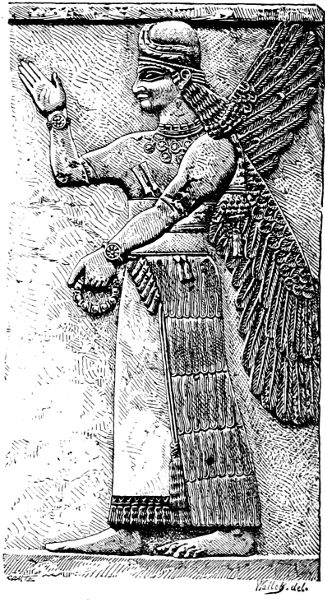
Fig. 162.—Figure of a goddess. British Museum. Drawn by Wallet.
We can hardly say then that woman had any place in Assyrian art; she was represented, if at all, only by her robes. In the[290] long series of reliefs you find none of the charming variety given to Egyptian art by the slender forms of goddesses, queens, dancers, and players on the mandolin, who crowd the pictures and allow the graceful contours of their youthful bodies to be seen through their transparent robes. In spite, then, of all its merits, the art of the Assyrian sculptor is far from complete. His neglect of the soft nobleness inherent in the beauty of woman deprived him of a precious resource; his works are without the telling contrasts that nature has set up between the forms of man and those of his mate. We have[291] endeavoured to do him justice; we have sought to put in full light the merits by which he attracts our admiration, but we cannot help seeing that he lacks something that we have found in Egypt and shall find again in Greece; he is without the charm of grace and light.
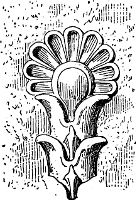
[292]
In the inventory we are compiling of the various methods used by the Semites of Mesopotamia to address the intellect through the eyes, we shall consecrate a chapter to painting for form’s sake. The kind of representation we call by that name was no more known to the Assyrians and Chaldæans than it was to the Egyptians.[347] They loved brilliant colours, but they only made use of them for what was, in fact, illumination; they coloured figures and ornaments, but they never painted, as the word is understood in all modern languages.
In our endeavours to explain how the Mesopotamian architect disguised, under a robe of gay tints, the poverty of the materials with which he was forced to work, we showed that he employed colour in two different ways, according to the place occupied in the building by the wall he had to cover.[348] In the interiors of rooms he was, in most cases, satisfied with spreading upon the plaster a coat of some pigment that could be easily renewed when it began to fade; but in those parts of the building that were exposed to the weather, and even in some rooms that were the objects of particular care, he had recourse to the solidity of enamel. We have pointed out the favourite motives both in the distemper paintings and in the kind of mosaic given by the glazed or enamelled bricks; we have yet to say what tints the enameller used and how he used them. Our coloured plates will give a better idea of this decoration than we can give in words (Plates XIII., XIV., and XV.).[349]
[293]
In the carpets still woven in Asia Minor, Kurdistan, Khorassan and Persia there are colours at once brilliant and soft that are a constant delight to the eye of the connoisseur. We may point, for instance, to certain reds and greens at which the manufacturers of Europe gaze in despair, in spite of the resources of modern chemistry. This freshness and solidity of tint is explained by the almost exclusive use of vegetable dyes. These the Kurd or Turkoman extracts from mountain plants, sometimes from the stem or the root, sometimes from the blossom or the seed.[350] These inventions and recipes have been handed down from generation to generation through many ages; the secret of many dyes must have been discovered long before the fall of Nineveh or the beginning of the Babylonian decadence. Down to the very last days of antiquity the dyers of Mesopotamia were famous for their processes and the harmonious splendour of their colours. Since the days of Nebuchadnezzar the people of that region have forgotten much, while they have learnt nothing, perhaps, but how to hasten the depopulation of their country by the use of gunpowder. All the professional skill and creative activity of which they still can boast they owe to the survival of this ancient industry, whose traditions and practical methods are preserved in the hut of the mountaineer, under the tent of the nomad, and in those bazaars where so many agile weavers repeat, with marvellous rapidity of hand and sureness of eye, the designs and motives of thirty or forty centuries ago.
Among the colouring materials still in use in the woollen fabrics of the Levant there can be very few with which the ancients were not acquainted, and perhaps they used some of them in their distemper paintings; but the latter were no more than feeble shadows when discovered, and they soon vanished when exposed to the air. It was different with those that had been subjected to the action of fire. They could be removed and analyzed. But the enameller confined himself almost exclusively to mineral colours, of which alone we can now describe the composition.
The two colours most frequently used were blue and yellow.[294] Backgrounds were nearly always blue (Plates XIII. and XV.), and most of the figures yellow. Certain details were reinforced by touches of black and white. In the brick representing the king followed by his servants (Plate XIV., Fig. 1), the royal tiara is white, the hair, beards, bows, and sandals are black. Red only appears in a few ornamental details (Ibid., Fig. 2). Green is still more rare. It has been found at Khorsabad. In a fragment of painting upon stucco it affords the ground against which the figures are relieved;[351] and in the enamelled brick decoration on the harem wall (Vol. I., Fig. 101), it is used for the foliage of a tree that looks at first sight like an orange tree; its leaves however are rather those of an apple (see Plate XV., Fig. 3).
According to Sir H. Layard, the blue which was spread in such great quantities on the enamelled bricks was given by an oxide of copper mixed with a little lead, the latter metal being introduced in order to render the mixture more fusible.[352] This analysis applies only to the bricks of Nimroud. In the Sargonid period another process, borrowed, perhaps, from Egypt, seems to have been employed. Place tells us that in the course of his excavations he found two blocks of colour in one of the offices at Khorsabad. One of these blocks, weighing some two pounds and a little over, was blue. An artist was at the time engaged in copying in water-colours the decoration of one of the walls covered with enamelled bricks. In order to get as near as possible to the tint of the original the notion occurred to him to make use of the Assyrian blue. But the latter was stubborn and would not mix; it left a vitreous deposit at the bottom of the cup. At first it was supposed that its long sojourn in the earth had deprived it of some of its qualities, but later analysis explained the difficulty in a more satisfactory manner. Its unfitness for use as water-colour was not the result of any alteration. Being intended for use as a glaze or enamel upon pottery, it was composed of lapis-lazuli reduced to powder.[353]
PLATE XIII
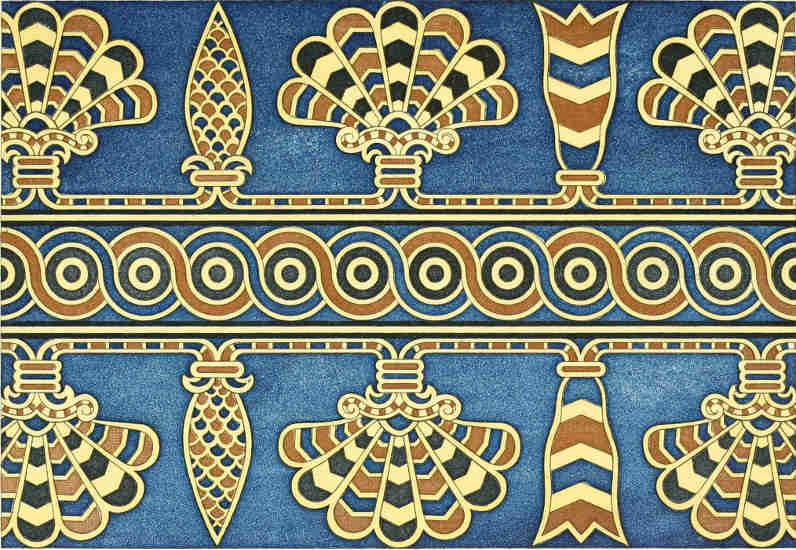
From Layard Sulpis sc.
ENAMELLED BRICK FROM NIMROUD
British Museum
PLATE XIV.
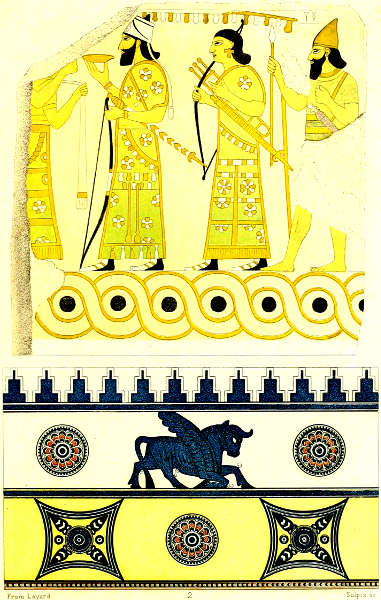
From Layard Sulpis sc.
1. ENAMELLED BRICK
2. FRAGMENT OF PAINTING ON STUCCO
From Nimroud
PLATE XV
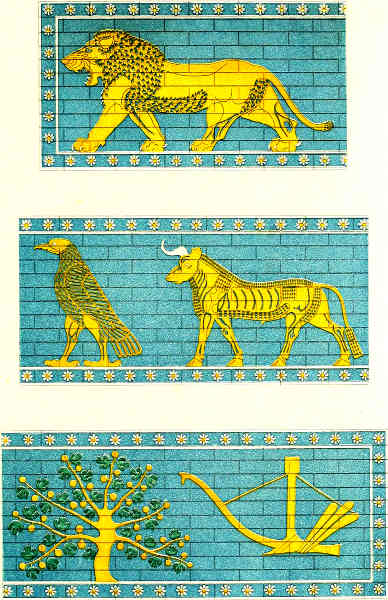
After F. Thomas Sulpis sc.
ENAMELLED BRICKS IN THE HAREM
Khorsabad
Imp. Ch. Chardon
The Chaldæans made a wide use of lapis, which they imported from central Asia. The fatherland of that mineral is the region now called Badakshan, in Bactriana, whence, in ancient times, came what Theophrastus calls the Scythian stone. The caravans brought it into the upper valley of the Tigris, whence it made its [295]way to Babylon and even as far as Egypt. The inscriptions of Thothmes III. mention the good khesbet of Babylon among the objects offered to Pharaoh by the Rotennou, or people of Syria.[354]
This fine lapis-powder, intimately united with the clay by firing, gave a solid enamel of a very pure colour. If mixed with a body of some consistence it might be used upon the sculptures; perhaps the blue with which certain accessories were tinted was thus obtained.
The yellow is an antimoniate of lead containing a certain quantity of tin; its composition is the same as that of the pigment now called Naples yellow.[355] White is an oxide of tin, so that the Arabs do not deserve the credit they have long enjoyed of being the first, about the ninth century a.d., to make use of white so composed.[356] The black is perhaps an animal pigment.[357] The green may have been obtained by a mixture of blue and yellow pigments, of ochre with oxide of copper, for instance. As for red, no colour is easier to get. The Nimroud enamellers used, perhaps, a sub-oxide of copper,[358] while those of Khorsabad employed the iron oxide of which our red chalk is composed.[359] We can examine the latter at our ease. The cake of red found by Place weighed some five-and-forty pounds. It dissolves readily in water.
The whole palette consisted, then, of some five or six colours, and their composition was so simple that no attempt to produce an appearance of reality by their aid could have been successful. Taken altogether, the painting of Mesopotamia was purely decorative; its ornamental purpose was never for a moment lost sight of, and the forms it borrowed from the organic world always had a peculiar character. When the figures of men and animals were introduced they were never shown engaged in some action which might of itself excite the curiosity of the spectator; their forms are not studied with the religious care that proves the artist to have been impelled by their own beauty and grace of movement to give them a place in his work. There are no shadows marking the succession of planes; in the choice of flat tints the artist has[296] not allowed himself to be tied down to fact. Thus we find that in the kind of frieze of which we give a fragment at the foot of our Plate XIV. there is a blue bull, the hoofs and the end of the tail alone being black. Upon the plinth from the Khorsabad harem, a lion, a bird, a bull, a tree, and a plough are all yellow, without change of tint (Plate XV.) In the glazed brick on which a subject so often treated by the sculptors is represented (Plate XIV., Fig. 1), the painter has tried to compose a kind of picture, but even there the colours are frankly conventional. The flesh and the robes with their ornaments are all carried out in different shades of yellow. He makes no attempt to imitate the real colours of nature; all he cares about is to please the eye and to vary the monotony of the wide surfaces left unbroken by the architect. The winged genii and the fantastic animals could be used for such a purpose no less than the fret and the palmette, but as soon as they were so employed they become pure ornament. In a decoration like that of the archivolts at Khorsabad (Vol. I., Fig. 124), the great rosettes have the same value and brilliancy of tone as the figures by which they are separated; the whiteness of their petals may even give them a greater importance and more power to attract the eye of the spectator than the figures with their yellow draperies.
If the Ninevite bricks had never been recovered, we should have been in danger of being led into error by the expressions employed by Ctesias in describing the pictures he saw at Babylon, on the walls of the royal city: “One saw there,” he says, “every kind of animal, whose images were impressed on the brick while still unburnt; these figures imitated nature by the use of colour.”[360] We cannot say whether the words we have italicised belong to the text of Ctesias, or whether they were added by Diodorus to round off the phrase. It is certain that they give a false notion of the painted decorations. Those to whom the latter were intrusted no more thought of imitating the real colours of nature than the artists to whom we owe the glazed tiles of the Turkish and Persian mosques. The latter, indeed, gave no place in their scheme of ornament to the figures either of men or animals, and in that they showed, perhaps, a finer taste. The lions and bulls of the friezes had no doubt their effect, but yet our intelligence receives some little shock in finding them[297] deprived of their true colours, and presented to our eyes in a kind of travesty of their real selves. Things used as ornaments have no inalienable colour of their own; the decorative artist is free to twist his lines and vary his tints as he pleases; his work will be judged by the result, and so long as that is harmonious and pleasing to the eye nothing more is required. We are tempted, therefore, on the whole, to consider some of those slabs of faïence upon which nothing appears but certain ornamental lines and combinations, suggested by geometrical and vegetable forms but elaborated by his own unaided fancy, as the masterpieces of the Assyrian enameller. If he had resolutely persevered in this path he might perhaps have produced something worthy to be compared for grace and variety with the marvellous faïence of Persia.
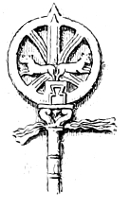
[298]
Of all the materials put in use by the inhabitants of Mesopotamia, clay was the first and by far the most important. Clay furnished the sun-dried bricks of which the great buildings were constructed, the burnt bricks with which the artificial mounds on which those buildings stood were cased, and the enamelled bricks that enabled certain parts to be covered with a rich polychromatic decoration. The figures of the gods and demons they worshipped and the tombs into which they were thrust after death were both made of this same material. It was upon clay that they learnt to write; it was to slabs of terra-cotta that their kings confided the memory of their victories and acts of devotion, and the private population their engagements and the contracts into which they entered. For thousands of years tablets of clay thus received not only long texts, but those impressions from seals, each one of which represents a signature. While wet and soft, clay readily accepted any symbol that man chose to place upon it; once it was burnt, those symbols became practically indestructible.
Accustomed to employ the unrivalled docility of kneaded earth in so many ways, the Chaldæans must, at a very early date, have used it for domestic purposes, for cooking, for holding grain, fruits, and liquids. Like every one else they must have begun by shaping such utensils with their fingers and drying them in the sun. Few remains of these early attempts have been preserved. The invention of the potter’s wheel and firing-oven must have taken place at a very remote period both in Egypt and Chaldæa. The oldest vases found in the country, those taken from tombs at[299] Warka and Mugheir, have been burnt in the oven. Some, however, do not seem to have been ‘thrown’ on the wheel. The thickness of their walls and their irregular shape suggest that the potter fashioned them with the back and palm of his hand (Figs. 163–165). The paste is coarse; it is mixed with chopped straw, which shows here and there on the surface; there is neither ornament nor glaze, and the curves are without grace.[361]
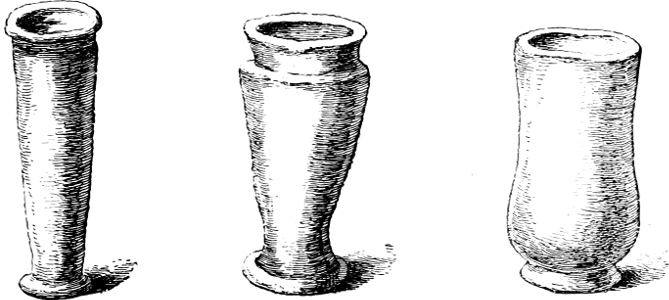
Figs. 163–165.—Chaldæan vases of the first period. British Museum.
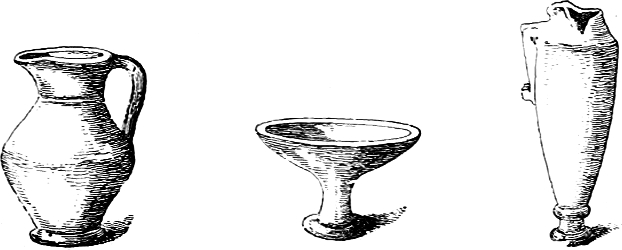
Figs. 166–168.—Chaldæan vases of the second period. British Museum.
Some other vases found in the same cemeteries are ascribed to a later epoch. They give evidence of a real progress in art. We have already figured two examples in our first volume (Figs. 159 and 160); three more are given in Figs. 166–168. The body is finer, and sometimes covered with a slight glaze; there is still no decoration, but the forms are obviously meant, and not without[300] distinction. These objects have been thrown on the wheel, and the dexterity of their maker is further shown by the skill with which their handles are attached.
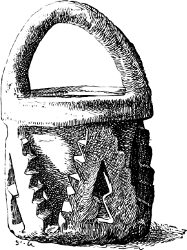
Fig. 169.—Chaldæan vase, about 4 inches high. British Museum.
We have no means of assigning even an approximate date to the vases found in other parts of Chaldæa. A curious vase from Hillah may be ascribed to a much later period, however, on the evidence of its shape alone (Fig. 169). It has the general form of a bucket. The body is decorated with indented triangles cut in its thickness and detached from the background. In all this there is a striving after effect that suggests the decadence. Nothing like it has been found in Assyria dating from the ninth, eighth, or seventh centuries. Sir H. Layard brought from Nimroud a certain number of vases showing a real progress even when compared with the remains from the second period of Chaldæan ceramics. Among these were some quaintly shaped pieces, such as the hexagonal vase with slightly concave sides reproduced in Fig. 170. To the same class belongs the very common form, with a pointed base, that could be thrust into the sand (Fig. 171), and the large bottles shown in Figs. 172 and 173. By the side of these not very graceful pieces we find some with shapes at once simple and happy, and comparable, in more than one instance, to those that the Greeks were to adopt in later years. Goblets with feet and without (Figs. 174–176), a well-shaped ewer (Fig. 177) and some variously contoured amphoræ, should be noticed. One of the latter has a long neck and two very[301] small handles (Fig. 178), the handles of the other two are larger and more boldly salient, while in one they are twisted to look like ropes.
The vase last figured, like many others from the same place, is glazed, and glazed in two colours, a bluish-green round the neck and a decided yellow upon the body. At the line where they meet the two colours run one into the other, producing a far from disagreeable effect.
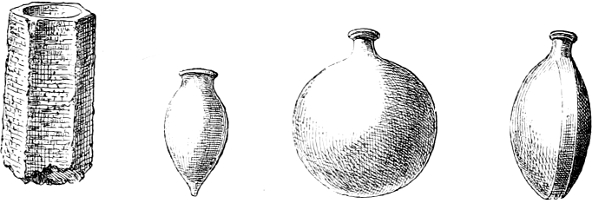
Figs. 170–173.—Assyrian vases; from Layard.
It will be noticed that the decoration upon all these objects is very slight. We can point to little beyond the double row of chevrons on one of the amphoræ (Fig. 178), and the collar of reversed leaves round a kind of alabastron found at the same place (Fig. 181).

Figs. 174–176.—Goblets; from Layard.

Fig. 177.—Ewer; from Layard.
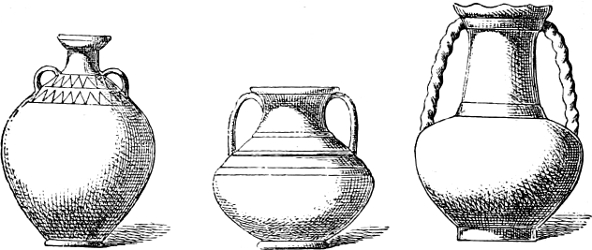
Figs. 178–180.—Amphoræ; from Layard.
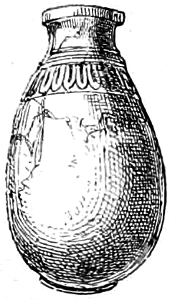
Fig. 181.—Alabastron; from Layard.
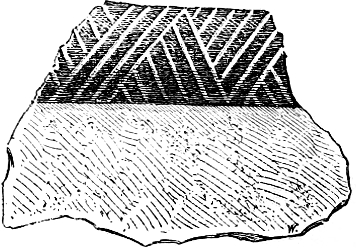
Fig. 182.—Fragment of a vase. British Museum.
The taste for decorating their works seems to have spread among the Assyrian potters between the ninth and seventh centuries B.C. At least many traces of it have been found among the remains at Kouyundjik. The date is fixed for us by a fragment on which the name of Esarhaddon occurs, the letters of which it is composed standing out in light against a dull black background. There is no further ornament than a line of zig-zags traced with some brown pigment. The fragment we reproduce (Fig. 182)[302] formed part of another vase decorated in the same way. We cannot point to a single complete specimen of this work, but by comparing many pieces all from the same place, we may gain some idea of the taste in pottery that prevailed under the Sargonids. A vase upon which certain Aramaic characters were traced with the brush was decorated with bands of a reddish-brown pigment turning round the neck and body at irregular intervals (Fig. 183).[362] Elsewhere we find a more complicated form of the same ornament. The horizontal bands are separated by a kind of trellis-work, in which the lines cross each other, sometimes at right[303] angles and sometimes obliquely, while in the blank spaces we find a motive often repeated, which might be taken at first sight for a Greek sigma. The resemblance, we need hardly say, is purely accidental (Fig. 184). We may also mention a fragment where the surface is sprinkled with reddish-brown spots on a light yellow ground (Fig. 185). So far as we know the only complete[304] example of this decoration is the fine goblet dug up by Place in the Jigan mound (Fig. 186).[363]
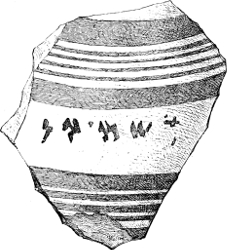
Fig. 183.—Fragment of a vase. British Museum.
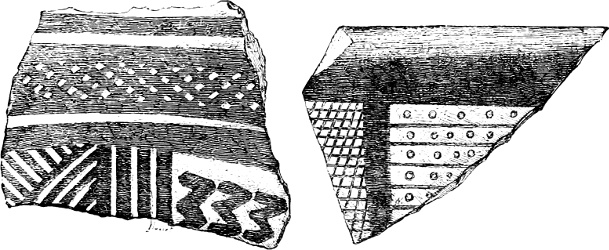
Figs. 184, 185.—Fragments of vases. British Museum.
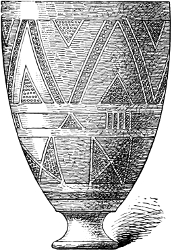
Fig. 186.—Goblet. Height, 5 inches. Louvre.
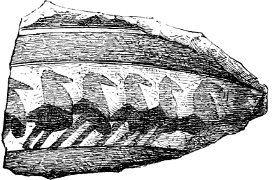
Fig. 187.—Fragment of a vase. Actual size. British Museum.
In all these fragments the decoration is purely geometrical; it is composed of lines, spots, and other motives having no relation to the organic world. A step in advance of this seems, however, to have been taken. On some other fragments from the same districts, files of roughly-suggested birds appear upon the bands and between opposed triangles (Figs. 187 and 188). We shall find the same motive in Cyprus, at Mycenæ, and at Athens, in the pottery forming the transition between the purely geometrical period and that in which imitation of life begins. In a fragment which[305] is tantalizingly small we catch a glimpse of three lion’s paws playing with a chess-board ornament. A row of cuneiform characters runs along the lower part (Fig. 189).
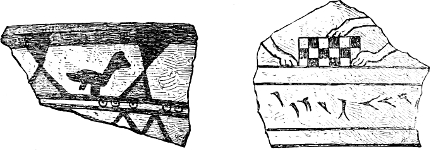
Figs. 188, 189.—Fragments of vases. Actual sizes. British Museum.
These fragments, taken altogether, show that a certain effort was made to produce decorated pottery towards the end of the Assyrian period. Why was the attempt not carried farther? Why were earthenware vases not covered with ornamental designs that might be compared for richness and variety with those chiselled in or beaten out of stone or wood, ivory or metal? The reason may, we think, be guessed. Clay appeared such a common material that they never thought of using it for objects of luxury, for anything that required great skill in the making, or in which its proprietor could take any pride. When they wanted fine vases they turned to bronze; bronze could be gilded, it could be damascened with gold and silver, and when so treated was more pleasing to the eye and more provocative of thought and ingenuity on the part of the artist than mere clay. It was reserved for Greece to erect the painted vase into a work of art. Her taste alone was able to make us forget the poverty of the material in the nobility of the form and the beauty of the decoration; we shall see that her artists were the first to give to an earthenware jar or cup a value greater, for the true connoisseur, than if they were of massive gold or silver.
During the period on which we are now engaged, the Mesopotamians sometimes attempted to cover their vases with enamel. The British Museum has several specimens of a pottery covered with a blue glaze like that of the Egyptian faïence.[364] Here and[306] there the blue has turned green under the action of time. One of the vases reproduced above (Fig. 180) belongs to this class. Vases of the same kind, covered with a rather thick layer of blue and yellow enamel, have been found among the rubbish in the Birs-Nimroud at Babylon,[365] but it is difficult to fix an exact date for them with any confidence. On the other hand, it is generally agreed that the large earthenware coffins brought from the funerary mounds of Lower Chaldæa are very much later. In style the small figures with which they are decorated resemble the medals and rock sculptures of the Parthians and Sassanids.[366]
The art of making glass, which dates in Egypt at least as far back as the first Theban dynasty,[367] was invented in Mesopotamia, or imported into it, at a very early period. No glass objects have been found in the oldest Chaldæan tombs, but they abound in the ruins of the Assyrian palaces. A great number of small glass bottles, resembling the Greek alabastron or aryballos in shape,[368] have been dug up; many of them have been made brilliantly iridescent by their long sojourn in the earth.[369] A vase found by Layard at Nimroud, and engraved with Sargon’s name just below the neck, is generally quoted as the oldest known example of transparent glass (see Fig. 190).[370] It has been blown solid, and then the inside cut out by means of an instrument which has left easily-visible traces of its passage; this instrument was no doubt mounted on a lathe. Sir H. Layard believes, however, that many of the glass objects he found are much older, and date from the very beginning of the Assyrian monarchy, but their material is opaque and coloured.[371] Some bracelets of black glass, which were dug up at Kouyundjik, prove that common jewelry was sometimes[307] made of that material; glass beads, sometimes round, sometimes flat, have also been found.[372] A glass cylinder or tube, of unknown use, was found by Layard at Kouyundjik; it is covered with a decoration made up of lozenges with a concave surface (Fig. 191).

Fig. 190.—Glass vase or bottle. Height 3½ inches. British Museum.

Fig. 191.—Glass tube. Height 8¾ inches. British Museum.
It is curious that no cylinders or cones of terra-cotta or glass have come down to us from the Assyro-Chaldæan period. Clay[308] was doubtless thought too common a material for such uses, and as for glass, they had not yet learnt how to make it a worthy substitute for pietra dura, as the Greeks and Romans did in later years.
Before we quit the subject of glass we must not forget to mention a very curious object found by Layard at Nimroud, in the palace of Assurnazirpal, and in the neighbourhood of the glass bottle and the two alabaster vases on which the name of Sargon appears. It is a lens of rock-crystal; its convex face seems to have been set up, with some clumsiness, opposite to the lapidary on his wheel. In spite of the imperfect cutting, it may have been used either as a magnifying, or, with a very strong sun, as a burning, glass.[373] The fineness of the work on some of the cylinders, and the minuteness of the wedges on some of the terra-cotta tubs, had already excited attention, and it was asked whether the Assyrians might not have been acquainted with some aid to eyesight like our magnifying glass. It is difficult, however, to come to any certain conclusion from a single find like this; but if any more lenses come to light we may fairly suppose that the scribes and lapidaries of Mesopotamia understood how thus to reinforce their eyesight. In any case it is pretty certain that this is the oldest object of the kind transmitted to us by antiquity.
Even at the time to which we are carried back by the oldest of the graves at Warka and Mugheir, metallurgy was already far advanced in Chaldæa. Tools and weapons of stone are still found in those tombs in great numbers;[374] but side by side with them we find copper, bronze, lead, iron, and gold. Silver alone is absent.
Copper seems to have been the first of all the metals to attract the notice of man, and to be manufactured by him. This is to be accounted for partly by the frequency of its occurrence in its[309] native state, partly by the fact that it can be smelted at a comparatively low temperature. Soft and ductile, copper has rendered many services to man from a very early period, and, both in Chaldæa and the Nile valley, he very soon learnt to add greatly to its hardness by mixing a certain quantity of tin with it. Where did the latter material come from? This question we can no more answer in the case of Mesopotamia than in that of Egypt; no deposits of tin have yet been discovered in the mountain chains of Kurdistan or Armenia.[375] However this may be, the use of tin, and the knowledge of its properties as an alloy with copper, dates from a very remote period in the history of civilization. In its natural state, tin is always found in combination, but the ore which contains it in the form of an oxide does not look like ordinary rock; it is black and very dense; as soon as attention was turned to such things it must have been noticed, and no great heat was required to make it yield the metal it contained. We do not know where the first experiments were made. The uses of pure tin are very limited, and we cannot even guess how the remarkable discovery was made that its addition in very small quantities to copper would give the precious metal that we call bronze. In the sepulchral furniture with which the oldest of the Chaldæan tombs were filled we already find more bronze than pure copper.[376]
Lead is rare. A jar of that metal, and the fragment of a pipe dug up by Loftus at Mugheir may be mentioned.[377] It is curious that iron though still far from common, was not unknown. Iron nowhere exists in its native state on the surface of our planet, except in aerolites. Its discovery and elimination from the ore requires more time and effort and a far higher temperature than copper or tin. Those difficulties had already been surmounted, but the smelting of iron ore was still such a tedious operation that bronze was in much more common use. Iron was looked upon as a precious metal; neither arms, nor utensils, nor tools of any kind were made of it; it was employed almost exclusively for personal ornaments, such as rings and bracelets.[378]
[310]
Gold, which is found pure in the veins of certain rocks and in the beds of mountain torrents, and in pieces of a size varying from that of a grain of dust to nuggets of many pounds, must very soon have attracted the attention of man, and excited his curiosity, by its colour and brilliancy. We find it in the tombs mixed with objects of stone and bronze. Round beads for necklaces, earrings and finger rings of not inelegant design were made of it.

Fig. 192.—Iron mattock; from Place.
If, when the Chaldæans built their first cities, they already knew how to put metals to such varied uses, they could hardly have failed to take farther strides in the same direction. In order to measure the progress made, we have only to establish ourselves among the Assyrian ruins and to cast an eye over the plunder taken from them by Botta, Layard, and Place. Metal is there found in every form, and worked with a skill that laughs at difficulties. Silver and antimony are found by the side of the metals already mentioned,[379] and, stranger than all, iron is abundant. The excavations at Warka seem to prove that the Chaldæans made use of iron sooner than the Egyptians;[380] in any case it was manufactured and employed in far greater[311] quantities in Mesopotamia than in the Nile valley. Nowhere in Egypt has any find been made that can be compared to the room full of instruments found at Khorsabad, to the surprise and delight of M. Place.[381] There were hooks and grappling irons fastened by heavy rings to chain-cables, similar to those now in use for ships’ anchors; there were picks, mattocks, hammers, ploughshares. The iron was excellent. The smith employed upon the excavations made some of it into sickles, into tires for the wheels of a cart, into screws and screw-nuts. Except the Persian iron, which enjoys a well-merited reputation, he had never, he said, handled any better than this. Its resonance was remarkable. When the hammer fell upon it it rang like a bell. All these instruments were symmetrically arranged along one side of the chamber, forming a wall of iron that it took three days to dig out. After measurement, Place estimated the total weight at one hundred and sixty thousand kilogrammes (about 157 tons).[382]
According to the same explorer some of these implements, resembling the sculptor’s sharp mallet in shape, were armed with steel points (Fig. 192).[383] Until his assertion is confirmed, we may ask whether Place may not, in this instance, have been deceived by appearances. Before we can allow that the Assyrians knew how to increase the hardness of iron by treating it with a dose of carbon, we must have the evidence of some competent and careful analyst.
It is certain, however, that in the ninth and eighth centuries this people used iron more freely than any other nation of the time. Thus several objects which appear at the first glance to be of solid bronze have an iron core within a more or less thin sheath of the other metal. Dr. Birch called my attention to numerous examples of this manufacture at the British Museum, in fragments of handles, of tires and various implements and utensils, from Kouyundjik and Nimroud. The iron could be distinctly seen at the fractures. The Assyrians clung to the bronze envelope because that metal was more agreeable to the eye and[312] more easily decorated than iron, but it was upon the latter substance that they counted to give the necessary hardness and resistance. The contact and adhesion between the two metals was complete. From this, experts have concluded that the bronze was run upon the iron in a liquid state.[384]
It is easy enough to understand how the inhabitants of Mesopotamia came to make such an extensive use of iron in the instruments of their industry; it was because they were nearer than any other nation to what we may call the sources of iron. By this we mean the country in which all the traditions collected and preserved by the Greeks agreed in placing the cradle of metallurgy—the region bounded by the Euxine, the Caucasus, the Caspian, the western edge of the tableland of Iran, the plains of Mesopotamia, the Taurus, and the high lands of Cappadocia. To find the deposits from which Nineveh and Babylon drew inexhaustible supplies, it is unnecessary to go as far as the northern slopes of Armenia, to the country of the Chalybes, the legendary ancestors of our mining engineers. The mountains of the Tidjaris, a few days’ journey from Mossoul, contain mineral wealth that would be worked with the greatest profit in any country but Turkey.[385]
Bronze was reserved for such objects as we should make of some precious metal. Botta and Place found numerous fragments of bronze, but it is to Layard that we owe the richest and most varied collection of bronze utensils. It was found by him in one room of Assurnazirpal’s palace at Nimroud.[386] The metal has been analysed and found to contain ten per cent. of tin, on the average.[387] These proportions we may call normal and calculated to give the best results. In one of the small bells that were hung to the horses’ necks the proportion was rather different; there was about fifteen per cent. of tin. By this means it was hoped to obtain a clearer toned and more resonant alloy.
[313]
Pure copper seems to have been restricted to kitchen utensils, such as the large cauldrons that were often used as coffers in which to keep small objects of metal, like the little bells of which we have spoken, rosettes, buttons and the feet of tables and chairs not yet mounted, etc.[388] It is probable that these vessels were also used for heating water and cooking food.
All these metals, and especially iron and copper, were dearer perhaps in Chaldæa than in Assyria, because Babylon was farther from the mineral region than Nineveh; but the southern artizans were no less skilful than their northern rivals. In our review of the metal industries we shall borrow more frequently from the north than from the south, but the only reason for the inequality is that Chaldæa has never been the scene of exhaustive and prolific excavations like those of Assyria.
Cursing Nineveh and exulting in the prospect of her fall, the prophet Nahum calls to all those who had been crushed by the Assyrian hosts; he summons all the nations of the east to take their part in the work of revenge and their share in the spoil to be won. “Take ye the spoil of silver,” he cries, “take ye the spoil of gold; for there is none end of the store and glory out of all the pleasant furniture.”[389] We shall find all this among our spoils of Nineveh. The princes and nobles of Assyria seem to have had a peculiar love for luxurious furniture. To see this we have only to look at the bas-reliefs, where the artist took the greatest care to imitate every detail of the thrones on which he placed his gods and kings; and many fragments of these richly decorated chairs have been recovered in the course of the excavations; with the help of the sculptures they could be put together and the missing parts supplied. The elements of many such restorations exist in the British Museum, and we may well ask why no attempt has been made to reconstitute an Assyrian throne with their help, so as to give an exact idea of the kind of state chair used by a Shalmaneser or a Sennacherib.
In order to carry out such a restoration successfully we should[314] have to begin by renewing all the wooden parts of the piece, the legs, back and cross-bars. Wood alone could be used for such purposes. Metal would be too heavy if solid, and not stiff and firm enough if hollow. We have, besides, direct proof that the Assyrian joiner so understood his work. “I found among the ruins,” says one explorer, “small bulls’ heads of copper, repoussé and carefully chased, inside of which a few fragments of dried wood still remained. These pieces had certainly belonged to chairs exactly similar to those figured in the reliefs.”[390]
At Nimroud, in the room in Assurnazirpal’s palace in which so many precious objects were discovered, Layard found the royal throne, and close beside it, the stool upon which the royal feet were placed, an arrangement of which we may gain an exact idea from the reliefs (Figs. 47 and 127). The sides of this chair were ornamented with bronze plaques nailed on to wooden panels, and representing winged genii fighting with monsters. The arms were ornamented at the end with rams’ heads, and their points of junction with the uprights of the back were strengthened with metal tubes.[391] All the wood had disappeared, but it was impossible to look at the remains for a moment without seeing how they were originally put together and what office they had to fill in the complete piece. Most of the fragments are now in the British Museum.
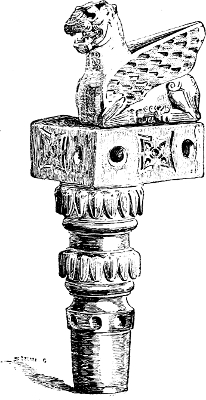
Fig. 193.—Fragment of a throne. Height 18 inches. Drawn by Saint-Elme Gautier.
The same collection has been recently enriched by the fragments of another throne, from Van.[392] A claw foot, uprights ending in several rows of dentations, and two winged bulls that once in all probability formed part of the arms, are among the parts preserved. The bulls are without faces, which may have been carried out in some other materials, gold perhaps, or ivory. The wings also are covered with hollows in which inlays of ivory or lapis may have been fixed. From Van also came the remains of another throne which now belongs to M. de Vogué, who has been good enough to allow us to reproduce the more important fragments. The best of these is one of the front feet which ends at the top in[315] a rectangular tablet on which a winged lion is crouched (Fig. 193). Another piece seems to have been one of the cross pieces of the back;[393] the round sockets with which one face of it is nearly covered must once have been filled with precious stones. This lion, like that on the London chair, also has its wings covered with incisions, and its eyeballs represented by gaping hollows. The effect of the whole was heightened by threads of gold inlaid on its leading lines, such as round the grinning jaws of the lion. The largest piece is a hollow casting, but very heavy. The various members were connected by tenons and mortices; some of the latter are shown in our illustrations. The large rectangular openings on the upper surface of the cross-bar received a metal stem to which some small figures were attached; their bases have[316] left marks on the cross-bar which may still be distinguished. Their feet were surrounded by a line of gilding.

Fig. 194.—Fragment of a throne. Length 18 inches. Drawn by Saint-Elme Gautier.
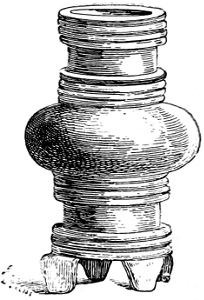
Fig. 195.—Bronze foot of a piece of furniture. Louvre.
These pieces of furniture show great variety in their forms and decorative motives. Sometimes the ornament is purely geometrical, like that of the foot shown in our Fig. 195, where it is composed of several rings placed one above the other with a bold torus-like swell in the middle. More frequently, however, the bronze uprights end in capitals resembling a bunch of leaves in shape. We have already encountered this type in the ivories, where it occurs in the balustrade of a small window (Vol. I., Fig. 129); we also find it strongly marked in the throne from Van, where the drooping leaves are chiselled with much care. We find the same motive in a small sandstone capital in the British Museum. It is in one piece with its shaft. We are inclined to think it a part of some stone chair in which the forms of wooden and bronze furniture were copied (Fig. 196).[394]
[317]
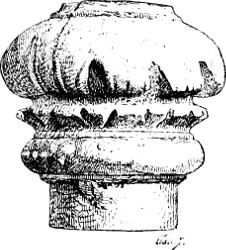
Fig. 196.—Capital and upper part of a small column. Height 2 feet. British Museum.
Two pieces of the same kind found at Nimroud are more complex in design. In one we have a bouquet of leaves reminding us of the Corinthian capital (Fig. 197), while, in the other, a band seems to hold two lance heads, opposed to each other at their base, and two bean-shaped fruits, against the shaft (198). As for the feet of all kinds of furniture, the favourite shapes are pine cones (Figs. 47 and 127) and lions’ paws (Figs. 47 and 199).
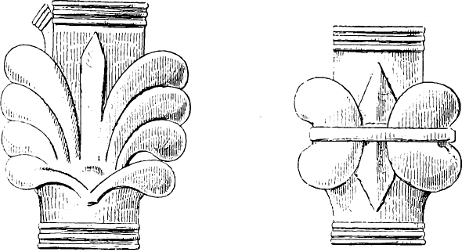
Figs. 197, 198.—Fragments of bronze furniture; from Layard.
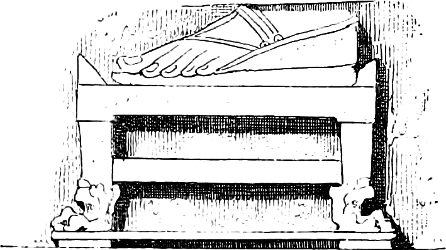
Fig. 199.—Footstool, from a bas-relief; from Layard.
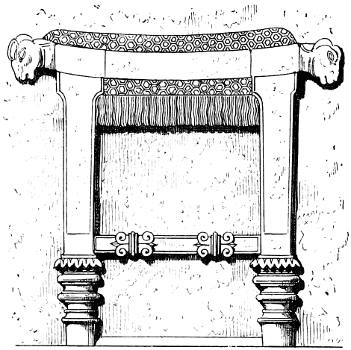
Fig. 200.—Stool; from Layard.
These elaborate decorations are found not only on the royal thrones but also on the footstools which are their necessary complement (Fig. 199), and on the seats without backs which were used, perhaps, instead of the more unwieldy throne when the king was away from his capital (Fig. 200). The footstool has lions’-claw feet, the more important object has rams’ heads at each[318] end of the upper cross-bar;[395] the leg shows the capital with drooping leaves noticed above; volutes, opposed to each other as in the capital from Persepolis, ornament the cross-bar which holds the uprights together. In this piece of furniture, where the sculptor has confined himself to the scrupulous reproduction of his model, we may see how these objects were upholstered. A cushion of some woven material with long bright-coloured woollen fringes, was fitted to the seat. The whole is characterized by happy proportions and severe simplicity of design. We know from the Sippara tablet that even the gods were sometimes[319] content with such a seat (Vol. I., Fig. 71). The figures of Izdubar and Hea-bani are there introduced between the uprights of Samas’s stool.
One of the most complex and effective of all these examples of decorative art is the throne upon which Sennacherib is seated before the captured city of Lachish (Fig. 47). The space between the uprights is occupied by three rows of small male figures, who with their uplifted arms and heads gently thrown back, seem to bear the weight of the cross pieces. This naïve device is also to be met with in the sculptures of Persia; it is suggestive of the absolute power which places the king so far above his subjects that nothing is left for them but to support and add to the edifice of his grandeur.[396]
Bronze and wood were not the only materials used in these objects of regal luxury. As in the throne of Solomon,[397] the glory of gold and the creamy whiteness of ivory were mingled with the sombre tones of bronze. This is proved by the thrones from Van, and it was noticed by the explorers of the Assyrian ruins; small fragments of ivory were mixed with the pieces of bronze that have been recognized as the débris of furniture.[398] Some pieces of rock-crystal, found in the palace of Sennacherib, appear also to have helped to ornament a chair.[399]
It is easy to guess how ivory was used on these objects. Look at the throne of Sennacherib (Fig. 47), the couch of Assurnazirpal, the table on which his cup is placed and the high chair of his queen (Fig. 127). The cross-bars and uprights are divided into numerous small panels or divisions; each panel may have inframed a plaque of carved ivory.
Were all these plaques made in Mesopotamia? or were they imported from Phœnicia and Egypt? The frankly Egyptian character of some among the tablets we have reproduced (see Vol. I. Figs. 129 and 130; and above, Figs. 57, 58 and 59) forbid us[320] to deny that some of the ivories were imported;[400] but we believe that to have been the exception rather than the rule. We know both from the sculptured reliefs and from actual finds that ivory was brought into Assyria in its rough state. Layard found some elephant’s tusks in the royal houses at Nimroud,[401] and we see others brought by tributaries as presents to the king, both in the reliefs of Assurnazirpal’s palace,[402] and in those of Shalmaneser’s obelisk.[403]
Hence it appears probable that ivory was worked at Nineveh and Babylon, and that probability is changed into a certainty when we examine the other ivories in the same collection. Although not a few of the ivories chiselled in relief offer motives that are strange to Mesopotamian art, it is not so with a series of tablets on which the designs are carried out in pure line and with extreme refinement (Fig. 201). Figures and ornaments are purely Assyrian; winged genii wearing the horned tiara, dressed as in the reliefs, and surrounded with the rosettes and cable pattern to which we have so often referred, and other motives of the same kind. Among the latter may be noticed the variety of knop and flower border that we find so often in the painted and enamelled decoration, in which the knop is replaced by a disk (see Vol. I., Figs. 117 and 118).
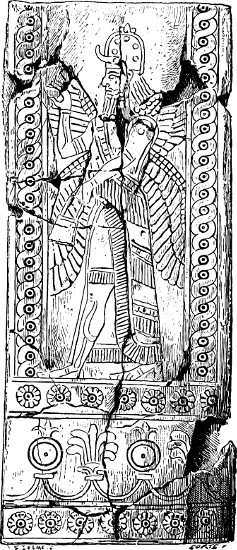
Fig. 201.—Ivory panel. Actual size. British Museum. Drawn by Saint-Elme Gautier.
We believe the truth to be as follows. A considerable quantity of Indian ivory entered Mesopotamia by the Persian Gulf and the caravan routes. It was there carved by native artists into the various shapes required, but, especially during the heyday of the Assyrian monarchy, it was far from supplying the whole demand. Africa, through Phœnicia, was called upon to make up the deficiency. But the African ivory was not imported in its raw state, it came in in the form of skilfully chiselled plaques that only required mounting; the merchants, through whom the trade was carried on, delivered sets of these plaques for beds, or chairs, or[321] what not. We thus get at some reason for the difference in style between the tablets in relief and those engraved by the point. The latter represent native art; in the former, where we so often see the characteristic gods, sphinxes, costumes, head-dresses, and even cartouches of the Egyptian monuments, we may recognize the product of the Nile delta, or even of Tyre and Sidon. The inscriptions on several fragments seem to confirm this hypothesis. I have seen no ivory tablets with cuneiform characters, but plenty with those of the Phœnician alphabet.[404]
[322]

Fig. 202.—Dagger hilt. Ivory. Actual size. Louvre.
Ivory was used for many purposes; we have described how it was employed upon ceilings and doors;[405] we have just seen how it helped to ornament articles of furniture; it also supplied the material for many useful and ornamental objects, such as sceptres, boxes, cups, knife-handles, etc. (Fig. 202). Did the Assyrians understand how to give still greater variety to the appearance of these things by staining the ivory? At first sight it might appear that they did. Among the specimens in the British Museum some have the fine yellow colour of the Renaissance ivories; others are white, grey, brown or even quite black. These tints, as I myself ascertained, are not[323] superficial; they extend entirely through the pieces. But we do not believe they were produced by any artificial process. If the Assyrians had understood how to dye ivory, would they not have dyed it red and blue as well as the colours above mentioned? But they did nothing of the sort. The tints in question are, then, to be otherwise explained. They are not the direct result of fire. Wherever the flame has touched the ivory it has calcined it, and left nothing but a whitish friable substance. They may, however, have been caused by the long continued impregnation with smoke and carbon received from a soil filled with ashes and washed by the rain. An effect of the same kind is produced upon objects buried in a peaty soil. In any case several of the fragments that have come down to us are of a fine, glossy black, like that of ebony.[406]
In beds, tables, chairs, and footstools the framework was of wood and the decoration of metal, an important rôle being assigned to incrustations of ivory, of lapis lazuli, of crystals, and other materials of the kind. But there were also pieces of furniture whose purpose made them well fitted to be carried out entirely in bronze; such, for example, were the tripods on which the braziers or censers, used in sacrifices, were placed. We have seen these figured in the reliefs (Vol. I., Figs. 68 and 155); the Louvre possesses one that was found at Babylon (Fig. 203). It is formed of three stems very slightly inclined inwards, and bound together at the top by a circle decorated with incised ornaments and four rams’ heads in relief. Towards the bottom they are held together by three straight cross-bars, the points of junction with the legs being masked by three human faces. The feet are shaped after those of oxen. Cords are twisted round the point of junction of foot and leg, then crossed in front of the fetlock and knotted at the back.[407]
The chafing-dishes placed upon these bronze tripods were of the same material. Chaldæans and Assyrians, although they neglected to give their earthen vessels any great beauty of form or richness[324] of decoration, attached great importance to their metal vases. The bronze vessel seems to have been one of the chief objects of luxury both in the temple and the palace. The peculiarities offered by certain of these objects and the interest of the problems they suggest, make it necessary that they should be studied separately and in some detail.
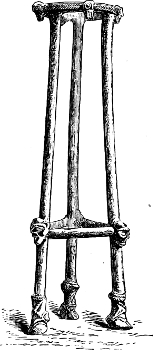
Fig. 203.—Bronze tripod. 13 inches high. Louvre.
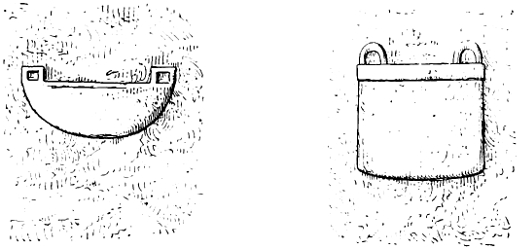
Figs. 204, 205.—Metal vases. From Layard.
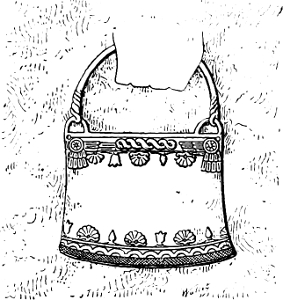
Fig. 206.—Metal bucket. From Layard.
Metal vases are often represented in the bas-reliefs, where we find them sometimes of very simple form, like the bowl (Fig. 204) and bucket (Fig. 205) here figured, which may have been of copper. They are provided on the upper edge with small loops[325] through which a cord might be passed. As for the buckets that were used in the ritual of public worship, and that the sculptor put in the hands of the winged genii adoring the sacred tree (Vol. I., Figs. 4 and 8), they were certainly of bronze, both body and handle. Their forms are very elegant, and their walls are ornamented at the top and bottom with twisted and wavy lines, with palmettes and flowers both open and closed. In the example we figure (Fig. 206) the winged globe, which is introduced just below the upper edge, attests the religious character of the object.[408]
[326]
The bas-reliefs tell us nothing about those large vessels, analogous, no doubt, to the λέβης and κρατὴρ of the Greeks, upon the sides of which the human-headed birds with extended wings, one of which we have already figured, were fixed (Fig. 91). Neither has any complete specimen of the class yet been discovered in the excavations. The frequent employment of this motive is proved, however, by the number of these detached pieces that we possess. They all come from Van, but they belonged to different vases. We here engrave a second example (Fig. 207). The ring on the back by which the handle was attached will be noticed. As in the throne described above the bronze was relieved with inlaid ornament; there is a hollow in the breast in which it was set. In the originals the rivet-holes which afforded a means of fixing them may be seen; in one or two the heads of the rivets are still in place. This specimen differs from one figured on page 172, in that it has two heads.
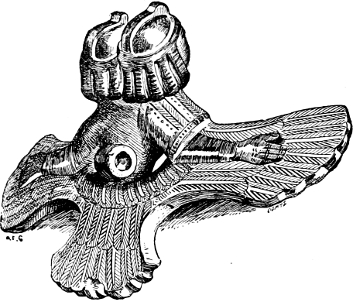
Fig. 207.—Applied piece. Height 9 inches; width 14 inches. From the collection of M. de Vogüé.
We do not multiply examples of the vessels used to transport liquids, because their decorative forms were found pretty equally distributed all over Chaldæa and Assyria. We have every reason to believe that they were produced in great numbers in all the towns of Mesopotamia. On the other hand, there is a whole class of vessels that perplex and embarrass archæologists almost as much as they delight them—the class of metal[327] cups. This name is to some extent a misnomer. We shall employ it for the sake of simplicity, but most of the objects in question are rather what we should call dishes or platters than cups. They belong to the same class as the Greek φιύλη and the Roman patera. Their vertical section is shown at the bottom of our Fig. 208. The slight ridge underneath, caused by the gentle elevation of the flat bottom, enabled the dish to be more firmly grasped than would otherwise have been possible.
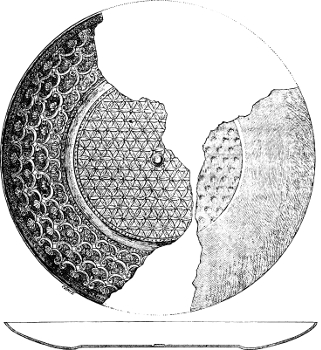
Fig. 208.—Bronze platter. From Layard.
Such things must have been comparatively rare and costly.[328] In a store-room of the North-Western Palace at Nimroud, Layard found a great number of them, packed one within another in cauldrons like those mentioned above; others, of less value no doubt, were stacked against the wall. At first the explorers were inclined to think that they all dated from the reign of Assurnazirpal, the founder of the building; but many things combined to suggest that the palace was repaired by Sargon and even inhabited by him.[409] He may have lived there until his own house at Khorsabad was finished. It is possible, therefore, that some or all of these cups date from the eighth century B.C.
In many instances oxydization had gone so far that the cups could not be lifted without falling to pieces; others, however, though covered with a thick coat of oxide, were brought away and successfully cleaned.[410] At the British Museum I compiled a catalogue of forty-four plates or cups of this kind, nearly all from the same treasure, while in the store rooms of the same institution there are many more waiting to be cleaned and rendered fit for exhibition. All these, with a few exceptions, are ornamented, the simplest among them having a star or rosette in the centre. Wherever the bronze has not been completely eaten away the decoration may be recovered, and often it is still singularly clear and sharp. A few cups that had been protected by those placed above them showed, when discovered, such brilliant copper tones that the workmen at first thought they were of gold. The mistake was soon recognized, but we may well believe that the conquerors of half Asia numbered gold and silver vessels among the treasures stored in their palaces; as yet, however, none have been found. All these cups, like the deeper vessels recovered at the same time, were of bronze; the precious metals only appear in the form of small inlays and incrustations in the alloy. In the centre of the rosettes[329] with which some of the bands are decorated a small silver stud, slightly raised above the rest of the surface, is sometimes placed, and in a few cases the points of the great rosette that occupies the centre of the plate radiate from a centre of gold, silver being banished to the small rosettes at the edge. Again, the middle is sometimes a kind of boss, over the whole of which traces of gold may still be distinguished.
The decoration of these pateræ is always inside: on the outside nothing is to be seen but the confused reverse of the pattern, such as may be seen on the left of our Fig. 208. I have found but one exception to this rule in a much deeper cup on the outside of which a lion hunt is represented.[411] In that case figures engraved within the vase would have been invisible, for it is very deep.
In most cases the ruling principle of the decoration is the division of the disk into three, four, or five concentric circles, but in some instances the whole field, with the exception of a simple border, is occupied by one subject. In those cups upon which the greatest care and thought seem to have been lavished, the figures are beaten up into relief with the hammer and then finished with the burin. In the others the whole design is carried out with the latter tool, which is sometimes used with a degree of refinement that is amazing. As an example of this we may quote a patera that has been cleaned and put on view quite recently. Stags march in file around its five concentric zones, which are all of the same width. It is difficult to explain either the fineness of the lines or the regularity of the design, each animal being an accurate reproduction of his neighbour and the intervening spaces being exactly equal. One is almost tempted to believe that the work must have been done by machinery.
We know, however, that such mechanical helps were unknown to the ancients, and, although there are many cups and vases at the museum bearing a strong mutual resemblance, we cannot point to any two that are exactly similar. To give a fair idea of the variety of their designs we should have to reproduce not only all the cups figured by Sir H. Layard, but several more that have only been prepared for exhibition quite lately. Among the latter are some very curious ones. We cannot afford the space for all this, and must be content to give a few examples chosen[330] from those on which the ornament is most definite and clearly marked.
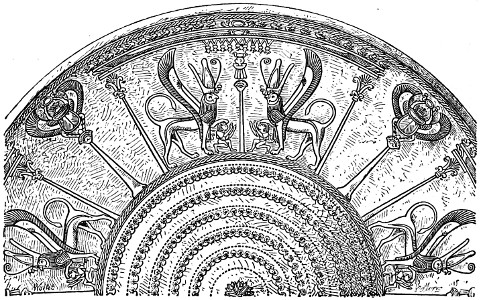
Fig. 209.—Bronze platter. Diameter about 9 inches. British Museum. Drawn by Wallet.
It was noticed by those who saw the veil of oxide drawn away from the ornamentation of these bronze vessels that a large proportion of them were Egyptian rather than Assyrian in their general physiognomy. Some of them displayed motives familiar to all those who have travelled in the Nile valley. Take, for instance, the fragment we have borrowed from one of the best preserved of them all (Fig. 209).[412] Neither the minute lines of palmettes in the centre, nor the birds that occur in the outer border, have, perhaps, any great significance, but nothing could be more thoroughly Egyptian than the zone of figures between the two. The same group is there four times repeated. Two griffins crowned with the pschent, or double tiara of upper and lower Egypt, have each a foot resting upon the head of a kneeling child, but their movement is protective rather than menacing. Instead of struggling, the child raises its hands in a gesture of adoration. Between the griffins and behind them occur slender columns, quite similar to those we have so often[331] encountered in the open architecture of Egypt.[413] Between the groups thus constituted are thicker shafts bearing winged scarabs on their campaniform capitals. These same columns and capitals occur on another cup from which we detach them in order to show their details more clearly.[414] In one instance the terminal of the shaft is unlike anything hitherto found elsewhere; it is a sphere (Fig. 210); but the contour of the next is thoroughly Egyptian (Fig. 211), and the symbols on the last three, a scarab and two uræi, proclaim their origin no less clearly (Figs. 212 to 214).
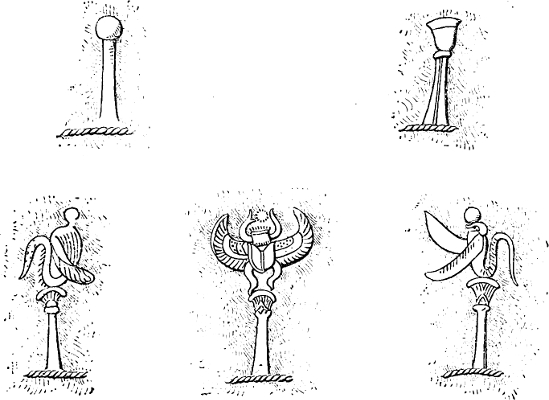
Figs. 210–214.—Columns or standards figured upon a bronze cup; from Layard.
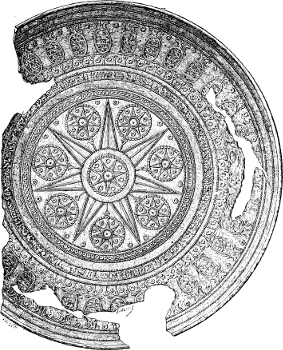
Fig. 215.—Bronze platter. Diameter 8 inches. British Museum. Drawn by Wallet.
We gather the same impression from a platter only cleaned quite lately and consequently not to be found in Sir H. Layard’s works; it is now reproduced for the first time (Fig. 215). The whole decoration is finely carried out in line with the burin. The middle is occupied by a seven pointed star or rosette, nine times repeated. Around this elegant and complex motive there are concentric circles, the third of which, counting from the centre, is filled up with small figures hardly to be distinguished by the[332] naked eye. We divine rather than see lions, birds, seated men, and certain groups of symbols, such as three lines broken and placed one above the other, which are continually recurring in the hieroglyphic writing of Egypt. The fifth zone has conventional papyrus stems alternating with rosettes. The sixth, much larger, is filled with ovals surmounted by two plumes and the uræus, that is by the royal cartouch of Egypt in its usual[333] form. The interior of each oval contains very small groups of figures separated from one another by four horizontal lines.
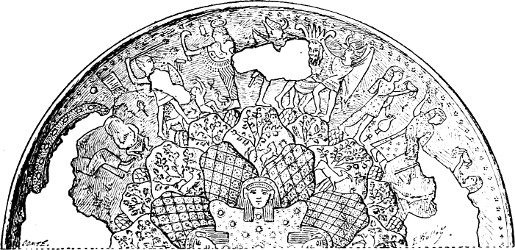
Fig. 216.—Part of a bronze cup or platter. Diameter about 9 inches. British Museum.
We may quote a cup figured by Layard as a last example of this exotic style of decoration. In the centre there are four full-face heads with Egyptian wigs (Fig. 216). Around them a mountainous country is figured in relief, and sprinkled with trees and stags engraved with the point. The wide border, which is unfortunately very much mutilated, is covered with groups of figures apparently copied from some Egyptian monument, if we may judge from the attitudes and costume. One figure, whose torso has entirely disappeared, wears the pschent and brandishes a mace over his head; the movement is almost identical with that of the victorious Pharaoh with whom we are so familiar. A goddess, who might be Isis, stands opposite to him. In another part of the border there is a misshapen monster crowned with feathers and resembling the Egyptian Bes.[415]
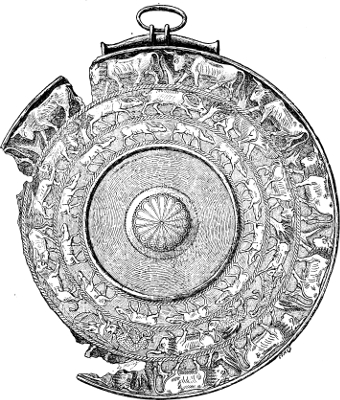
Fig. 217.—Bronze cup. Diameter 11 inches; from Layard.
Side by side with these platters we find others on which nothing occurs to suggest foreign influence. Take, for instance, the example reproduced in Fig. 208. In the centre there is a small silver boss, while the rest of the flat surface is occupied by the fine diaper pattern made up of six-petalled flowers that we have already met with on the carved thresholds (Vol. I. Fig. 96). The hollow border is ornamented with four lines of[334] palmettes united by an undulating line, a motive which is no less Assyrian than the first (Vol. I., Figs. 128, 138, 139, etc.). In Fig. 217 we reproduce a cup on which its original mounting, or ring by which it was suspended, is still in place. The whole of the decoration is pure Assyrian. The rosette is exactly similar to many of those found on the enamelled bricks (see Vol. I., Figs. 122, 123). In the first of the three zones, gazelles march in file; in the second, a bull, a gazelle, an ibex, and a[335] winged griffin, followed by the same animals attacked by lions and making fourteen figures in all; in the third zone fourteen heavy-crested bulls follow one another round the dish. All these animals are among those most constantly treated by the Assyrian sculptor; their shapes and motions are as well understood and as well rendered as in the bas-reliefs. The bulls especially are grandly designed. Moreover, the idea of employing all these animals for the adornment of such a surface is entirely in the spirit of Assyrian decoration. We shall meet with it again in the shields from Van; we figure the best preserved of the latter on page 347.
It would be easy to give more examples, either from Layard or from our own catalogue of these objects, of the purely Assyrian style on the one hand, or of that in which the influence of Egyptian models is so clearly shown, on the other. It is enough, however, that we have proved that these little monuments may be divided into two clearly marked classes. Did the two groups thus constituted share the same origin? Did they both come from the same birth-place? Further discoveries may enable us to answer this question with certainty, and even now we may try to pave the way to its solution.
There would be no difficulty if these bronze vessels bore cuneiform inscriptions, especially if the latter formed a part of the decorative composition, as in the palace reliefs, and were cut by the same hand. But this, so far as we know at present, was never the case. In some fragments of pottery we have found cuneiform characters (Fig. 185), and the name of Sargon has even been read on a glass phial (Fig. 190), but—and we cannot help feeling some surprise at the fact—none of these objects of a material far more precious bear a trace of the Mesopotamian form of writing. I do not know that a single wedge has been discovered upon them. A certain number of them are inscribed, but inscribed without exception with those letters which Phœnicia is supposed to have evolved out of the cursive writing of Egypt.[416] They were not introduced with any idea of enriching the design, as they always occur on the blank side of the vessel. They are close to the edge, and their[336] lines are very slender, suggesting that they were meant to attract as little attention as possible. They consist of but a single name, that of the maker, or, more probably, the proprietor of the cup.[417]
May we take it that these inscriptions afford a key to the mystery? that they prove the vases upon which they occur at least to have been made in Phœnicia? We could only answer such a question in the affirmative if peculiarities of writing and language belonging only to Phœnicia properly speaking were to be recognized on them; but the texts are too short to enable us to decide to which of the Semitic idioms they should be referred, while the forms of the letters do not differ from those on some of the intaglios (Figs. 156 and 157) and earthenware vases (Fig. 183), and upon the series of weights bearing the name of Sennacherib.[418] The characters belong to that ancient Aramæan form of writing which seems to have been practised in Mesopotamia in very early times as a cursive and popular alphabet.
The inscriptions, then, do little to help us out of our embarrassment, and we are obliged to turn to the style of the vessels and their decoration for a solution to our doubts. The conviction at which we soon arrive after a careful study of their peculiarities is that even those on which Egyptian motives are most numerous and most frankly employed were not made in Egypt. In the first place we remember that the Egyptians do not seem to have made any extensive use of such platters; their libations were poured from vases of a different shape, and the cups sometimes shown in the hands of a Pharaoh always have a foot.[419] Moreover, in the paintings and bas-reliefs of Egypt, where so many cups and vases of every kind are figured, and especially the rich golden vessel that must have occupied such an important place in the royal treasure, we only find the shape in question in a few rare instances.[420]
[337]
After this general statement we may go into the details. In these the hand of the imitator is everywhere visible; he borrows motives and adapts them to his own habits and tastes. Take as an example the platter to which a double frieze of hieroglyphs gives a peculiarly Egyptian physiognomy (Fig. 215). An Egyptian artist would never employ hieroglyphs in such a position without giving them some real significance, such as the name of a king or deity. Here, on the other hand, an Egyptologist has only to glance at the cartouches to see that their hieroglyphs are brought together at haphazard and that no sense is to be got out of them. This is obvious even by the arrangement of the several characters in the oval without troubling to examine them one by one. They are divided into groups by straight lines, like those of a copy book. The Egyptian scribe never made use of such divisions; he distributed his characters over the field of the oval according to their sense and shape. The arrangement here followed is only to be explained by habits formed in the use of a writing that goes in horizontal lines from left to right or right to left. There is, in fact, nothing Egyptian but the shape of the ovals, and the motive with which they are crowned. The pretended hieroglyphs are nothing but rather clumsily executed pasticcios. And it must be noticed that even this superficial Egyptianism is absent from the centre of the dish. In those Theban ceilings which display such a wealth of various decoration we may find a simple rosette here and there, or rather a flower with four or eight petals, but these petals are always rounded at the end; nowhere do we find anything that can be compared to the great seven-pointed star which is here combined so ingeniously with eight more of the same pattern but of smaller size. On the other hand this motive is to be found on a great number of cups where no reminiscence of Egypt can be traced. The ruling idea is the same as that of the diaper-work in the thresholds from Khorsabad and Nimroud (see Vol. I., Fig. 135).
After such an example we might look upon the demonstration as made, but it may be useful to complete it by analyzing the other cups we have placed in the same class. That on which[338] the scarabs on standards and the opposed sphinxes appear (Fig. 209) seems pure Egyptian at first sight; but if we take each motive by itself we find variations that are not insignificant. In Egyptian paintings, when the scarab is represented with extended wings they are spread out horizontally, and not crescent-wise over its head.[421] We may say the same of the sphinx. The griffin crowned with the pschent is to be found in Egypt as well as the winged sphinx,[422] but the Egyptian griffins had no wings,[423] and those of the sphinxes were folded so as to have their points directed to the ground. In the whole series of Egyptian monuments I cannot point to a fictitious animal like this griffin. It is in the fanciful creations of the Assyrians alone that these wings, standing up and describing a curve with its points close to the head of the beast that wears them (see Fig. 87), is to be seen. It is an Assyrian griffin masquerading under the double crown of Egypt, but a trained eye soon penetrates the disguise.
The arrangement, too, of the group is Assyrian. When the Egyptians decorated a jewel, a vessel, or a piece of furniture by combining two figures in a symmetrical fashion, they put them back to back rather than face to face.[424] Very few examples can be quoted of the employment in Egypt of an arrangement that is almost universal in Assyria. In the latter country this opposition of two figures is so common as to be common-place; they are usually separated from each other by a palmette, a rosette, a column or even a human figure (see Vol. I., Figs. 8, 124, 138, 139; and above, Figs. 75, 90, 141, 152, 153, 158, etc.), and it was certainly from Mesopotamia that Asia Minor borrowed the same motive, which is so often found in the tombs of Phrygia and in Greece as far as Mycenæ, whither it was carried from Lydia by the Tantalides.[425]
[339]
The same remarks will apply to the cup partially reproduced in our Fig. 216. The ornament of the centre and of the outer band is Egyptian in its origin, but the mountainous country with its stags and its trees, that lies between—have we found anything like it in Egypt? The mountains are suggested in much the same fashion as in the palace reliefs, and we know how much fonder the sculptors of Mesopotamia were of introducing the ibex, the stag, the gazelle, etc., into their work than those of Egypt. The rocky hills and sterile deserts that bounded the Nile valley were far less rich in the wilder ruminants than the wooded hills of Kurdistan and the grassy plains of the double valley.
There is one last fact to be mentioned which will, we believe, put the question beyond a doubt. Of all antique civilization, that which has handed down to us the most complete material remains is the civilization of Egypt. Thanks to the tomb there is but little of it lost. Granting that these cups were made in Egypt, how are we to explain the fact that not a single specimen has been found in the country? About sixty in all have been recovered; their decoration is distinguished by much variety, but when we compare them one with another we find an appreciable likeness between any two examples. The forms, the execution, the ornamental motives are often similar, or, at least, are often treated in the same spirit. The majority come from Assyria, but some have been found in Cyprus, in Greece, in Campania, Latium, and Etruria. Over the whole area of the ancient world there is but one country from which they are totally absent, and that country is Egypt.
[340]
We may, then, consider it certain that it was not Egyptian industry that scattered these vessels so widely, from the banks of the Euphrates to those of the Arno and the Tiber, not even excepting from this statement those examples on which Egyptian taste has left the strongest mark. Egypt thus put out of the question, we cannot hesitate between Mesopotamia and Phœnicia. If the cups of Nimroud were not made where they were found, it was from Phœnicia that they were imported. The composite character of the ornamentation with which many of them were covered is consistent with all we know of the taste and habits of Phœnician industry, as we shall have occasion to show in the sequel. On the other hand we must not forget at how early a date work in metal was developed in the workshops of Mesopotamia. Exquisite as it is, the decoration of the best of these vases would be child’s play to the master workmen who hammered and chiselled such pictures in bronze as those that have migrated from Balawat to the British Museum.
We are inclined to believe that the fabrication of these cups began in Mesopotamia; that the first models were issued from the workshops of Babylon and Nineveh, and exported thence into Syria; and that the Phœnicians, who imitated everything—everything, at least, that had a ready sale—acclimatized the industry among themselves and even carried it to perfection. In order to give variety to the decoration of the vases sent by them to every country of Western Asia and Southern Europe, they drew more than once from that storehouse of Egyptian ideas into which they were accustomed to dive with such free hands; and this would account for the combination of motives of different origin that we find on some of the cups. Vases thus decorated must have become very popular, and both as a result of commerce and of successful wars, must have entered the royal treasures of Assyria in great numbers. We know how often, after the tenth century, the sovereigns of Calah and Nineveh overran Palestine, as well as Upper and Lower Syria. After each campaign long convoys of plunder wended their way through the defiles of the Amanus and Anti-Lebanon, and the fords of the Euphrates, to the right bank of the Tigris. The Assyrian conquerors were not content with crowding the store-rooms of their palaces with the treasures thus won, they often transported the whole[341] population of a town or district into their own country. Among the Syrians thus transplanted there must have been artizans, some of whom endeavoured to live by the exercise of their calling and by opening shops in the bazaars of Babylon, Calah, and Nineveh. Clients could be easily gained by selling carved ivories and these engraved cups at prices much smaller than those demanded when the cost of transport from the Phœnician coast had to be defrayed.
In one of these two ways it is, then, easy to explain the introduction of these foreign motives into Assyria, where they would give renewed life to a system of ornament whose resources were showing signs of exhaustion. This tendency must have become especially pronounced about the time of the Sargonids, when Assyria was the mistress of Phœnicia and invaded the Nile valley more than once. To this period I should be most ready to ascribe the majority of the bronze cups; the landscapes, hunts and processions of wild animals with which many of them are engraved, seem to recall the style and taste of the bas-reliefs of Sennacherib and Assurbanipal rather than the more ancient schools of sculpture.
In any case it would be difficult, if not impossible, to distinguish between the vases engraved in Mesopotamia by native workmen and those imported from Phœnicia, or made at Nineveh by workmen who had received their training at Tyre or Byblos. The resemblances between the two are too many and too great. At most we may unite all the platters found in Mesopotamia into a single group, and point out a general distinction between them and those that have been discovered in the Mediterranean basin. The ornament on the Nimroud cups is, on the whole, simpler than on those found in Cyprus and Italy; the figure plays a less important part in the former, and the compositions are more simple. The Assyrian cups, or, to be more accurate, those found in Assyria, represent the earliest phase of this art, or industry, whichever it should be called. In later years, after the fall of Nineveh, when Phœnicia had the monopoly of the manufacture, she was no longer content with purely decorative designs and small separate pictures. Her bronze-workers multiplied their figures and covered the concentric zones with real subjects, with scenes whose meaning and intention can often be readily grasped. This we shall see when the principal examples[342] of this kind of art come under review in our chapters upon Phœnicia.[426]
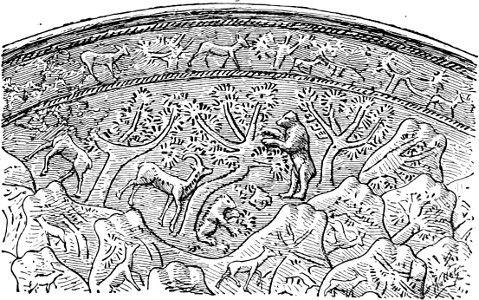
Fig. 218.—Bronze cup. British Museum.
Meanwhile, we shall not attempt to establish distinctions that are nearly always open to contest; they would, besides, require an amount of minute detail which would here be quite out of place. To give but one example of the evidence which might lead to at least plausible conclusions, we might see pure Assyrian workmanship in the cup figured below (Fig. 218),[427] where mountains, trees, and animals stand up in slight relief, both hammer and burin having been used to produce the desired result. Among these animals we find a bear, which must have been a much more familiar object to the Assyrians living below the mountain-chains of Armenia and Kurdistan than to the dwellers upon the Syrian coast. In the inscribed records of their great hunts, the kings of Assyria often mention the bear.[428] Nothing that can be compared to these wooded hills peopled by wild beasts is to be found on the cups from Cyprus or Italy. I may say the same of another cup on which animals of various species are packed so closely together that they recall the engravings on some of the cylinders (see Fig. 149).[429]
[343]
On the other hand, there are plenty of motives which may just as easily have had their origin in one country as the other. The two vultures, for instance, preparing to devour a hare stretched upon its back, which we figure below (Fig. 219).[430]
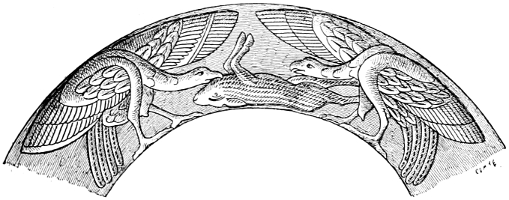
Fig. 219.—Border of a cup; from Layard.
It may be thought that we have dwelt too long upon these cups; but the sequel of our history will show why we have examined them with an attention that, perhaps, neither their number nor their beauty may appear to justify. They are first met with in Assyria, but they must have existed in thousands among the Greeks and Italiots. Light, solid, and easy to carry, they must have furnished western artists with some of their first models. As we shall see, they not only afforded types and motives for plastic reproduction, but, by inciting them to find a meaning for the scenes figured upon them, they suggested myths to the foreign populations to whom they came.
We shall not, of course, study Assyrian arms from the military point of view. That question has been treated with all the care it deserves by Rawlinson and Layard.[431] From the stone axes and arrow-heads that have been found in the oldest Chaldæan tombs, to the fine weapons and defensive armour in iron and bronze, used by the soldiers of Nineveh in its greatest years, by the[344] cavalry, the infantry, and the chariot-men of Sargon and Sennacherib, the progress is great and must have required many long centuries of patient industry. In Assyria no trade can have occupied more hands or given rise to more invention than that of the armourer. For two centuries the Assyrian legions found no worthy rivals on the battlefields of Asia; and, although their superiority was mainly due, of course, to qualities of physical vigour and moral energy developed by discipline, their unvarying success was in some degree the result of their better arms. Without dwelling upon this point we may just observe that when war is the chief occupation of a race, its arms are sure to be carried to an extreme degree of luxury and perfection. Some idea of their elaboration in the case of Assyria may be gained from the reliefs and from the original fragments that have come down to us.
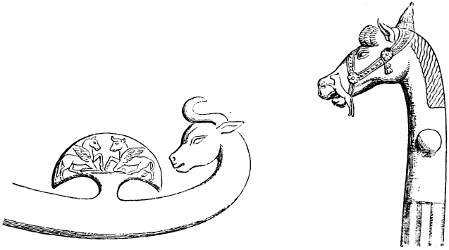
Figs. 220, 221.—Chariot poles; from a bas-relief.
It was from the animal kingdom that the Assyrian armourer borrowed most of the forms with which he embellished the weapons and other military implements he made. Thus we find the chariot poles ending in the head of a bull, a horse, or a swan (Figs. 220 and 221).[432] Elsewhere we find a bow no less gracefully contrived; its two extremities are shaped into the form of a swan’s head bent into the neck.[433]
[345]
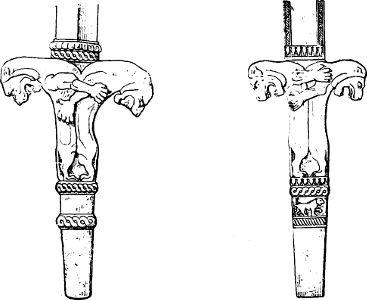
Figs. 222, 223.—Sword scabbards, from the reliefs; from Layard.
The sword is the king of weapons. By a kind of instinctive metaphor every language makes it the symbol of the valour and prowess of him who wears it. It was, therefore, only natural that the Assyrian scabbard, especially when worn by the king, should be adorned with lions (Figs. 82, 222, 223). These were of bronze, no doubt, and applied. In the last of our three examples a small lion is introduced below the larger couple. The sword-blade itself may have been decorated in the same fashion. The Assyrians understood damascening, an art that in after ages was to render famous the blades forged in the same part of the world, at Damascus and Bagdad. The Arab armourers did no more, perhaps, than practise an art handed down to them from immemorial times, and brought to perfection many centuries before in the workshops of Mesopotamia. At any rate we know that two small bronze cubes found at Nimroud were each ornamented on one face with the figure in outline of a scarab with extended wings, and that the scarab in question was carried out by inlaying a thread of gold into the bronze (Fig. 224). Meanwhile we may point to an Assyrian scimitar, the blade of which is inscribed with cuneiform characters.[434]
In the reliefs we find a large number of shields with their round[346] or elliptical surfaces divided into concentric zones.[435] A recent discovery enables us to say how these zones were filled, at least in the case of shields belonging to kings or chiefs. In 1880 Captain Clayton found, on the site of an ancient building at Toprak-Kilissa, in the neighbourhood of Van, four shields, or rather their remains, among a number of other objects. These shields are now in the British Museum. Upon one fragment we may read an inscription of Rushas, king of Urardha, or Armenia, in the time of Assurbanipal.[436]
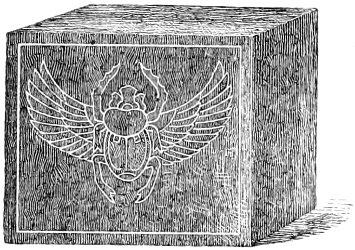
Fig. 224.—Bronze cube damascened with gold; from Layard.
This inscription, which is votive in its tenor, combines with the examination of the objects themselves, to prove that these shields are not real arms, made for the uses of war. The bronze is so thin—not more than a millimetre and a half in thickness—that even if nailed upon wood or backed with leather it could have afforded no serious protection, and its reliefs must have been disfigured and flattened with the least shock. The edge alone is strengthened by a hoop of iron. The shields are votive, and must have been hung on the walls of a temple, like those we see thus suspended in a bas-relief of Sargon (Vol. I. Fig. 190), a relief in which a temple of this same Armenia is represented.[437] But although they were made for purposes of decoration, these arms were none the less copies of those used in actual war, except in the matter of weight and solidity; thus they were furnished with loops for the arms, but these were too narrow to allow[347] the limb of a man of average size to pass through them with any freedom.

Fig. 225.—Votive shield. Diameter about 34½ inches. Drawn by R. Elson.
For us the most interesting point about them is their decoration, which is identical in principle with several of the bronze platters lately discussed (see Fig. 217). This may be clearly seen in our reproduction of the shield which has suffered least from rust (Fig. 225).[438] In the centre there is a rosette with many radiations; next come three circular bands separated from each other and from the central boss by a double cable ornament. The innermost and outermost zones are filled with lions passant, the one between[348] with bulls in the same attitude. And here we find a curious arrangement of which we can point to no other example: both lions and bulls have their feet turned sometimes to the centre of the shield, sometimes to its outer edge. The general character of the form is well grasped in both cases; but the design has neither the breadth nor firmness of that upon the cup to which we have already compared this shield (Fig. 217). The armourers were inferior in skill to the gold and silversmiths—we can think of no more appropriate name for them—by whom the metal cups were beaten and chased, although they made use of the same models and motives. No one would attribute a Phœnician origin to these bucklers; they were found in Armenia and were covered with cuneiform inscriptions. They must have been made either in Assyria, or in a neighbouring country that borrowed all from Assyria, its arts and industries as well as its written characters. The Assyrians attached too much importance to their arms and made too great a consumption of them to be content with importing them from a foreign country.
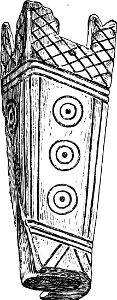
Fig. 226.—Knife-handle. Bone. Louvre.
When we turn to objects of less importance, such as daggers[349] and knives, we find their handles also often modelled after animals’ heads. We have already figured more than one example (Vol. I., tail-piece to chapter II., and Vol. II., tail-piece to chapter I.). But sometimes they were content with a more simple form of decoration belonging to the class of ornament we call geometrical, which they combined with those battlement shapes that, as we have seen, the enameller also borrowed from the architect (Vol. I. Fig. 118). A by no means ungraceful result was obtained by such simple means (Figs. 202 and 226). These knife-handles are interesting not so much on account of their workmanship as for their tendency and the taste they display. They were objects of daily use and manufacture. Cut from ivory and bone, they were sold in hundreds in the bazaars. But in every detail we can perceive a desire to make the work please the eye. The evidence of this desire has already struck us in Egypt; it will be no less conspicuous in Greece. In these days, how many useful objects turned out by our machines have no such character. Those who design them think only of their use. They are afraid of causing complications by any attempt to make one different from the other or to give varied shapes to tools all meant for the same service. They renounce in advance the effort of personal invention and the love for ornament that gives an interest of its own to the slightest fragments from an ancient industry, and raises it almost to the dignity of a work of art.
The preoccupation to which we have just alluded, the love for an agreeable effect, is strongly marked in several things which are now always left without ornament. A single example will be enough to show the difference. Nowadays all that we ask of a comb is to do its duty without hurting the head or pulling out the hair; that its teeth shall be conveniently spaced and neither too hard nor too pliant. These conditions fulfilled, it would not be out of place in the most luxurious dressing-room. The ancients were more exacting, as a series of ebony combs in the Louvre is sufficient to show (Figs. 227–229).[439] They have two[350] rows of teeth, one coarse, the other fine, and each is ornamented in the middle with a figure in open-work (Figs. 228–229) or raised in relief on a flat bed (Fig. 227). Only a part of the latter comb is preserved. The frame round the figures is cut into the shape of a cable above and below, and into rosettes at the ends. On one side of the comb there is a walking lion, on the other the winged sphinx shown in our engraving. Its body is that of a lion, it is mitred and wears a pointed beard. In the second example we have a lion with lowered head within a frame with a kind of egg moulding. The forms are so heavy that at first we have some difficulty in recognizing the species. In our last specimen both design and execution are much better. A lion is carved in the round within a frame ornamented with a double row of zig-zag lines. The modelling has been carried out by a skilful artist and is not unworthy of a place beside the Ninevite reliefs.
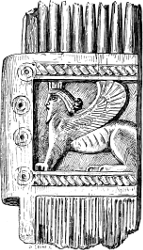
Fig. 227.—Comb. Actual size. Louvre.
[351]
We know of nothing among the spoils of Assyria that can be compared to those wooden spoons that the Egyptian workman carved with so light a hand;[440] but two objects found at Kouyundjik prove that the Assyrians knew how to give forms elegant and graceful enough, though less original, to objects of the same kind. One of these is a bronze fork, the other a spoon of the same material. Cables, zig-zags, and beads are used to ornament them, and the whole is a good example of Assyrian taste in little things.
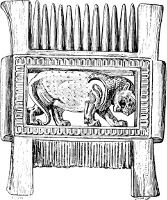
Fig. 228.—Comb. Actual size. Louvre.
So far we have treated Assyrian metal-work of the ornamental kind only as it is seen in bronze. Hardly any objects of gold or silver have, in fact, been discovered in Mesopotamia. And yet it is impossible that those two metals can have been very rare in the Nineveh of the Sargonids or the Babylon of Nebuchadnezzar; war and industry certainly led to considerable accumulations of both. We must find a reason for their absence in the success with which[352] the Assyrian tomb has so far avoided discovery. The tomb alone could offer a safe asylum to such treasures, and preserve them in its shadows for the inquisitive eyes of modern archæologists. Before being abandoned to the slow effects of time, the temples and palaces were pillaged. Here and there, however, in some well contrived hiding-place or forgotten corner, a few trinkets may have escaped the eyes of greedy conquerors, or of the later marauders who sounded the ruins in every direction for the sake of the precious metals they might contain.
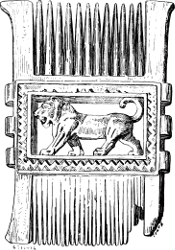
Fig. 229.—Comb. Actual size. Louvre.
The oldest jewels left to us by these peoples are those found in the most ancient tombs at Warka. Their forms are simple enough—bronze bracelets made of a bar tapering rapidly to each end and beaten with a hammer into a slight oval (Figs. 232, 233). These bars are sometimes very thick, as our first example shows. The golden ear-drops from the same tombs (Fig. 234) are made in the same way.
At Nineveh the art is more advanced. We may form our ideas of it from the bas-reliefs, where people are shown with jewels about their arms, their necks, and hanging on their cheeks; and[353] also from a few original specimens that have escaped the general wreck. In the foundations of Sargon’s palace, under the massive threshold, were found too, together with a large number of cylinders, the remains of necklaces made up of pierced stones, such as carnelian, red and yellow jasper, brown sardonyx, amethyst, &c., cut into cylinders, polygons, medallions, and into the shapes of a pear and of an olive or date-stone (Fig. 235). This use of precious stones was a survival from the days when pebbles were turned to the same purpose. Earrings were made in the same fashion (Figs. 236, 237). In one of the reliefs we see a eunuch wearing a necklace in which double cones alternate with disks (Fig. 238). The same elements could of course be used for bracelets or armlets, by shortening the wire on which they were strung. From an art point of view such a jewel was quite primitive; all its beauty lay in the rich colours of its separate stones, among which beads of glass and enamelled earthenware have also been found.
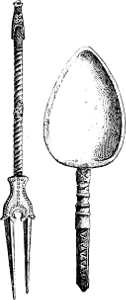
Figs. 230, 231.—Bronze fork and spoon; from Smith’s Assyrian Discoveries.
[354]
Kings and other high personages were not content with such simple adornments. It would seem that princes wore necklaces made up of separate pieces each of which had an emblematic signification of its own (Fig. 239), because we find them constantly reappearing in the reliefs, sometimes around the sovereign’s neck, sometimes distributed over the field of a stele. In the stele of Samas-Vul, the king only wears a single ornament on his breast; it is exactly similar to what we call a Maltese cross (Fig. 116).
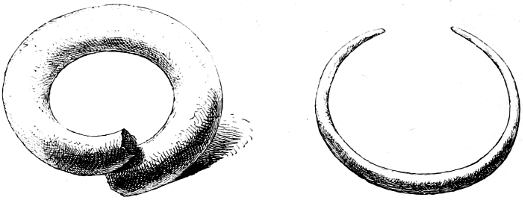
Figs. 232, 233.—Bracelets; from Rawlinson.
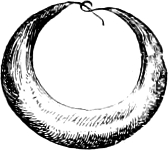
Fig. 234.—Ear-drop. British Museum.
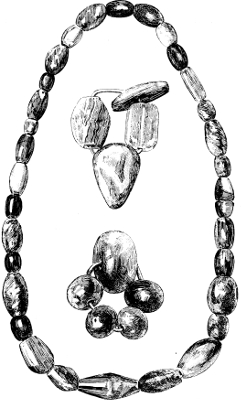
Figs. 235–237.—Necklace and ear-drops. Louvre. Drawn by Saint-Elme Gautier.
These ornaments must have been of gold and of some considerable size. The grand vizier, and the king when his tiara is absent, wear a diadem about their foreheads in which the rosette is the chief element of the decoration (Vol. I. Figs. 25 and 29). The queen’s diadem, in the “Feast of Assurbanipal,” is crenellated (Fig. 117), reminding us of that worn by the Greek Cybele. In the same monuments the wrists of kings and genii are surrounded with massive bracelets (Vol. I. Figs. 4, 8, 9, 15, 23, 24, 29, &c.). In the Louvre there is a bronze bracelet of exactly the same type (Fig. 24C).[441] We[355] may see them figured among the objects offered in tribute in a bas-relief at Nimroud (Fig. 241). From the same reliefs we gather several examples of ear-pendents (Figs. 242–244). It is probable that the same models were carried out in gold, silver, or bronze, according to the rank and fortune of the[356] people for whom they were made.[442] The forms were not altogether happy.

Fig. 238.—Necklace; from Layard.
And yet the Assyrian workmen could sometimes turn out lighter and more graceful objects than these. It was, no doubt, when they laboured for the softer sex that they modified their methods of work. The figure of a winged genius in which we ventured to recognise a goddess wears several necklaces, and one of them looks like a chain with alternately thin and stout members (Fig. 162). Now, at Kouyundjik, a necklace has been found (Fig. 245) bearing no little resemblance to the one here copied by the sculptor. It is composed of slender gold tubes, separated from each other by beads of the same metal. These beads are alternately ribbed and smooth. The workmanship is good and very careful.
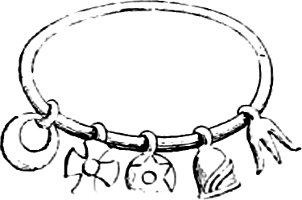
Fig. 239.—Royal necklace; from Rawlinson.
That these articles of personal jewelry were made in the country is proved by the fact that not a few of the moulds used by the jewellers for the patterns most in favour have been found. They are small slabs of serpentine or very hard limestone, in one face of which the desired pattern is cut in intaglio (Figs. 246 and 247). Wherever the pattern communicates with the outer edge by a small opening, it may have been used to receive the liquid metal; where no such[357] gutter exists, the design must have been stamped, the leaves of metal being placed over the hollow and beaten into it with a mallet.[443]
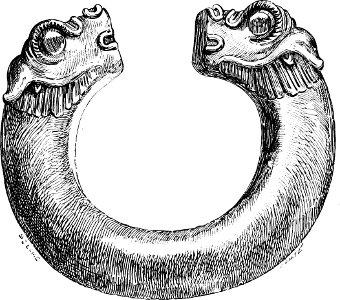
Fig. 240.—Bracelet. Diameter 5 inches. Louvre. Drawn by Saint-Elme Gautier.
It was by this latter process, no doubt, that those buttons which have been found in such quantities by every one who has explored the Assyrian palaces, were made. They are sometimes small disks ornamented with concentric bands (Fig. 248), sometimes lozenges with beaded edges (Fig. 249). These buttons have sometimes staples for attachment like ours, but more often they are pierced with a small hole for the passage of a metal thread. They were thus fixed on the king’s robes and the harness of his horses. Our Fig. 250, which is copied from a bas-relief at Kouyundjik, shows how the leather bands that encircled the necks of the chariot-horses and supported bells, metal rosettes and coloured tassels, were decorated.[444]
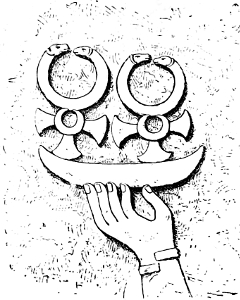
Fig. 241.—Bracelets; from Layard.
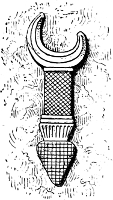
Fig. 242.—Ear-drop; from Layard.
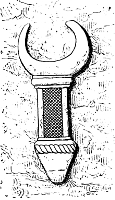
Figs. 243, 244.—Ear-drops; from Layard.
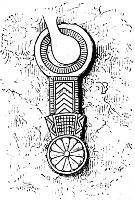
Figs. 248, 249.—Gold buttons. British Museum.
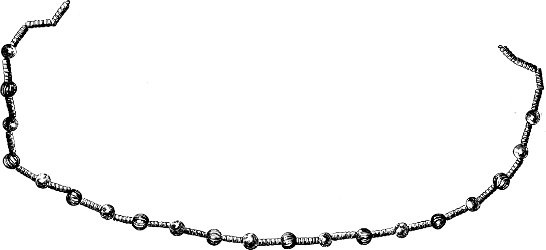
Fig. 245.—Necklace. British Museum.
The habits and tastes of the Oriental saddler have not changed since the days of antiquity. We cannot get a better idea of Assyrian harness than by examining the sets exposed for sale[358] in the present day in the bazaars of Turkey, Persia, and India. More than once, when some Kurdish bey rode past him on his Arab, Sir H. Layard felt as if he had seen a vision from one of the Ninevite reliefs. The leather stitched with bright coloured threads, the housings of gaudy wool, the hawk’s bells tinkling round the horse’s neck, were all survivals from [361]the past. The equipment of a Spanish mule, or the harness that used to be worn by the waggon teams of Eastern France within the memory of men not yet old, gives some idea of the effect produced.
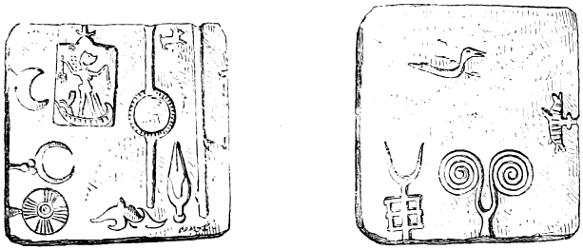
Figs. 246, 247.—Moulds for trinkets; from Layard.

Figs. 248, 249.—Gold buttons. British Museum.
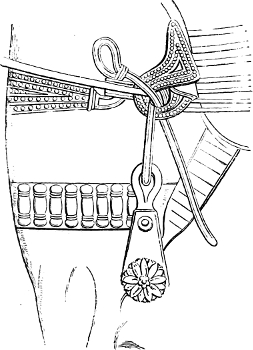
Fig. 250.—Part of the harness of a chariot-horse.
Personal jewelry and the apparatus of the toilet seem to have been no less elaborate in the Babylon of Nebuchadnezzar than in the Nineveh of Sennacherib, but we possess very few objects that can be surely referred to that period. To the[362] very last years of the Chaldæan empire, if not to a still later date, must be ascribed two golden earrings now in the British Museum (Figs. 251 and 252). They represent a naked child, with long hair and a head much too large for its body. We are told that they were found in a tomb at Niffer, with other objects whose Chaldæan character was very strongly marked. Without this assurance we should be tempted to think their date no more remote than that of the Seleucidæ.
Among the knobs, or buttons, used so largely by joiners, tailors, and saddlers, some have been found of ivory and of mother-of-pearl. The jewellers, too, must have used these substances, which would give them an opportunity for effective colour harmonies. Thus Layard mentions an ear-pendent that he found at Kouyundjik, which had two pearls let into a roll of gold.[445]
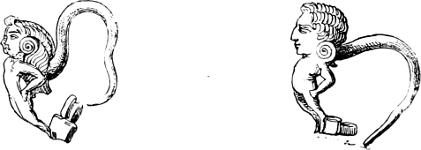
Figs. 251, 252.—Ear-pendents. British Museum.
On the other hand no amber has been found in Mesopotamia. That substance was widely used by the Mediterranean nations as early as the tenth century before our era, but it does not seem to have been carried into the interior of Asia. It has been asserted that one of the cuneiform texts mentions it;[446] that assertion we cannot dispute, but it is certain that neither in the British Museum nor in the Louvre, among the countless objects that have been brought from the Chaldæan and Assyrian ruins to those great store-houses of ancient art, has[363] the smallest fragment of amber been discovered. If it ever entered Mesopotamia, how could it have been more fitly used than in necklaces, to the making of which glass, enamelled earthenware, and every attractive stone within reach, contributed?[447]
Among people who looked upon nudity as shameful, the robe and its decorations were of no little importance. Both in Chaldæa and Assyria it was carried to a great pitch of luxury by the noble and wealthy. They were not content with fine tissues, with those delicate and snowy muslins for which the kings of Persia and their wives were, in later years, to ransack the bazaars of Babylon.[448] They required their stuffs to be embroidered with rich and graceful ornament, in which brilliant colour and elegant design should go hand in hand.[449] The Chaldæans were the first to set this example, as we know from the most ancient cylinders, from the Tello monuments and from the stele of Merodach-idin-akhi (Fig. 233). But it would seem that the Assyrians soon left their teachers behind, and in any case the bas-reliefs enable us to become far better acquainted with the costume of the northern people than with that of their southern neighbours. Helped and tempted by the facilities of a material that offered but a very slight resistance to his chisel, the Assyrian sculptor amused himself now by producing a faithful copy of the royal robes in every detail of their patient embroidery, now by imitating in the broad thresholds, the[364] intersecting lines, the stars and garlands woven by the nimble shuttle in the soft substance of the carpets with which the floors of every divan were covered.
The images on the royal robes must have been entirely embroidered (Figs. 253 and 254). They cannot have been metal cuirasses engraved with the point, as we might at the first glance be tempted to think. In the relief there is no salience suggesting the attachment of any foreign substance. Neither have we any reason to believe that work of such intricate delicacy could be carried out in metal. It was by the needle and on a woollen surface that these graceful images were built up.
The skill of the Babylonian embroiderers was famous until the last days of antiquity.[450] During the Roman period their works were paid for by their weight in gold.[451] Even now the women of every eastern village cover materials often coarse enough in themselves with charming works of the same kind. They decorate thus their long hempen chemises, their aprons and jackets, their scarves, and the small napkins that are used sometimes as towels and sometimes to lay on the floor about the low tables on which their food is served.
It is likely that the Assyrian process was embroidery in its strictest sense. In the modern bazaars of Turkey and Persia table-covers of applied work may be bought, in which hundreds of little pieces of cloth have been used to make up a pattern of many colours; but in the sculptured embroideries the surfaces are cut up by numerous lines which could hardly have been produced, in the original, otherwise than by the needle. This, however, is a minor question. Our attention must be directed to the composition of the pictures and to the taste which inspired and regulated their arrangement.
[365]
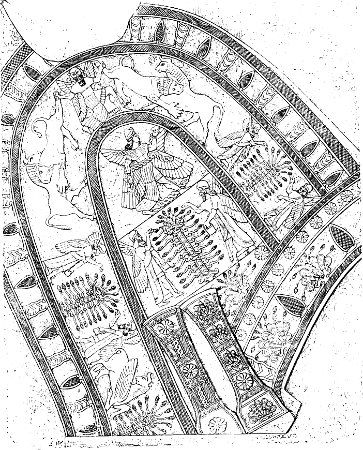
Fig. 253.—Embroidery on the upper part of the king’s mantle; from Layard.
[367]
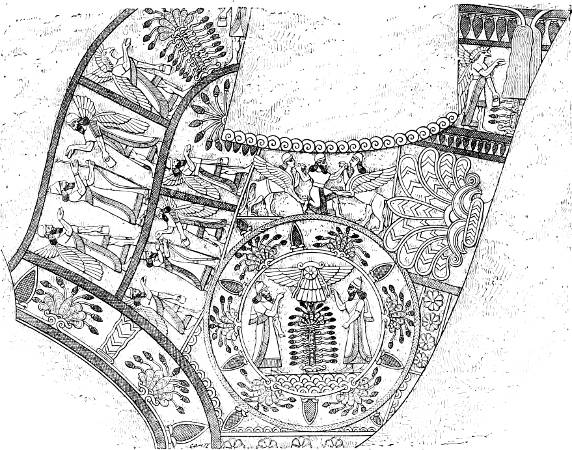
Fig. 254.—Embroidery upon a royal mantle; from Layard.
[369]
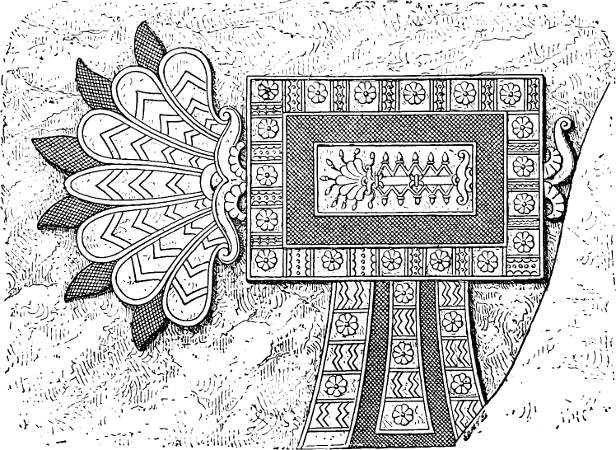
Fig. 255.—Embroidered pectoral; from Layard.
The principle of the decoration as a whole is almost identical with that of the bronze platters. A central motive is surrounded by parallel bands of ornaments in which groups of figures are symmetrically disposed. Outside this again are narrow borders composed of forms borrowed chiefly from the vegetable kingdom, such as conventional flowers and buds, palmettes, and rosettes. The figures are strongly religious in character; here we find winged genii, like those about the palace doors, adoring the sacred tree, floating in space, or playing with lions (see Fig. 253); in another corner the king himself is introduced, standing between two monitory genii, or in act of homage to the winged disk and mystic palm.
All these images are skilfully arranged, in compartments bounded by gracefully curving lines. The designer has understood how to cover his surface without crowding or confusion, and has shown a power of invention and a delicate taste that can hardly be surpassed by any other product of Mesopotamian art. There is no trace of the heaviness to which we alluded in our section on jewelry.
[370]
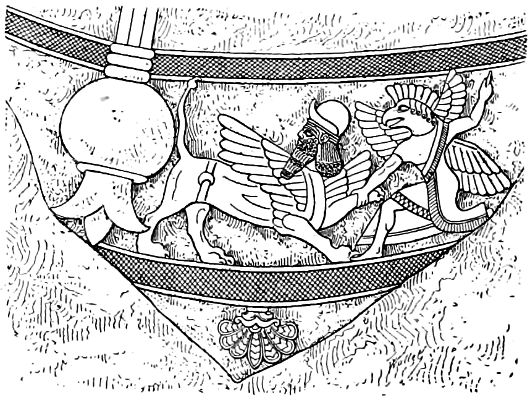
Fig. 256.—Detail of embroidery; from Layard.
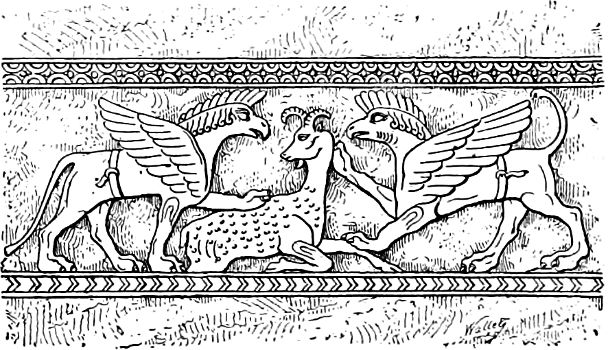
Fig. 257.—Detail of embroidery; from Layard.
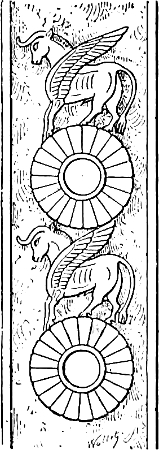
Fig. 258.—Detail of embroidery; from Layard.
The impression made by these compositions as a whole is intensified when we examine their separate details. The variety of the combinations employed is very striking. Sometimes the ornament is entirely linear and vegetable in its origin. Look, for instance, at the kind of square brooch worn on his breast by one of the winged genii at Nimroud (Fig. 255). The sacred tree surrounded by a square frame of rosettes and wavy lines occupies the centre, the palmette throws out its wide fronds at one end. In another example we find a human-headed lion, mitred and bearded, struggling with an eagle-headed genius. On the right of our woodcut (Fig. 256) a bud or flower like that of the silene inflata, hangs over the band of embroidery; it is a pendent from the necklace. Sometimes we find real combined with fictitious[371] animals. In Fig. 257 two griffins have brought down a spotted deer. Elsewhere we see a winged bull perched upon a large rosette in an attitude that is at once unexpected and not ungraceful (Fig. 258). Finally the king himself or a personage resembling him is often represented struggling with fictitious monsters (Fig. 259). In this figure notice the rosettes that are scattered promiscuously over the field. We shall encounter the same prodigality of ornament in the oldest Greek vases, whose decorators seem to have been afraid to leave a corner of their surface unoccupied.
In his way the weaver was no less skilful than the embroiderer, but he could not give quite so much rein to his fancy as his fellow workmen. The shuttle was less free than the needle. In its passage through the threads of the warp it could hardly do more than trace symmetrical designs and repeat them at regular intervals. We must seek for the patterns of Chaldæo-Assyrian carpets in the sculptured thresholds of the palaces. In these the general principle never varied, but the composition changed just as it does to-day in the carpets and rugs imported from Turkey and Persia. In any case there was a border into which the softest and most delicate colours were introduced. As a rule it must have been decorated with one of those “knop and flower” ornaments originally invented by the Egyptians.[452] The space so inclosed was sometimes divided into coffer-like compartments or panels, sometimes it was filled with a single diaper pattern, as in the threshold from Khorsabad (Vol. I. Fig. 96). No figures of men or animals are to be found here. The simple and perhaps monotonous forms borrowed from the vegetable kingdom, were thoroughly well suited for stuffs destined to be stepped upon by countless feet. If, in our fancy, we clothe the patterns of the carved sills in all the charm of varied colour, we obtain a glowing surface that may be compared, at a respectful distance, with the gorgeous colour harmonies of the Mesopotamian plains, when the spring showers[372] have clothed them in a robe of brilliant green, studded with the pure white of the marguerite, the gold of the ranunculus, and the rich satin of the purple tulip.
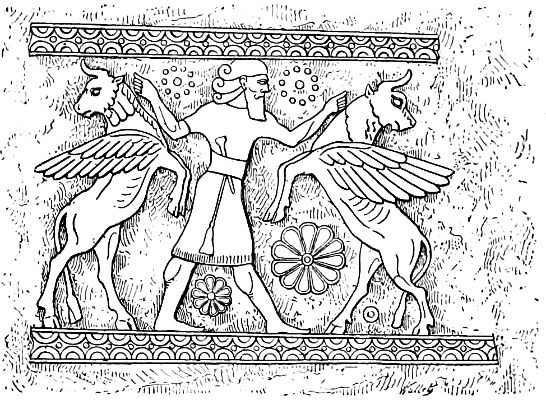
Fig. 259.—Detail of embroidery; from Layard.
The industry whose products we have been describing presupposed an active and widely extended commerce. It made use of many things that were not to be found within its own country, and it produced so much that it could not fail to seek for profitable exchanges. “Thou [Nineveh] hast multiplied thy merchants above the stars of heaven,”[453] says the prophet Nahum; and Ezekiel calls Chaldæa “a land of traffic” and Babylon “a city of merchants.”[454]
Like Egypt, neither Chaldæa nor Assyria understood the use of money, but its absence did not affect their trade. Whether their system was one of barter, or whether they employed the precious metals in rough ingots or rings of a certain weight, weighing them in the balance for each transaction, we cannot say, but we know that the great cities of Mesopotamia had intimate business relations with the surrounding countries for many centuries, and that their merchants had ingenious methods of mobilizing their[373] capital. It is even asserted that they made use of the bill of exchange or of something strongly resembling it.[455]
It was only at its southern extremity that Mesopotamia had a sea-board, and we have very little information as to its maritime commerce. There seems to be no doubt, however, that it held communication with India by sea. Ur, the oldest of the successive capitals of Chaldæa, was near the Persian Gulf, and its ships are often mentioned in the inscriptions.[456]
As civilization advanced those vessels must have increased in number. Isaiah speaks of the ships of the Chaldæans.[457] The regular winds of the Indian Ocean enabled a sea traffic to be carried on without danger; ships could proceed to the mouths of the Indus and return to the Persian Gulf almost to the day. That communication of some kind existed between the two countries can be proved. The zebu, or humped ox, is often represented on the Mesopotamian monuments; and that animal is indigenous in India, where its domestication dates back to the remotest antiquity. Among the half decomposed beams that have been disinterred from the ruins in Lower Chaldæa, some of teak have been recognized.[458] Now the home of that tree is in India; it is to be found neither in Chaldæa nor in any other part of Western Asia. Finally a large proportion of the ivory consumed by the artificers of Babylon and Nineveh must have come from India. The same ships may have brought African ivory from the land of the Somalis, and, as they coasted along Arabia they may have increased their cargoes with myrrh, incense, and other aromatic spices from that country.[459]
But it was in the main by land that Mesopotamia imported her raw material and exported her manufactures. There must have been continual intercourse by caravan between Assyria and the[374] Indus valley. The route must have been by Cabul, Herat, the gates of the Caspian and Media.[460] Several passes led down to the Tigris valley from the plateau of Iran. Longer and more difficult roads brought Armenia and the Caucasus into relations with Nineveh; but, as Herodotus noticed, the rafts of inflated skins, or keleks as they are now called, could be used to float the stones and metals, the leather and the wool of the hilly regions down to the Assyrian capital and the cities of Chaldæa. Timber also would come down with the stream. Towards the west the roads that crossed the fords of the Euphrates, either at Thapsacus, or higher up, at Karkhemish, put Assyria into communication with Asia Minor by the defiles of the Taurus, and with Upper Syria and Damascus by the desert and the oasis of Tadmor. It was by this latter route that the great ports on the Syrian coast received those draperies and carpets which Ezekiel was so careful to enumerate when he pictured the commerce of Tyre. Addressing that queen of the sea whose fall made him leap for joy, he cries: “Haran, and Canneh, and Eden, the merchants of Sheba, Asshur and Chilmad were thy merchants. These were thy merchants in all sorts of things, in blue clothes, and broidered work, and in chests of rich apparel, bound with cords, and made of cedar among thy merchandize.”

[375]
In the ages that rolled away before the commencement of the period that we call antiquity, the eastern world saw the birth of three great civilizations; the civilization of Egypt, the civilization of Chaldæa, and the civilization of China. All three are primitive in character. So far at least as we can judge, no other form of civilized life had preceded them in those countries; the past had left no examples to guide them on their way. In the valleys of the Nile, the Euphrates, and the Yang-tse-kiang, three natural theatres in which all was prepared for the work to be performed upon their stages, man emerged from barbarism much sooner than he did in any other part of Asia or Africa; he there formed organized societies whose beginnings are lost in so impenetrable a past that we have no little difficulty in deciding on which hearth the flame of civilized life was first kindled.
Although these civilizations had each a physiognomy of its own, they had, nevertheless, more than one common feature. It would take too long to notice all the resemblances, but we may point out two by which the historian can hardly fail to be impressed as soon as the idea of making a comparison suggests itself to his mind.
All three nations learnt to write, and to write in ideographic characters. These characters are by no means alike in Egypt, Chaldæa, and China. In each case they began by representing the thing whose idea they wished to convey, and with time they reduced and simplified the images thus created until they had a certain number of conventional forms. This work of simplification did not always proceed on the same lines. The direction it took and the final result were greatly affected by the materials[376] employed. Writing traced upon rice paper or papyrus, with a reed pen, gradually put on an appearance very different to that of characters punched in clay with a point or stylus. The three systems were in the end perfectly distinct; and when, by dint of long and patient effort, you have mastered all the difficulties of Chinese writing, you are no nearer than you were before to a comprehension of the wedges or the hieroglyphs.
And yet these three creations of man’s genius are identical in method and principle. Their point of departure was the same. They began by figuring every object to which a distinctive name had been given. The next step was to invent expedients by which these concrete signs could be used for the expression of abstract ideas, and the next again to employ them for the notation, not of ideas, but of sounds. In one country the passage from the direct to the metaphorical use of a term, and from the pure ideogram to the phonetic character, was made with more skill and rapidity than in another. Here the corrections and retouches suggested by practice were more cleverly used to remedy the vices of the system than there. But the fact to be remembered is that, without previous concert, all three societies solved the problem put before them in the same fashion, and that problem was how to fix their thoughts and transmit them to future generations. They began with naïve and roughly executed images, like those made by modern savages. From this stage, in which so many less gifted races stuck fast, all three nations emerged with equal decision and good fortune. By the same roads and by-ways they arrived at the expression of the most complex ideas with a most imperfect instrument. But in spite of all their good will and their subtle intellects, neither Egypt nor Chaldæa nor China succeeded in reducing the word to its elements, and fixing upon a special symbol for each of the fundamental articulations of the human voice. A kind of hidden force, a secret instinct, seems to have urged them on to the required analysis, while they were held back by some fatality or prejudice of their birth or early education. They were all three on the point of touching the goal, but they never quite reached it, and it is to another race that the glory of having invented the alphabet must be given.
These civilizations have a second characteristic at which the[377] observer cannot but feel surprise, namely, their singular longevity and immobility. No doubt when we examine them closely we see that they changed, like everything else that is born, that lives and dies; but the changes only took place with extreme slowness. In the course of three or four thousand years beliefs and mental ideas could hardly remain quite stationary, but the forms and ceremonies of religion varied in no appreciable degree.
We may say the same of manners and social institutions. These could not, of course, remain quite the same during such a lapse of time; a single word, for instance, may have changed its meaning more than once in so many centuries; but it is none the less true that the conservative spirit, as we should call it, had a permanent force that it seems to have lost in the west, amid the rapid transformations and perpetual mobility of our modern world.
And we must recollect that these societies did not escape any more than others from the disorders of civil war, of political revolutions or barbarian inroads. Like all other human systems, they were subject to catastrophes which must have thrown everything into confusion for a time. But after each crisis had spent its force the ranks were closed and dressed, like those of a well-disciplined regiment after receiving a destructive volley. When quiet had come again men returned to their places in the framework of a society closely bound together by habits formed during countless generations. This framework had been so patiently elaborated and co-ordinated, it was so elastic, and, at the same time, so full of resistance, that even a foreign master found it more politic to preserve it and fall in with its ways than to destroy it; he was content, in most cases, to step into the place occupied by the prince whom he ousted. Affairs thus fell into their accustomed groove as soon as a conquest was complete; classes were reconstituted on their old bases; property and people took up their former conditions; the only difference lay in the fact that a new group of privileged individuals shared the wealth created by agricultural, industrial, and commercial activity. The sovereign and his chief officers might be of foreign race, but the social machine rolled on over the same road and with the same wheels as before.
The effect of this uniform and continuous movement did not[378] stop here: it had another consequence in the rapid assimilation of heterogeneous and accidental elements, which adapted themselves in a very short time to the mould into which they were pushed and pressed by the never-sleeping action of an intense organic life, until, in time, they became fused and lost in the life they had meant to dominate.
Thus we find that Egypt, from the time of Menes to the end of the Roman domination, appropriated, and, as it were, digested and absorbed all the emigrants who came to establish themselves within her borders. Some of these came sword in hand, after having destroyed all opposition; others crept in humbly, demanding nothing better than permission to live in peace. Some were barbarian mercenaries in the pay of Pharaoh, some shepherds or agricultural labourers attracted by the splendid fertility of the soil, others were artizans in search of wealthy patrons, or merchants who sought a profit in distributing the products of the Egyptian soil or industry over foreign lands. No matter to what race they belonged, all these strangers and foreign sojourners, from the Hyksos to the Phœnicians and the Greeks, came under the spell of Egypt and exercised but little influence over her constitution, her manners, and ideas. To dissolve a body that appeared indestructible required two great religious revolutions—the rise of Christianity, and, but a few centuries later, that of Islamism.
So it was with the civilization born in the double valley of the Tigris and Euphrates. Between the days of Ourkam and those of the Sassanids it had many different masters, but long before the apparent triumph of the Greek system, we find certain religious types maintained and repeated, which bear witness to the tenacity with which habits and beliefs, formed long before the first dawn of historic times, clung to life. Finally, China offers us a still more curious example of the intimate cohesion and the resisting force that defies the centuries. Egypt, Chaldæa, and Assyria are only memories; but China, protected by its situation, and by the circle of mountains and deserts that nature has drawn about it, the China of Confucius, still lives upon its ancient sites. Its religion is still that of the two primitive peoples we have been studying, an elaborate form of fetishism, or animism as some would have us call it. The adoration of the sovereign and of his great officers is addressed chiefly to the celestial bodies, to the sky itself, to the[379] earth and its mountains; the common people fear and worship the genii that people the air and the waters, and, still more, the spirits of their own dead. These they feel hovering about them; they talk to them; with touching solicitude they prepare their funeral feasts.
As for the chief by whom these five hundred millions of human beings are governed, his power still preserves the absolute, theocratic, and patriarchal character that distinguishes royalty in all primitive social systems. We cannot tell what the future may have in store for China, which is now in contact with the west on all its frontiers, but it is curious to think that we have as contemporaries in one of the vastest empires in the world, a nation of men who in all their intellectual conceptions are nearer to the ancient Egyptians or Chaldæans than to a modern Englishman or Frenchman. And what adds to our surprise is that a people of whom we are sometimes inclined to speak with contempt is not more easily affected by our ideas and our scientific knowledge, and even goes so far as to add one more to the anxieties that beset the civilization of which we are so proud. Even a power like that of the United States of America takes alarm at the invasion of Chinese workmen, who do more work for less pay than men of Anglo-Saxon, Irish, or German birth.
The isolation in which China has lived so long has prevented us from giving her a place in our history, but we could not ignore her altogether; we have felt ourselves compelled to point out the close and striking resemblances that make her a sister of Egypt and Chaldæa—a younger sister indeed, but one that has survived her elders; and the comparison is important because the example of China enables us to realize better than we otherwise could the conditions under which the industrial activities of Egypt and Chaldæa were exercised. Thanks to the data she furnishes we can understand how the workshops of Babylonia and the Nile delta were able to scatter their productions in such prodigious quantities over all the markets of Western Asia; how objects elegant and carefully made as they were could be delivered at a price low enough to find plenty of buyers, even when the heavy charges for freight, brokerage, &c., were added to their original cost. On the fertile plains of the Euphrates and the Nile, as in the “yellow” district of China, life was so easy and food so abundant that the workman’s wage was almost nil. This[380] gave to the dwellers in those happy regions a first advantage over the tribes condemned to win a laborious existence from the dry soil of the islands and mountain-chains of Southern Europe.
In a great bee-hive like modern China, where men swarm in countless millions, work is not only done cheaper, it is done better than among the poor and scanty tribes that peopled the shores and narrow valleys of Greece and Italy in those remote days when Memphis and Babylon were still great capitals. These small clans of fishermen and woodmen, of shepherds and agriculturists, were cut off from one another by lofty ridges, which were often to be crossed only by difficult and dangerous paths. A happy chance or a well directed effort of thought might lead one of them to discover some technical secret, but a long time would elapse before the invention would cross the mountains and simplify the toil of the neighbouring tribes. In that western world which remained so restless until the eleventh or tenth century before our era, it constantly happened that a tribe was bitten by a kind of mania to seek for a new and more favourable home. These displacements put an end to labour for a time, and brought about shocks and conflicts by which development was arrested and settled questions reopened. A canton sacked or a few villages destroyed was enough to put an end to some promising invention or to destroy the memory of some successful process. No conquest over natural difficulties was final.
It was quite otherwise in those ancient states which had a population firmly rooted in the soil, and of industrious, sedentary habits. In such societies there was no danger of a rude interruption to a work begun. When some artizan more skilful or imaginative than his fellows improved the tools of his trade, the knowledge of those improvements spread rapidly from workshop to workshop. Even in the cities of the modern East those who follow a particular trade live together in their own quarter of the town. In Constantinople and Cairo, in Damascus and Bagdad, there is the armourers’ quarter, the jewellers’ quarter, that of the saddlers, the tailors, and of many others. These quarters have their own special entrances, their officers and watchmen; in the days of antiquity as now, they formed so many small industrial towns, where, thanks to the heredity of professions and the constancy of habits and fashions, the prosperity of the manual arts[381] was not at the mercy of political accident. Wars and changes of dynasty might cause a moment of stagnation and dulness, but such troubles did not prevent the apprentice from receiving from his master the instruction in his trade that he would afterwards pass on to his successors, with all that he himself could add to the legacy of the past. There were no sudden interruptions, no solutions of continuity: all that was found was kept; nothing was forgotten or wasted.
Until the still distant day when Ionia, Greece, and Italy should also have their populous cities, Egypt and Chaldæa found themselves in a very favourable situation compared with the peoples, or rather tribes, who dwelt on the shores of the Mediterranean. Among the latter none but those simple industries that could be carried on under the family roof, and in which the women and children could take their part, were understood. In the basins of the Nile and the Euphrates there were real manufactures. Artizans were specially trained and grouped into corporations; they did not work only in the hours they could spare from agriculture; they laboured at their trade without interruption from one end of the year to the other, producing objects which commerce would afterwards “place” where the demand was brisk. In fact they had a real, we might almost say a great industry. Beside the machine-fed industry of modern Europe its output was no doubt small; neither Egypt nor Chaldæa had steam, nor electricity, nor the “spinning-jenny;” but their organization and division of labour gave them a superiority over their contemporaries no less crushing than that by which modern Europe is enabled to flood the whole surface of this planet with her manufactures, and to substitute them for the local industries. In every little village of Anatolia I found the cottons of Manchester and the blue plates of Creil; they could be bought cheaper than native pottery and textiles. It was the same in antiquity. In the islands and on the coasts of the Ægæan, there was no competition to be feared by the faïence, the vessels of terra-cotta or metal, the textiles, the arms, the ivories, the glass, the utensils of every shape and kind sent out in such inexhaustible quantities from the workshops of Egypt and Chaldæa.
We must endeavour to point out the channels by which the overflow from this rich and varied production reached the people by whom it was consumed. And we have a distinction to make[382] between the various foreign countries to which it was conveyed. We have, on the one hand, those countries that were in direct contact with Egypt and Chaldæa, such as Syria, for instance, which dealt immediately with the manufacturers of the Delta and the Euphrates valley. On the other there were distant clients who scarcely knew the name of the country from which their merchandize was brought. They made their purchases at second or even third hand. The influence of the two great primitive civilizations was naturally felt with less force at a distance than when close at hand. In the case of next-door neighbours, it no doubt favoured the progress of industry and the creation of wealth, but at the same time it must have weighed like an incubus on the national genius and imagination; by furnishing it with a complete repertory of forms and types it must have discouraged it and prevented it from becoming truly creative. On the other hand, with those who only came under that influence when attenuated, and, as it were, refracted by interposed media, the effect was quite different. It gave useful hints and suggestions, stimulating the spirit at the same time as it dispensed with the necessity of long periods of experiment and uncertainty. In the latter case originality was not crushed in the bud; it was enabled to develop itself with complete freedom.
These differences will be pointed out hereafter as they occur, but it was necessary to insist before going any further on the common features presented and the similar parts played by Egypt and Chaldæa in all the earlier ages of antiquity. These two peoples, who were so long practically forgotten, were the real founders of western civilization. To be ignorant of this capital fact or to shut one’s eyes to it for a moment is to lose one’s grasp of the true rise and subsequent development of the system which is in course of completion under our eyes and with our help.
Five or six centuries seem to have been sufficient for Greece and Italy to raise themselves to the pitch of refinement and culture suggested to us by the names of Pericles, of Alexander and Augustus. At first one is not amazed by this singular phenomenon. One thinks a satisfactory reason has been given for it by a few general statements as to the genius of those gifted races. But criticism has now grown to be more exacting. It has more precise observations and more numerous points of[383] comparison at its command. It knows how slowly, especially in the first steps, collective and successive works are accomplished. It seeks for an explanation of such rapid progress in the duration and importance of the preliminary work carried out with untiring patience by the older societies, the laborious forerunners of the brilliant favourites of history. Without this long preparing of the ground, lasting at least some two or three thousand years, without the countless efforts of invention and the prolific activity that filled up that period, how much longer the nations of Southern Europe would have been in shaking themselves free of the barbarism in which Scythians and Sclaves, Celts and Germans were steeped until they were conquered by Rome. What turn things might have taken we cannot even guess, but of this we may be sure, that the world would not have witnessed when it did the marvellous and almost sudden appearance of the flowers of classic art and poetry.
Now the industries of Egypt and Chaldæa won their great prestige, and the works with which they flooded all the countries within their reach awakened the plastic genius of the western races, because behind them there was an art, an art not without faults, but yet with no little originality and grandeur.
In both countries architecture had created buildings whose wealth of decoration corresponded to their ample size, and gave point to the significance of their plans. The ambition of Chaldæa was no less high than that of Egypt. For size and general magnificence its great edifices might be looked upon as worthy rivals to those of the Nile valley, and yet we cannot say they deserve to be put quite on the same level. In the vast plains of the Euphrates those staged towers whose restoration we have attempted had a singular importance; they amazed the eye with their size, and pleased it with their brilliant colours; but they fell short of the nobility, the mysterious beauty and dignity of the Egyptian temples. Temples, sanctuaries, or palaces, all the great structures of Mesopotamia seem to us to suffer from a certain heaviness and want of variety, and they had another great fault. They bore in their bosoms the seeds of their own rapid dissolution. Unlike the halls of Carnac and Luxor they had no defences against the action of time and the violence of man.
The Chaldæan architect must, then, be put below his Egyptian[384] rival, and the real cause of his inferiority, as we have already explained, is to be looked for in the defects of the only material in which his conceptions could be carried out. That material was brick, brick either burnt in the kiln, or dried in the sun, with which any conception may be realized but one in which delicate mouldings and slender columns play a conspicuous part.
In the case of sculpture the balance hangs about level. The two schools rendered living forms, and especially those of mankind, in different ways, but their merits have seemed to us to be distinct rather than very unequal. In one we have found a more delicate feeling for line, for grace and refinement of contour; in the minutest statuettes as in the most gigantic colossi, we have tasted the charm of that proud and smiling serenity that is expressed as much in attitude and gesture as in the face. In the other we are chiefly struck by energy of modelling and power of movement. We have estimated these qualities of force and vigour at their full price, and we have pointed out that the form of man occupies a far more important place in the religious art of Chaldæa than in that of Egypt. In its more frankly anthropomorphic character it has seemed to us an advance upon that Egyptian sculpture which put the heads of crocodiles, hawks and hippopotamuses on the shoulders of its gods. And yet we have been obliged to acknowledge that the natural conditions were in some respects unfavourable to the development of Chaldæo-Assyrian art. Their funerary rites did not demand the absolute fidelity which made the early Egyptian sculptors such admirable portraitists. In the absence of such compulsion the Mesopotamian sculptors created general types rather than individual figures, and their art always had a more or less conventional character in consequence. Its progress was also hindered by the barrier of opaque drapery that was interposed between the artist and his model. In his figures of animals we may see how great his genius for the expression of life, form, and movement really was, and in all imitative qualities they leave his figures of men far behind. Nothing in the world can make up for the absence of that patient study of the nude, on which all really great sculpture is founded.
It is because Mesopotamian art never studied at this elementary school, and never mastered these foundations of all plastic skill, that such of its productions as border on what we call the[385] industrial arts, never shook themselves clear of a certain heaviness of hand and a certain monotony of effect. These defects are easily accounted for; a robe—and especially a straight and clinging robe like that of Assyria—hides all refinements of modelling, and all the grace of those undulating lines by which the human form is bounded. If, as in Egypt, the sculptor and painter had made all the beauties of the human figure, and especially the graceful contours of woman, familiar to every eye, artizans would have known how to give more subtle and agreeable forms to their creations, and would have been compelled to give them. A knowledge of the nude would have enabled them to make countless variations on a single theme, and to use it again and again without danger of tiring the eye. All robed figures have a certain mutual resemblance, however little there may be in common in their movement and costume. In at least one Assyrian relief we have been obliged to leave it in doubt as to whether a life-size figure is that of a god or a goddess.
On the other hand, two nude figures may be almost identical in attitude and gesture, but even a careless eye will not confound one with the other. In one the bony framework and muscular development will be more strongly marked than in the other. Sex, age, habits of work or repose, will leave their unmistakable marks upon the fleshy contours. The artist’s difficulties begin when he attempts to record all the shades of form, and, no doubt, he can never be successful in such an attempt until he has accumulated no little stock of professional knowledge and skill. But it is something when he begins to perceive those shades, and to understand their interest and value. In endeavouring to reproduce them he feels his hand become lighter and more adroit; in time he will set himself to imitate nature in all her marvellous variety, and in doing so he will be led to perceive how she never repeats herself, how she gives to each individual his own distinctive physiognomy at the same time that she never confuses the identity of type or species. Put on his mettle by this discovery, he will become more ingenious and more inventive every day. Having learnt how scarcely perceptible variations of line and proportion suffice to distinguish between one being and another, he will accustom himself to give variety to his creations by the same process; however slight the changes may be between his successive productions, each will be a new and unique creation[386] in the fullest sense of the word. Thenceforward the limits of his art will be as wide as those of nature herself. Once it has entered upon the road thus pointed out, it may indeed encounter certain difficulties of execution, but it need fear no longer a relapse into the worst of faults, monotony and uniformity.
Unlike the Egyptians, and, as we shall see, still more unlike the Greeks, the Chaldæans had to dispense with this invaluable training. Hence the inferiority of their art. That their imaginations were lively enough is proved chiefly by the decoration of their carpets and embroidered stuffs, on which all the resources of line are developed with unfailing taste and fancy; on which vegetable and animal forms, both real and fantastic, are mingled with the figures of men and supernatural genii in a fashion that is always graceful and full of variety. But the variety is more apparent than real. Every human figure is robed and practically identical in appearance; the artist was without the resources enjoyed by his Egyptian rival for modifying his theme without destroying its fundamental character.
Compelled to judge of these embroideries from a small number of examples handed down to us on the reliefs, we are ready to admire them for the diversity of their motives, but perhaps if we had a larger collection we should find some particular group or figure frequently reappearing. But even if it were so it ought not to lead us to condemn the taste of the artizans who made them. On stuffs used for garments, on carpets spread upon floors and tapestries hung upon walls, repetitions were not out of place. The motive was not looked at for itself, for its value as an isolated creation, but for the effect produced by its continual repetition. The eye receives a certain kind of pleasure from the constant return of a single arrangement of line or harmony of colour; and an element which, taken by itself, would have but little value, may be used to build up rich and graceful compositions. This is sufficiently proved by the ceramics and textiles of the modern East, such as the faïence of Persia, the shawls of India, the embroidered silks of China and the porcelain of Japan.
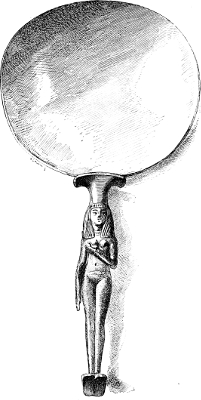
Fig. 260.—Egyptian mirror, reduced by about a fifth of its actual size. Louvre. Drawn by Saint-Elme Gautier.
The same law does not hold good in all the sumptuary arts. Take jewelry and gold or silversmith’s work, for instance. The aim is no longer to decorate and illumine a surface of indefinite extent, it is to create an object with a distinct unity and form of its [389]own. The great resource of the worker in precious metal lies, therefore, in those figures of men and animals to which nature has given a clearly defined shape and special features by which one is distinguished from the other. In this respect the goldsmith is the pupil of the sculptor. He reproduces, on a smaller scale, the types created by the statue-maker, and multiplies his copies with the freedom of hand imposed by the necessity for meeting a wider demand. It matters little that in one time or place these imitations are made with less care and refinement of taste than in another; the principle is always the same. In the industrial arts, at least in those in which the figure plays an important rôle, we find nothing that cannot be referred to some model created by the same people in their fine arts. The work of the artizan is the reduction, the reflection—enfeebled, indeed, but faithful so far as it goes—of the work of the artist.
In glancing over the productions of Chaldæo-Assyrian armourers, jewellers, workers in metal, cabinetmakers, turners, &c., we shall, then, feel no surprise at the introduction and skilful treatment of animals and parts of animals, for we have already shown that the Assyrian sculptors were, perhaps, the foremost animaliers of all antiquity. On the other hand, in the whole of those objects which have taught us some of the favourite motives of the Assyrian ornamentist, we have hardly encountered a human figure; at the most we can only point to one or two objects on which it was used. In the throne of Sennacherib (see above, Fig. 47) it was in reality no more than a symbol. It was not introduced for its own sake, but in order to suggest a particular idea to the mind of the spectator. And as for the earrings moulded into the shape of a child (Figs. 251 and 252), we are not at all sure that they belong to the place and period to which they are ascribed.
But although we are met on all sides by animals and by fragments from their bodies, by serpents, rams, goats, bulls, lions (most frequent of all), griffins and other fictitious monsters, we are distressed by the absence of those figures of men, still more of women, which occur so continually on the articles of furniture, on the domestic utensils, on the metal vases and the jewelry of the Egyptians. Wearied by the very wealth of an art so rich and so marvellously inventive, we have given, perhaps, in our volumes upon Egypt, examples too few and chosen from an insufficient[390] number of classes; but our readers cannot have forgotten the graceful girlish forms carved on the handles of the perfume spoons, here stepping delicately among the stems of papyrus, there with their slender limbs extended like those of a swimmer.[461] We may be allowed, perhaps, to refresh the memories of readers who have dwelt so long with us in Assyria, by placing before them two more examples from the marvellous art wealth of the Nile valley (Figs. 260 and 261).
These two examples do not belong to the same class as the perfume spoons, but their ruling idea is the same. They are mirrors with bronze handles. In both cases these handles are modelled in the shape of nude women or young girls, the slender proportions recalling the sculptures and paintings of the New Empire. In the first the right arm hangs by the side while the left is crossed upon the chest; the head alone, protected by the thick hair or wig, supports the mirror (Fig. 260). In the second both arms are raised as high as the shoulders and the hands bent upwards from the wrists to meet a depressed cross-piece to which the polished disk is attached (Fig. 261). In both cases the modelling of limbs and torso is a little dry and summary; but the motive is well imagined, and in spite of defects in detail the whole is characterized by style and grace.
Nothing of the kind has been found, or, to all appearance, will ever be found, in the goldsmith’s work of Babylon and Nineveh. As new excavations are made, we shall, no doubt, find new arrangements, but it is very unlikely that anything yet to be discovered can essentially modify the idea we have been led to form of the tastes and habits of Mesopotamian industry. We are sufficiently familiar with Chaldæo-Assyrian sculpture, both in its strength and its weakness, to thoroughly understand the gaps which must always have existed in the storehouse to which the artizan went for his ideas. The artizan followed the example of the sculptor; he gave his attention to the bas-relief and it repaid his trouble. Among the figures sprinkled with so lavish a hand over stone and wood, ivory and metal, some were traced with the point or engraved in intaglio; others were beaten up with the hammer or chisel so as to stand in gentle salience above their bed. But, speaking generally, no attempt was made to model the nude figures of men or women [393]in the round. No suspicion of the wealth of suggestion latent especially in the latter, seems to have dawned upon the Assyrian mind. If we except a few terra-cotta statuettes, the artist who in some way gave proof of so much resource, of so much skill and ingenuity, seems never to have felt the charm of female beauty. The beauty of woman is the light of nature, the perennial joy of the eye; to exclude it from the ideal world created by the plastic arts is to condemn that world to a perpetual twilight, to cast over it a veil of chill monotony and sadness.
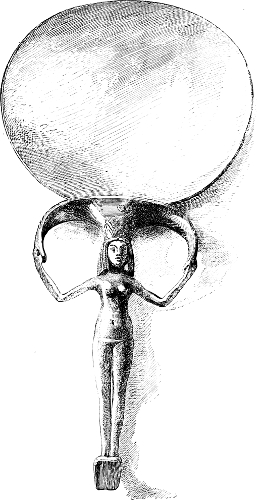
Fig. 261.—Egyptian mirror, actual size. Louvre. Drawn by Saint-Elme Gautier.
In the arts of all those peoples who received the teachings of Egypt and Chaldæa, whether at first hand, like the Phœnicians, or at second, like the Greeks, the two distinct influences can always be traced. Mesopotamia may be recognized in certain ornamental motives, such as the “knop and flower,” the rosettes and palmettes, as well as in its taste for the symmetry given by coupled figures; still more clearly is it betrayed in motives into which lions and the whole tribe of fantastic animals are introduced, struggling with and devouring each other, and occasionally brought to the ground by some individual dressed in a long gaberdine and crowned with a tiara.
On the other hand, it is to Egypt that our thoughts are turned when the human body meets our eyes in its unveiled nobility, with all the variety of attitude and outline its forms imply. The peoples of Western Asia learnt much in the school of the Chaldæan artist, but the teaching given by the Egyptian sculptor was of a higher order, and far better adapted to guide them in the way that leads to those exquisite creations in which delicacy and certainty of hand are happily allied with imaginative power. Sooner or later such teaching must have aroused, in open and inquiring minds, a feeling for beauty like that felt in her peculiar fashion by Egypt, a feeling to which Greece, when once put in her right way, gave the fullest expression it has ever received in marble and bronze.
In order to make good a comparison that no historian of art can avoid, we have placed ourselves successively at two different points of view, and from both we have arrived at the same result: as artists the Egyptians take a higher rank than the Assyrians, than those constructors who obstinately neglected the column even when they built with stone, than those sculptors who avoided[394] measuring themselves with nature, and who shirked her difficulties by draping their figures. But before thus bringing the two methods and the two ways of looking at form into opposition, we ought perhaps to have pointed out a difference in which this inequality is foreshadowed. In all the monarchies of the East the great monuments were anonymous, or, at least, if a name was given in the official texts it was not that of the artist who conceived them, but of the king under whom they were created. It is not till we arrive at Greece that we find public opinion placing the work of art and its author so high that the latter feels himself justified in signing his own creation. But although this practice was not inaugurated in Egypt, numerous inscriptions bear witness to the high rank held in Egyptian society by the artists to whom the king confided the construction and decoration of his buildings.[462] These men were not only well paid; they received honours which they are careful to record, and their fame was spread over the whole valley of the Nile. In the cuneiform texts we have so far failed to discover the name of a single architect or sculptor, and it does not appear that a reason for the omission is to be sought in the peculiar conditions of Chaldæo-Assyrian epigraphy. Although Babylon and Nineveh have not left us thousands of epitaphs like those rescued from the sands of Egypt, we possess many private contracts and agreements in which information similar to that afforded in other countries by the sepulchral steles is to be found. Neither there nor elsewhere do we find a trace of anything corresponding to the conspicuous rank held under the Theban princes of the eighteenth and nineteenth dynasties, by a Semnat, a Bakhenkhonsou, or any other of the royal architects whose names have been handed down to us in the texts.
It is unlikely that this difference will vanish when more texts have been translated. The inequality in the position of the two artists is readily explained by the unequal development of the two arts. Egyptian architecture is learned and skilful after a fashion quite distinct from that of Mesopotamia. It is not content, like the latter, to spread itself out laterally and to heap up huge masses of earth, to be afterwards clothed in thin robes of enamelled faïence, of painted and sculptured alabaster. In spite of their rich decorations,[395] palaces like those of Nimroud and Khorsabad never quite threw off their appearance of gigantic improvisations. Their plans once determined—and Assyrian plans only varied within very narrow limits—the method of roofing, flat or vaulted, fixed upon for each apartment, all the rest was only a matter of foremen and their legions of half-skilled workmen. At the very least we may say that the architect who superintended the building of a Ninevite palace had a far easier task than his rival of Thebes or Memphis. The arrangement of porticoes and hypostyle halls demanded much thought and taste, and, if the work when finished was at all to come up to the ideas of its creator, the workmen who cut the graceful capitals and sturdy architraves from the huge masses of granite, sandstone, or limestone, had to be supervised with an unremitting care unknown and uncalled for in Mesopotamia. The architects who raised the colonnades of Karnak and the Ramesseum for Seti and his famous son, were the Ictinus and Mnesicles of the East. We may become better acquainted than we are now with the monumental history of Mesopotamia, but we shall never find within her borders artists worthy to be placed on a level with those Theban masters.
And if we compare the sculptors of Thebes and Nineveh, we shall arrive at the same conclusion. On the one hand we find artists who, whether they worked for the tomb or the temple, in the most stubborn or the most kindly materials, chiselled images that either delight us with their simple truth, or impress us with their noble gravity and colossal size. A whole nation of statues issued from those Egyptian studios through which we have conducted our readers, many of them real masterpieces in their way. In Mesopotamia, after early attempts that seemed full of promise, the art of modelling statues was soon abandoned. In the glorious days of Nineveh, all that was required of the sculptor was a talent, we might say a knack, for cutting in the soft gypsum or limestone realistic illustrations of the conquests and hunts of the reigning prince. He had to turn out purely historical and anecdotic sculpture by the yard, or rather by the mile; while in Egypt we see the whole nation, with its kings and gods, revive to a second life in those forceful and sincere portraits of which so many thousands have come down to our day.
[396]
In placing the distinctive features of the individual upon wood or stone, the sculptor did something more than flatter the vanity of the great; he prolonged their existence, he helped them to keep off the assaults of death and to defy annihilation. From Pharaoh to the humblest fellah, every one had to conciliate the man who possessed such a quasi-magic power, and from whom such an all-important service might have to be demanded. The common people bought ready-made figures in a shop, on which they were content to cut their names, but the kings and nobles commissioned their statues from the best artists of the time, and some reflex from the respect and admiration surrounding the sovereign must have fallen upon the man to whom he confided the task of giving perpetuity to his royal features, in those statues that during the whole of his reign would stand on the thresholds and about the courts of the temple, and on the painted walls of that happy abode to whose shadows he would turn when full of years and eager for rest.
If, before the advent of the Greeks, there were any people in the ancient world in whom a passion for beauty was innate, they were the people of Egypt. The taste of Chaldæa was narrower, less frank and less unerring; she was unable, at least in the same degree, to ally force with grace; her ideal had less nobility, and her hand less freedom and variety. It is by merits of a different kind that she regains the advantage lost in the arts. If her artists fell short of their rivals, her savants seem to have been superior to those of Egypt. In their easy-going and well-organized life, the Egyptians appear to have allowed the inquiring side of their intellects to go to sleep. Morality seems to have occupied them more than science; they made no great efforts to think.
The Chaldæans were the reverse of all this. We have reason to believe that they were the first to ask themselves the question upon which all philosophy is founded, the question as to the true origin of things. Their solution of the problem was embodied in the cosmogonies handed down to us in fragments by the Greek writers, and although their conceptions have only been received through intermediaries by whom their meaning has often been altered and falsified, we are still enabled to grasp their fundamental idea through all the obscurities due to a double and sometimes[397] triple translation, and that idea was that the world was created by natural forces, by the action of causes even now at work. The first dogma of the Babylonian religion was the spontaneous generation of things from the liquid element.[463]
The first vague presentiment and rough sketch, as it were, of certain theories that have made a great noise in the world in our own day, may be traced, it is asserted, in the cosmogonic writings of ancient Chaldæa. Even the famous hypothesis of Darwin has been searched for and found, if we may believe the searchers. In any case it seems well established that the echo of these speculations reached the Ionian sages who were the fathers of Greek philosophy. Their traces are perceptible, some scholars declare, in the Theogony of Hesiod. Possibly it is so; there are certainly some striking points of resemblance; but where the influence of such ideas is really and clearly evident is in those philosophic poems that succeeded each other about the sixth century B.C., all under the same title: concerning nature (περὶφύσεως).[464] These poems are now lost, but judging from what we are told by men who read them in the original, the explanation they gave of the creation of the world and of the first appearance upon it of organized beings, differed only in its more abstract character from that proposed many centuries before, and under the form of a myth, by the priests of Chaldæa. If we may trust certain indications, these bold and ingenious doctrines crossed over from Ionia to the mainland of Greece, and reached the ears of such writers as Aristophanes and Plato.
It does the greatest honour to Chaldæa that its bold speculations should have thus contributed to awaken the lofty intellectual ambitions and the scientific curiosity of Greece, and perhaps she may have rendered the latter country a still more signal service in teaching her those methods by whose use man draws himself clear of barbarism and starts on the road to civilization; a single example of this will be sufficient. It is more than forty years since Bœckh, and Brandis after him, proved that all the measures of length, weight and capacity used by the ancients, were correlated in the same fashion and belonged to one scale. Whether we turn to Persia,[398] to Phœnicia or Palestine, to Athens or Rome, we are constantly met by the sexagesimal system of the Babylonians. The measurements of time and of the diurnal passage of the sun employed by all those peoples, were founded on the same divisions and borrowed from the same inventors. It is to the same people that we owe our week of seven days, which, though not at first adopted by the western nations, ended by imposing itself upon them.[465] As for astronomy, from a period far away in the darkness of the past it seems to have been a regular branch of learning in Chaldæa; the Greeks knew very little about it before the conquests of Alexander; it was more than a century after the capture of Babylon by the Macedonians that the famous astrological tables were first utilized by Hipparchus.[466]
In the sequel we shall come upon further borrowings and connections of this kind, whose interest and importance has never been suspected by the historian until within the last few years. Take the chief gods and demi-gods to whom the homage of the peoples of Syria and Asia Minor was paid, and you will have no difficulty in acknowledging that, although their names were often changed on the way, Mesopotamia was the starting place of them all. By highways of the sea as well as those on land, the peoples established on the eastern shores of the Mediterranean entered into relations with the tribes of another race who dwelt on the European coasts of the same sea; they introduced them to their divinities and taught them the rites by which those divinities were honoured and the forms under which they were figured. Without abandoning the gods they worshipped in common with their brother Aryans, the Greeks adopted more than one of these Oriental deities. This is not the place to consider the question in detail. We must put aside for the present both the Cybele of Cappadocia and Phrygia and that Ephesian Artemis, who, after being domiciled and naturalized in one of the Hellenic capitals, so obstinately and so long preserved her foreign characteristics; we must for the moment forget Aphrodite, that goddess of a different fortune whose name is enough to call up visions of not a few masterpieces of classic art and poetry. Does not all that we know of this daughter of the sea, of her journeys,[399] of the first temples erected to her on the Grecian coasts and of the peculiar character of her rites and attributes—does not all this justify us in making her a lineal descendant of Zarpanitu, of Mylitta and Istar, of all those goddesses of love and motherhood created by the imagination and worshipped by the piety of the Semites of Chaldæa? On the other hand the more we know of Egypt the less inclined are we to think that any of the gods of her Pantheon were transported to Greece and Italy, at least in the early days of antiquity.
Incomplete as they cannot help being, these remarks had to be made. They will explain why in the scheme of our work we have given similar places to Chaldæa and Egypt. The artist will always have a predilection for the latter country, a preference he will find no difficulty in justifying; but the historian cannot take quite the same view. It is his special business to weigh the contributions of each nation to the common patrimony of civilization, and he will understand how it is that Chaldæa, in spite of the deficiencies of its plastic art, worked more for others than Egypt and gave more of its substance and life. Hidden among surrounding deserts the valley of the Nile only opened upon the rest of the world by the ports on a single short line of frontier. The basin of the Euphrates was much more easily accessible. It had no frontier washed by the Mediterranean, but it communicated with that sea by more numerous routes than Egypt, and by routes whose diversity enhanced the effect of the examples they were the means of conveying to the outer world.
It is, to all appearance, to the ancient inhabitants of Mesopotamia that humanity owes the cultivation of wheat, its chief alimentary plant.[467] This precious cereal seems to have been a native of the valleys of the Indus and Euphrates; nowhere else is it found in a wild state. From those two regions it must have spread eastwards across India to China, and westwards across Syria into Egypt and afterwards on to the European continent. From the rich plains where the Hebrew tradition set the cradle of the human race, the winds carried many seeds besides those by which men’s bodies have so long been nourished; the germs of all useful arts and of all mental activities were borne on their breath like a fertilizing dust. Among those distant ancestors of[400] whom we are the direct heirs, those ancestors who have left us that heritage of civilization which grows with every year that passes, there are none, perhaps, to whom our respect and our filial gratitude are more justly due than to the ancient inhabitants of Chaldæa.
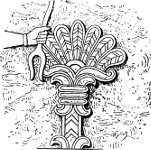
[401]
P. 155.—It was not only as mortar that bitumen was used. Mr. Rassam tells us that he found at Abou-Abba (Sippara), in Chaldæa, a chamber paved with asphalte much in the same fashion as a modern street in London or Paris (Proceedings of the Society of Biblical Archæology).
P. 200.—From a late communication to the Society of Biblical Archæology we learn that Mr. Rassam found the Sippara tablet in the corner of a room, under the floor; it was inclosed in an inscribed earthenware box.
P. 242, line 12; for Shalmaneser III. read Shalmaneser II.
P. 266, line 8 from foot: for Plate X. read Plate IX.
P. 305.—Intercourse between the valley of the Nile and that of the Tigris and Euphrates seems to have begun not sooner than the eighteenth Egyptian dynasty. To this conclusion we are led both by Egyptian texts and by the tablets in the library of Assurbanipal. Most of the tablets are reprints—if we may say so—of texts dating originally from Ur, and from the time of the ancient Chaldæan monarchy. Now these texts seem to have been written by a people who knew not Egypt; no mention of that country is to be found in them. They contain a division of the world into four regions, in none of which Egypt has a place (Sayce, The Early Relations of Egypt and Babylonia, in Lepsius’s Zeitschrift, p. 150).
P. 349.—We may here draw attention to an object which may be compared to that described by M. Clermont Ganneau, both for its intrinsic character and its probable destination. It is a tablet in brown limestone, portable, and surmounted by a ring or staple cut in the material. On one face there is a bas-relief in which the goddess who occupies the lower register in Péretié’s bronze again appears. She has the head of a lioness, a snake dangles from each hand, the arms are outstretched, and two animals, in which Layard recognises a lioness and a sow, hang to her breasts. This goddess stands before an animal which has a bull’s head in the engraving given by Lajard. But its feet are those of a horse, and no doubt we should find that the animal in question was a horse if we could examine the original; but we do not know what has become of it. If, as there seems reason to believe, this goddess is an infernal deity, it is easy to[402] understand why serpents were placed in her hands. These reptiles are the symbols of resurrection; every year they quit their old skins for new ones. The object in question is described in detail in the Recherches sur le Culte de Vénus, p. 130, and figured in Plate XVI, Fig. 1. Upon one of the larger faces of the tablet and upon its edges there are inscriptions, magic formulæ according to M. Fr. Lenormant.
This tablet was formerly in the cabinet of M. Rousseau, at one time French consul at Bagdad. It was found in the ruins of Babylon. Size, 24 inches high by 24 inches wide, and 3⅞ inches thick.
P. 384.—In speaking of the excavations made by Sir H. Rawlinson at Borsippa, we forgot to mention his paper entitled On the Birs Nimroud; or, The Great Temple of Borsippa (Journal of the Royal Asiatic Society, vol. xviii. p. 1–32). Paragraphs 1 and 2 give an account of the excavations, and we regret that we wrote of the religious architecture of Chaldæa before having read them. Not that they contain anything to cause us to change our conceptions of the staged towers. The excavations seem to have been carried on with great care, but they hardly gave results as complete as they might have done had they been directed by a thoroughly-trained architect.
P. 48.—Upon Arvil, the ancient Arbela, and the likelihood of great discoveries in the mound which there rises 150 feet above the plain, see a contribution from Sir H. Rawlinson to the Journal of the Royal Asiatic Society, vol. i. new series, 1865, pp. 190–197. The mound is at present crowned by a Turkish fort.
P. 176.—Herr Fritz Hommel, one of the few non-French students of the remains from Tello, is no more inclined than we are to allow that the igneous rocks from which they are cut were brought from Egypt. He believes they were won from much nearer quarries, viz., on the borders of the Arabian plateau (Die Vorsemitische Kulturen in Egypten und Babylonien, pp. 211–223).
Pp. 188–190.—In enumerating the few monuments of Chaldæan sculpture that we possess over and above those brought home by M. de Sarzec, we forgot to mention a small Babylonian head in hard alabaster, now in the Louvre (Fig. 262). Its workmanship resembles that of the two heads from Tello (Plate VII.), and some of the small heads from the same place. It is conspicuous for the same frank and decided modelling, but it belongs to the period when long beards were worn.
P. 202.—To the list of Chaldæan sculptures we should, perhaps, add the rock-cut relief found by Sir H. Rawlinson in the district of Zohab, about fifty leagues from the left bank of the Tigris, and to the north-west of[403] Bagdad, near the village of Sheikhan. This district forms a part of the Persian province of Kirmanchah (Journal of the Geographical Society, vol. ix. p. 31). The relief occurs, it seems, on the high road between Babylon and Ecbatana, in the defile which is now called Tak-i-Girrah, one of the passes leading up through Mount Zagros to the plateau of Iran. There is a sketch of the relief from the pencil of Sir H. Rawlinson in the Five Great Monarchies of his brother (vol. iii. p. 7). The king stands with his foot on the body of a conquered enemy. An individual, probably the royal general, presents two kneeling captives, who are held by a cord attached to rings put through their noses. More captives with ropes about their necks are carved on the kind of plinth upon which the main group is supported. The whole picture is about two feet wide and five high. Near it there is an apparently unfinished inscription in Babylonish cuneiform characters. The Chaldæan origin of the work is confirmed by the flounces on the general’s robe. In the same neighbourhood there are ruins which appear to date from a very early period.
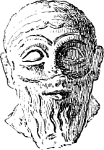
Fig. 262.—Fragment of a Chaldæan statuette. Louvre.
P. 219.—We have here omitted to draw attention to one of the differences between the art of the Sargonids and that of the preceding dynasty. In the figures from Tello and in the bas-reliefs of the time of Assurnazirpal the sculptor has left the eyeballs smooth (Plate VII.; Vol. I. Fig. 15; Vol. II, Figs. 43, 64, 113). In the sculptures of the time of Sargon and his successors, on the other hand, the cornea is indicated in the figures both of men and animals, by a clearly traced circle (Vol. I, Figs. 22 and 25; Vol. II. Fig. 118 and Plate X.). It was, no doubt, the desire to give a more lifelike expression to the physiognomy that led the artist thus to modify his proceeding. There are a few figures in which the desire for imitative truth is pushed even farther. In a bas-relief in the Louvre there is an eagle-headed deity in which not only the cornea but the pupil also is marked by a smaller circle within the first. See the De l’Expression des Yeux dans la Statuaire of Doctor Debrou (Correspondant, April 10th, 1883). His special knowledge has enabled him to make more than one remark upon the representation of the eye in ancient and modern sculpture, to which writers upon art would do well to pay attention.
[404]
P. 398.—On the subject of the female divinity whose worship was so widely spread over the whole East and over the Mediterranean coasts, the dissertation of Herr Gelzer, Zum Cultus der Assyrischen Aphrodite (Lepsius’s Zeitschrift, 1875, p. 127) may be consulted with profit.
We received the admirable Guide to the Kuyundjik Gallery, published by the authorities of the British Museum, too late to make use of it for our work. It joins to an exhaustive account of the bas-reliefs of Sennacherib and Assurbanipal a description of the smaller objects contained in the glass cases of the same gallery. Many of these objects date from a very early period, and many were found in Chaldæa. Some of the more interesting texts are translated by Mr. Pinches; of others he gives a summary. The body of the work is preceded by an introduction giving such details of Assyrian history, religion and manners as are required by the general student. When a similar brochure is forthcoming for the Nimroud gallery—and the energy of the English officials is a guarantee that we shall not have to wait long for it—visitors to the museum will be in possession of all that is necessary to enable them to profit to the fullest extent by its superb collection.
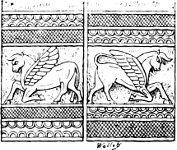
[407]
A
B
C
D
E
F
G
H
I
J
K
L
M
N
O
P
R
S
T
U
V
W
X
Y
Z
THE END.
LONDON: R. CLAY, SONS, AND TAYLOR, PRINTERS.
[1] Rawlinson The Five Great Monarchies, &c., (4th edition), vol. i. p. 278.
[2] Millin, Monuments inedits, vol. i. plates 8 and 9.
[3] Rheinisches Museum, 1829, p. 41. This passage will be found in a note appended by the illustrious historian to a paper by Ottfried Müller, entitled Sandon und Sardanapal.
[4] Traces of the excitement caused by these discoveries may be found in an article written by M. de Longperier in 1845, in which, before having seen the monuments, he points out the interest and importance of the discoveries with rare sagacity. The paper in question is entitled Ninive et Khorsabad. It has lately been reprinted in the first volume (page 34) of his collected works (A. de Longperier, Œuvres, 5 vols. 8vo. Leroux). This first volume bears for sub-title: Archéologie orientale: Monuments arabes.
[5] Lettre à M. Isidore de Lowenstern sur les Inscriptions cunéiformes de l’Assyrie (Œuvres, vol. i. p. 109). M. de Lowenstern had already by a kind of happy intuition hit upon the name, but without being able to give a reason for his transliteration.
[6] This latter hypothesis was sustained, with more erudition, perhaps, than tact or taste, by Dr. Hœfer. A skilful historian of chemistry, he was by no means an archæologist. He had no feeling for the differences between one style and another. See the Memoires sur les Ruines de Ninive, addressés à l’Académie des Inscriptions, par Ferd. Hœfer [20th February and 24th May, 1850]; see especially the second paper: De l’Âge et du Caractère des Monuments découverts à Khorsabad, à Nimroud, à Kouioundjik, à Karamles et à Kaleh-Shergat, Paris, Didot, 1850. His assertions were refuted by de Longperier in the first part of his paper entitled: Antiquités assyriénnes, published in 1850, in the Revue archéologique, (Œuvrcs, vol. i. p. 139).
[7] Art in Ancient Egypt, vol. i. chapter xi. § 2.
[8] Place, Ninive, vol. i. p. 38, Esarhaddon was the chief offender in this respect.
[9] See G. Perrot, Souvenirs d’un Voyage en Asia Mineure, p. 50.
[10] This preconceived notion explains the erroneous title he gave to his great work: Monument de Ninive, découvert et décrit par P. E. Botta, mesuré et dessiné par E. Flandin, published at the expense of the state at the Imprimerie nationale, Paris, 1849, 5 vols, folio (1 volume of text, 4 of plates).
[11] The palace platform was not quite in the centre of the north-western face. The Assyrians were no fonder of a rigid symmetry than the Egyptians.
[12] Place, Ninive, vol. iii. plate 7.
[13] In this plan the darkest parts are those discovered by M. Botta; the more lightly shaded lines show the rooms and courts excavated by his successor.
[14] Place, Ninive, vol. iii. plate 18 bis.
[15] Rawlinson (The Five Great Monarchies, vol. i. p. 286), and Lenormant (Historie ancienne, vol. ii. p. 196) make the two parts of the platform—the arms of the T and its shank—different in height. In doing so they have borrowed a mistake from Botta. The mistake is easily understood in the case of Rawlinson, whose fourth edition, although published in 1879, reproduces the plans compiled by Fergusson after Botta. We are more surprised at Lenormant falling into the same error, as he gives an excellent résumé of Place’s discoveries. Botta seems to have thought the two parts of the palace had different levels in consequence of an inequality in the distribution of the fallen materials. In the neighbourhood of the latter buildings, such as the so-called Observatory, and where the open spaces were fewer and less ample, there was, of course, a thicker bed of rubbish than where the buildings were lower and the walls farther apart. But wherever the original surface of the mound was reached, Place ascertained that its level never varied. In none of his plans is there the slightest trace of any slope or staircase leading from one level to the other, so far as the summit of the platform is concerned.
[16] Layard, Monuments, 2nd series, plates 14 and 15.
[17] Thomas placed this ramp at the south-east rather than at the south-west because it seemed better to make it lead direct to H, the forecourt of the sélamlik, than to break in upon the privacy of the harem at the opposite corner.
[18] This court was about 206 feet wide, by 366 feet long.
[19] The letters on our plan signify courts, or rooms—like some of those in the harem—that were only partially roofed in.
[20] Place, Ninive, vol. i. p. 57.
[21] Lenormant, Manuel d’Histoire ancienne, vol. ii. p. 197.
[22] See Vol. I. page 392.
[23] Oppert, Expédition scientitique, vol. ii. p. 242.
[24] The doorway beside which these artificial palms are raised is that which leads from the court U to the hall marked Y on the plan. As to the elements made use of in our restoration, see Place, vol. i. pp. 114–127, and vol. ii. p. 35. We have already noticed the discovery of the metal-sheathed poles (p. 202, and fig. 72).
[25] Place, Ninive, vol. iii. plate 25, fig. 4.
[26] See the Book of Esther.
[27] This room corresponds to the apartment in the richer houses of Mossoul and Bagdad, that goes by the name of iwan or pichkaneh. It is a kind of summer hall, open on one side (Oppert, Expédition scientifique, vol. i. p. 90).
[28] A minute description of all these offices will be found in Place (Ninive, vol. iii. pp. 76–105).
[29] Place, Ninive, vol. i. pp. 99 and 274.
[30] Oppert, Les Inscriptions des Sargonides, p. 52.
[31] So far as I know, Place alone has given this problem a moment’s attention (Ninive, vol. i. p. 279), but nothing could be more improbable than the hypothesis by which he attempts to solve it. He suggests that one of the drains of which we have already spoken may have been a conduit or siphon in communication with some subterranean reservoir and provided with pumping apparatus at its summit. We have no evidence whatever that the principle of the suction-pump was known to the Assyrians.
[32] Strabo (xvi. i. 5) pretends that the hanging gardens of Babylon were watered by means of the screw of Archimedes (κοχλίας or κόχλος). If it be true that this invention was known to the Chaldæans, it may also have been used to raise water to the platforms of the Assyrian palaces. The discovery, however, is usually attributed to the Sicilian mathematician, and Strabo’s evidence is too isolated and too recent to allow us to accept it without question.
[33] Place, Ninive, vol. ii. p. 197.
[34] Loftus, Travels and Researches, chapter xvi. and especially page 179.
[35] Diodorus, ii. viii. 3–4.
[36] Diodorus, ii. viii. 7.
[37] Oppert, Expédition scientifique de Mésopotamie, vol. i. p. 150. See also Layard, Discoveries, p. 508, upon the tradition of the Arabs relating to the tall tamarisk, the only tree that grows on the summit of the mound.
[38] J. Ménant, Babylon et la Chaldée (1 vol. 8vo. 1875), p. 181.
[39] Diodorus (ii. 10), speaks of λίθιναι δοκοί, or stone beams, to which he attributes a length of sixteen feet, and a width of four; Strabo (xvii. i. 5) makes use of the expression, ψαλιδώματα καμαρωτά, which means vaulted arcades. Both writers agree that there were several terraces one above another. Diodorus says that the whole—as seen from the Euphrates no doubt—looked like a theatre. Both give the same measurements to these hanging gardens; they tell us they made a square of from three to four plethra each way (410 feet). The mound of Tell-Amran is much larger than this, and if it really be on the site of the famous gardens, it must include the ruins of other buildings besides, pleasure houses, chapels and kiosks, like those figured in the reliefs, to which we have already had frequent occasion to allude.
[40] Layard believes himself to have ascertained that the buildings on one part of the Nimroud mound were ruined and covered with earth, when those upon another part of the platform were founded. The paved floor of the north-western palace is on a level with the upper part of the walls of the north-eastern and central palaces (Nineveh, vol. iii. p. 202).
[41] George Smith, Assyrian Discoveries, (pp. 71–73), gives the following résumé of the monumental history of Calah, from the inscriptions found at Nimroud. “A city was built on this spot by Shalmaneser I., King of Assyria, B.C. 1300, but this afterwards fell into decay, and was destroyed during the subsequent troubles which came on the Assyrian Empire. Assurnazirpal, who ascended the Assyrian throne B.C. 885, resolved to rebuild the city; and bringing numbers of captives taken during his wars, he set them to work to rebuild Calah, and then settled there to inhabit it. The north-west palace and the temples near the tower were the work of this king, and from these came most of the fine Nimroud sculptures in the British Museum. Shalmaneser II., King of Assyria, succeeded his father Assurnazirpal, B.C. 860. He built the centre palace, and the base at least of the south-eastern palace. Vulnirari III., his grandson, B.C. 812, built the upper chambers and the temple of Nebo; and Tiglath-pileser II., B.C. 745, rebuilt the centre palace. Sargon, King of Assyria, B.C. 722, restored the north-west palace, and his grandson, Esarhaddon, B.C. 681, built the south-west palace. Lastly the grandson of Esarhaddon, Assur-ebil-ili, the last King of Assyria, rebuilt the temple of Nebo just before the destruction of the Assyrian Empire.” A general description of the platform and the buildings upon it will be found in Layard, Discoveries, pp. 653–656.
[42] This idea is favoured by Layard (Discoveries, p. 654).
[43] The central palace was partly destroyed even in the days of the Assyrians, by a king who wished to make use of its materials. Layard (Nineveh, ii. p. 19) found more than a hundred sculptured slabs stacked against each other, as if in a warehouse. The architect of Esarhaddon, the author of this spoliation, had not finished his work when it was suddenly interrupted. For a full account of the discoveries in the south-eastern palace, see Layard, Nineveh, ii. pp. 38–40.
[44] Especially from the central palace (Layard, Discoveries, p. 656). The small rectangles shown on our plan at each side of the wall dividing the rooms marked 2 and 3 from each other, represent slabs lying on the ground at the foot of the wall for whose decoration they were intended. They were never put in place. The bases of circular pedestals, standing very slightly above the ground, are also marked. Sir H. Layard could not divine their use.
[45] Layard, Nineveh, vol. ii. pp. 25, 26, and 29.
[46] For an account of the excavations see Layard, Nineveh, vol. i. pp. 34, 39, 46, 59–62, 347–350; vol. ii. pp. 25–36.
[47] Layard, Nineveh, vol. ii. pp. 14–16.
[48] All the passages by ancient writers bearing on the subject will be found collected in the first of those articles of Hœfer, of which we have already had occasion to speak. Its title is: Textes anciens sur l’Histoire et la Position de Ninive. It is certain that even in the Roman period its site was not positively known. Lucian, who was born at Samosata, less than a hundred leagues from Nineveh, says: “Nineveh has perished; no trace of it remains, and we cannot say where it stood” (Charon, c. xxiii).
[49] Layard, Discoveries, p. 137.
[50] The plan in which Layard shows the results of his two digging campaigns will be found in the Discoveries, facing page 67. For the excavations at Kouyundjik see also his Nineveh, vol. ii. chapter xiv, and Discoveries, pp. 67–76, 102–120, 135–161, 228–233, 337–347, 438–463, 582–588, and 645–652. Layard attempts to give a general idea of the palace and of its decorations. There is also much detailed information regarding this building in Rawlinson’s Five Great Monarchies, vol. ii. pp. 178–133.
[51] The only details that have been given, so far as we know, of the discovery and exhumation of Assurbanipal’s palace, are to be found in an article by Mr. Rassam entitled: Excavations and Discoveries in Assyria (Transactions of the Society of Biblical Archæology, vol. vii. pp. 37–58). This paper contains a plan of the northern palace (p. 40).
[52] “Ervil is the site of the Assyrian city of Arbela, and in the plains outside it was fought the great battle between Alexander and Darius. I had no time to examine the place, but I saw in passing that there were mounds rivalling in size those of the Assyrian capital. Over the principal mound a Turkish fortress is built, which would make it difficult to excavate here; but as Arbela was a great city, much may be expected here whenever it is explored.” George Smith, Assyrian Discoveries, p. 67.
[53] See the article by Mr. Rassam quoted on the last page. The plan (p. 52) he gives does not tell us much.
[54] See Layard, Nineveh, vol. ii. pp. 45–63; and Discoveries, p. 581.
[55] See Place, Ninive, vol. ii. p. 169.
[56] It is in chapters xi. to xiv. of his second work (Discoveries, &c.) that Layard tells the story of his discoveries in that valley of the Chaboras from which the writings of Ezekiel were dated.
[57] See page 145.
[58] We have noticed at pages 176 and 177 of our first volume the two passages in which Strabo discusses the houses of Susiana and Chaldæa. As to the villages in the Euphrates valley, in which domes are still used, see Oppert, Expédition scientifique, vol. i. p. 46.
[59] Herodotus, i. 180.
[60] Diodorus, ii. viii. 4, 5.
[61] G. Smith, Assyrian Discoveries, pp. 55, 56. M. Oppert also admits that this is the only city that has left traces that cannot easily be mistaken. (Expedition scientifique, vol. i. pp. 194, 195.)
[62] Herodotus, i. 178.
[63] Diodorus, ii. vii. 3. The following passage has been quoted from Aristotle’s Politics (iii. 1), as supporting the assertion of Diodorus: “It is obvious that a town is not made by a wall; one might, if that were so, make the Peloponnesus into a town, Babylon, perhaps, and some other towns belong to this class, their enceinte inclosing towns rather than cities.” The text of Aristotle seems to me to prove nothing more than that the philosopher was acquainted with the descriptions of Diodorus and Ctesias. He says nothing as to their exactness; he merely borrows an illustration from them, by which he attempts to make his thought more clear, and to explain the difference between a real city with an organic life of its own, and a mere space surrounded by walls, in which men might live in close neighbourhood with each other, but with nothing that could be called civic life. All the texts relating to the ancient boundaries of Babylon will be found united in M. Oppert’s examination of this question.
[64] Even now the wall of the Royal City stands up more than thirty feet above the level of the plain.
[65] Herodotus says nothing of the tunnel; Diodorus alone mentions it (ii. ix. 2). See Oppert on this subject. He believes in its existence (Expédition scientifique, vol. i. p. 193).
[66] Herodotus, i. 186; Diodorus, ii. viii. 2. Diodorus, following Ctesias, greatly exaggerates the length of the bridge when he puts it at fifty-five stades (3,032 feet). Even if we admit that the Euphrates, which in ancient times lost less of its waters in the adjoining marshes than it does now, was then considerably wider than at present, we can hardly account for such a difference. On the subject of this bridge see Oppert, Expédition &c., vol. i. pp. 191–193.
[67] Layard, Discoveries, p. 489.
[68] See Oppert, Expédition &c., vol. i. pp. 184, 185. Herodotus mentions these quays (ii. 180, 186). Diodorus (ii. viii. 3), gives them a length of 160 stades (nearly 18½ miles), which seems a great exaggeration.
[69] Herodotus, i. 180.
[70] And this makes us think that the streets were narrow, a conjecture confirmed by the words of Herodotus. In speaking of the doors above mentioned by which the river was reached, he does not use the word πύλαι, but πυλίδες, its diminutive. If these doors were so small, the streets must have been lanes.
[71] This we gather from more than one phrase of the historian (ii. 183 and 196).
[72] Diodorus, ii. viii, 3
[73] All that he says is that it was on the Tigris (i. 193), that it had a king called Sardanapalus (ii. 150), and that it was taken by the Medes (i. 103, 106).
[74] Anabasis, iii. 4.
[75] Diodorus, ii. iii. 2, 3.
[76] Line 35 of the Cylinder of Bellino, after Pongnon (l’Inscription de Bavian, p. 25, in the Bibliothèque de l’École des Hautes-Études).
[77] M. Oppert also considers the evidence of Ctesias as worthless (Expédition scientifique, vol. i. p. 292). Sir Henry Layard on the other hand believes in the great Nineveh of that writer (Nineveh, vol. ii. p. 243). He is chiefly influenced by the often quoted verses of the Book of Jonah, in which it is declared: “Now Nineveh was an exceeding great city of three days’ journey,” and that there were in it “more than six-score thousand persons that cannot discern between their right hand and their left hand,” which, with the ordinary proportion of children to adults, would give a total population of about 800,000. We shall not waste time in explaining that all these expressions are but poetic ways of saying that Nineveh was a great city. It is a singular idea to look for topographical and statistical information in a book which makes a prophet sail from Joppa for Spain and, immediately afterwards, without any preparation, speaks of him as preaching in the streets of Nineveh. Add to this that, according to the most recent criticism, the Book of Jonah is not older than the sixth century before our era, so that it must have been written long after the fall of Nineveh, and when its power was no more than a memory (see Nœldeke, Histoire littéraire de l’Ancien Testament, p. 116). [In Sir H. Layard’s latest published remarks on the extent of Nineveh, he rejects the statements of Diodorus for much the same reasons as those given by M. Perrot (article on Nineveh in Smith’s Dictionary of the Bible, 1863 edition).—Ed.]
[78] Botta, Monument de Ninive, vol. v. p. 21. Oppert, Expédition, vol. i. p. 292. Layard, vol. ii. p. 243. The English explorers have found traces of some external works and of a ditch which is now filled with the waters of the Khausser. Rawlinson, The Five Great Monarchies, vol. i. pp. 259–261.
[79] Layard, Discoveries, pp. 120–122.
[80] It has no scale.
[81] Herodotus, i. 178.
[82] Herodotus, i. 179. Herodotus says that the Chaldæans constructed buildings of a single chamber along each parapet of the wall, leaving room between them for a four-horse chariot to turn. His words are: ὲπάνω δὲ τοῦ τείχεος παρὰ τὰ ἔσχατα, οἰκήματα μουνόκωλα ἔδειμαν, τετραμμένα ἐς ἄλληλα· τὸ μέσον δὲ τῶν οἰκημάτων ἔλιπον τεθρίππῳ περιέλασιν.—Ed.
[83] Diodorus, ii. vii. 4.
[84] In many carved pictures of sieges we see soldiers who appear to be digging mines (Layard, Monuments, series i. plates 19, 20, 66. Rawlinson, The Five Great Monarchies, vol. i. p. 473).
[85] Place, Ninive, vol. i. p. 165; vol. ii. p. 11.
[86] Place, Ninive, vol. i. pp. 197–198.
[87] Art in Ancient Egypt, Vol. I. p. 342.
[88] See Vol. I. Page 242, and Fig. 97.
[89] All these details are taken from Place, Ninive, vol. i. pp. 169–182.
[90] Genesis xix. 1.
[91] Genesis xxiii. 10.
[92] Ruth iv. 1 and 2.
[93] See also 2 Kings vii. 1.—Ed.
[94] Esther ii. 21.
[95] Esther iii. 2, 3, iv. 2, 6.
[96] At Semil, to the north of Mossoul, Layard saw the Yezidi chief, “Abde Agha, seated in the gate, a vaulted entrance with deep recesses on both sides, used as places of assembly for business during the day, and as places of rest for guests during the night.”—Discoveries, p. 57.
[97] Place, Ninive, vol. i. p. 186.
[98] It is even believed that the Assyrians used a machine for launching great stones, like the Roman catapult. The representations in the bas-reliefs are not, however, very clear. Rawlinson, The Five Great Monarchies, vol. i. p. 472.
[99] Place, Ninive, vol. i. p. 196. Causeways of this kind may be noticed stretching away from the tower in our Fig. 29. See also Layard, Monuments, 2nd series, plates 18 and 21.
[100] A few terra-cotta statuettes have certainly been found, but these seem to be idols rather than images of the defunct.
[101] The ordinary and principal office of the human-headed bull, was to guard the doors of temples and palaces, but in his rôle of protecting genius, other functions were included. Thus, in a bas-relief representing Sargon’s campaigns in Phœnicia, we find a bull that seems to be walking on the sea. With Anon, Oannes, or Dagon, the fish-god, he presides over the journeys of the ships that bring cargoes of wood from Lebanon (Botta, Monument de Ninive, plate 32).
[102] M. Lenormant has collected these texts in his Origines de l’Histoire, vol. i. p. 115.
[103] This must represent one of the favourite rites of the Chaldæo-Assyrian religion, allusion to it is made in the passage given as a letter of Jeremiah (Baruch vi. 25): “Now shall ye see in Babylon gods of silver, and of gold, and of wood, borne upon shoulders, which cause the nations to fear.”
[104] Chabouillet (Catalogue général des Camées de la Bibliothèque nationale, No. 754) proposes to recognize in the scene here represented the offering of his nightly spouse to Bel in his temple at Babylon (Herodotus, i. 181). M. Lenormant agrees with this interpretation (Essai de commentaire des Fragments de Bérose, p. 374). Ménant, on the other hand, thinks it as little justified as that which finds the early scenes of Genesis—the temptation of Eve, and the eating of the forbidden fruit—reproduced upon the cylinders (Remarques sur un cylindre du Musée Britannique, in the Comptes rendus de l’Académie des Inscriptions, 1879, pp. 270–286).
[105] In the great stone torso of which we shall speak presently (p. 98), these details seem to have been omitted; at least no trace of them is to be found on the stone; but they may have been added in paint. In figures of men the Assyrians very rarely indicated the male organs. One of the personages sculptured on the Balawat gates affords an exception to this general practice, but he is a prisoner about to be put to death, and the detail in question is a kind of indignity meant by the sculptor to show that the man in question was a savage who fought in puris naturalibus.
[106] Among the Lydians, says Herodotus, in his account of the adventure of Gyges (i. 10), “As among nearly all barbarous nations, it was a great indignity, even for a man, to be seen naked.” Conf. Plato, Republic, 452, c; Thucydides, i. 6; Xenophon, Hellenica, iii. iv. 19.
[107] Herodotus, i. 195; “As for their dress they wore a linen tunic coming down to their feet, and, over that, a woollen tunic. Finally they wrapped themselves in a short white cloak.”
[108] Art in Ancient Egypt, vol. i. fig. 98.
[109] Heuzev, Les fouilles de Chaldée, p. 13.
[110] See Art in Ancient Egypt, vol. i. fig. 255; vol. ii. figs. 247, 259, &c.
[111] Ibid. vol. ii. plate facing p. 334, and figs. 268, 269.
[112] See Layard, Monuments, 1st series, plates 15 and 16.
[113] In one relief the figures of these swimmers are no more than fourteen inches long (British Museum, Assyrian Basement room, No. 56).
[114] Layard, Monuments, 1st series, plate 57; 2nd series, plates 25 and 28.
[115] Ibid. (1st series), plate 63; Discoveries, p. 457.
[116] We have refrained from giving a reproduction of this fragment on account of its bad condition. Its surface is rough; it lacks the head, the forearms and the foreparts of the feet. The material is a coarse limestone. The height of the fragment is thirty-eight inches.
[117] No people that have ever lived have been more solicitous than the Assyrians to transmit the remembrance of their exploits to posterity. We thus find that many of their sculptured slabs had their posterior faces, those that were turned to the wall, also covered with inscriptions.
[118] Layard, Nineveh, vol. ii. p. 437.
[119] Layard, Nineveh, vol. ii. p. 448.
[120] British Museum. The whole series is illustrated in Layard, Monuments, 2nd series, plates 20–24.
[121] Sir H. Layard’s translation is different (Discoveries, p. 152). That quoted in the text has been kindly furnished to us by M. Oppert.
[122] Sir H. Layard, who has seen more Assyrian sculptures in place than any one else, seems to have been much struck by these incongruities. “It is rare,” he says, “to find an entire (Assyrian) bas-relief equally well executed in all its parts” (Nineveh, vol. ii. p. 78).
[123] This impression is still more strongly felt on glancing through the plates in which Sir H. Layard has reproduced in their entirety the series of sculptures which we can only show in fragmentary fashion. Compare, for example, the Panathenaic cortége with two processions taken from the palace of Sennacherib, the grooms leading horses, and servants carrying fruits and other comestibles (Monuments, 2nd series, plates 7–9), and the triumphal march of the Assyrian army with its chariots (ib. plates 47–49).
[124] Layard, Monuments, 2nd series, plates 45 and 46.
[125] Art in Ancient Egypt, vol. ii. pp. 302–314.
[126] At Nimroud, in the palace of Esarhaddon, the lions and bulls of the gateways are of a grey and rather coarse limestone, while the bas-reliefs are of alabaster (Layard, Nineveh, vol. ii. pp. 26 and 163). The same mixture occurs in the palace of Assurnazirpal. Several of the bulls in that building are of a fine yellow limestone which must have been brought from the hills of Kurdistan (Layard, Nineveh, vol. ii. p. 315).
[127] Layard, Nineveh, vol. ii. p. 316; Discoveries, pp. 307, 308, 309, &c.
[128] Each side of the original has five reliefs. We have been compelled to suppress one in order to give our figures sufficient scale.
[129] The obelisk reliefs should be studied in horizontal bands, and not by taking the whole of a face at a time. A translation of the accompanying texts will be found in Oppert’s Expédition, vol. i; and reproductions of all the four faces in Layard’s Monuments, 1st series, plates 53–56.
[130] Place, Ninive, vol. i, p. 150, and vol. iii. plate 48, fig. 3.
[131] Heuzey, Catalogue des figurines en terre cuite du musée du Louvre, vol. i. p. 26.
[132] Heuzey, Catalogue, &c., p. 18.
[133] Art in Ancient Egypt, vol. ii. pp. 375.
[134] Both the British Museum and the Louvre possess examples of this kind of work in which the handling shows the greatest freedom.
[135] The slab numbered 107 contains, perhaps, the nearest approach to a reproduction of the group in question.
[136] Art in Ancient Egypt, vol. ii. pp. 197–203, and figs. 179 and 180.
[137] This was the opinion of M. de Longpérier (Musée Napoléon III., description of plate 1).
[138] See vol. i. page 242.
[139] See also plate xii.
[140] Layard, Discoveries, p. 563.
[141] De Longpérier, Notice des antiquités assyriennes du Musée du Louvre, 3rd edition, 1854.
[142] We take this transcription from a note sent by Dr. Birch to the Athenæum (14 July, 1877), when the ivory in question, together with many more objects, was stolen from the British Museum. It was offered by the thief, in the first place, to M. de Longpérier, who thought it a forgery, and afterwards to the keeper of the Hague Museum, who, put on his guard by the publicity which by that time had been given to the theft, detained the piece and restored it to its legitimate owners.
[143] Art in Ancient Egypt, vol. ii. pp. 293–295.
[144] Layard, Discoveries, p. 361. The same characteristics may be recognized in the alabaster statues found by Place in one of the harem courts at Khorsabad (Ninive, vol. i. pp. 122–125, and vol. iii. plate 31, bis.). They are shown on a small scale in our fig. 197 (vol. i.). We may see that they were set with their backs against a wall, and that they carried a cushion on their heads, on which we have placed a vase of flowers. These statues were drowned in the Tigris!
[145] We may also quote the following monuments as examples of Assyrian statues: 1. The fragment of a seated statue found at Kaleh-Shergat, which we figure on page 127 (Layard, Nineveh, vol. ii. pp. 51–52). 2. The head of a statue of Istar, discovered at Kouyundjik (Smith, Assyrian Discoveries, pp. 248 and 430). This head is about nine inches high. 3. Fragment of a colossal statue of shelly limestone, found in the same place by the same explorer (ibid. p. 430). It consists only of a part of the left shoulder. There is an inscription on the back tracing the descent of Assurbanipal from Sargon.
[146] Art in Ancient Egypt, vol. ii. pp. 284–288; vol. i. fig. 173, and vol. ii. fig. 240.
[147] E. Guillaume, in his Considérations sur les Principes de l’Histoire du Bas-relief, which was read at the annual public meeting of the five Academies in Paris on the 14th August, 1866, (Didot, 4to.).
[148] Vol. I. page 266.
[149] In this particular, the two large bulls from Khorsabad in the British Museum are better placed than the pair in the Louvre. Their position at the entrance to the Khorsabad Transept (?), gives an exact idea of their original arrangement.—Ed.
[150] It must not be thought, however, that its employment was universal. In the palace of Sennacherib, at Kouyundjik, and in one of the palaces at Nimroud, the bulls had only four legs.
[151] See Perrot and Guillaume, Expédition archéologique de la Galatie, vol. i. pp. 345, 346, and vol. ii. plate 57.
[152] This contrivance may also be seen on the small limestone stele, covered with writing, which represents Assurbanipal carrying a basket on his head, and preparing to make an offering to the gods (British Museum, Assyrian Side Room).
[153] Look for instance at the last figure but one, on the right, in Place, vol. iii. plate 60, fig. 4. It is that of a man turning to speak to one who follows him. The feet are turned in one direction, and the head in one diametrically opposite to it. Nothing more ungraceful could be conceived.
[154] Art in Ancient Egypt, vol. i. fig. 98; vol. ii. figs. 250, 254, 255, &c.
[155] Ibid. p. 294.
[156] Art in Ancient Egypt, vol. ii. pp. 185–196, plates ix. x. xi. and figs. 172, 173, 174, 178, 183, 198, 199, 205, 208, 213, 214, 215, 216, 223, &c.
[157] Ibid. figs. 273–275.
[158] Ibid. p. 192.
[159] An almost unique exception to this rule occurs in those bas-reliefs in the British Museum which represent the great hunts of Assurbanipal. We there see a company of beardless individuals marching, bare-headed, dressed in a short tunic and armed with lance and buckler. But this is an apparent rather than a real exception. The chase is not war. These men are not soldiers, but attendants on the hunt, an inferior kind of shikarrie. In the battle pieces we sometimes see the eunuchs attached to the king’s person fighting at his elbow.
[160] We have no reason to believe that the Egyptian fashion of wearing wigs obtained in Assyria (Layard, Nineveh, vol. ii. pp. 327, 378). Herodotus tells us that in his time the Chaldæans wore long hair (i. 195).
[161] This is the opinion of M. Lenormant (Gazette des Beaux Arts, vol. xxv. pp. 218–225), and M. Ménant has upheld the same thesis in a paper read before the Académie des Inscriptions (Remarques sur des Portraits des Rois Assyro-Chaldéens, in the Comptes Rendus for 1881, pp. 254–267).
[162] On this point again I regret to be unable to agree with M. Ménant; I am unable to perceive any of the differences of which he speaks (see p. 258 of his paper).
[163] Rawlinson, The Five Great Monarchies, vol. ii. p. 500.
[164] Upon the discovery of these figures and their nature, see Layard, Discoveries, p. 230.
[165] Layard, Nineveh, vol. i. pp. 126–127. The English explorer himself remarks in speaking of this relief, that the features of the men show nothing of the special type which the artist endeavoured to suggest by this clumsy expedient.
[166] This is what M. Ménant sees in this Babylonian stele: “It represents a race with a short, thickset body, a short neck buried between the shoulders, a flat nose and thick lips” (p. 259 of his paper).
[167] Layard, Discoveries, p. 537.
[168] Herodotus, i. 192.
[169] Loftus gives a poor reproduction of this monument, which he found at Sinkara (Travels, &c., p. 258). We have not reproduced it, because it is in much worse condition than the terra-cotta dog.
[170] Herodotus, i. 193.
[171] Rawlinson, The Five Great Monarchies, vol. i. p. 234. Upon each of these figures appears the dog’s name, which always bears some relation to the qualities he displayed in the performance of his duties.
[172] This relief is figured in Rawlinson, The Five Great Monarchies, vol. i. p. 356.
[173] W. Houghton, On the Mammalia of the Assyrian Sculptures in the Transactions of the Society of Biblical Archæology, vol. v. pp. 33–64, and 579–583.
[174] We are tempted to believe that these animals were exterminated before the days of the Sargonids by the unrelenting pursuit to which they were subjected; they are not to be found in the pictures of Assurbanipal’s hunts. On the other hand, in the palace of Assurnazirpal, which dates from two centuries earlier, they were figured with peculiar insistence and in great detail (Layard, Monuments, first series, plates 11, 12, 32, 43–44, 46, 48 and 49).
[175] Rawlinson, The Five Great Monarchies, vol. i. p. 351; Layard, Monuments, first series, plate 58. Second series, plates 26 and 29.
[176] Layard, Monuments, first series, plates 58 and 60.
[177] Place, Ninive, vol. ii. p. 233.
[178] Among the reliefs in which the Assyrian horse may be best studied, are the slabs from the palace of Sennacherib, in which a string of horses led by grooms are shown (Layard, Monuments, second series, plate 7). They have no trappings or clothing of any kind to hide their form.
[179] Other incidents, figured with no less spirit, will be found in Rawlinson, The Five Great Monarchies, vol. i. pp. 355, 356; 516, 517.
[180] Layard, Nineveh, vol. ii. p. 21, Monuments, first series, plate 61; second series, plate 50. Botta (Monuments de Ninive, plate 128), reproduces a group of camels sketched with a light hand, but with much truth and judgment.
[181] Layard, Nineveh, vol. ii. p. 433. All four faces of this obelisk are reproduced on plates 53–56 of the first series of Layard’s Monuments.
[182] Rawlinson, The Five Great Monarchies, vol. i. pp. 40 and 350; and Layard, Discoveries, p. 109.
[183] Layard, Nineveh, vol. ii. pp. 434, 435.
[184] Layard, Nineveh, vol. ii. p. 436. The Assyrians seem to have been much struck with these apes when they first appeared at Calah. This is shown by the care expended upon them by the sculptor of Shalmaneser’s obelisk; he has reproduced the bas-relief of Assurnazirpal on a smaller scale (Layard, Monuments, first series, Plate 55).
[185] Layard, Nineveh, vol. ii. p. 437.
[186] Layard, Monuments, series ii. plates 32 (Khorsabad), and 40 (Kouyundjik).
[187] A lion hunt is to be found in the bas-reliefs of Assurnazirpal, dating from the ninth century, B.C. (Layard, Monuments, first series, plates 10 and 31); but it is especially in those of Assurbanipal (7th century), that the animal becomes so conspicuous.
[188] On the subject of these great hunts and their arrangements, see Rawlinson, The Five Great Monarchies, vol. i. pp. 505–512. The custom is still kept up in Eastern countries, and their personnel is pretty much the same as it was in antiquity. See Chardin, Voyage en Perse (Langles’ edition), vol. iii. p. 399; and Rousselet, L’Inde des Rajahs, pp. 202, 464, 468.
[189] These caged lions are only found in the bas-reliefs of Assurbanipal. The number of lions killed between the eleventh and seventh centuries B.C. must have been something extraordinary. Tiglath-Pileser I. boasts in one of his inscriptions of having done eight hundred lions to death. In time they must have become rare in Assyria. They must then have been brought from Chaldæa or Susiana, where they have always been more abundant, and transported to the north in carts, cages and all, there to afford sport for the king. In our day lions are hardly to be found higher up the Tigris than Bagdad; but on the Euphrates they occur much farther north, as far as Bir and all over the valley of the Khabour (Layard, Nineveh, vol. ii. p. 48). They are most numerous in the marshes of the lower Euphrates, where they were hunted in boats by the kings of Assyria (Rawlinson, The Five Great Monarchies, vol. i. pp. 361 and 508). Most of the lions of Mesopotamia have very little mane, but a few have been encountered here and there in which that feature is largely developed. These seem to have been chosen as models by the Assyrian artists.
[190] In one single series of these reliefs, there are eleven lions killed and seven terribly wounded.
[191] The king sometimes found himself engaged with a lion at the closest quarters. In an inscription on one of these reliefs, Assurbanipal thus expresses himself. “I, Assurbanipal, king of the nations, king of Assyria, fighting on foot in my great courage with a lion of terrifying size, I seized him by the ear(!), and, in the name of Assur and Istar, goddess of war, I put an end to his life with the lance I held in my hand.” (Fox Talbot in the Journal of the Royal Asiatic Society, vol. xix. p. 272).
[192] Layard, Discoveries, p. 487. As to the part played by the lion in the ceremonies of the present court of Abyssinia, see Georges Perrot, Les Fouilles de M. de Sarzec en Chaldée, pp. 532, 534, of the Revue des deux Mondes for October 1, 1882.
[193] The same rock may be identified in the fragments from Tello. There is a kind of cylindrical base in the Louvre, which appears to have been cut from a material differing in no respect from that of the object figured above. Lions’ heads appear upon it also.
[194] Upon the employment of the head and paws of the lion as an ornament, see also Layard, Nineveh, vol. ii. p. 301.
[195] In the inventory this monument is described as acquired in Syria, that is to say it was bought from M. Peretié, at Beyrout. M. Peretié was a well-known collector, and objects found in Mesopotamia were continually brought to him from Mossoul, Bagdad, and Bassorah. There can be no doubt as to the origin of this little monument; the execution is certainly Chaldæan or Assyrian. The same monster, rampant, is to be found on the Assyrian cylinder described by M. Lenormant under the title, Le Dieu-lune délivré de l’Attaque des mauvais Esprits (Gazette archéologique, 1878, p. 20).
[196] As to where this colossus was found, see Layard, Nineveh, vol. i. p. 68.
[197] De Longperier, Deux bronzes Antiques de Van (in his Œuvres, vol. i. pp. 275–278).
[198] In de Longperier’s reproduction of one of these figures, the ring attached to its back is shown.
[199] G. Perrot, Les Fouilles de M. de Sarzec en Chaldée, in the Revue des deux Mondes, for October 1, 1882. A methodical account of the whole enterprise will be found in a forthcoming work, which will bear for title: Découvertes en Chaldée, par M. E. de Sarzec, ouvrage publié par les soins de la conservation des antiquités orientales au Musée du Louvre. Its quarto size will make it a more convenient work than those of Botta and Place. The illustrations will be produced by the Dujardin heliogravure process.
[200] Saïd-Hassan and Chatra, of which we have made use to give some approximate idea as to where Tello is situated, are marked upon the map given by Loftus (Travels and Researches, &c.).
[201] Vol. I. Chap. I. § 4.
[202] M. Oppert believes that he has discovered in the inscriptions of Gudea, proof that the stone he employed came from Egypt. We cannot attempt to discuss the phrases which seem to him to bear that sense. We have some difficulty, however, in believing either that they took the trouble to transport such ponderous blocks across the desert, or that they sent them on a voyage round the whole peninsula of Arabia, a voyage that must have lasted some months, and that when similar materials were within reach. See what Mr. Taylor says about the district which is called Hedjra (heap of stones, from Hadjar, stone), from the numerous masses of black granite that may be found there. This district is almost opposite Schenafieh, not far from Bahr-ul-nejef (Notes on Abou-Sharein, p. 404, of vol. xv, of the Royal Asiatic Society’s Journal).
[203] Heuzey, Les Fouilles de la Chaldée, p. 16 (extracted from the Revue archéologique for January, 1881).
[204] Perhaps we should rather give the Chaldæan artist the credit of having produced a not untruthful bird’s-eye view. The bodies in the sepulchre are evidently stretched side by side, and they diminish in size from front to back, as their distance from the eye of the spectator increases. The two living men are mounting upon the edge, or wall, of the grave, an edge such as the tomb figured on p. 358 of Vol. I. (Fig. 164) must have had before its lid was put on. In these two figures there is an unmistakable attempt to give the effect of distance in varying their size. A curious detail in this relief is the post with a rope knotted round it that appears in the lower left hand corner.—Ed.
[205] It has been thought that the inscriptions contain proof, that, during the period, to which this primitive art belongs, Sirtella was the capital of a small independent kingdom, while the title of Gudea (patési, or governor) would seem to show that in his time it formed part of a larger state. Gudea can only have been a great feudatory; his position must have been similar to the nome princes in Egypt. Heuzey, in the Comptes rendus de l’Académie des Inscriptions for 18 August, 1882.
[206] A tenth statue of Gudea, very much mutilated, is not yet exhibited. There is also the lower part of a small seated statue, without inscription.
[207] The great seated statue that occupies the middle of the room is five feet three inches in height, and has no head. One of the standing statues is four feet eight inches high. The one figured in our Plate VI. is only four feet two inches. The small statue called the architect (Fig. 96) is three feet one inch. It will be seen that some of these figures are over, and some under, life-size; one only, if we allow for the head, will correspond with what we may call the height of a man.
[208] Letter from M. de Sarzec read to the Académie des Inscriptions on the 2nd December, 1881 (reprinted in Heuzey, Fouilles de Chaldée).
[209] On the knees of these seated figures we find the scale, the stylus and the plan of a fortified city that we explained on pages 327 and 328 of our first volume.
[210] Heuzey, Les Fouilles de Chaldée, p. 12.
[211] Some may be inclined to think that the bald head may once have been protected by a covering cut from a separate block. This idea was suggested to us by the existence in the British Museum of a kind of wig of black stone (Nimroud Gallery, case H). It is carved to imitate hair, and, in front, has a kind of crest, the whole being cut from one piece of stone. It may have been used to surmount a limestone figure, and the contrast between the light colour of the one material, and the blackness of the other would be neither unpleasant nor unfitting. In another case (A) of the same gallery, we find beards and wigs made some of glass, others of a sandy frit imitating lapis-lazuli. The use of these disconnected pieces must then have been very widespread. But we doubt whether the Tello head ever had such a covering, because that part of its surface which would in such a case have been hidden from sight, is finished with the same care as all the rest. If the artist had included a wig in his calculations, would he have taken the pains he did with the modelling and polishing of the cranium?
[212] In the sculptures representing the erection of Sennacherib’s palace, many of the workmen have their heads protected from the sun by a turban resembling that of the Tello statue. This can hardly be clearly seen in small scale reproductions (Vol. I. Figs. 151 and 152), but Layard gives two of these heads on the original scale, for the express purpose of calling attention to their singular head-dress (Monuments, series ii. plate 16).
[213] Here M. Heuzey answers M. Ménant, who thought he could discover in these two heads that the sculptor’s models had not been Semites, but belonged to the primitive race, of Turanians, no doubt, by whom the Chaldæan civilization was founded (Les Fouilles de M. de Sarzec en Mesopotamia, in the number for December, 1880, of the Gazette des Beaux-Arts).
[214] Heuzey, Les Fouilles, &c., p. ii.
[215] Heuzey, Les Fouilles de Chaldée, pp. 13, 14.
[216] De Longpérier, Musée Napoléon III., plate 2.
[217] Art in Ancient Egypt, vol. ii. fig. 271.
[218] Heuzey, Catalogue, p. 32.
[219] Heuzey, Les Fouilles de la Chaldée, p. 15.
[220] We may give as an instance the very small fragment of a relief in white stone, representing the Indian humped bull, the zebu, which has also been met with in the Assyrian bas-reliefs. The treatment is very fine.
[221] See De Longperier, Monuments antiques de la Chaldée decouverts et rapportés par M. de Sarzec (Œuvres, vol. i. p. 335). The learned archæologist, of whom the writing of this paper was one of the last occupations, saw in this fragment evidence of worship rendered to the great rivers that watered and fertilized Mesopotamia; the double stream of water is the symbol of Naharaim, or “the two rivers,” a symbol whose presence in other objects from the same region he points out.
[222] Loftus (Travels, p. 116), describes a statue of black granite that he found at Hammam in lower Chaldæa. So far as we can tell from his short description, it must bear no slight resemblance to the Tello statues. The right shoulder was bare and had an inscription engraved upon it. The rest of the figure was clothed, and the hands were crossed upon the knees. The head was missing. At Warka the same traveller saw a bas-relief representing a man striking an animal; it was of basalt and was broken into several pieces. Among the objects acquired in 1877 by the British Museum, I find mentioned “a fragment of black granite or basalt, which seems to belong to a statue of Hammourabi, king of Babylon about 1,500 years before our era.” (Account of the Income and Expenditure of the British Museum for 1878.) Is not this the broken statue which now figures in the gallery under the name of Gudea? At the first moment the inscription may not have been readily deciphered; the summary report presented to Parliament seems, indeed, to name Hammourabi with some hesitation.
[223] This type comes from Tello. Among the statuettes found there by M. de Sarzec, there were some in which it was reproduced, but they were all inferior to the example figured above. Layard found statuettes inspired by the same motive in a mound near Bagdad (Discoveries, p. 477).
[224] Heuzey, Catalogue, p. 30.
[225] Ibid. p. 35.
[226] Layard found this type near Bagdad (Discoveries, p. 477), and Loftus encountered a great number of examples in his explorations at Susa (Travels, &c., p. 379). Those brought by him to London are quite similar to the statuette in the Louvre that we have chosen for reproduction (Heuzey, Catalogue, p. 32).
[227] In the case of the Caillou Michaux, this has been clearly established by M. Oppert (Expédition scientifique, vol. i. pp. 253, 254). He remarks that the betrothed of the person who had caused the stone to be cut, is spoken of as a “native of the town of Sargon;” so that the stone must be later than the end of the eighth century, B.C. And all the monuments belonging to this class bear such a strong mutual resemblance, that their dates cannot be very widely separated. They are reproduced on a large scale, both texts and figures, in the Cuneiform inscriptions of Western Asia, vol. iii. plates 41–45, and vol. iv. plates 41–43. We have reproduced two, in vol. i. fig. 10, and above, fig. 43.
[228] According to Millin, who was the first to draw attention to this monument, its material is a black marble; it would be a mistake to call it basalt (Monuments antique inedits, vol. i. p. 60, note 6). The inscription on the Caillou Michaux has been translated by Oppert (Chronologie des Assyriens et des Babylonians, p. 40), and by Fox Talbot in the Journal of the Royal Asiatic Society, vol. xviii. pp. 53–75. [There is a cast of this Caillou in the Assyrian Side Room at the British Museum.—Ed.]
[229] The weight of these objects was in itself sufficient to prevent them being easily removed. The Caillou Michaux weighs rather more than 70 lbs.
[230] Heuzey, Catalogue, p. 32.
[231] Ἔστι δὲ τοῦ ἐν Βαβυλῶνι ἱροῦ καὶ ἄλλος κάτω νηός, ἔνθα ἄγαλμα μέγα τοῦ Διὸς ἔνι κατήμενον χρύσεον (i. 183).
[232] Ἐπ’ ἄκρας τῆς ἀναβάσεως τρία κατέσκευασεν ἀγάλματα χρυσὰ σφυρήλατα, Διός, Ἥρας, Ῥέας. Diodorus, ii. ix. 5–8.
[233] The Five Great Monarchies, &c., vol. ii. p. 79.
[234] See ante.
[235] Layard, Monuments, second series, plate 5.
[236] For the reasons which led him to take this step, see the Introduction to the first series of plates published in the Monuments.
[237] The original arrangement of these things is shown in the second series of Layard’s Monuments, plate 4.
[238] We have round-headed steles of Assurnazirpal, of Shalmaneser II., of Samas-vul II., and of Sargon. Those of other princes are figured in the reliefs. In the Balawat gates we find Shalmaneser erecting them wherever his conquests led him (plate 12).
[239] We have not copied the uniform dark green tint forced upon the English publication by the necessity for printing in one colour. We have borrowed from the fragments in the possession of M. Schlumberger the broken hues of the patina deposited upon the bronze by age, a patina which has, perhaps, been too much removed by the cleaning to which the pieces in London have been subjected.
[240] In page 3 of his Introduction, Mr. Pinches speaks of a “crocodile and a young hippopotamus.” I do not think that either of those animals can ever have lived in the cold waters of Lake Van, which receives, in the spring, such a large quantity of melted snow.
On the other hand, the argument applied by M. Perrot to architectural forms (see vol. i. pp. 139 (note 2) and 395), may here be invoked by Mr. Pinches. It is more likely that the artist introduced such animals as were to be found in the rivers and meres of Mesopotamia, than that he ascertained how Lake Van was peopled before he began his work.—Ed.
[241] In order that we might give two interesting subjects on a single page, we have here brought together two divisions that do not belong to the same band in the original.
[242] Herodotus, i. 184.
[243] In repeating this hypothesis we have followed Professor Rawlinson (The Five Great Monarchies, vol. ii. pp. 119–121); to us it appears worthy of extreme respect.
[244] See above, page 40.
[245] See also Layard, Monuments, first series, plates 57–67.
[246] Among the reliefs in which the transport of the materials for Sargon’s palace is represented, there is one which shows timber being dragged down to the Phœnician coast. Here the sea is no longer indicated merely by sinuous lines and a few fishes as in most of the earlier reliefs; there are all kinds of animals, shells, turtles, crabs, frogs, and even sea-serpents (Botta, Monument de Ninive, plate 34). In one place we find a wooded hill, with trees still of indeterminate form (plate 78). In another we may recognize pines in the forest traversed by the Assyrian cavalry (plates 108–113); birds fly among the branches and several among them fall pierced with the arrows of the hunters. Other trees bear fruit (plate 114). Partridges run upon the slopes of the hill. See also in the basalt reliefs from the building we have called a temple, a coniferous tree of some kind, probably a cypress, the general form of which is very well rendered (Place, Ninive, plate 48).
[247] This stele now belongs to the Berlin Museum. It has recently been the subject of an important work by a learned German Assyriologist, Herr Schrader (Die Sargonstele des Berliner Museums, in the Abhandlungen of the Berlin Academy for 1881). He gives a translation of the inscription, with a commentary, showing the date of the stele to be 707, or the fifteenth year of Sargon’s reign.
[248] These lions are figured by Layard, Monuments, first series, vol. i. p. 128. Their inscriptions are brought together in a single plate in the Discoveries, p. 601. The Aramaic texts will be published in the Corpus inscriptionum Semiticorum, in the first instalment of the part devoted to Aramaic inscriptions.
These lions of Khorsabad and Nimroud may be compared, both for type and use, to the bronze lion found at Abydos, on the Hellespont, in 1860. M. de Vogué has made us acquainted with the latter in the pages of the Revue archéologique for January, 1862. His article, which contains a reproduction both of the monument as a whole and of its inscription, and an explanation of the latter, has been reprinted in the Mélanges d’archéologie orientale (8vo. 1868, pp. 179–196). Mr. Norris has published a special study of the weights in the British Museum (On the Assyrian and Babylonian Weights, in the Journal of the Royal Asiatic Society, vol. xvi. p. 215).
[249] Botanists are of opinion that the conventional representations of the marsh vegetation suggests the horse-grass, or shave-grass (prêle), rather than the arundo-donax, in which the leaves are longer and thinner.
[250] See Layard, Monuments, second series, plates 12 and 13.
[251] Layard, Monuments, second series, plates 14, 15.
[252] Layard, Monuments, second series, plate 17.
[253] Sennacherib caused his sculptors to celebrate the campaign in which he subdued the peoples of Lower Chaldæa. Like the Arab of to-day, they took refuge when pursued among the marshes in the neighbourhood of the Persian Gulf (Layard, Monuments, second series, plate 25). The light, flat-bottomed boats, with their sharp prows, are shown pushing through the reeds, and bending them down into the water to clear a passage.
[254] The slabs taken from this corridor are now in the Kouyundjik Gallery of the British Museum, and numbered from 37 to 43. See also Layard’s Monuments, second series, plates 7–9.
[255] See Layard, Monuments, second series, plates 47–49. &c.
[256] These sculptures were discovered and described for the first time by M. Rouet, the immediate successor of M. Botta, at Mossoul (Journal Asiatique, 1846, pp. 280–290). More detailed descriptions will be found in Layard, Discoveries, pp. 207–216, and in Place, Ninive, vol. ii. pp. 161–164. The latest and most complete translation of the Bavian inscriptions, or rather of the one inscription that is repeated in three different places, has been given by M. Pognon, under the following title: L’Inscription de Bavian, texte, Traduction et Commentaire philologique avec trois Appendices et un Glossaire, 1 vol. 8vo. in two parts, 1879 and 1880 (in the Bibliothèque de l’École des Hautes-Études).
[257] Layard, Discoveries, p. 216.
[258] Layard tells us that near the entrance to the gorge, and under the alluvial earth carried down by the stream, he found the remains of carefully-built stone walls, but he is silent as to the character of the building to which they may have belonged. (Discoveries, p. 215.)
[259] See the vignette on page 214 of Layard’s Discoveries.
[260] Perrot and Guillaume, Exploration archéologique de la Galatie, vol. i. pp. 367–373, and vol. ii. plates 72–80.
[261] Layard, Discoveries, p. 210.
[262] Layard, Discoveries, p. 211.
[263] Mr. Layard intended to give accurate and complete drawings of all the bas-reliefs at Bavian. For that purpose he despatched to the valley a young artist named Bell, who had been sent out to him by the authorities of the British Museum. Unhappily, this young man was drowned while bathing in the torrent, in July, 1851. Before his death he seems only to have copied the great relief; hence, in Layard’s great work Bavian is represented only by the plate we have copied. In the Discoveries a few additional sketches are given.
[264] Page 203.
[265] In the valley of the Nahr-el-Kelb, there are five or six Assyrian reliefs mingled with those of Egyptian origin. They may at once be distinguished from the works of the Rameses by their arched tops. The only one of which the inscriptions are still legible, is that of Esarhaddon (see Monuments inédits de l’Institut de Correspondance archéologique, 1858, plate 51, fig. F, and especially Lepsius, Ægyptische Denkmæler, part iii. plate 197, fig. D). Judging from their style and the historical information we possess, these steles may be attributed to Tiglath-Pilezer, Assurnazirpal, Shalmaneser II., and Sennacherib. The remaining figures must be referred to other princes. Quite lately Mr. Boscawen has published an interesting article (The Monuments and Inscriptions on the Rocks at Nahr-el-Kelb) in the seventh volume of the Transactions of the Society of Biblical Archæology (pp. 331–352). It is accompanied by a general view of the site, and a very careful plan of that part of the valley in which the Egyptian and Assyrian inscriptions are to be found. Professor Lortet has also paid a recent visit to the valley. We are indebted to one of his photographs for our fig. 122 (Tour du Monde, 1882, p. 415). We should have expected to find traces of these Assyrian rock-sculptures on the shores of Lake Van, where the princes of Nineveh so often appeared as conquerors: so far, however, nothing beyond cuneiform inscriptions has been found. There are no royal effigies (Schulze, Mémoire sur le Lac de Van, in the Journal Asiatique for April-June, 1840, and Layard, Discoveries, chapter xviii.).
[266] Layard, Discoveries, p. 369.
[267] Place, Ninive, vol. ii. p. 154.
[268] See vol. i. page 75, and fig. 13.
[269] The bas-reliefs of Malthaï have been described by Layard (Nineveh, vol. i. pp. 230, 231), and, with greater minuteness, by Place (Ninive, vol. ii. pp. 153–160). The latter alone gives a reproduction of them, made from photographs. Between the two accounts there is one considerable discrepancy: Layard speaks of four groups of nine figures each, Place of three only.
[270] Other cylinders belonging to the same group will be found reproduced in Layard Recherches sur le Culte de Vénus, notably in plate iv. figs. 9–12.
[271] French National Library, No. 710.
[272] Florence Museum.
[273] Art in Ancient Egypt, vol. i. pp. 120–122.
[274] Flandin published in the Revue des deux Mondes (15 June, and 1 July, 1845), two papers under the general title of Voyage archéologique à Ninive, and headed severally L’Architecture assyrienne, and La Sculpture assyrienne. The assertion to which we have alluded will be found in the second of the two articles, at page 106.
[275] Botta, Monument de Ninive, vol. v. p. 178.
[276] Place, Ninive, vol. ii. pp. 82, 83.
[277] Ibid. vol. iii. plate 46, No. 4.
[278] Botta (Monument de Ninive, vol. v. p. 178.) Layard, Nineveh, vol. ii. p. 310.
[279] Upon this question of polychromy in the reliefs, a very precise note of Layard’s may be consulted with profit (Nineveh, vol. ii. p. 312). The discussion has also been very judiciously summed up by Rawlinson (The Five Great Monarchies, vol. i. pp. 357–365). One of the plates from which we may gather the best idea of how this sculpture must have looked when its colouring was intact, is that in which Layard gives a reproduction of one of the winged bulls as it appeared when first uncovered (Monuments, first series, plate 92).
[280] Botta, Monument de Ninive, plates 12 and 14.
[281] Place, Ninive, vol. i. p. 58.
[282] Botta, Monument de Ninive, plate 113.
[283] Ibid. plates 43 and 53.
[284] Botta, Monument, &c. plate 62.
[285] Ibid. plates 61 and 76, and vol. v. p. 124.
[286] See especially at the south end of the Nimroud Gallery, the upper part of a male figure, numbered 17 a. The black of the hair and beard has preserved much of its strength.
[287] “At Kouyunjik there were no traces whatever of colour.” Nineveh, vol. ii. p. 310.
[288] Heuzey, Catalogue des Figurines en terre cuite du Musée du Louvre, p. 18.
[289] Heuzey, Catalogue, &c. p. 19.
[290] Ibid. p. 20. Layard also found many of these blue statuettes at Khorsabad (Discoveries, p. 357).
[291] These fragments were found by Layard in one of the small temples at Nimroud (Discoveries, pp. 357, 358).
[292] M. Sully Prudhomme has lately embodied this idea in his verses addressed to the Venus of the Louvre (Devant la Vénus de Milo in the Revue politique for 6 January, 1883):—
[293] Herodotus, i. 195. Strabo says the same thing, but in a passage (xvi. i. 20), in which he borrows from Herodotus without acknowledgment.
[294] There are fine series of these seals, or cylinders, both in the Louvre and in the Cabinet des Antiques of the French National Library. But the collection of the British Museum is the richest of all. It possesses about 660 examples, against the 500 of the Cabinet des Antiquités, and the 300 of the Louvre. The cabinet at the Hague has 150. A single French collector, M. de Clercq, possesses more than 400, most of them in very fine condition and of great interest. He is preparing to publish a descriptive catalogue of his treasures, accompanied by photogravure facsimiles of every cylinder. According to M. Ménant, the total number of these cylinders now in European galleries can fall very little short of three thousand.
[295] M. Fr. Lenormant explains this talismanic value of the cylinders very clearly in his Étude sur la Signification des Sujets de quelques Cylindres babyloniens et assyriens (Gazette archéologique, 1879, p. 249).
[296] We have derived most of the information contained in this chapter from the works of M. Ménant, who, for many years past has given more study to these cylinders than any other savant. We have found his Essai sur les Pierres gravées de l’Asie occidentale of special value, but we have also made use of the various reports he has published in the Archives des Missions, relating to the foreign collections visited by him, and of his papers read before the Académie des Inscriptions. We have, moreover, consulted the following works, not, we hope, without profit: De Gobineau, Catalogue d’une Collection d’Intailles asiatiques (Revue archéologique, new series, vol. xxvii.); E. Soldi, Les Cylindres babyloniens, leur Usage et leur Classification (ibid. vol. xxviii.); and Les Arts méconnus, by the same author (1 vol. 8vo. Leroux, 1881), chapter i., Les Camées et les Pierres gravées.
[297] The thickest cylinders are found among those that appear the most ancient. I measured one, in the Cabinet des Antiquités, that was barely less than an inch in diameter. On the other hand, there are some very small ones in existence.
[298] Ménant, Essai sur les Pierres gravées de l’Asie occidentale, Introduction, p. 19. In the British Museum M. Ménant made a careful examination of a tablet on which these successive impressions from a cylinder allowed the whole of the scene with which it was engraved to be studied (Rapport sur les Cylindres Assyro-Chaldéens du Musée britannique, p. 95, in the Archives des Missions scientifiques, 1879). Even as late as 1854, a fine connoisseur like De Longperier could think that the cylinders were purely amulets and were never used as seals (Notice des Antiquités assyriennes exposées dans les Galeries du Louvre, 3rd edition, p. 87). No such assertion could be made now. Hundreds of impressions are to be found on the terra-cotta tablets from Mesopotamia, and moreover, we find this formula in the inscription borne by many of the cylinders: “Seal (kunuku) of so-and-so, son of so-and-so.” In Assyrian the word kunuku meant, as the word seal with us, both the instrument used and the impression it gave (Ménant, Essai, Introduction, p. 17). Some of these impressions are figured in Layard, Discoveries, chapters vi and xxv. See also his Monuments, second series, plate 69.
[299] The Louvre possesses a cylinder mounted in this fashion. It was found by Place in the foundations of the Khorsabad palace. See De Longperier, Notice, p. 98, (No. 469 in the Catalogue).
[300] Taylor, Notes on the Ruins of Mugeyer, p. 270 (in the Journal of the Royal Asiatic Society, vol. xv.).
[301] Layard, Discoveries, p. 563.
[302] A few cylinders of fine stone dating apparently from the early monarchy, are exceptions to this rule. M. Ménant quotes a cylinder of sapphirine chalcedony, which he ascribes to the reign of Dungi, the son of Ourkam (Essai sur les Pierres gravées, pp. 141–143); elsewhere he mentions an onyx cylinder in the Cabinet des Antiques (No. 870), which bears an inscription proving it to have been the seal of the scribe or secretary who served the son of Karigalzu, whom he places at the end of the fifteenth century B.C. We also find jasper cylinders that appear, so far as their execution and the costume of the figures engraved on them may show, to have come from the same workshops (ibid. p. 123) as those of the softer materials. This, we acknowledge, is a difficulty. But in the first place they may have now and then succeeded, even in the early years of the art, in fashioning materials harder than those with which they were familiar, by redoubling the patience and time spent upon the work; and, secondly, several kings separated from each other by centuries must have borne the same name, and it is perhaps a little bold to determine the age of a monument from the fact that it is engraved with this or that royal name. Who can say that none of these little monuments were reworked in the time of Nebuchadnezzar? Archaism was then in fashion. The writing of the early monarchy was imitated in official documents. Is it not probable enough that, while they were in the vein, they copied the seals of the old and almost legendary kings? They would reproduce them in their entirety, both images and texts, but in obedience to the taste of the day, they would execute the copies in those harder and more precious materials which his increased skill permitted the workman to attack. In spite of a few doubtful instances, we may repeat the general rule we have laid down: That the great majority of those cylinders that bear incontestable marks of a high antiquity, are cut from materials inferior in hardness to the precious stones, or even to the quartzes.
[303] E. Soldi, Les Cylindres babyloniens (Revue archéologique, vol. xxviii. p. 147).
[304] Ibid. p. 149.
[305] The three pages in which M. Soldi sums up the result of his inquiries, may be studied with advantage (Les Arts méconnus, pp. 62–64).
[306] See J. Ménant, Observations sur trois Cylindres orientaux (Gazette des Beaux-Arts, December, 1879).
[307] Or, more correctly, Dioscurides (Διοσκουρίδης), according to the texts.—Ed.
[308] As to the connection of the Greek Heracles with Izdubar, see a passage quoted from Sayce by Mansell (Gazette archéologique, 1879, pp. 116, 117?). The New York cylinder is only 1.52 inches high. It has been slightly enlarged in our woodcut, so that its workmanship might be better shown.
[309] Upon the exploits of these two individuals, and the place they occupy upon the cylinders, see Ménant, Essai, &c., pp. 66, et seq.
[310] Ménant, Essai sur les Pierres gravées, Fig. 86.
[311] Ibid. p. 138.
[312] De Longpérier, Œuvres, vol. i. p. 335. Compare our Fig. 17, Vol. i., and M. Ménant’s observations upon the double-faced individual in whom the original androgynous type of the human race has been recognised by some (Essai, &c., pp. 111–120). We are inclined to agree with him in supposing the double profile to be no more than a convention, whose strangeness is diminished when we remember that it occurred upon the convex sides of a cylinder, where the eye of the spectator did not grasp it all at once, as upon the flat impression. In choosing such an arrangement, the artist seems to have desired to connect the figure both with the seated god and the figures on the other side; it is an expedient of the same nature as the five legs of the Ninevite bulls.
[313] Ménant, Essai, &c., p. 166. M. Ménant mentions some other myths, with which this scene may be connected. The true explanation cannot be decided, however, until the Chaldee mythology is better known than at present.
[314] Ibid. p. 153.
[315] Art in Ancient Egypt, Vol. i. Fig. 85.
[316] Ménant, Essai, &c., pp. 61–96.
[317] Ménant, Essai, p. 94. Izdubar contends not only with monsters; he pursues, for his own pleasure, all the beasts of the desert and mountain; like the Nimrod of Genesis, he is a “mighty hunter before the Lord.” See the cylinders figured and explained by S. Haffner (La Chasse de l’Hercule assyrien, in the Gazette archéologique, 1879, p. 178–184).
[318] Ménant, Essai, p. 91.
[319] See above, page 144, and Fig. 70.
[320] Ménant, Essai, pp. 55–62.
[321] Berosus, fragment 1, § 4, in vol. ii. of the Fragmenta historicorum Græcorum of Ch. Müller.
[322] Botta, Monument de Ninive, vol. v. p. 2. Layard, Discoveries, p. 605.
[323] These two cylinders are respectively numbered 937 and 942 in the Cabinet des Antiques.
[324] Ménant, Catalogue des Cylindres orientaux du Cabinet royal des Médailles de La Haye (The Hague, 4to.), No. 135.
[325] Upon these types see Ménant, Archives des Missions, 1879, pp. 128–9. The signet figured above belonged to a member of the tribe called Egibi, a group of merchants and bankers who seem to have held the highest rank upon the market of Babylon, both under the last national kings, and under the Achæmenidæ.
[326] Archives des Missions, 1879, p. 115.
[327] The charging animal seems rather to be a wild boar. The shape of its head and body, the ridge of hair along the spine, the shape of the legs and feet, and its action in charging, all suggest a boar, a suggestion confirmed by the action of the hunter, who receives the rush of the animal on a kind of scarf or cloak, while he buries his boar-spear in its back.—Ed.
[328] The cylinder published by Layard, Introduction à l’Étude du Culte public et des Mystères de Mithra, plate xxv. No. 4. See on the subject of the inscription upon it, Levy, Siegel und Gemmen, plate 1, No. 15. A certain number of intaglios with Aramaic characters, which belong to the same class, have been studied and described by M. de Vogué, in his Mélanges d’Archéologie orientale, pp. 120–130.
[329] National Library, Paris; No. 1086.
[330] National Library, No. 978.
[331] Ménant, Empreintes de Cachets assyro-chaldéens relevées au Musée britannique (Archives des Missions, 1882, p. 375), fig. 5.
[332] Ibid. fig. 25.
[333] A kneeling figure occurs on a contract dated from the seventh century, Ménant, ibid. p. 376, fig. 7. Several impressions in the London collection show us personages in the modern attitude of prayer before the figure of a god overshadowed by huge wings. Ibid. figs. 26 and 27.
[334] Ménant, Empreinte de Cachets, &c. fig. 65.
[335] De Luynes collection, No. 188. Diameter 1 inch.
[336] No. 986.
[337] Ibid. figs. 20–24, 27, 30, 31, 41–44.
[338] Art in Ancient Egypt, vol. ii. pp. 290, 291.
[339] Ménant, Rapport sur les Cylindres du Musée britannique, p. 127.
[340] Soldi, Les Cylindres babyloniens (Revue archéologique, vol. xxviii.), p. 153.
[341] Art in Ancient Egypt, vol. i. fig. 85.
[342] Layard, Discoveries, p. 281. A scarab of Amenophis III. has also been found. Layard also tells us that he found several scarabæi of Egyptian manufacture, while excavating at Nimroud, and others were brought to him which had been found in different parts of Mesopotamia.
[343] Account of the income and expenditure of the British Museum for 1878.
[344] In a recently published work (Kritik des Ægyptischen Ornaments, archäologische Studie, with two lithographic plates, Marburg, 8vo, 1883) Herr Ludwig von Sybel has investigated the influence exercised by what he calls Asiatic ornament upon Egyptian art, after the commencement of the second Theban empire. The impression left by his inquiry—which is conducted with much order and critical acumen—is that Egypt, by the intermediary of the Phœnicians, received more from Assyria and Chaldæa than she gave. This influence was exercised chiefly by the numerous metal objects imported into the Nile valley from western Asia, where metallurgy was more advanced and more active than in Egypt. We may have doubts as to some of Herr von Sybel’s comparisons, and may think he sometimes exaggerates the Asiatic influence, but none the less may his work be read both with profit and interest.
[345] See above, page 98.
[346] Layard, Monuments, first series, plate 7.
[347] Art in Ancient Egypt, vol. ii. chapter iv. § 1.
[348] Vol. I. Chapter II. § 7.
[349] The ornament reproduced in our Plate XIII. is borrowed from a plate of Layard’s Monuments (first series, plate 80), and the two subjects brought together in Plate XIV. are taken from plate 55 of the second series. Our Plate XV. brings together, on a smaller scale, the figures which occupy plates 29, 30 and 31 of Place’s Ninive.
[350] Layard, Nineveh, vol. ii. p. 311.
[351] Place, Ninive, plate 32.
[352] Layard, Discoveries, p. 166, note.
[353] Place, Ninive, vol. ii. pp. 251, 252.
[354] Lepsius, Les Métaux dans les Inscriptions egyptiennes. Translated into French by W. Berend, and with additions by the author, 1877.
[355] Layard, Discoveries, p. 166.
[356] Ibid. p. 166.
[357] Layard, Nineveh, vol. ii. p. 313.
[358] Layard, Discoveries, p. 166.
[359] Place, Ninive, vol. ii. p. 252.
[360] Diodorus, ii. viii. 4.
[361] Rawlinson, The Five Great Monarchies, vol. i. pp. 91, 92. We borrow figs. 163–8 from Professor Rawlinson. Some of these, he tells us, are from drawings by Mr. Churchill, the artist who accompanied Loftus into Chaldæa and Susiana; the rest are taken from objects now in the British Museum.
[362] We borrow the figures numbered 183, 184, 186 and 187, from the plate accompanying a remarkable paper by M. Helbig, in which he points out the similarities that exist between this Ninevite pottery, and the oldest pottery of Attica and the Ægæan islands (Osservazioni sopra la provenienza della decorazione geometrica, in the Annales de l’Institut de Correspondance archéologique, 1875, p. 221). The tracings reproduced by M. Helbig (tavola d’aggiunta, H), were made by Mr. Murray. Our figures 182, 185, and 188 were taken from drawings made by myself in the British Museum.
[363] Place, Ninive, vol. ii. p. 150.
[364] Birch, History of Ancient Pottery, 2nd edition, 1873, p. 91.
[365] Birch, History of Ancient Pottery, 2nd edition, 1873, p. 104.
[366] The British Museum possesses some fine examples of these coffins; they were transported to England by Loftus, who had some difficulty in bringing them home intact. See Loftus, Travels and Researches, &c., p. 204; Layard, Discoveries, pp. 558–561; and Birch, History of Ancient Pottery, pp. 105–107. In the upper parts of the mounds at Warka and Niffer, where these slipper-shaped coffins were packed in thousands, fragments of glazed earthenware, plates and vases, were also found; they seemed to date from the same period.
[367] Art in Ancient Egypt, vol. ii. p. 375.
[368] Botta, Monument de Ninive, vol. v. p. 173. Rawlinson, The Five Great Monarchies, vol. i. pp. 389–391.
[369] On this subject see a note by Sir David Brewster (?), appended to Layard, Discoveries, pp. 674–676.
[370] Layard, Discoveries, p. 197.
[371] Layard, Nineveh, vol. i. p. 421; Discoveries, p. 197.
[372] Rawlinson, The Five Great Monarchies, vol. i. p. 574.
[373] A detailed description of this curious object will be found in a note supplied to Layard by Sir David Brewster, who made a careful examination of the lens (Discoveries, p. 197).
[374] See Rawlinson, The Five Great Monarchies, &c., vol. i. pp. 95–97.
[375] On the richness of the metalliferous deposits about the head-waters of the Tigris and Euphrates, see vol. i. pp. 124, 125.
[376] Rawlinson, The Five Great Monarchies, vol. i. p. 98.
[377] Ibid.
[378] Ibid.
[379] Place, Ninive, vol. ii. p. 263.
[380] Art in Ancient Egypt, vol. ii. pp. 303–305 and 379.
[381] Place, Ninive, vol. i. pp. 84–89, and plates 70, 71.
[382] A certain number of iron implements are exhibited in the British Museum (Kouyundjik Gallery, case E); they were found for the most part at Nimroud, by Sir H. Layard (Discoveries, pp. 174 and 194). Among objects particularly mentioned by him are feet of chairs, tables, &c., mattocks and hammers, the heads of arrows and lances, and a double-handled saw 62 inches long.
[383] Place, Ninive, vol. i. p. 264 and plate 71; figs. 5, 6 and 7.
[384] This is formally stated by Dr. Percy, who furnished Layard with a long note upon the composition of the Assyrian bronzes (Discoveries, p. 670). At Nimroud, the latter found helmets and cuirasses of iron with surface ornaments of bronze (Nineveh, vol. i. p. 341). He speaks of this proceeding as characteristic of Assyrian metal-work (Discoveries, p. 191).
[385] To the evidence of Layard, which we have already had occasion to quote on this point, we may add that of Rich (Kurdistan, vol. i. pp. 176 and 222).
[386] Layard, Discoveries, chapter viii.
[387] See Dr. Percy’s note, at the end of the Discoveries, p. 670.
[388] Layard, Discoveries, pp. 176–178.
[389] Nahum, ii. 9.
[390] E. Flandin, Voyage archéologique.
[391] Layard, Discoveries, pp. 198, 199.
[392] In 1882 these fragments were in the Nimroud central saloon. In the Assyrian side room, close to the door, there is another throne whose bronze casing might be restored almost in its entirety. Its decoration is less rich, however, than that of the thrones of which we have been speaking. A poor drawing of it may be found in George Smith’s Assyrian Discoveries, p. 432.
[393] This is not complete; about a third of it seems to be missing.
[394] Reasoning from the analogy of the ivories above mentioned, it might be thought that this fragmentary column belonged to the balustrade of a window. M. Dieulafoy, who first drew our attention to the fragment, provided us with a photograph of it, and is of that opinion.
[395] In Botta, Monument de Ninive, plate 164, a bronze bull’s head is figured which must have been used as the arm of a chair.
[396] This motive was by no means rare. Some more examples will be found reproduced in Layard, Nineveh, vol. ii. p. 301. At Malthaï there are human figures between the uprights of the throne on which the second deity is seated. They may be seen more clearly in Place’s large plate (No. 45), than in our necessarily small engraving.
[397] 1 Kings x. 18.
[398] Layard, Discoveries, p. 198; Smith, Assyrian Discoveries, pp. 431, 432.
[399] George Smith, Assyrian Discoveries, p. 432.
[400] As soon as these ivories arrived at the British Museum, the learned keeper of the Oriental Antiquities was struck by their Egyptian character. A paper which he published at the time may be consulted with profit (Birch, Observations on two Egyptian cartouches, and some other ivory ornaments found at Nimroud, in the Transactions of the Royal Society of Literature, second series, vol. iii. pp. 151–177.)
[401] Layard, Discoveries, p. 195.
[402] Layard, Monuments, first series, plate 24.
[403] Ibid. plates 55 and 56. In the second stage of reliefs, counting from the bottom.
[404] Among the ivories in case C of the Nimroud Gallery there is a kind of blackish ivory egg, which may have served as the knob of a sceptre. In an oval crowned by the uræus between two feathers, we find an inscription which appears to be Phœnician. It has been read as the name of a king of Cyprus. Loftus, in a letter addressed to the Athenæum (1855, p. 351), speaks of other ivories from the south-western palace at Nimroud. They are the remains of a throne, and were found in a deposit of wood ashes. He says there was a shaft formed by figures placed back to back and surmounted by a capital shaped like a flower. There was also, according to the same authority, a Phœnician inscription.
[405] See Vol. I., pp. 299–302.
[406] My researches were not confined to the ivories in the cases. I also went through the thousands of pieces in the closed drawers which are not shown, in some instances because of their broken condition, in others because they are merely duplicates of better specimens in the selection exhibited.
[407] The feet found by Sir H. Layard at Nimroud must, as he conjectured, have belonged to one of these tripods (Discoveries, pp. 178–179).
[408] We should also mention another vase, shaped like the muzzle of a lion, which was used to take liquids out of a large crater set upon a stand (Botta, Monument de Ninive, vol. i. plate 76. See also M. Botta’s plate 162, where the chief examples from the bas-reliefs are figured).
[409] Layard, Discoveries, p. 197.
[410] In the eighth chapter of the Discoveries, Layard gives a sort of inventory, rather desultory in form, perhaps, but nevertheless very instructive and valuable, of the principal objects found in the magazines—we have borrowed largely from these pages. The most important of the cups are reproduced, in whole or in part, in the plates numbered from 57 to 68 of the Monuments, second series. A complete and accurate study of the cups and other objects of the same kind discovered in Western Asia will be found in M. Albert Dumont’s Les Céramiques de la Grèce propre (pp. 112–129).
[411] Layard, Monuments, second series, plate 68.
[412] This platter is figured in Layard’s Monuments, plate 63, but our drawing was made from the original.
[413] Art in Ancient Egypt, vol. ii. pp. 87–89.
[414] It is numbered 619 in the museum inventory. It bears an inscription in Aramaic characters.
[415] Art in Ancient Egypt, vol. ii. figs. 280, 281.
[416] Inscriptions of this kind have been found on five or six of the bronze platters in the British Museum. They are about to be printed in the Corpus Inscriptionum Semiticarum, part ii., Inscriptiones Aramæa, vol. i.
[417] Thus, according to M. de Vogüé, who has examined the inscriptions upon the cups recently cleaned, three of the cups from Nimroud bear respectively the names of Baalazar (Baal protects him), Elselah (El pardons him) and Beharel (El has chosen him). Baalazar was a scribe.
[418] See above, p. 220, note 2.
[419] See Prisse, Histoire de l’Art egyptien, vol. ii. plate entitled Le Pharaon Khouenaten servi par la reine. The kind of saucer held by the queen is more like the Assyrian pateræ in shape.
[420] See in Prisse’s Histoire, the plates classed under the head Arts industriels, and especially the four entitled Vases en Or émaillé et cloisonné. In all these I can only find one patera, in the plate called Collection de Vases du Règne de Ramesés III. There is nothing to show that the vases here figured were not earthenware.
[421] Art in Ancient Egypt, vol. ii. figs. 287, 288. See also the great vultures on the ceilings (ibid. fig. 282), and winged females (ibid. fig. 287).
[422] Prisse, Histoire de l’Art egyptien, vol. ii., the plate entitled Types de Sphinx.
[423] Art in Ancient Egypt, vol. ii. fig. 239, and Prisse, in the plate above quoted.
[424] A cursory glance through the pages dedicated by Prisse to the industrial arts is conclusive on this point, the heads of snakes and horses, the figures of negroes and prisoners of war are almost invariably placed back to back on the objects they are used to adorn. Examples of this abound, but in order to understand what we may call the principle of this ornamentation it will suffice to refer to figs. 314, 327, and 328 of the second volume of our History of Art in Ancient Egypt.
[425] In Prisse’s plate entitled Choix de Bijoux de diverses Époques, there is a bracelet with a central motive recalling that of our cup. It shows us two griffins separated by a palmette from which rises a tall stem of papyrus between several pairs of volutes. This object is, however, almost unique of its kind, and we do not exactly know to what epoch it belongs. May it not belong to a period when Egyptian art began to be affected by that of Mesopotamia, an influence that is betrayed in more than one particular? According to Herr Von Sybel, who has studied Egyptian ornament with so much care, this motive of two animals facing each other did not appear before the nineteenth dynasty, and he looks upon it as purely Asiatic in its origin (Kritik des Ægyptischen Ornaments, pp. 37, 38). We may also quote a small box of Egyptian faïence inscribed with the oval of Ahmes II, the Amasis of Herodotus. It bears two griffins quite similar to those of our group, separated by a cypress. But Dr. Birch, who was the first to publish this monument, recognizes that, in spite of the cartouch, its physiognomy is more Assyrian than Egyptian (Transactions of the Royal Society of Literature, Series II. p. 177).
[426] See on this subject an ingenious and learned paper to which we shall more than once have occasion to refer, namely, M. Clermont-Ganneau’s Étude d’Archéologie orientale, l’Imagerie phénicienne et la Mythologie iconologique chez les Grecs. First part: La Coupe phénicienne de Palestina (1880, 8vo, 8 plates).
[427] Layard, Monuments, second series, plate 66.
[428] Houghton, On the Mammalia of Assyrian Sculptures, p. 382.
[429] Layard, Monuments, second series, plate 67.
[430] Layard, Monuments, second series, plate 62, B.
[431] Rawlinson, The Five Great Monarchies, vol. i. chapter vii.; Layard, Nineveh, vol. ii. pp. 338–348.
[432] Rawlinson, The Five Great Monarchies, &c., vol. i. pp. 408–410.
[433] Botta, Monument de Ninive, plate 159. In this plate the chief types of weapons figured in the reliefs at Khorsabad are brought together.
[434] Boscawen, Notes on an Ancient Assyrian Bronze Sword bearing a Cuneiform Inscription (in the Transactions of the Society of Biblical Archæology, vol. iv. p. 347. with one plate).
[435] Botta, Monument de Ninive, plate 160.
[436] Sayce, The Cuneiform Inscriptions of Van, in the Journal of the Royal Asiatic Society, vol. xiv. p. 653. Mr. Pinches tells me that there is a similar text on the hollow border of the shield reproduced in our Fig. 225. Nothing is now to be distinguished, however, but characters that may be read, “Great king, king of ——”.
[437] See vol. i. page 394.
[438] We cannot too often thank the keepers of the Oriental antiquities in the British Museum for the trouble they took in enabling us to give a figure of this hitherto unpublished monument. The fragments, which had not yet been pieced together or exhibited in the galleries, were arranged expressly for our draughtsman.
[439] Nos. 385–391 in De Longpérier’s catalogue. These objects came from the collection of Clot-Bey, which was formed in Egypt but contained many things of Syrian origin. De Longpérier did not hesitate, on the evidence of their style, to class these objects as Assyrian, and any one who examines the motives of their decoration will be of his opinion. See his Œuvres, vol. i. p. 166.
[440] Art in Ancient Egypt, vol. ii. pp. 394–395, and figs. 257, 329–331.
[441] De Longpérier, Notice des Antiquités assyriennes du Musée du Louvre, third edition, No. 212.
[442] Many more varieties of the same type will be found in the plate on which Botta reproduced the principal jewels figured in the Khorsabad reliefs (Monument de Ninive, plate 161). See also Layard, Discoveries, p. 597.
[443] The Arab jewellers still make use of similar moulds (Layard, Discoveries, p. 595).
[444] Layard, Discoveries, pp. 177–178.
[445] Layard, Discoveries, p. 597. The oldest mention of the pearl fisheries of the Persian Gulf is to be found in those fragments of Nearchus that have been preserved in the pages of Arrian (Indica, xxxviii. 7); but it is probable that the search for pearl oysters began in those waters many centuries before. The Assyrians, as we have seen, made use both of pearl and mother-of-pearl.
[446] J. Oppert, L’Ambre jaune chez les Assyriens (in the Recueil des Travaux relatifs à la Philologie et à l’Archéologie egyptiennes et assyriennes, vol. ii, pp. 34 et seq.) M. Oppert’s rendering of the paraphrase which he believes to specify amber is not accepted by all Assyriologists.
[447] In the inventory, compiled with so much care by de Longpérier, of all the little objects in the Assyrian collection of the Louvre, and especially of those necklaces found by Botta in the sand under the great threshold at Khorsabad (from No. 295 to No. 380), there is not the slightest mention of amber. MM. Birch and Pinches tell me that the oriental department of their museum contains no trace of amber, with the exception of a few beads brought from Egypt, to which they have no means of assigning a date. They have never heard that any of the Mesopotamian excavations have brought the smallest vestige of this substance to light.
[448] Arrian, Expedition d’Alexandre, vi. 29.
[449] The reputation enjoyed by Chaldæan textiles all over western Asia is shown by a curious text in the book of Joshua (vii. 21). After the taking of Jericho, Achan, one of the Israelites, disobeyed orders and secreted a part of the spoil, consisting of two hundred shekels of silver, a wedge of gold, and “a goodly Babylonish garment.”
[450] “Pictas vestes apud Homerum fuisse (accipio), unde triumphales natæ. Acu acere id Phryges invenerunt, ideoque Phrygioniæ appellatæ sunt. Aurum intexere in eadem Asia invenit Attalus rex: unde nomen Attalicis. Colores diversos picturæ intexere Babylon maxime celebravit et nomen imposuit.” Pliny, Nat. Hist. viii. § 74. Acu pingere, and for short, pingere, here meant to embroider. Picta or picturata vestis was a robe covered with embroideries.
[451] See Pliny, l. c. Lucretius, iv. 1026. Plautus, Stichus, Act ii, Scene ii, v. 54. Silius Italicus, xiv. 658. Martial, Epigr. xiv. 150. I borrow these citations from the first chapter of M. Eugène Müntz’s Histoire de la Tapisserie in the Bibliothèque de l’Enseignement des Beaux-Arts.
[452] See Vol. I. pp. 305–307.
[453] Nahum iii. 16.
[454] Ezekiel xvii. 4. Isaiah also alludes to the commerce of Babylon (xlvii. 15).
[455] See on this subject, François Lenormant’s La Monnaie dans l’Antiquité, vol. i. Prolégomènes, cap. iii. and especially pp. 113–122.
[456] Rawlinson, The Five Great Monarchies, vol. i. p. 108. Ménant, Essai sur les Pierres gravées, p. 128.
[457] “... the Chaldeans whose cry is in the ships,” Isaiah xliii. 14.
[458] Taylor, Notes on the Ruins of Mugeyer (Journal of the Royal Asiatic Society, vol. xv. p. 264).
[459] Strabo speaks of a Chaldæan settlement on the Arabian coast of the Persian Gulf; he calls it Gerrha (xvi. iii. 3). All the products of Arabia, he says, were there brought together. Thence they were transported to Chaldæa by sea, and carried up the Euphrates as far as Thapsacus.
[460] The juxtaposition on the black obelisk of Shalmaneser II. of the rhinoceros, the small-eared or Indian elephant, and the Bactrian camel seems to point to this route. The monkeys in the same reliefs appear to belong to an Indian species (Houghton, Mammalia of the Assyrian Sculptures, pp. 319, 320).
[461] Art in Ancient Egypt, vol. ii. figs. 257, 330 and 331.
[462] Art in Ancient Egypt, vol. ii. pp. 176–179.
[463] Soury, Théories naturalistes du Monde et de la Vie dans l’Antiquité, cap. i. and ii.
[464] Ibid. cap. iii.
[465] Fr. Lenormant, Manuel d’Histoire ancienne, vol. ii. page 176.
[466] Soury, Théories naturalistes, p. 65.
[467] A. de Candolle, Origine des Plantes cultivées, pp. 285, et seq.
Transcriber’s Notes:
1. Obvious printers’, punctuation and spelling errors have been
corrected silently.
2. Some hyphenated and non-hyphenated versions of the same words have
been retained as in the original.
3. Where hyphenation is in doubt, it has been retained as in the
original.